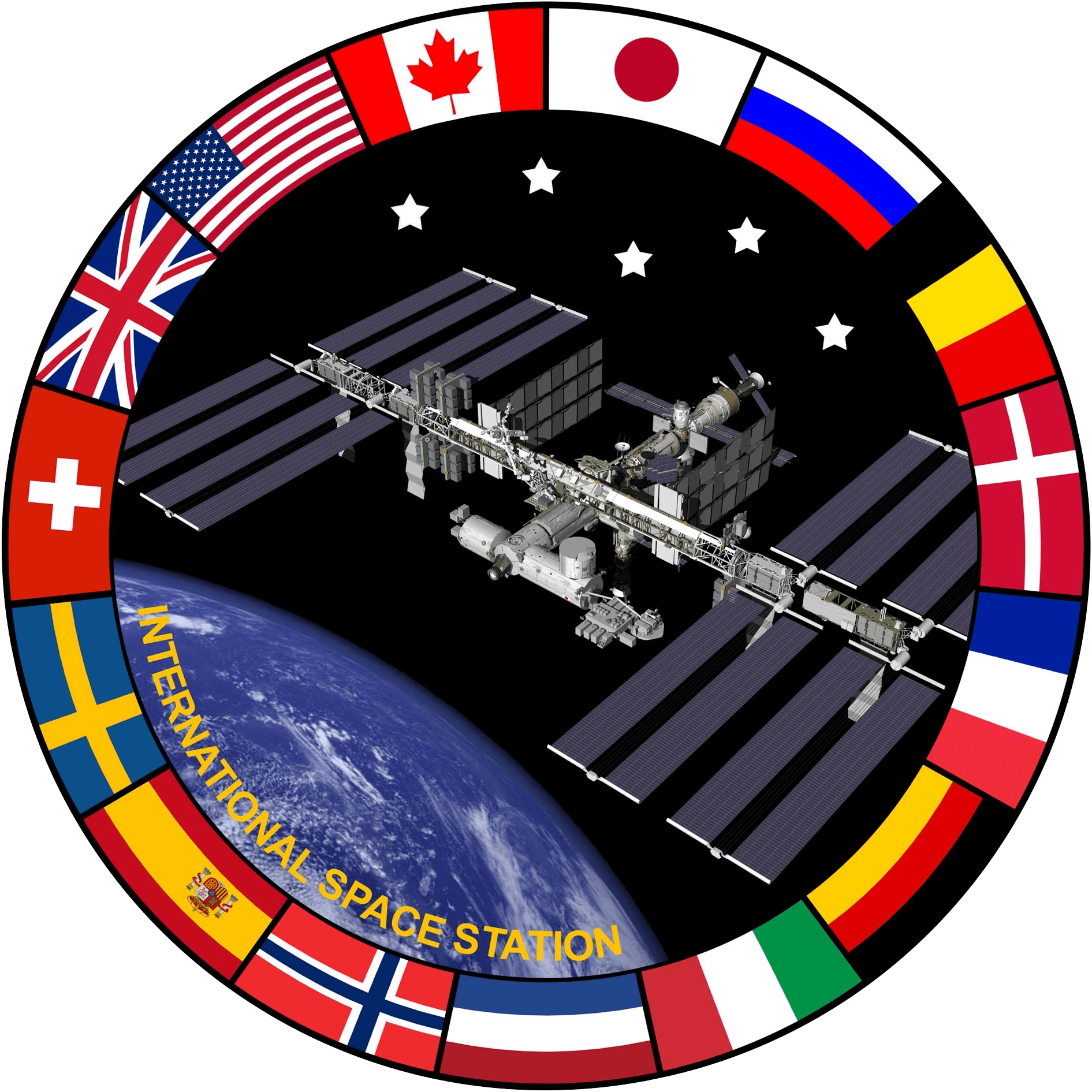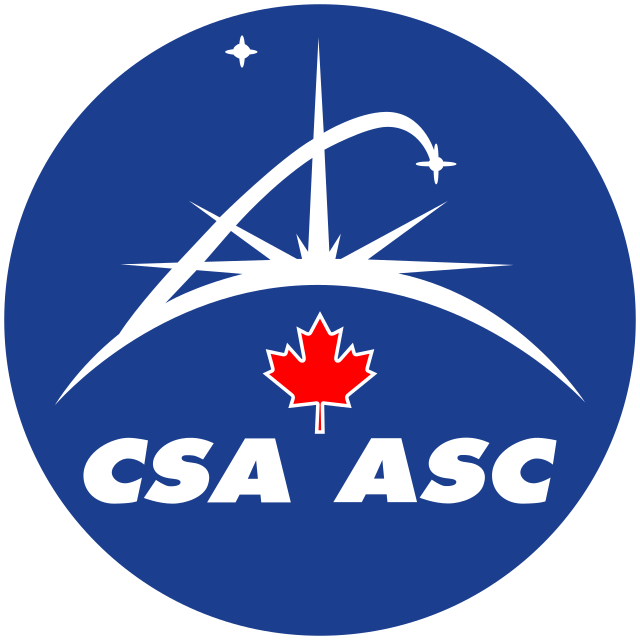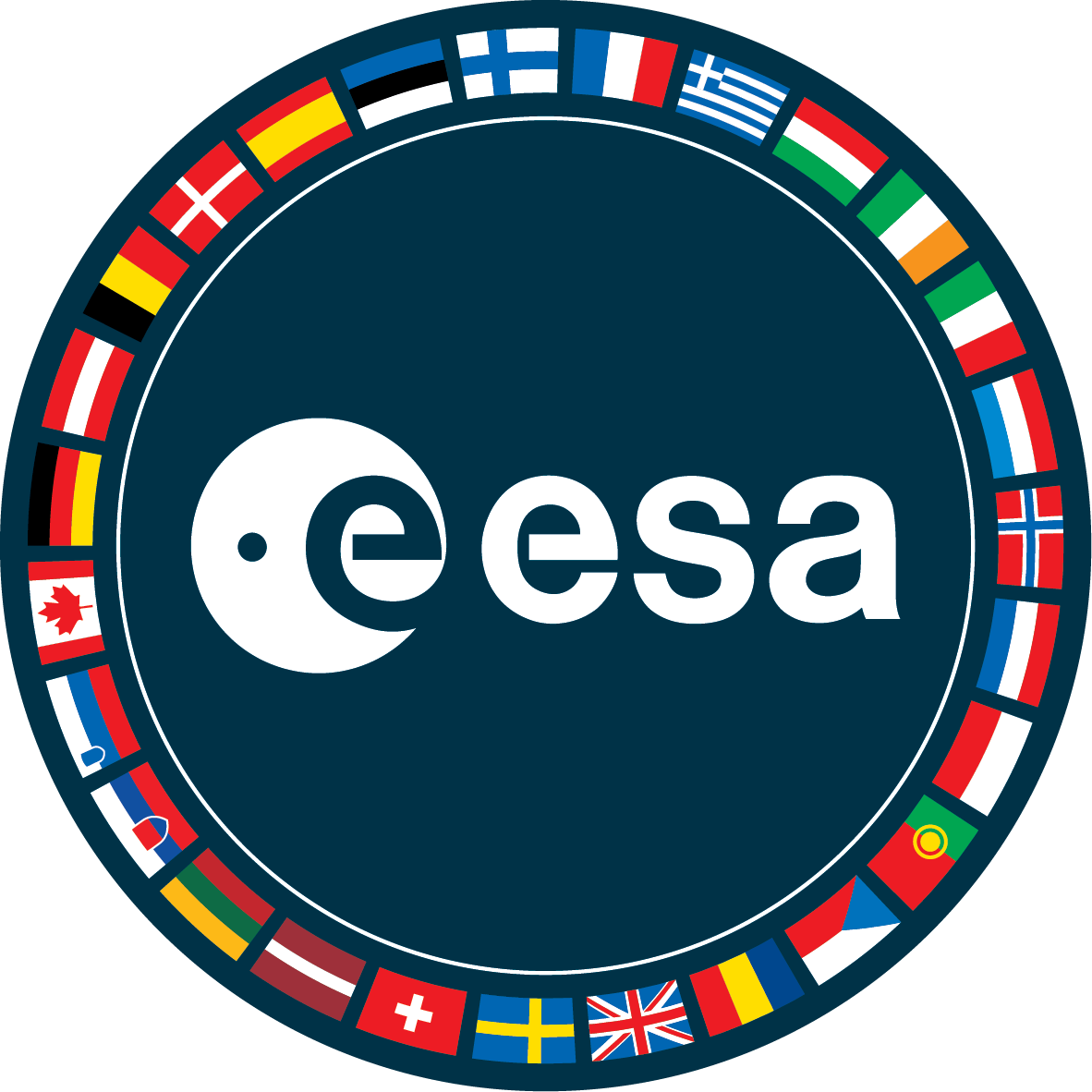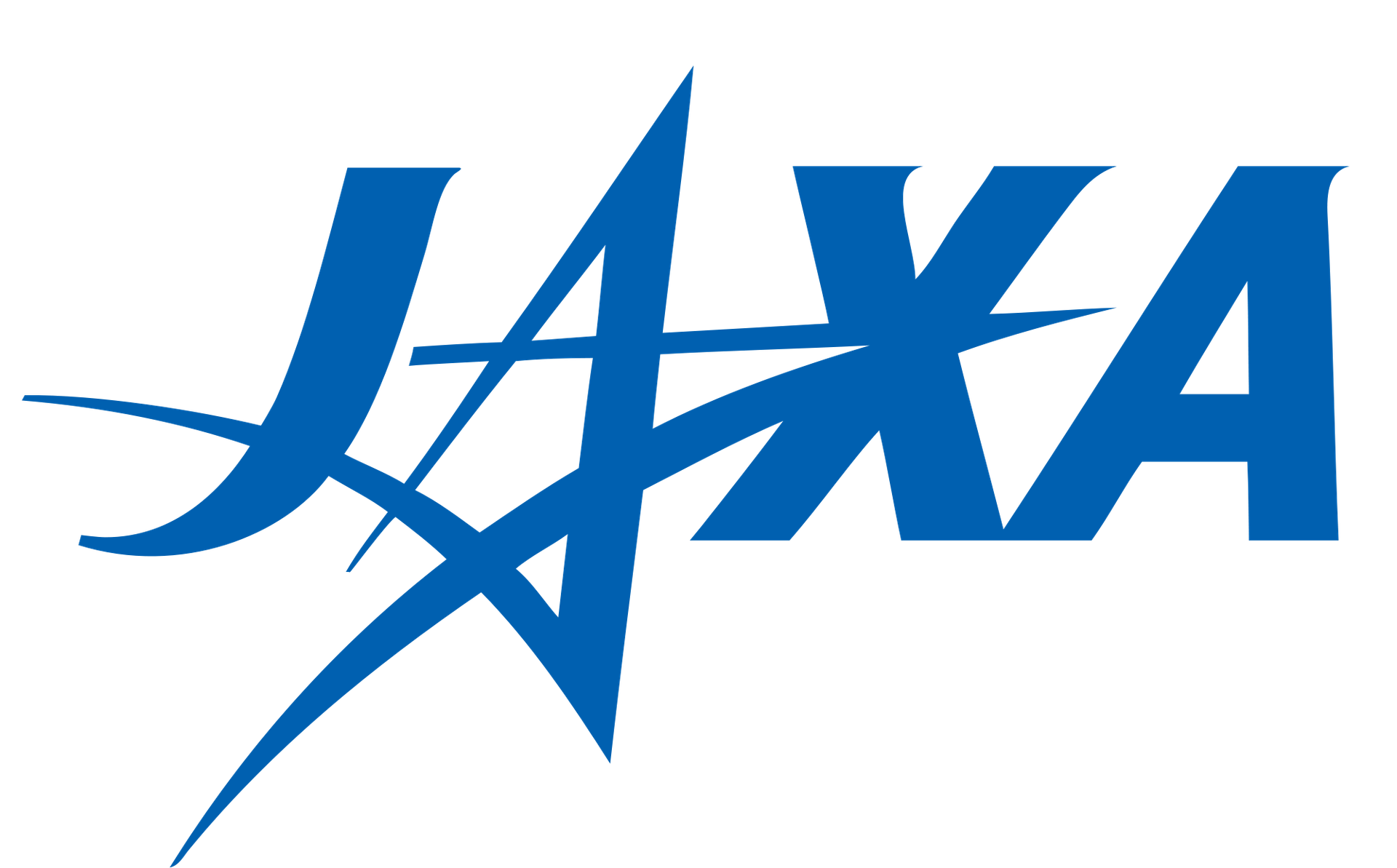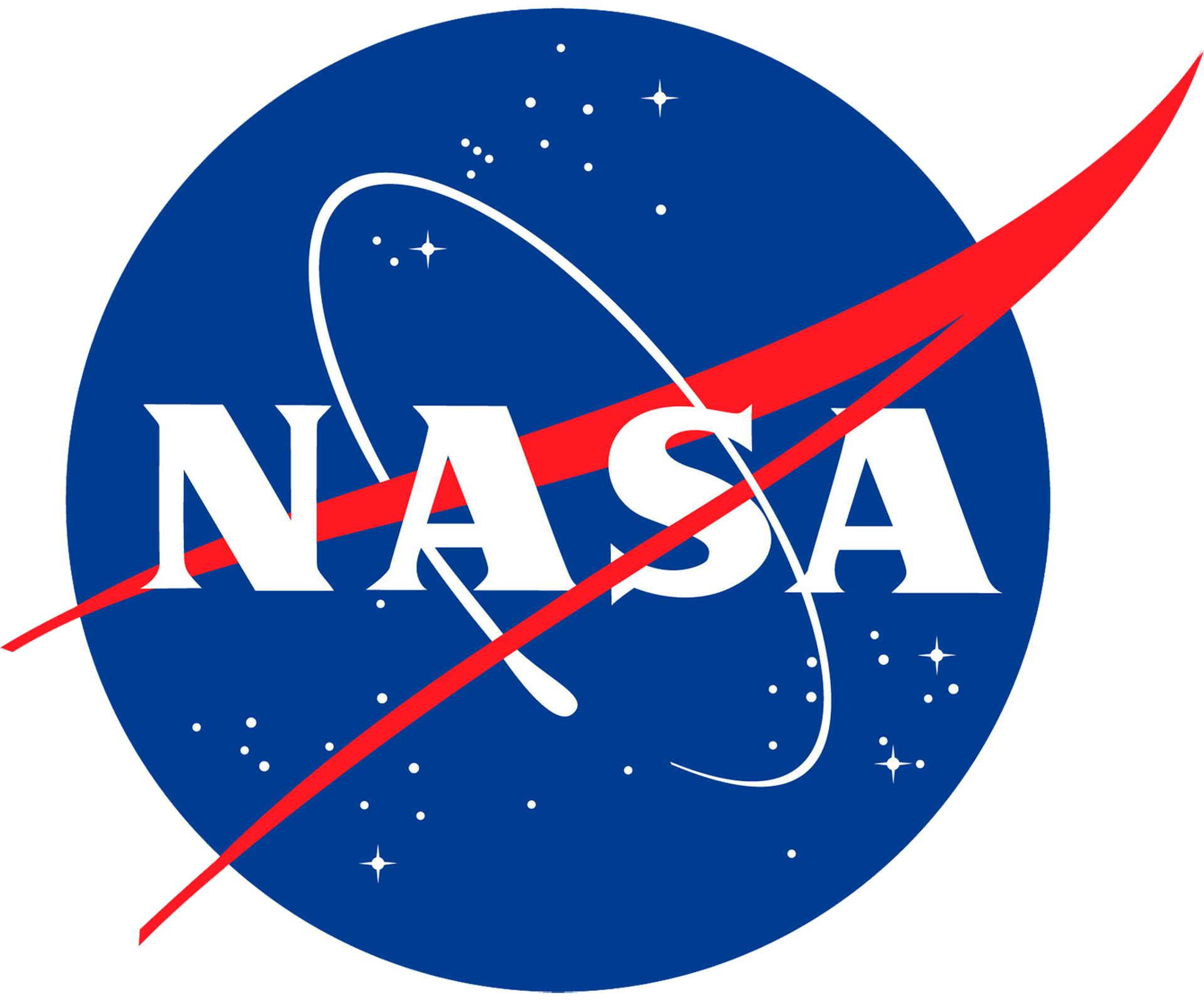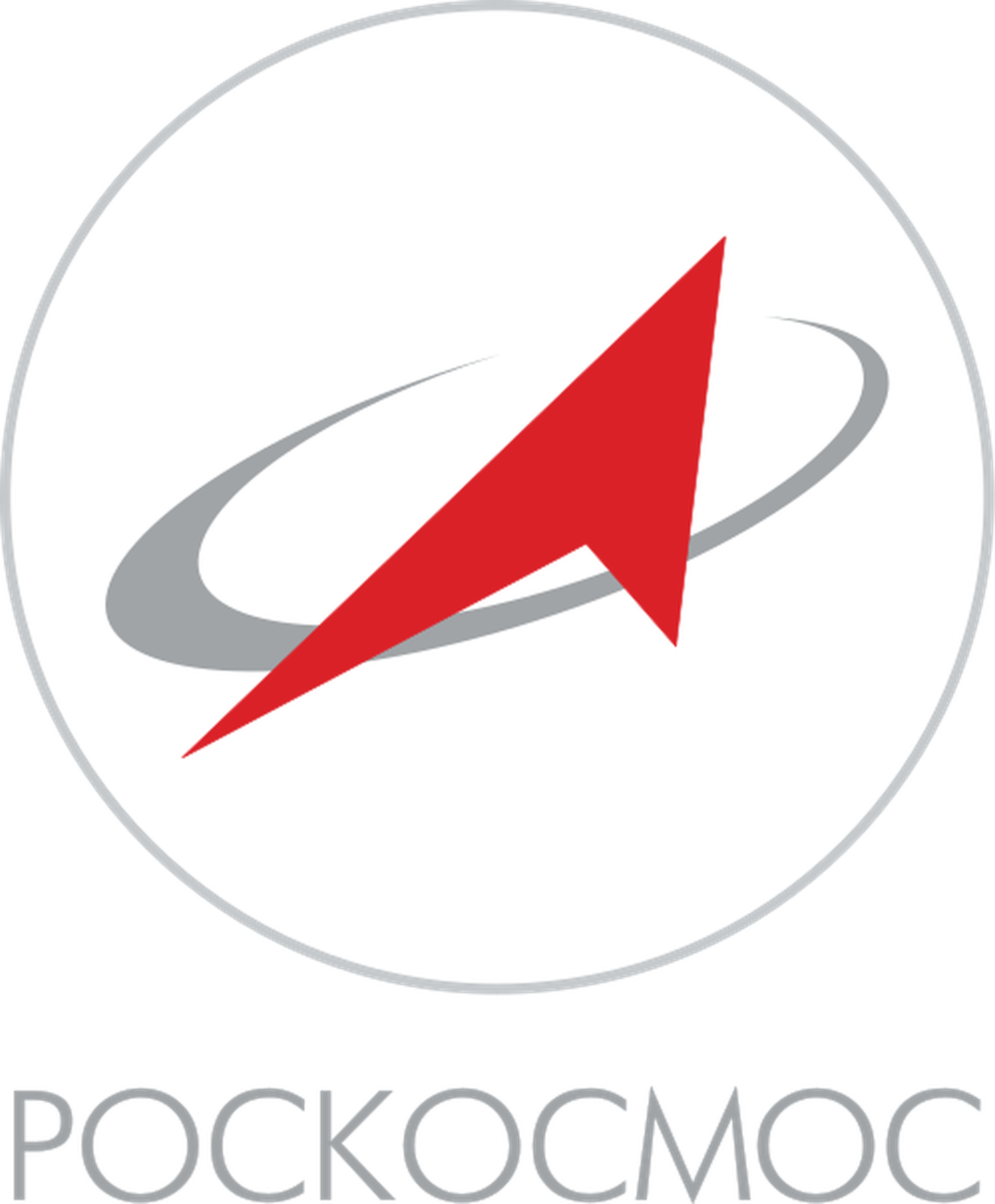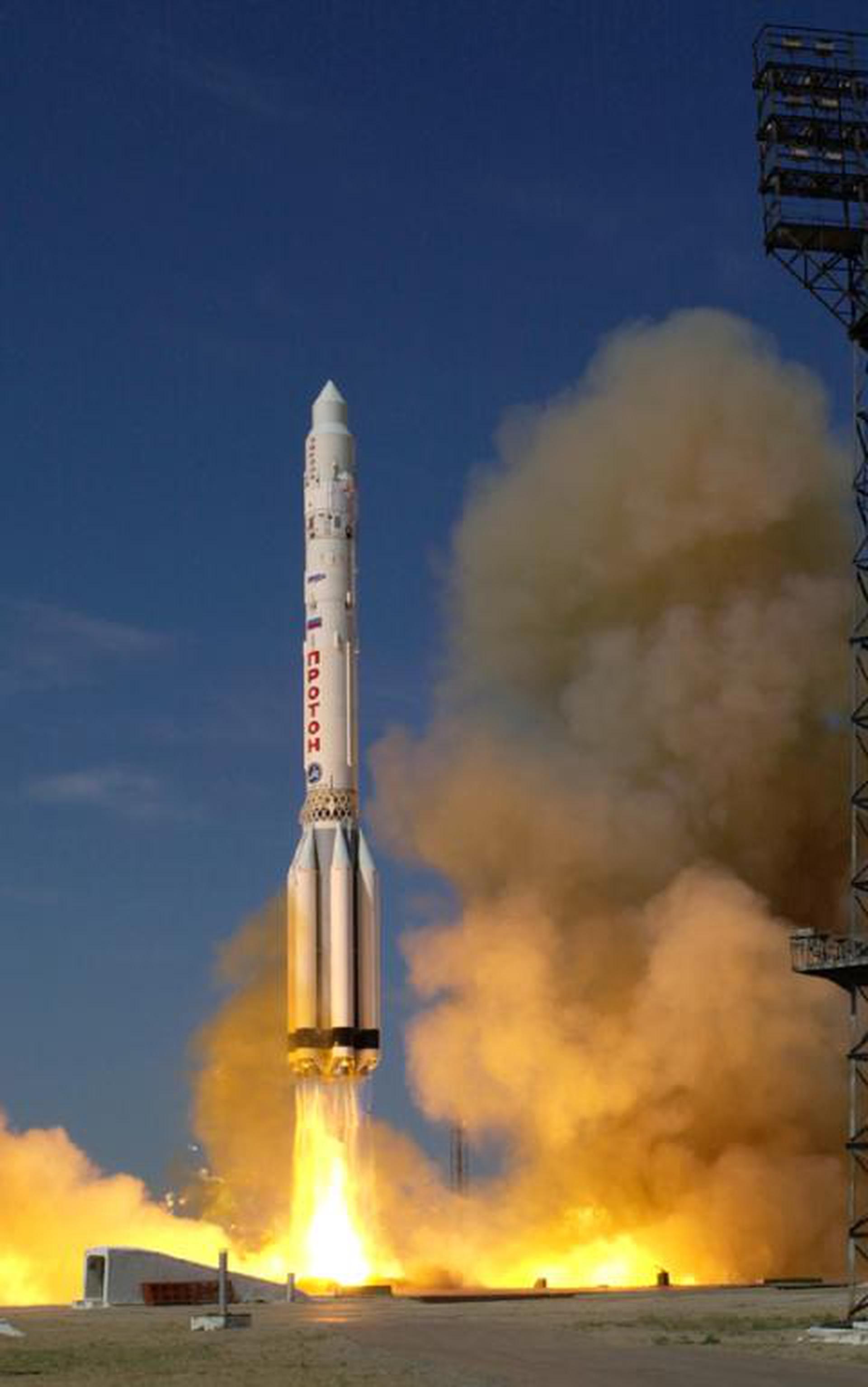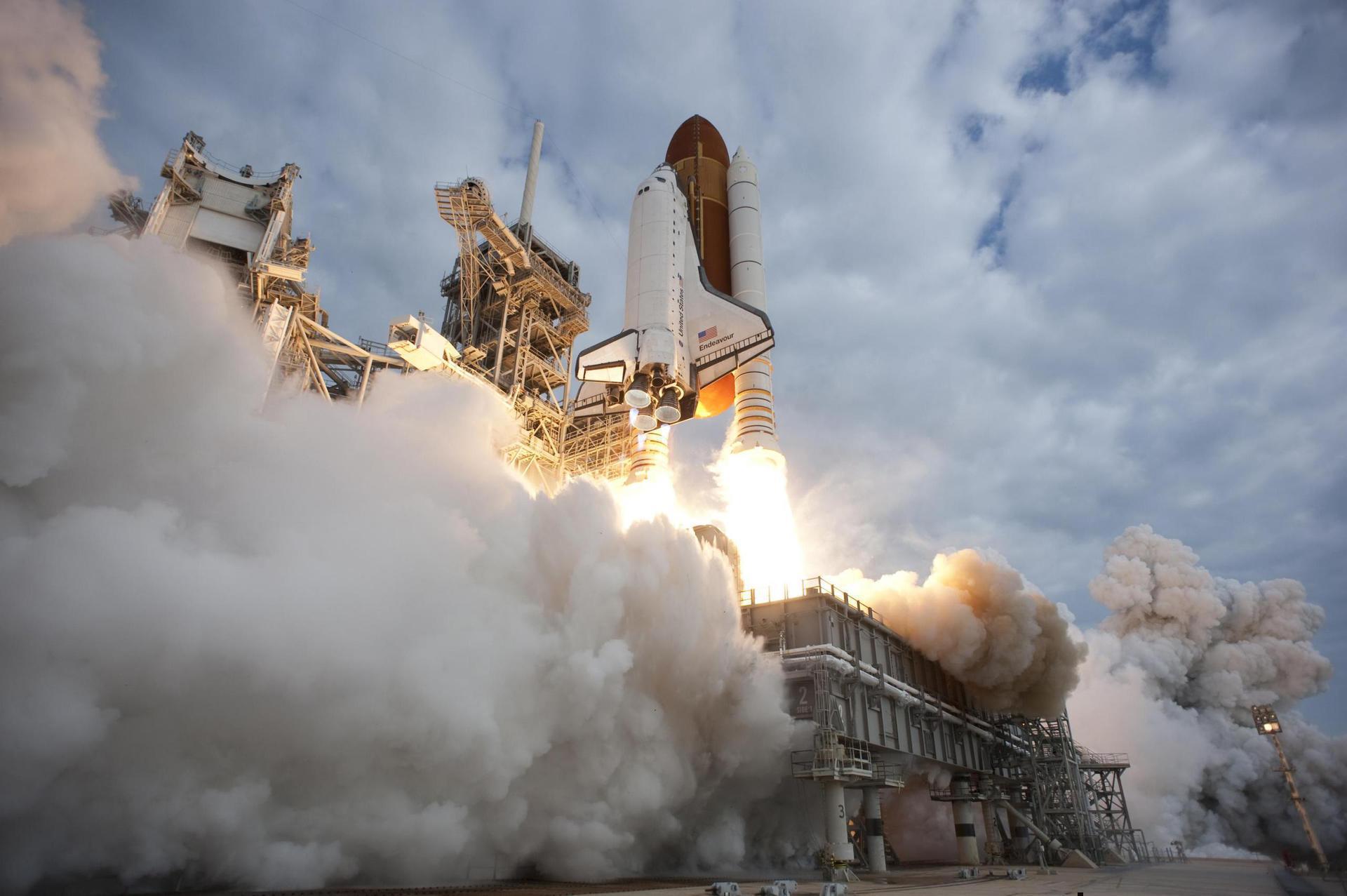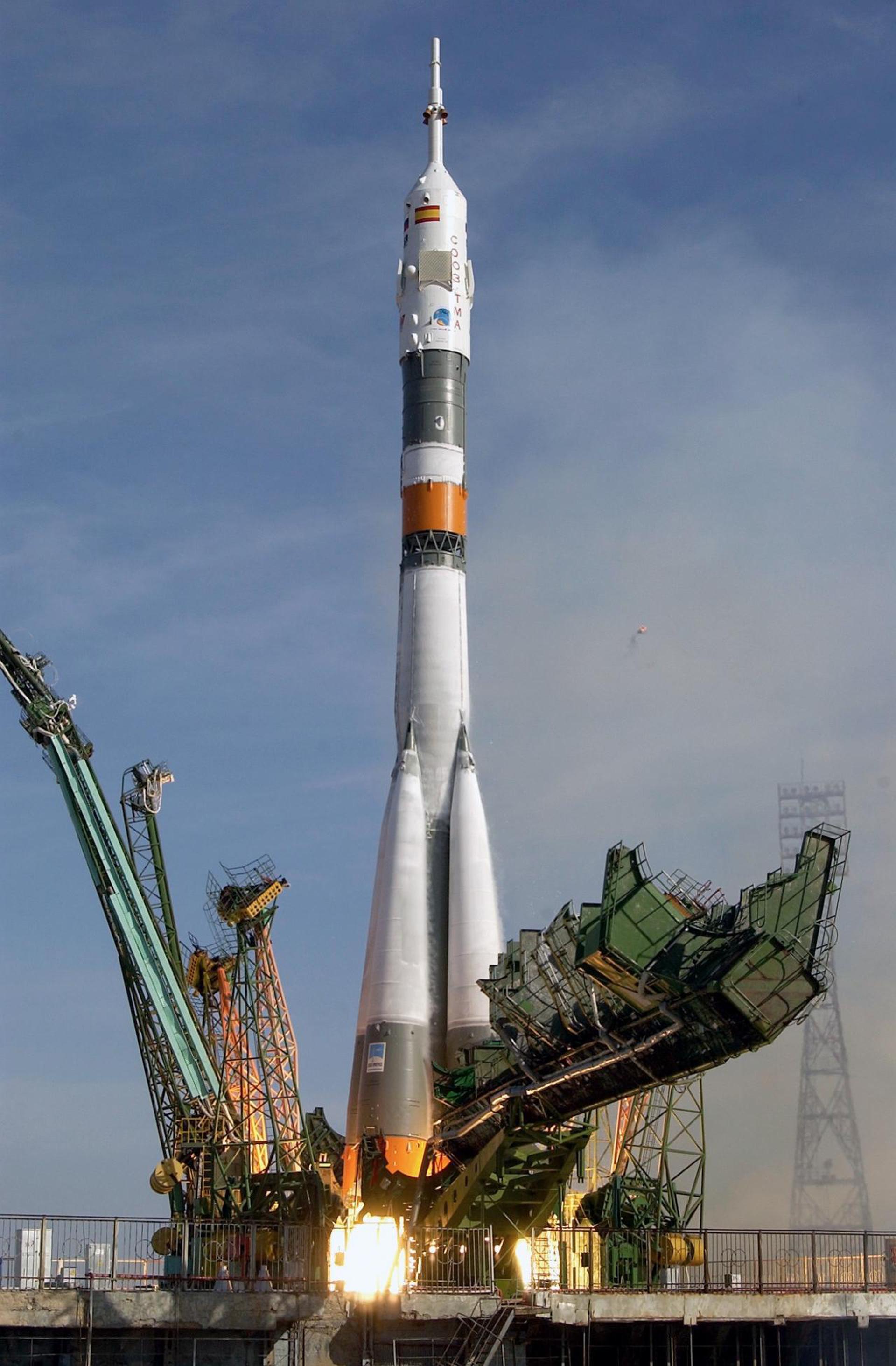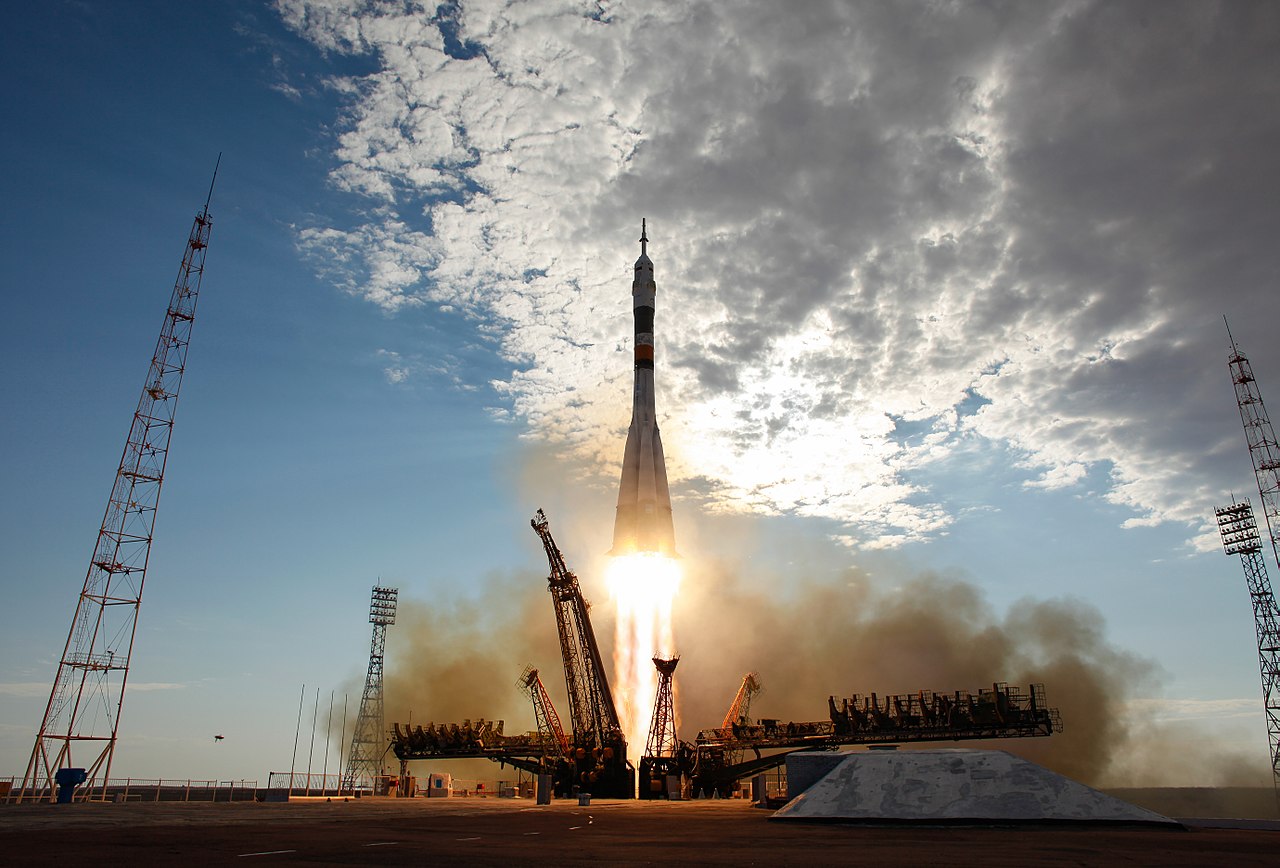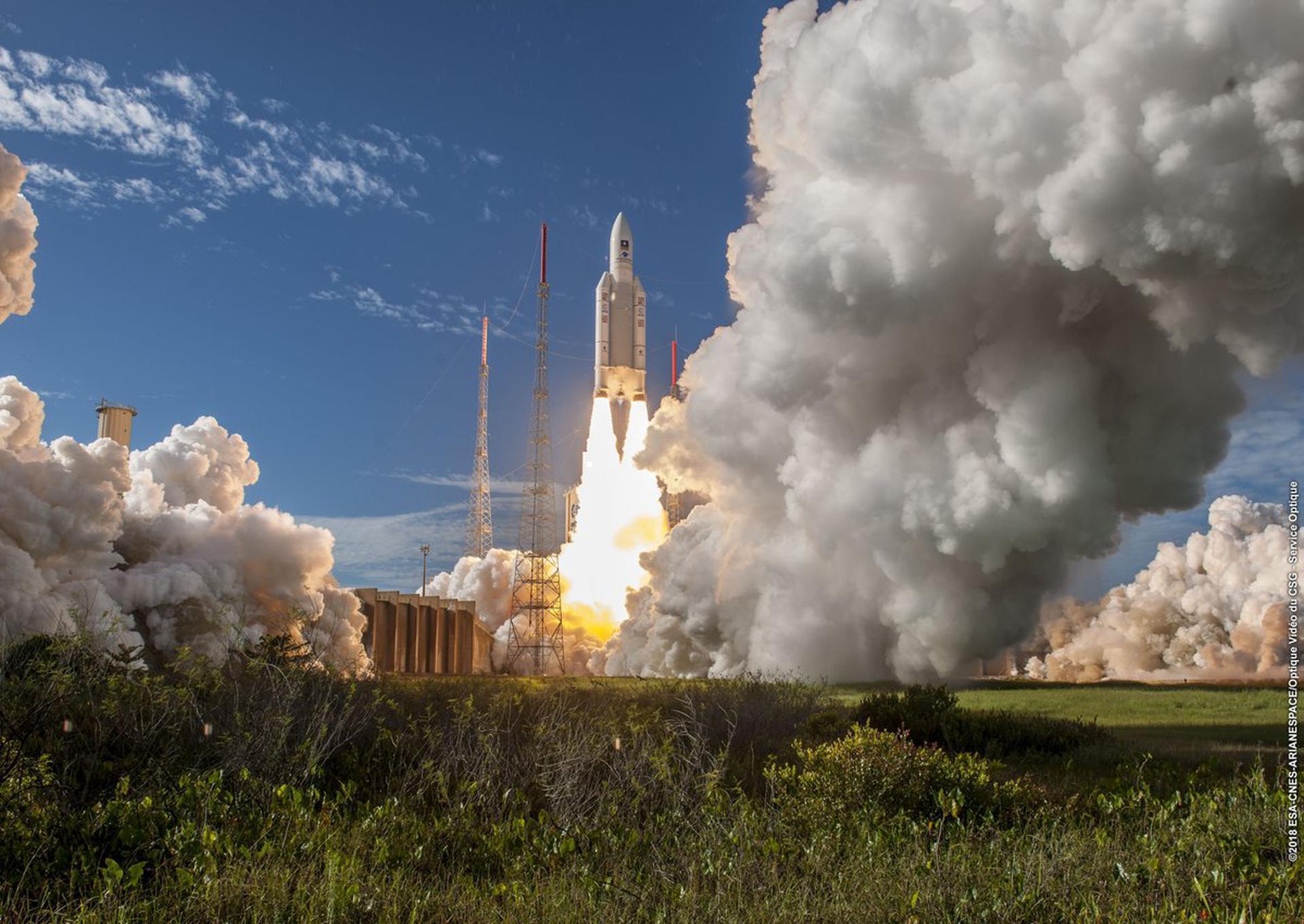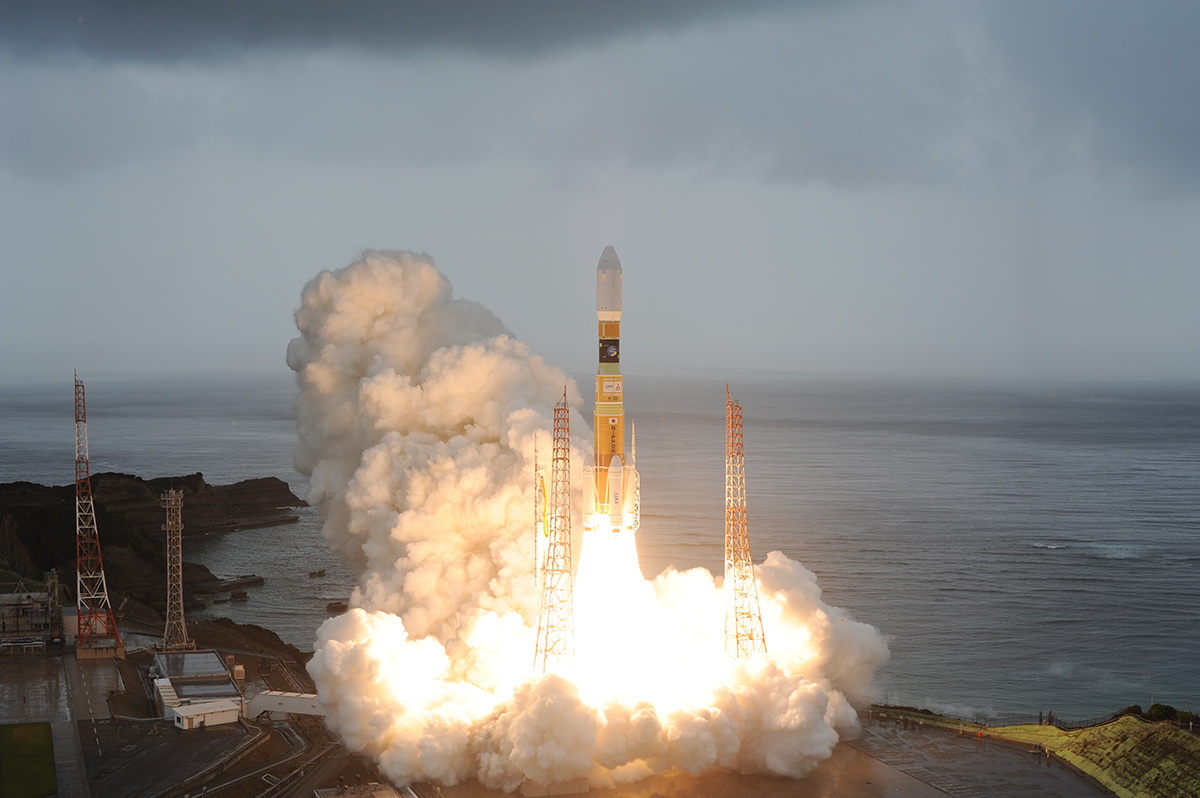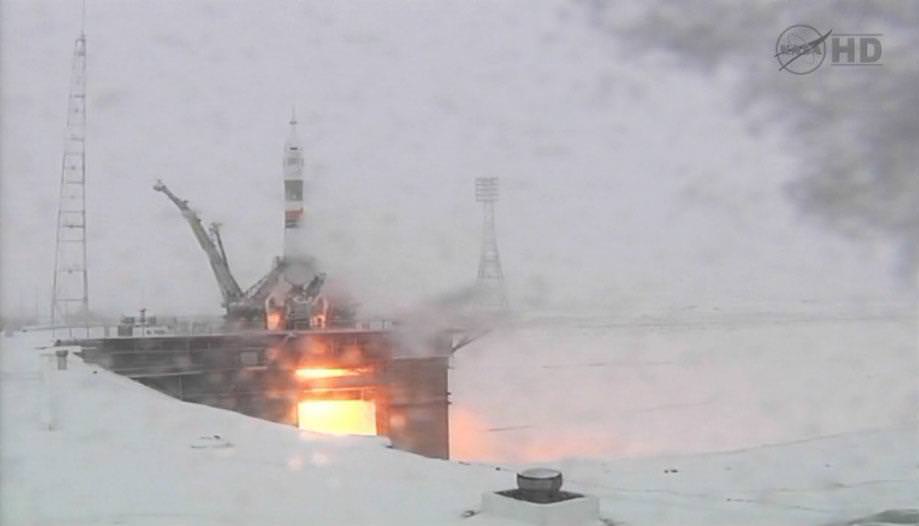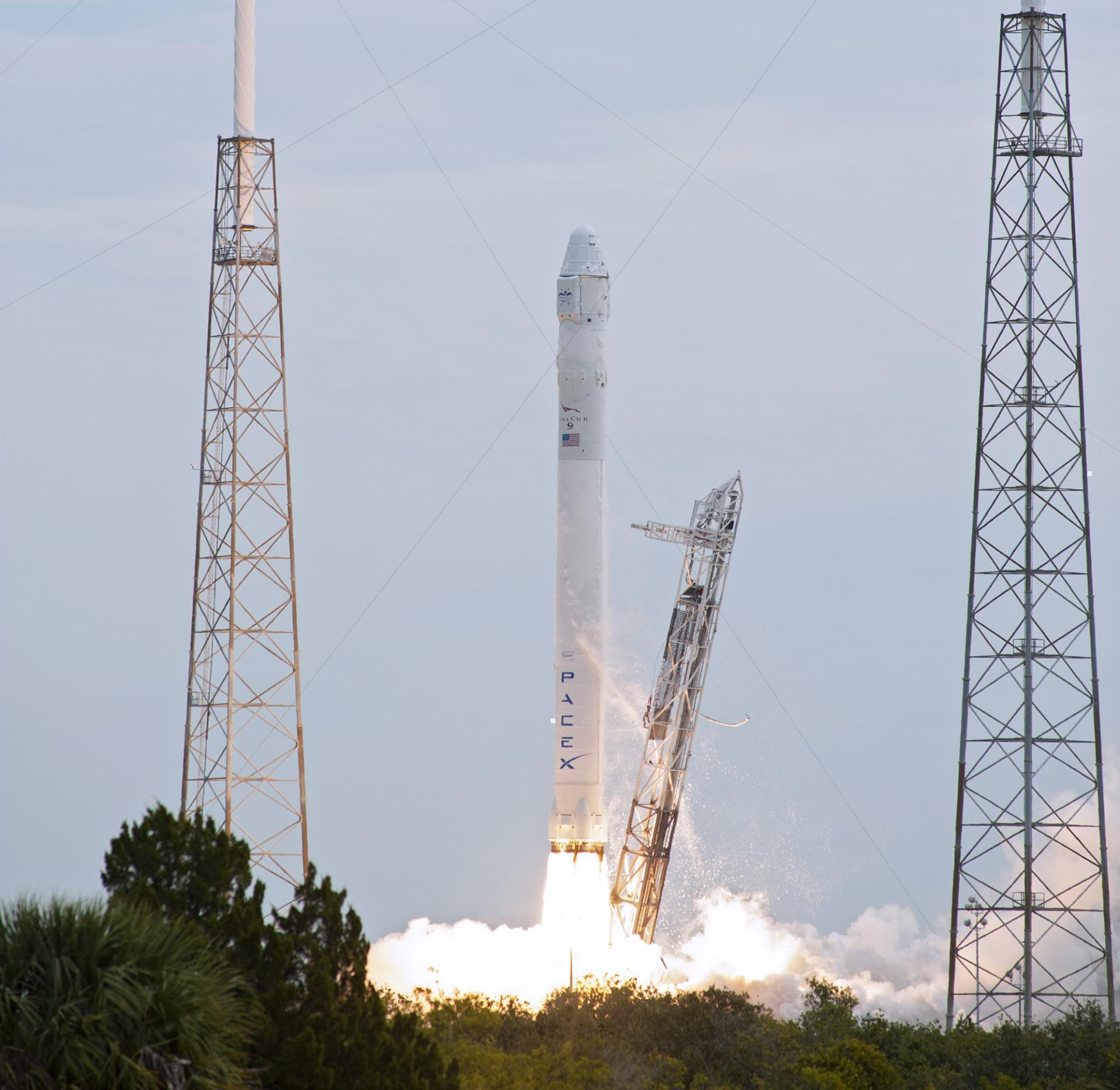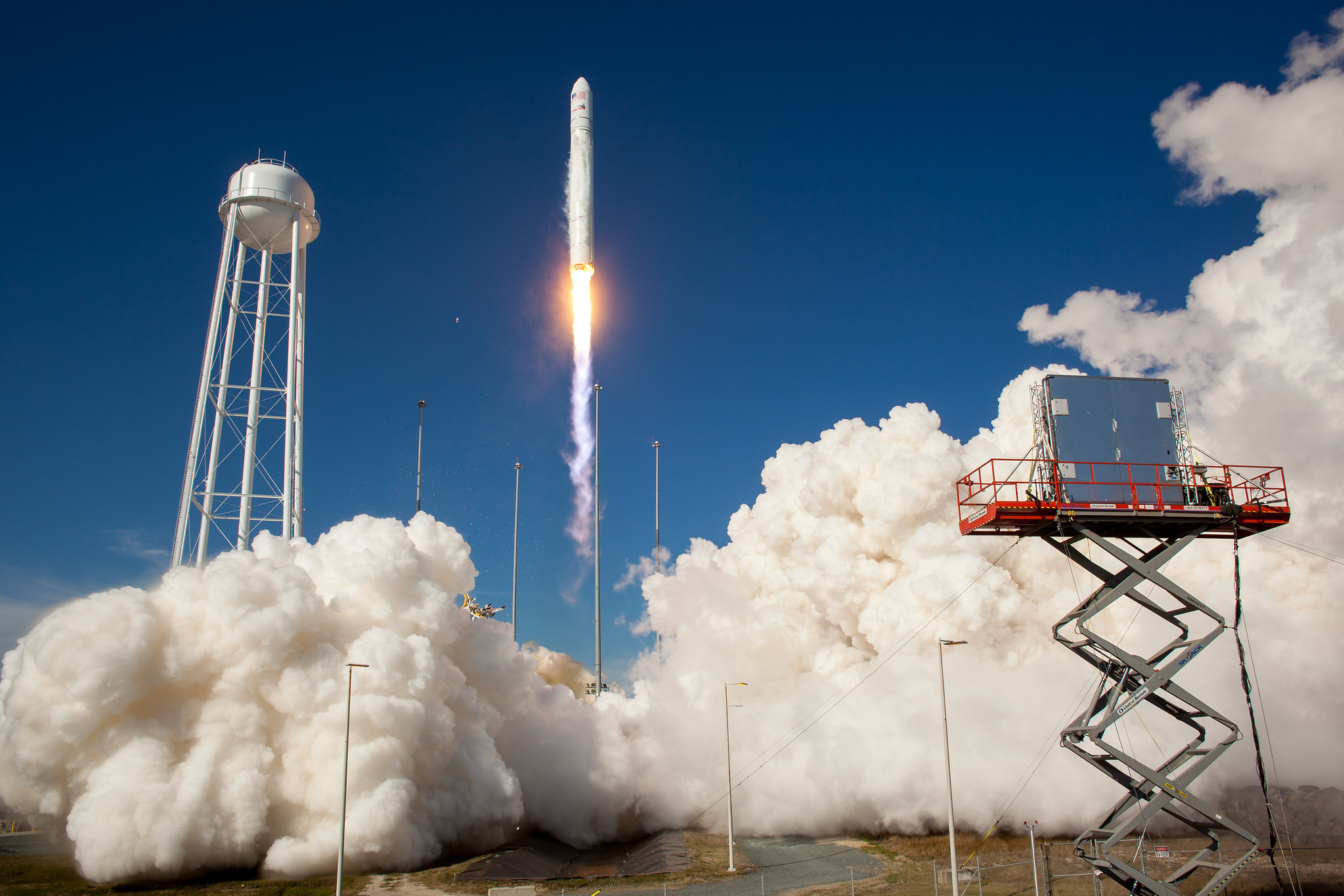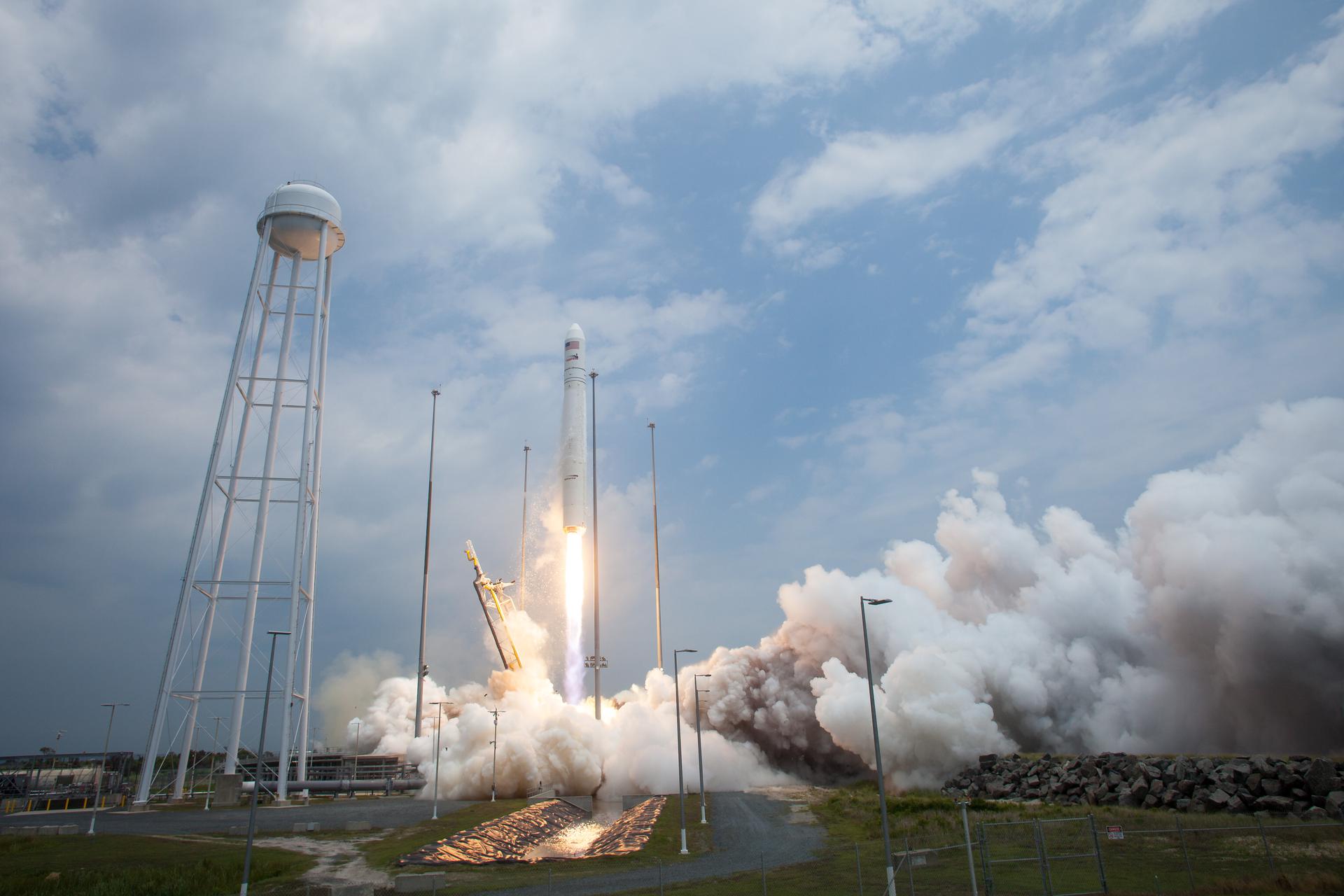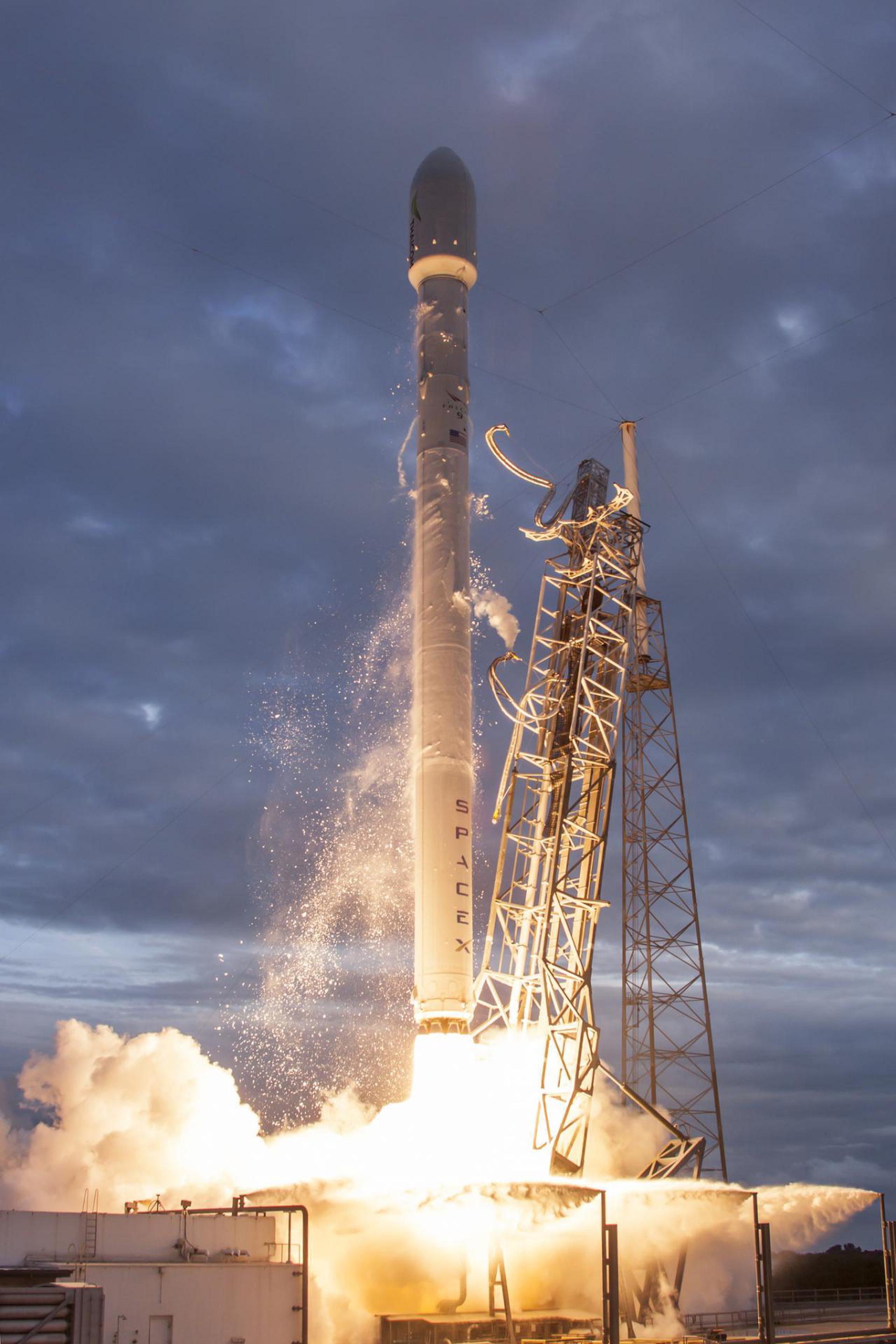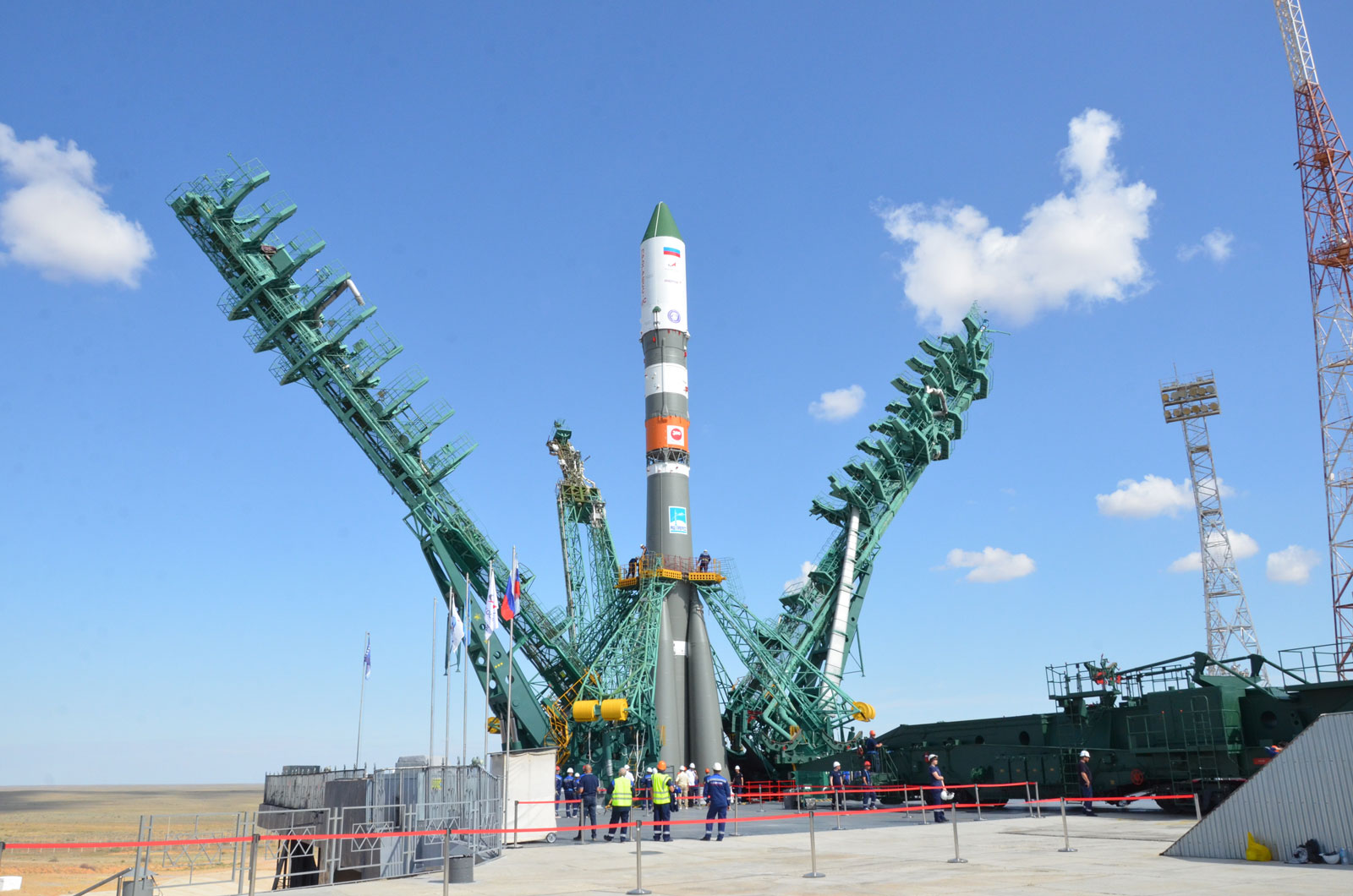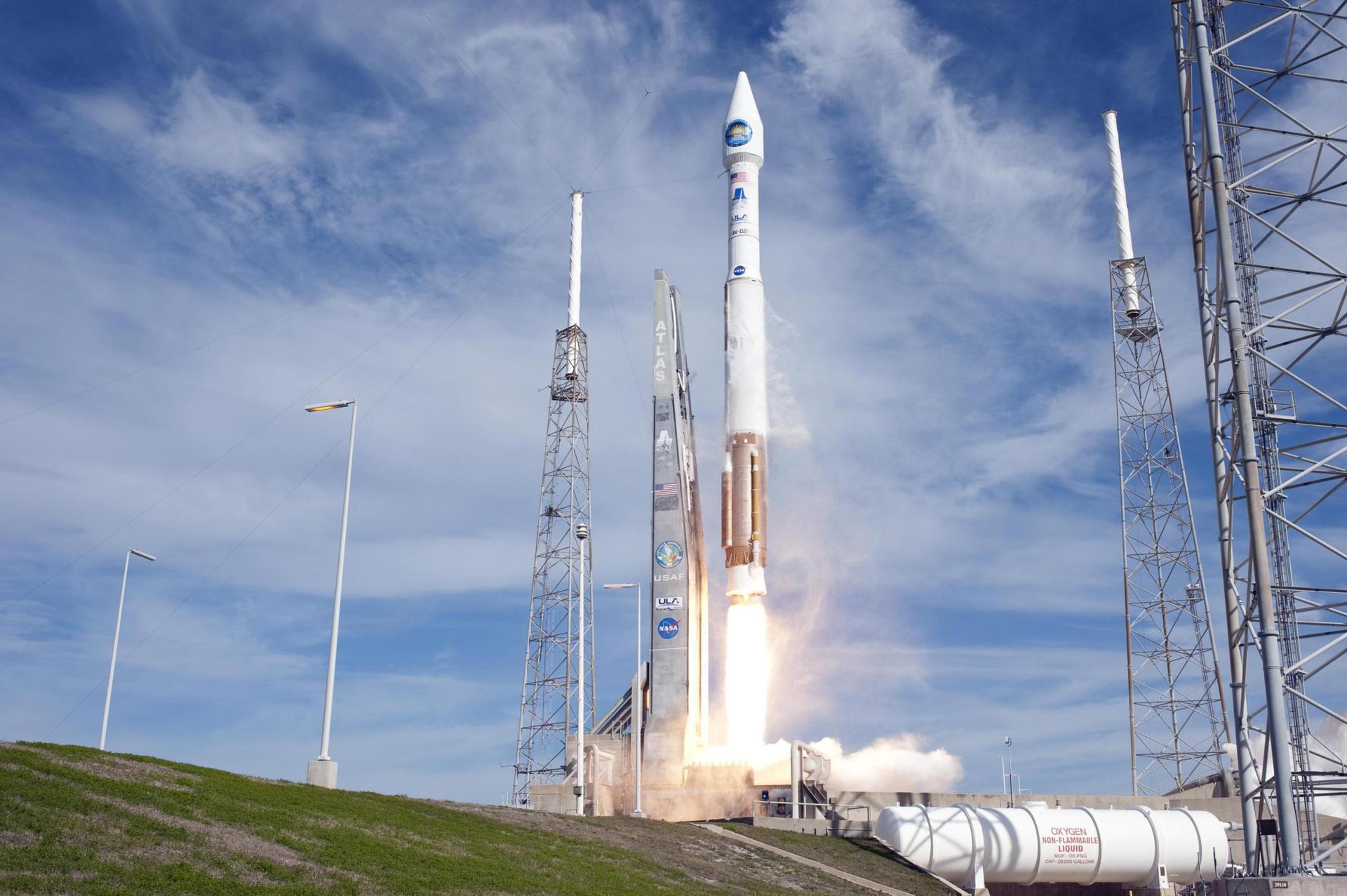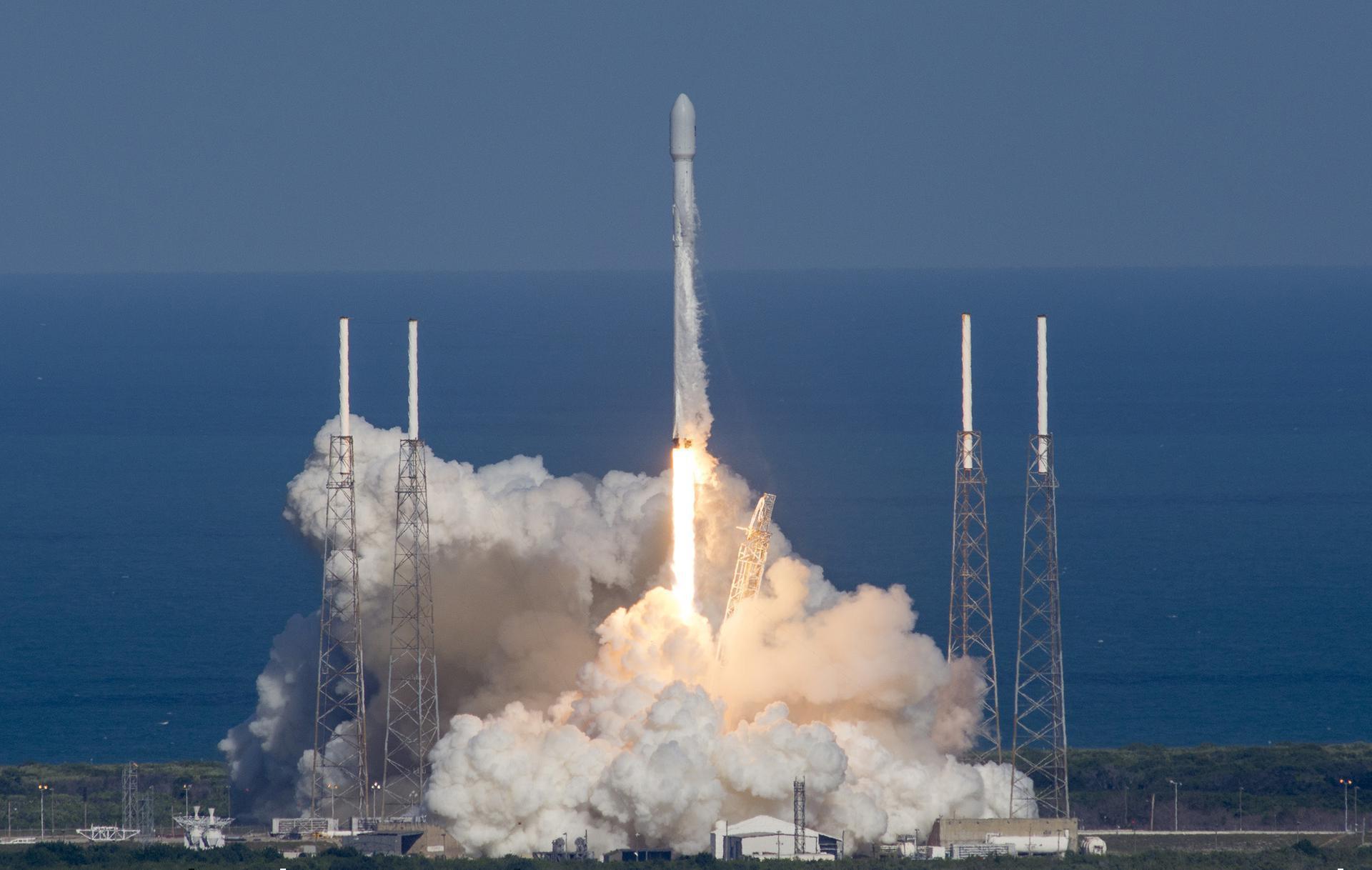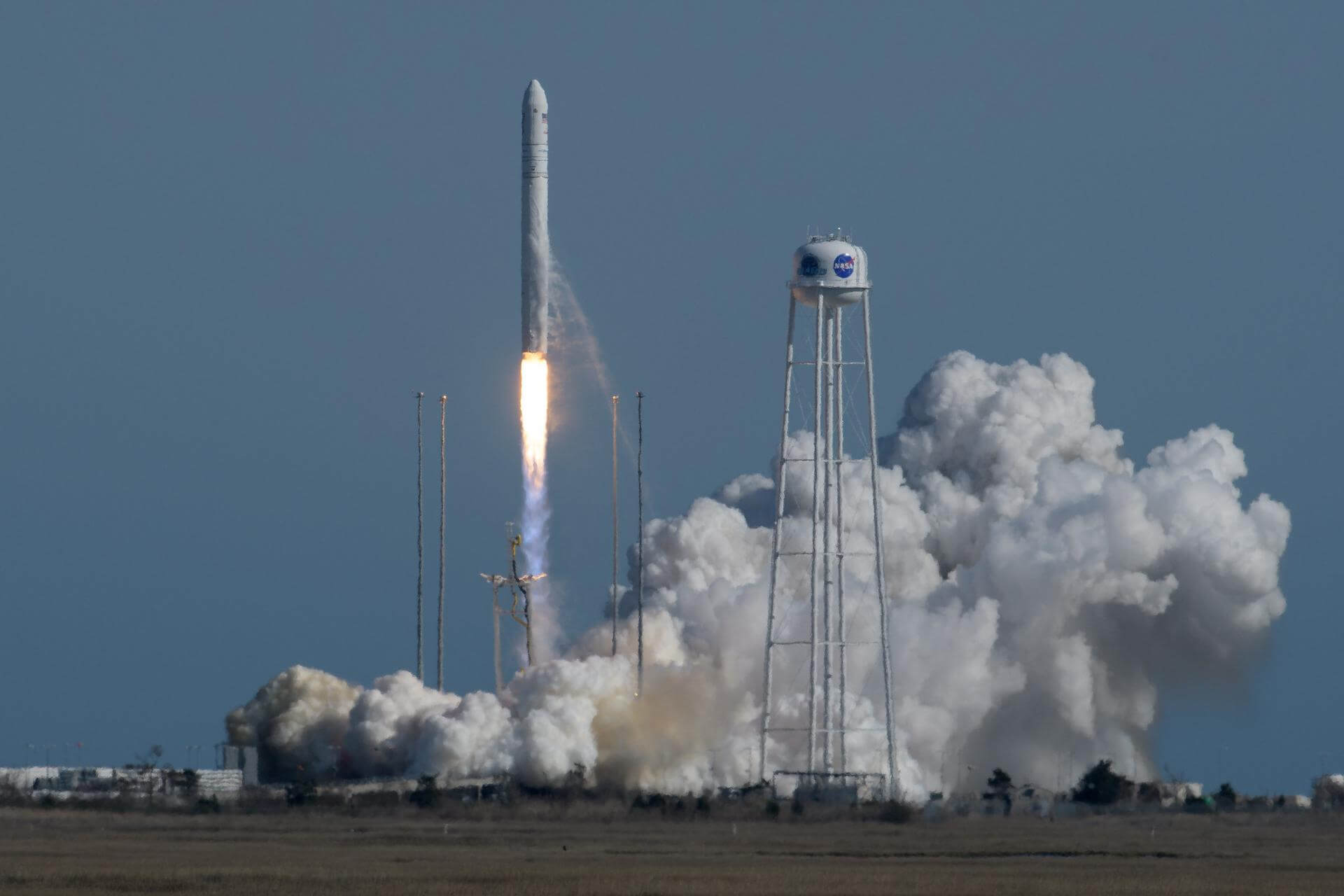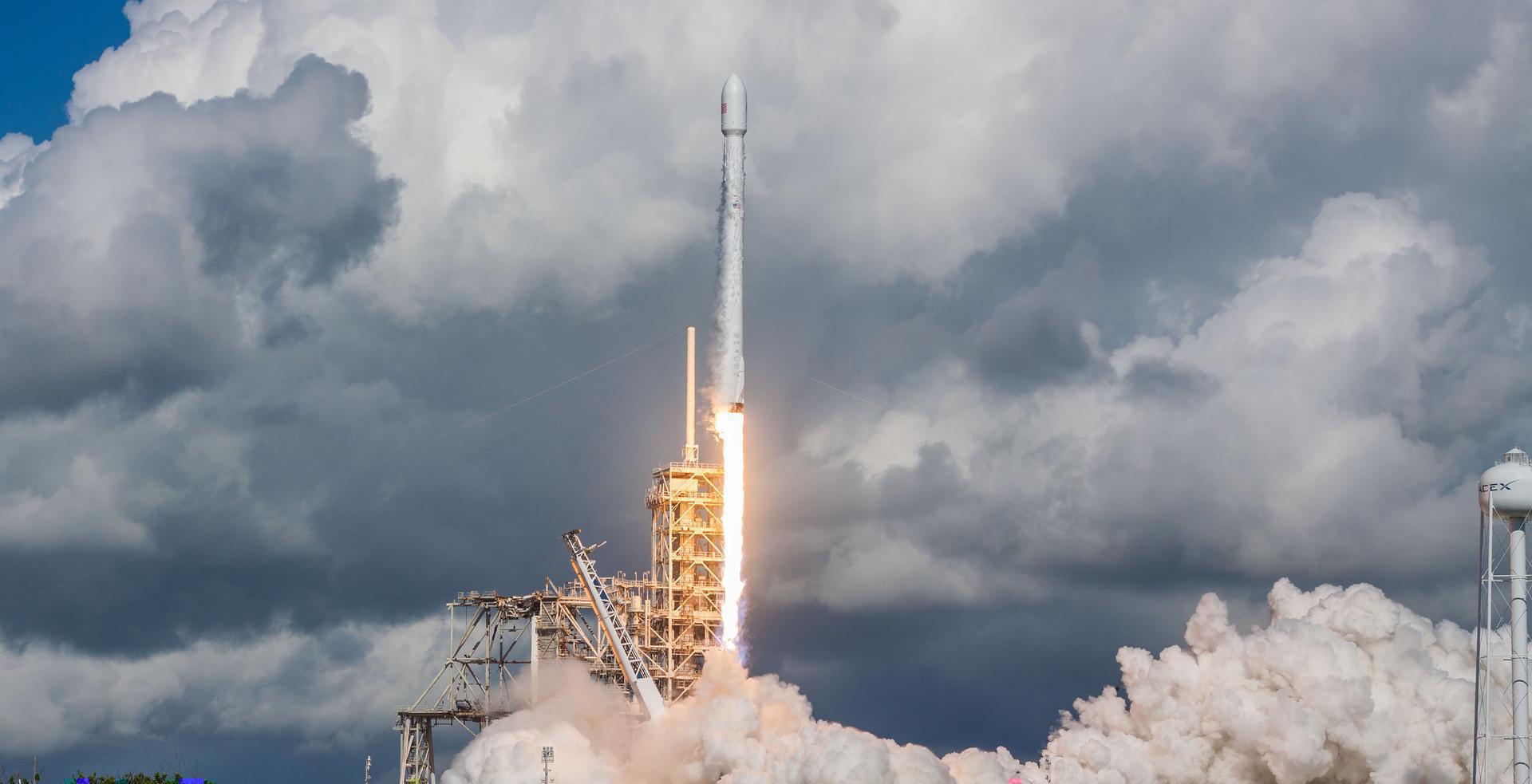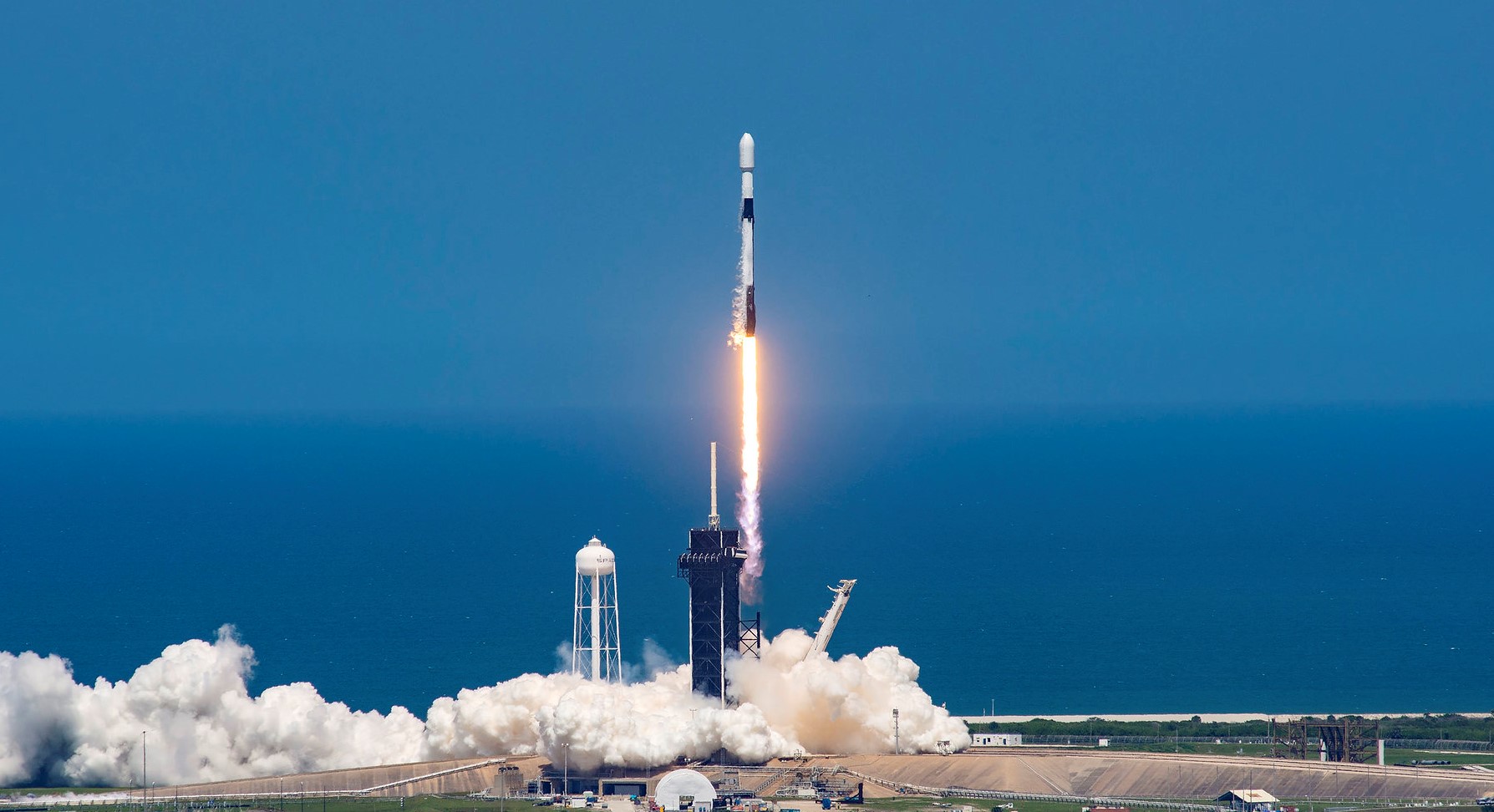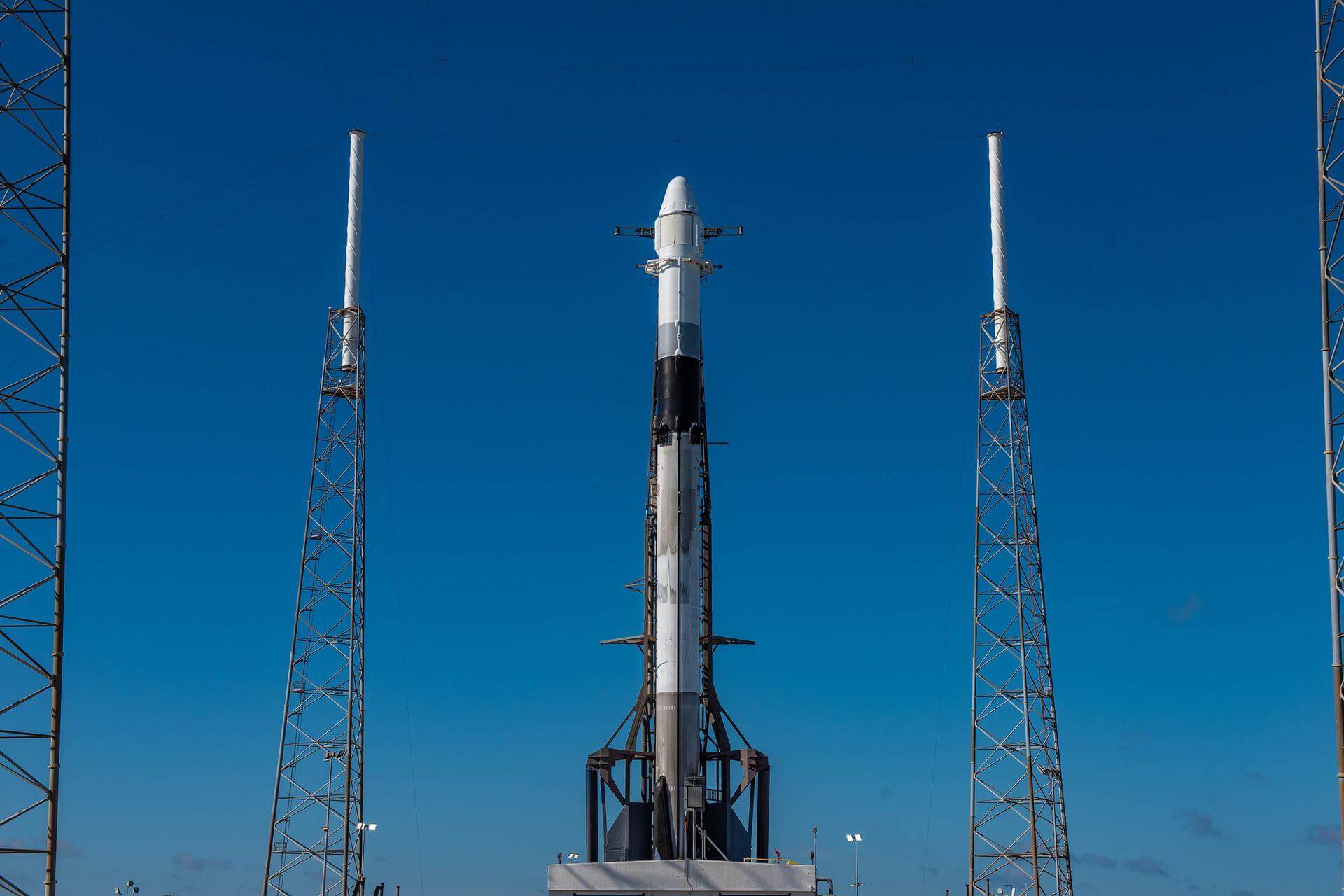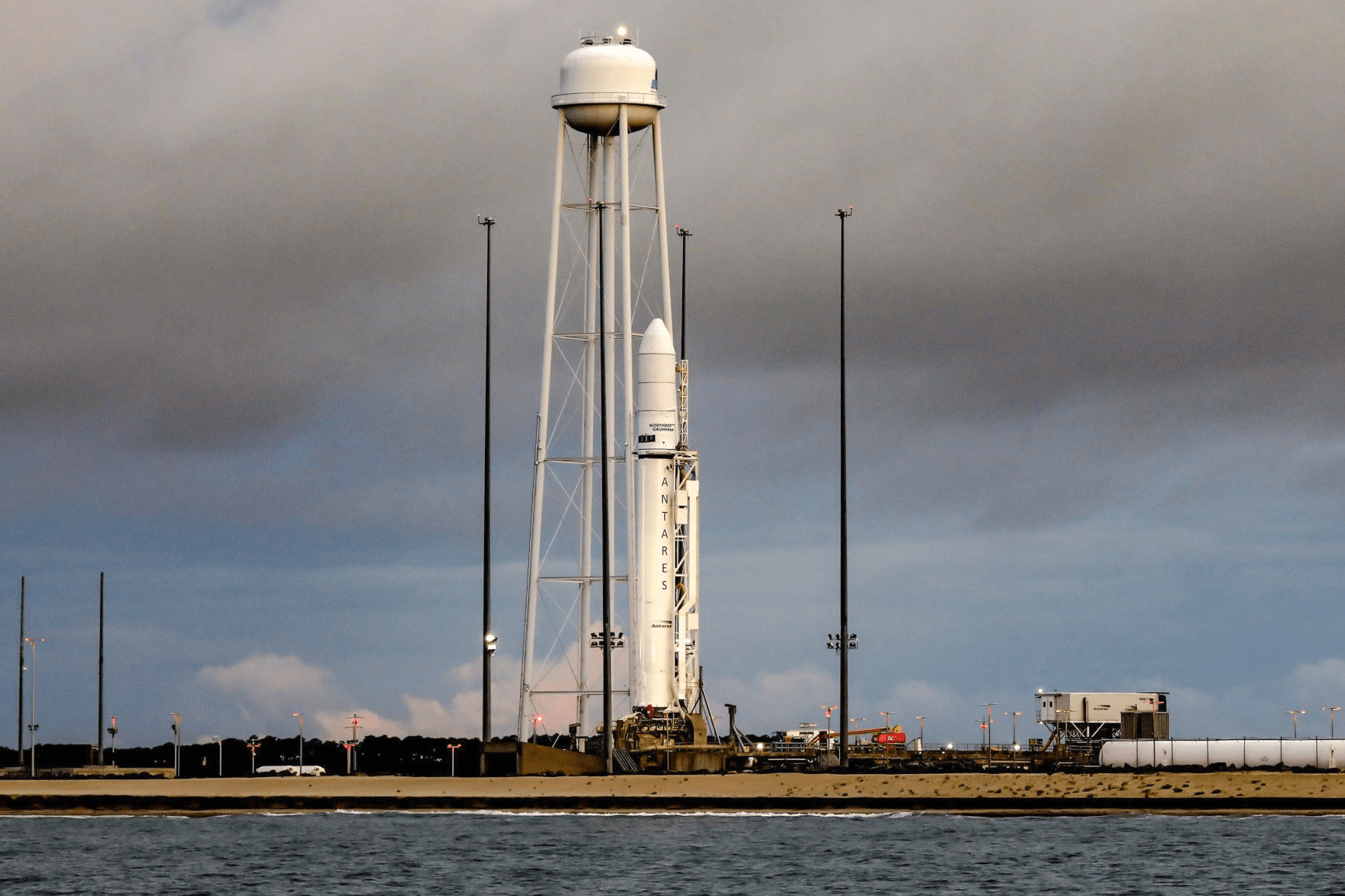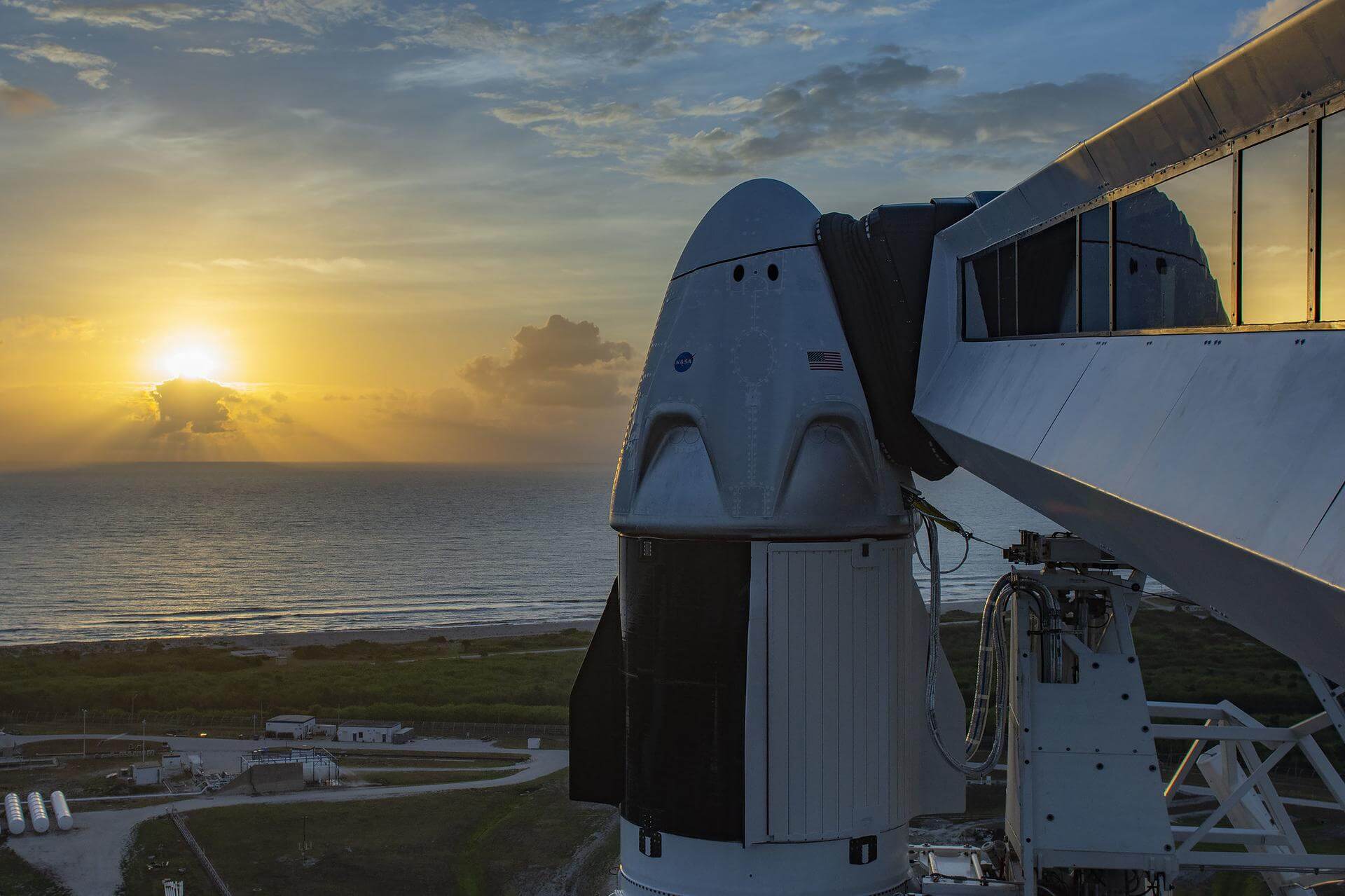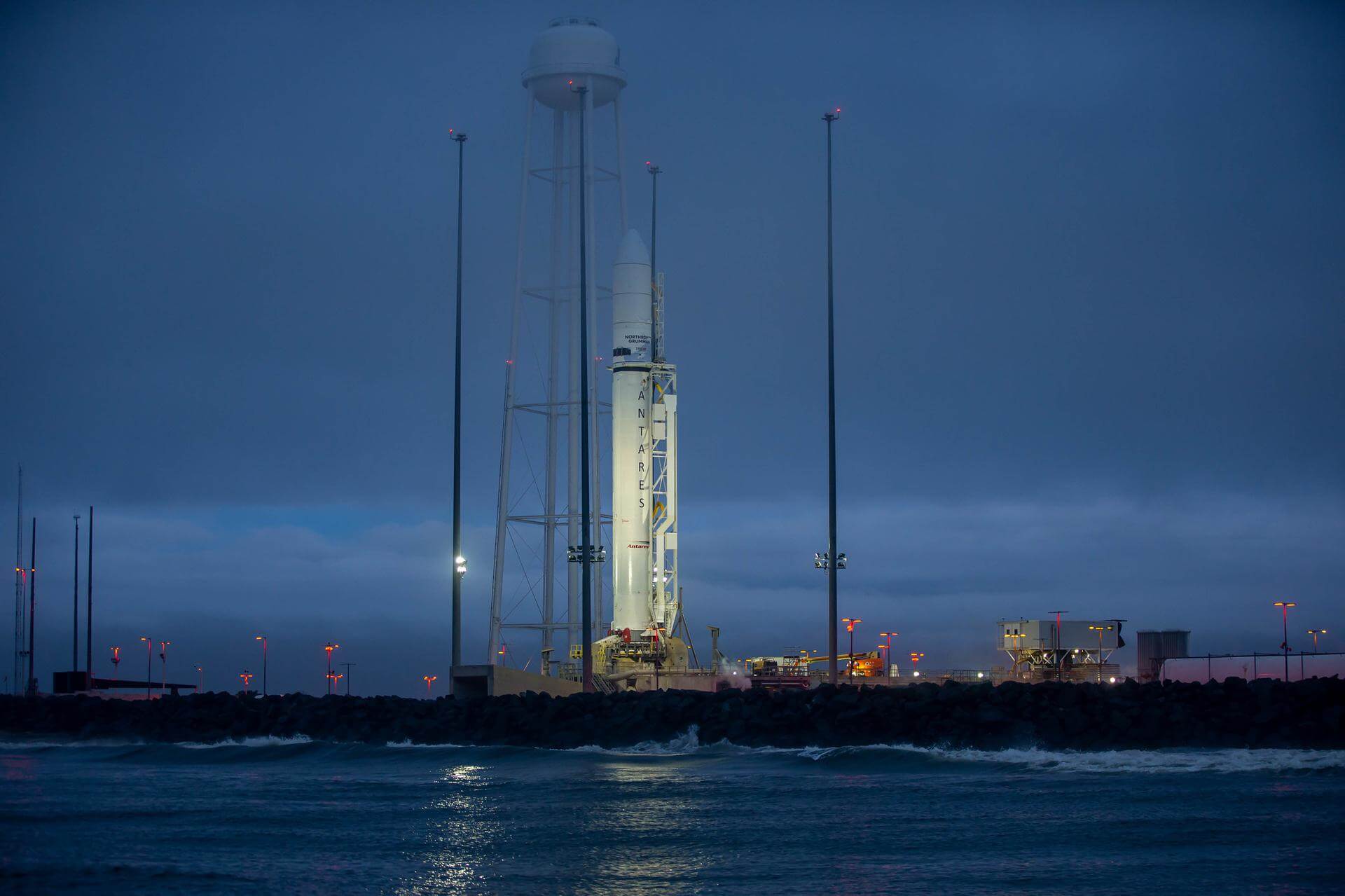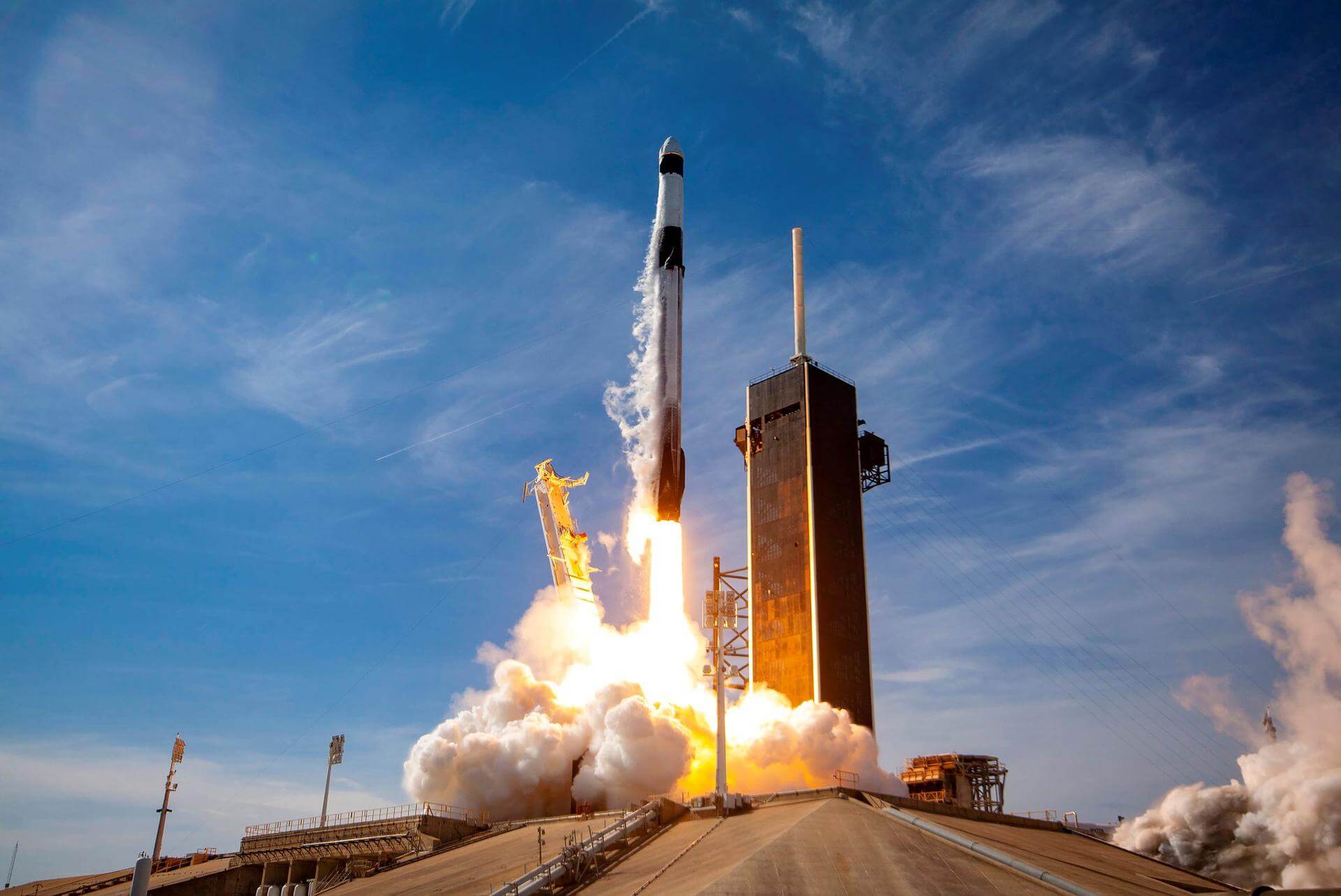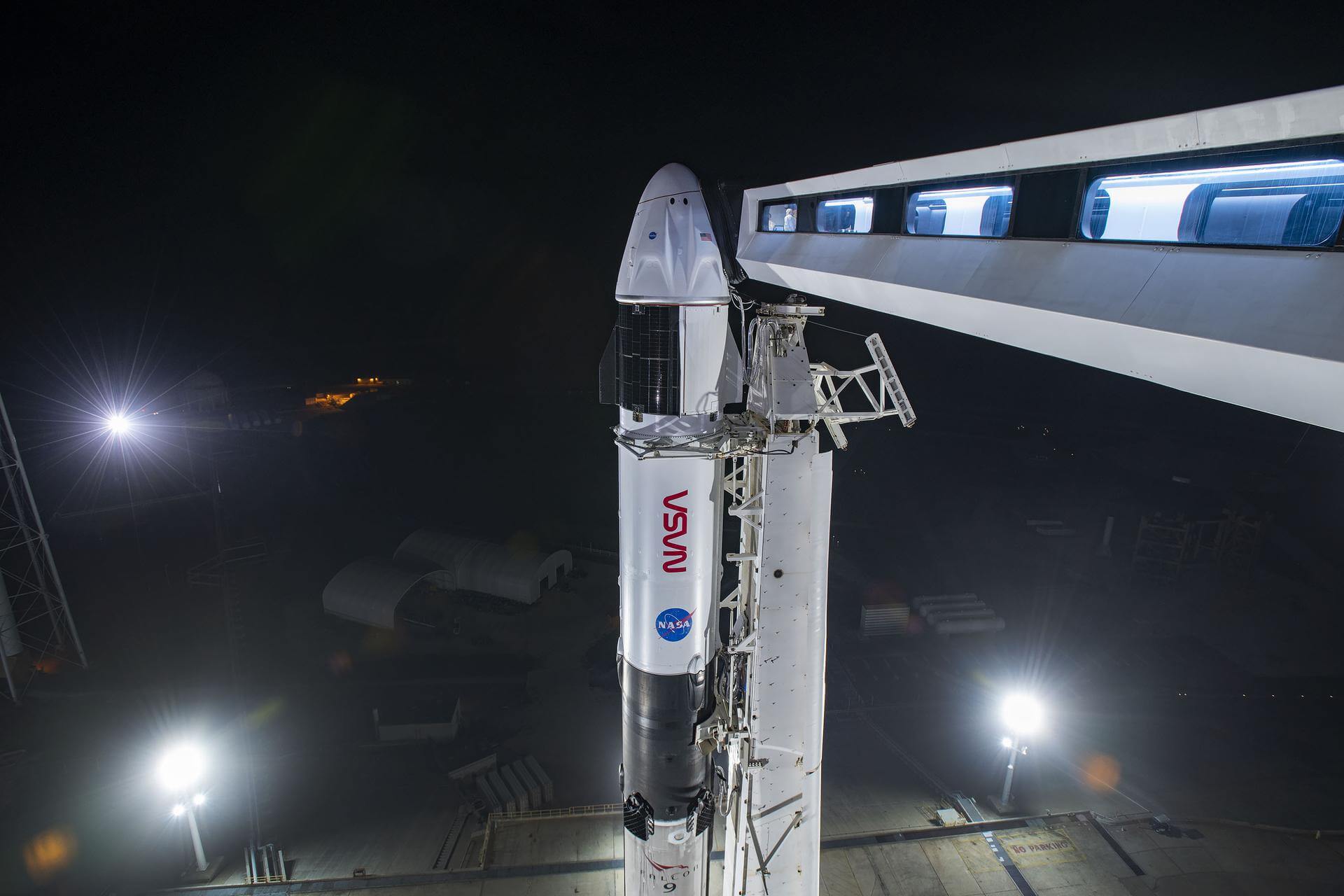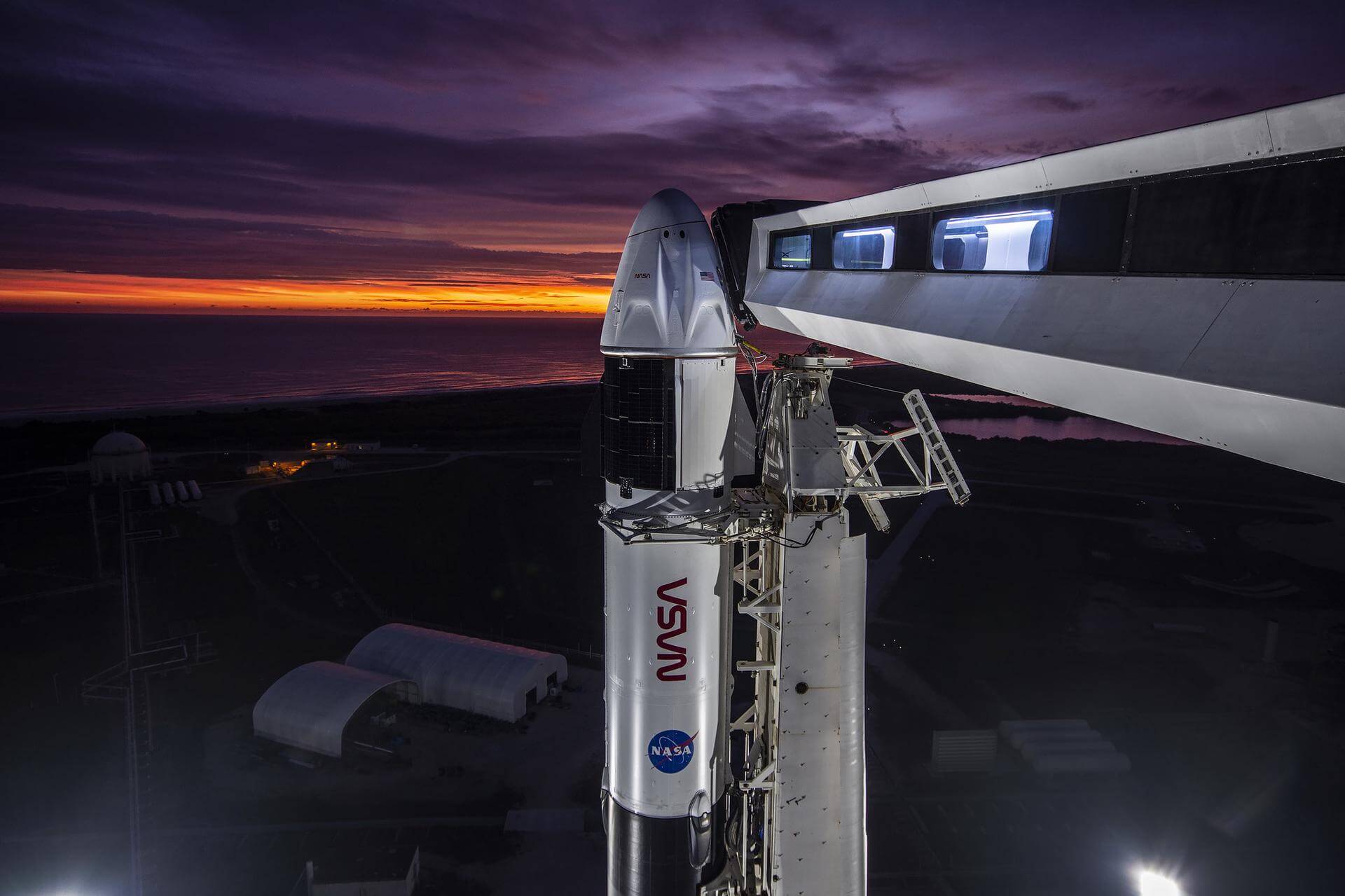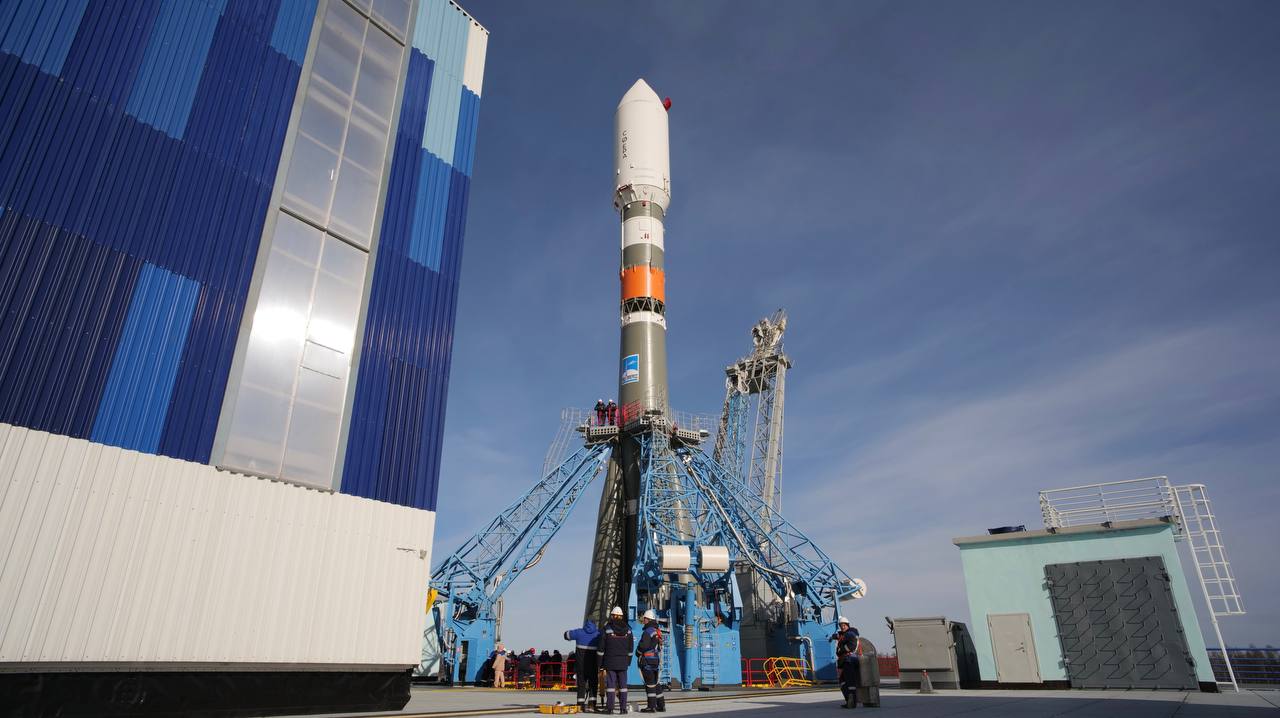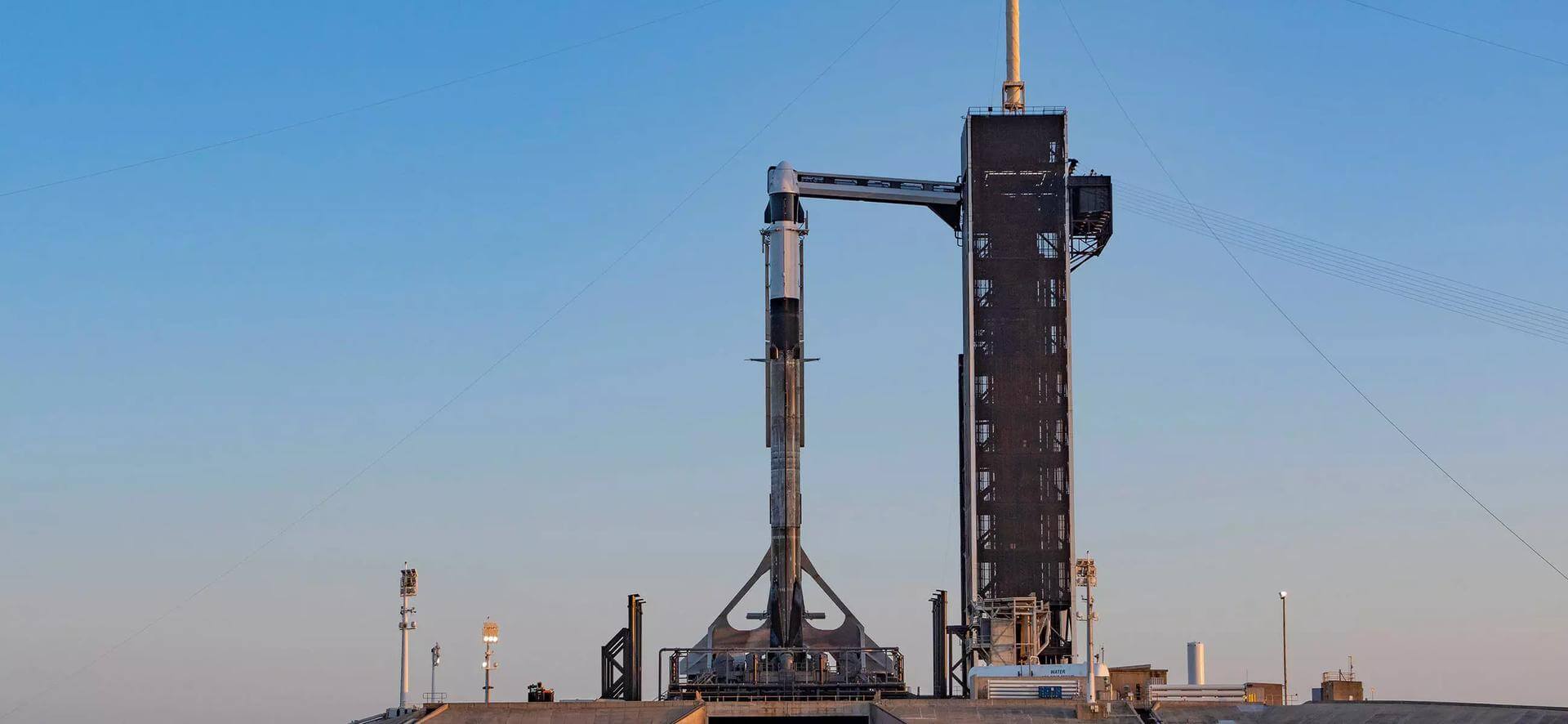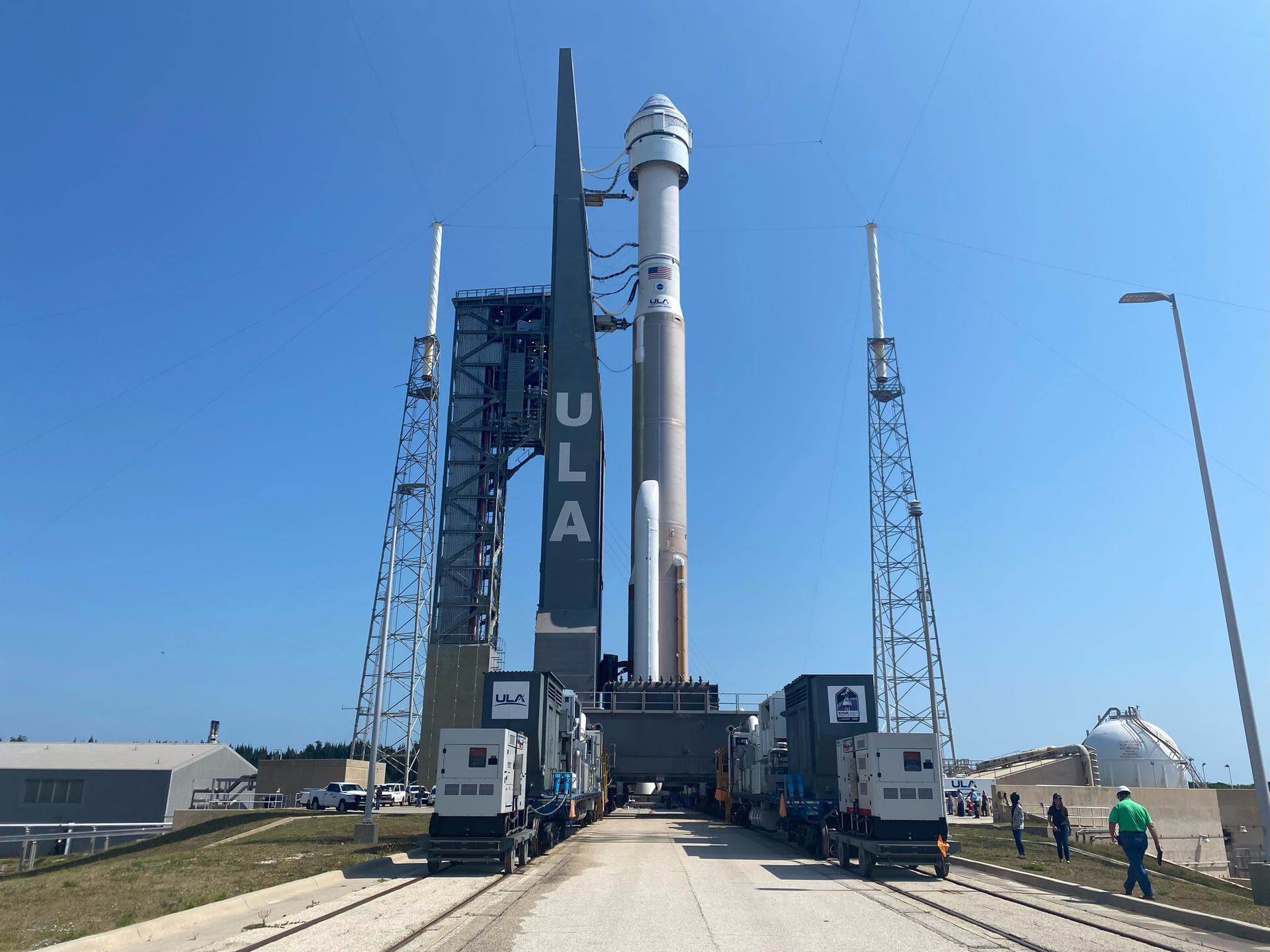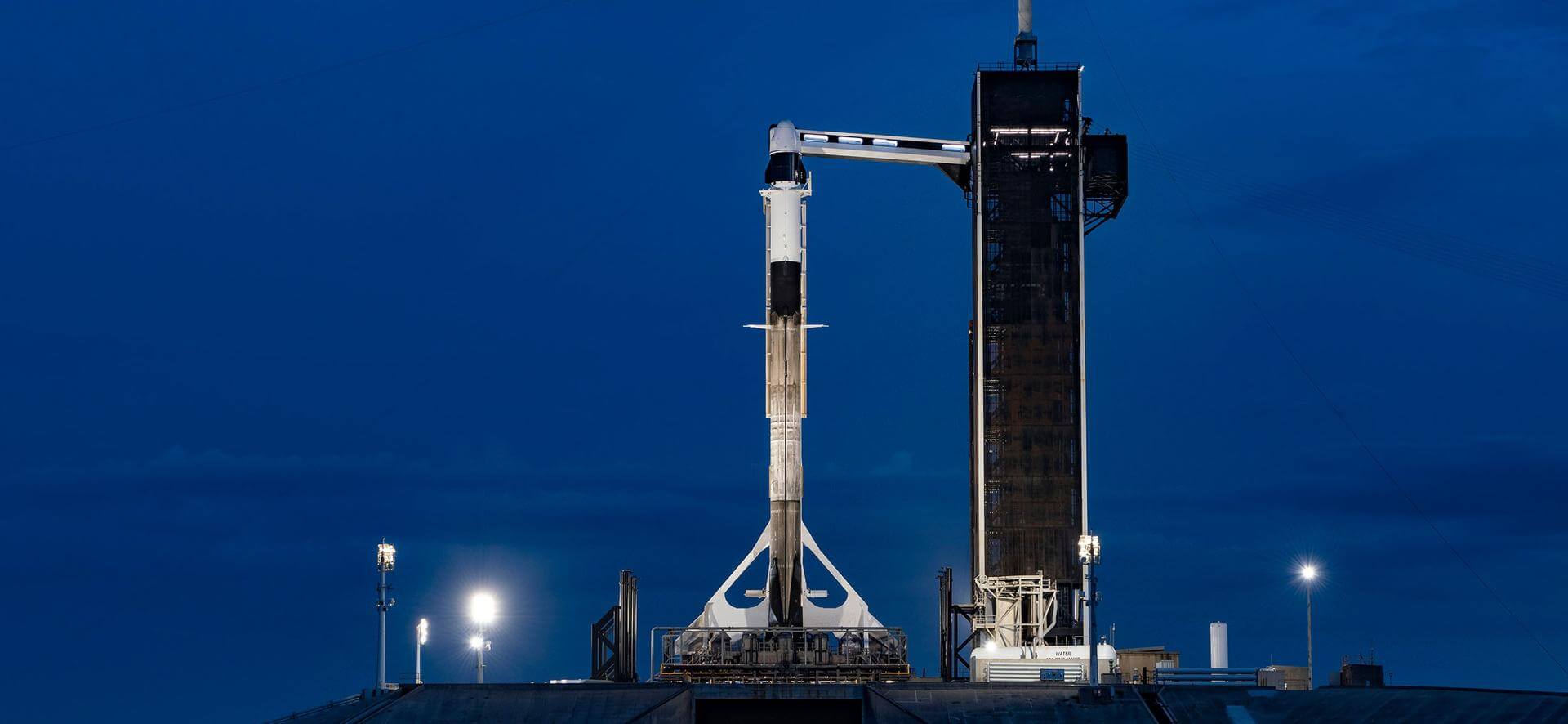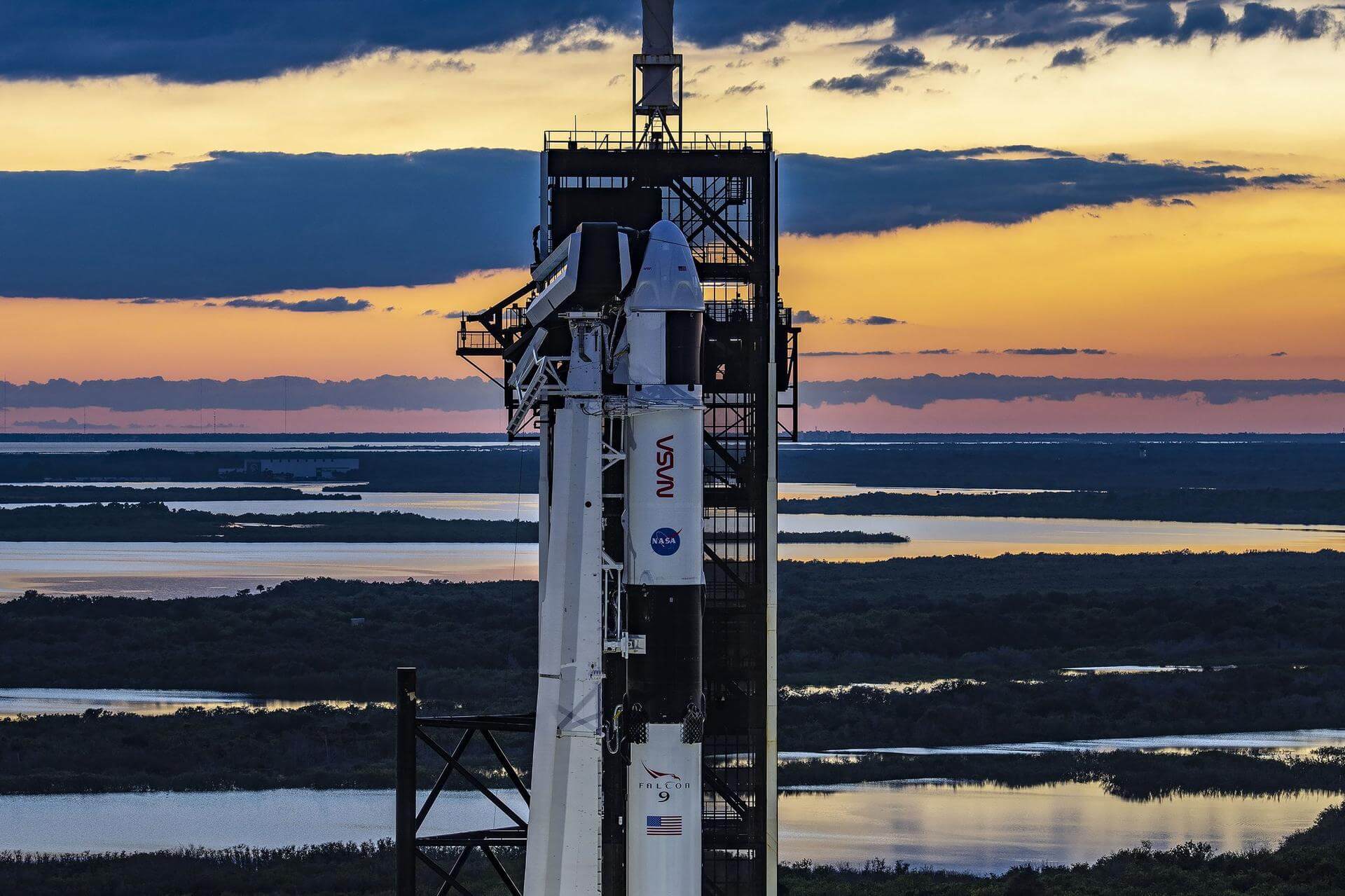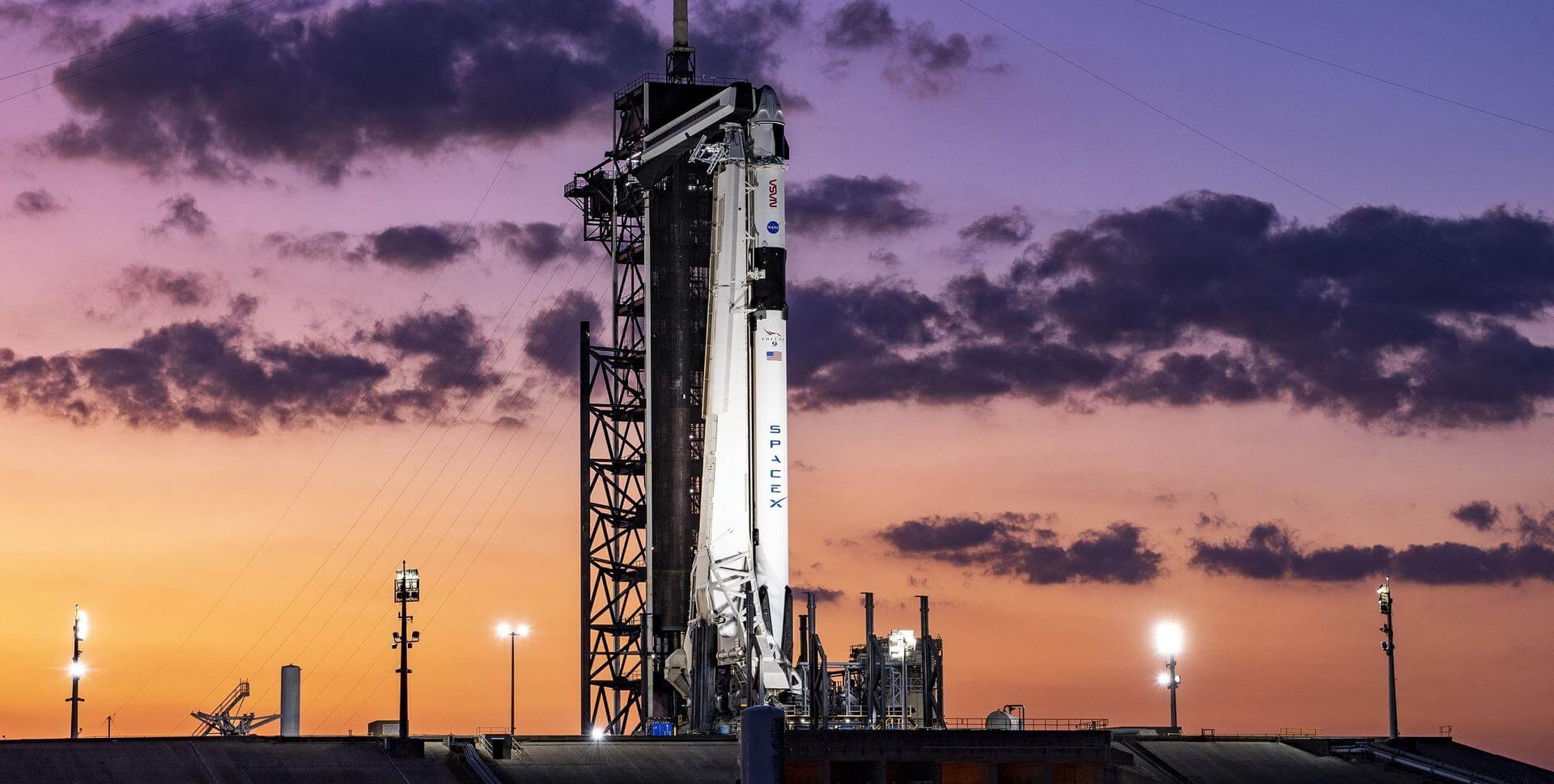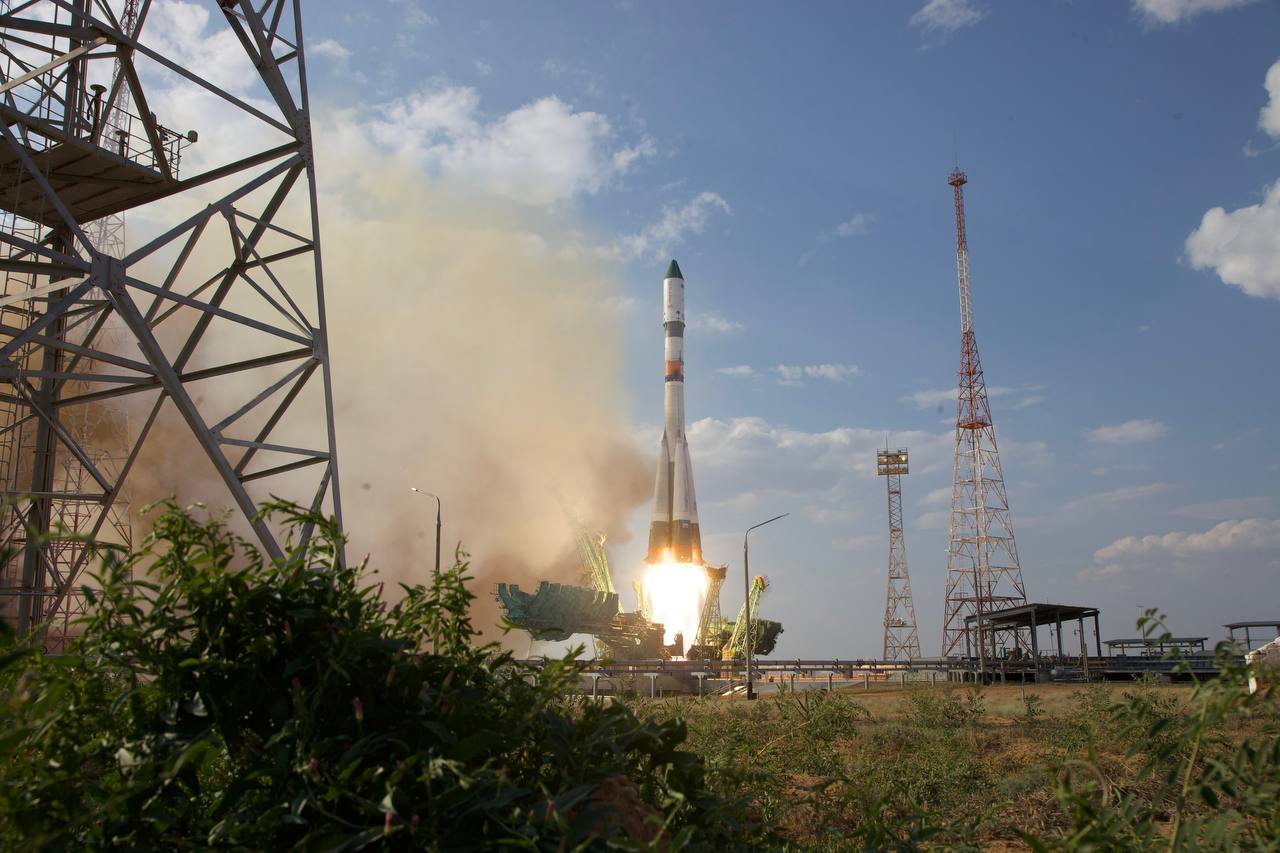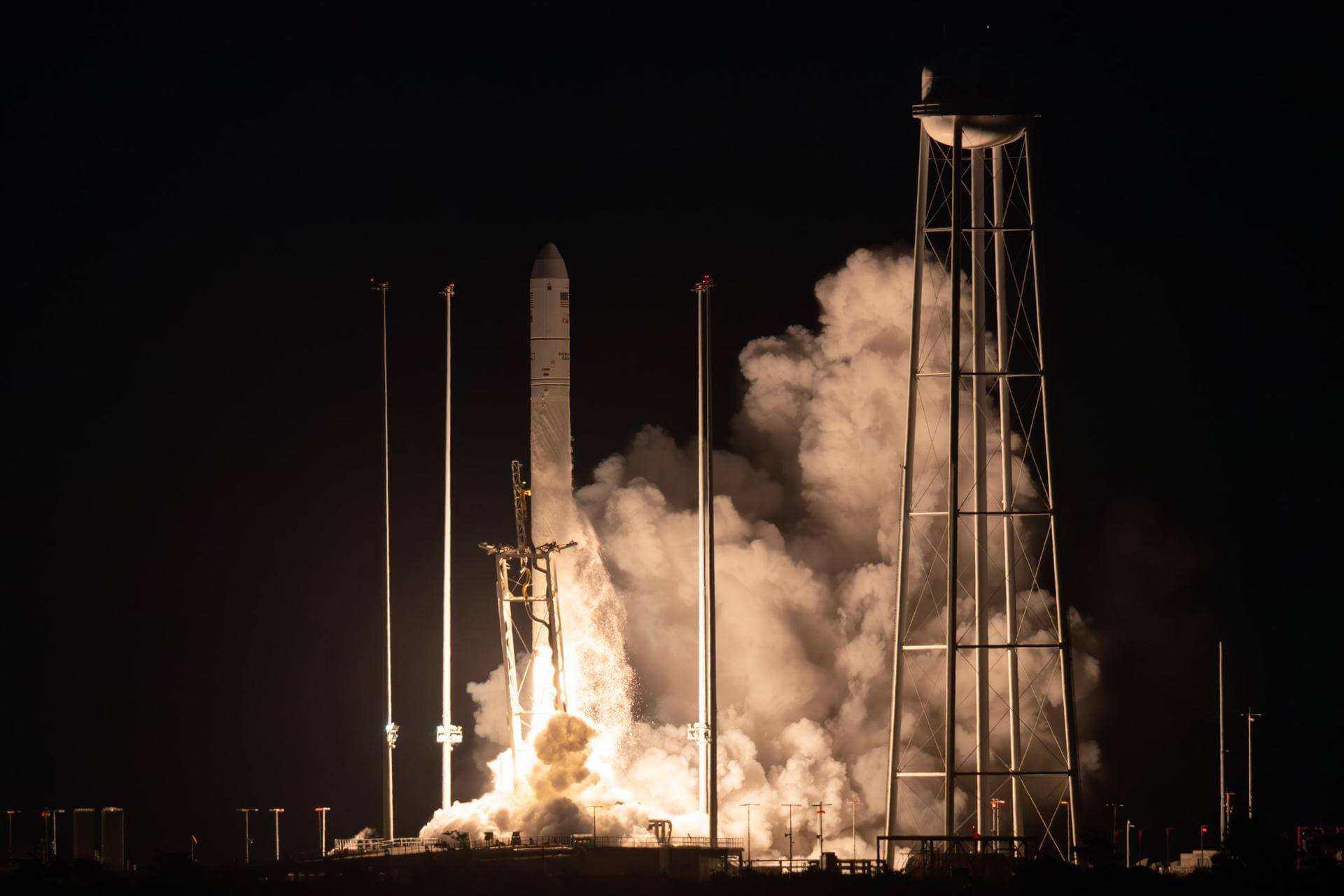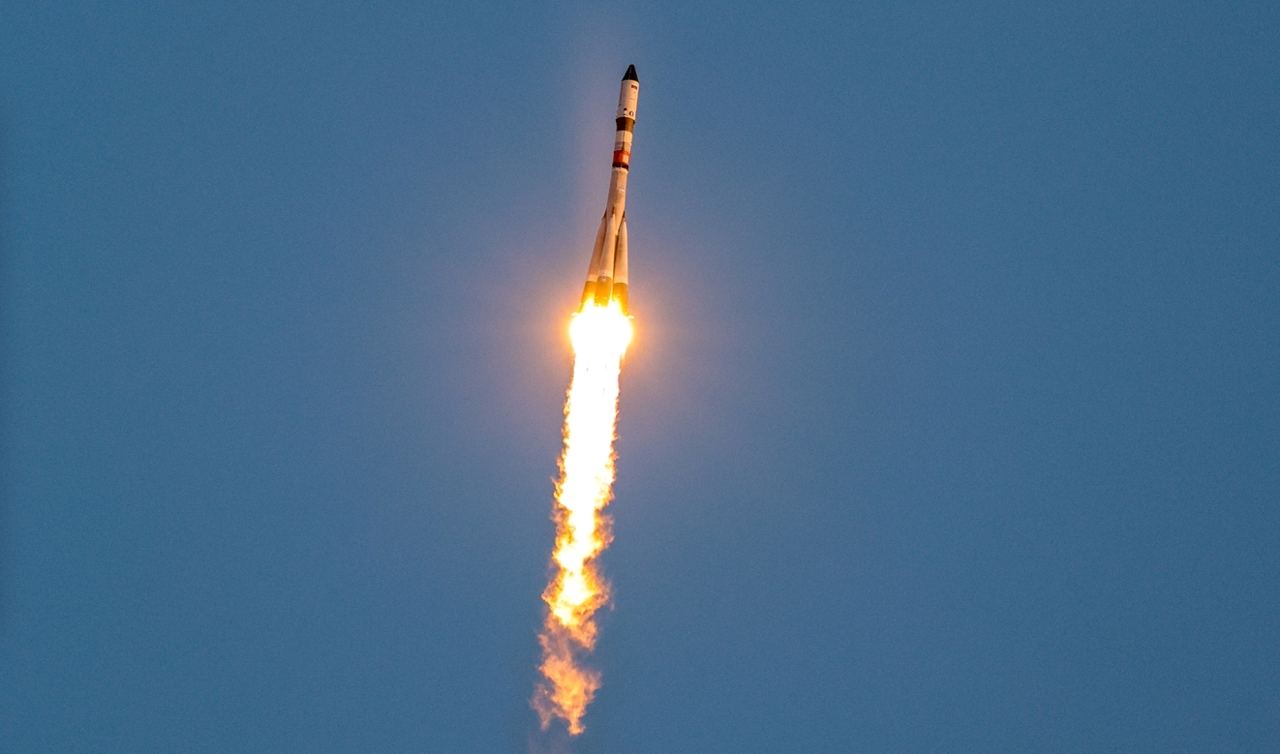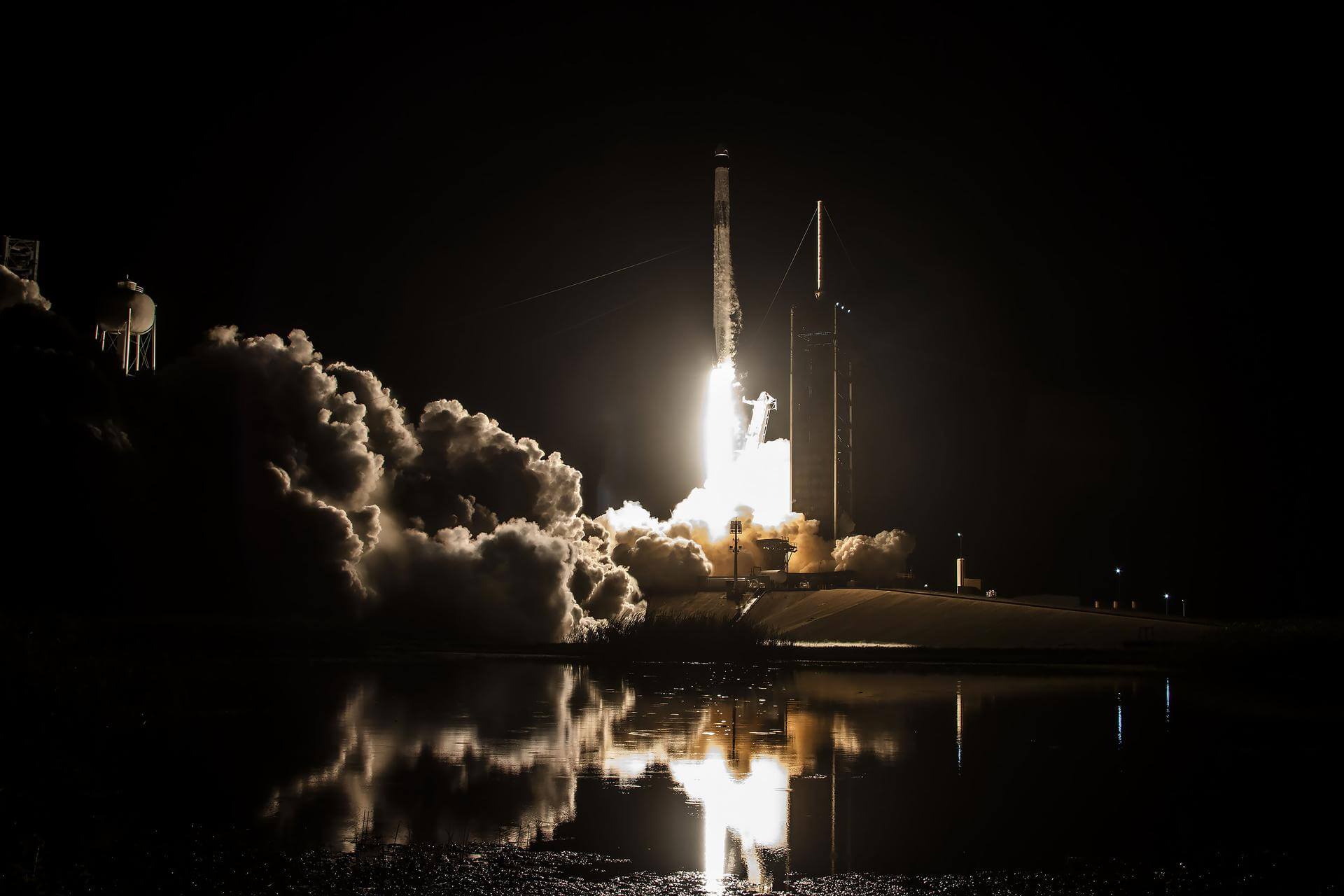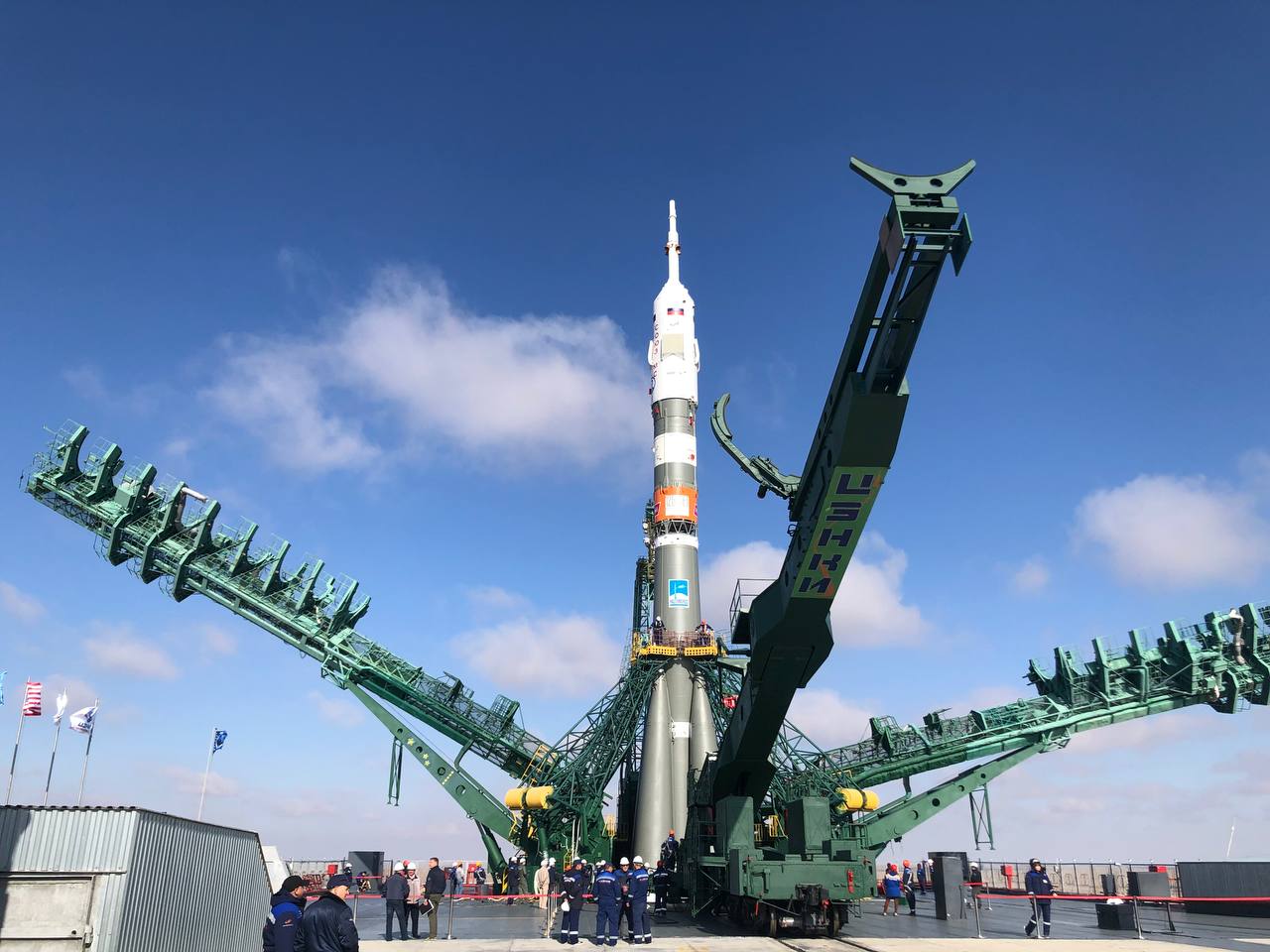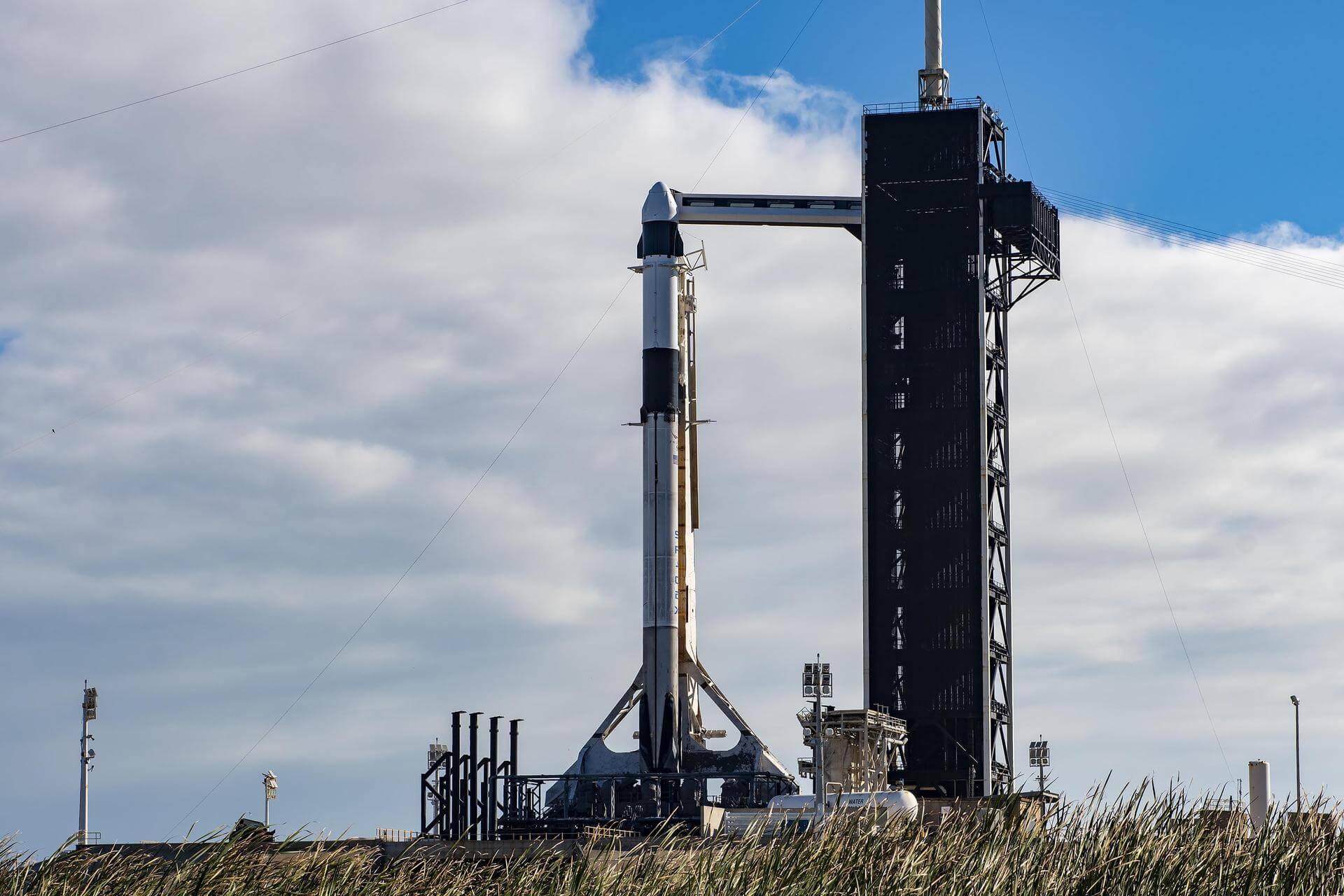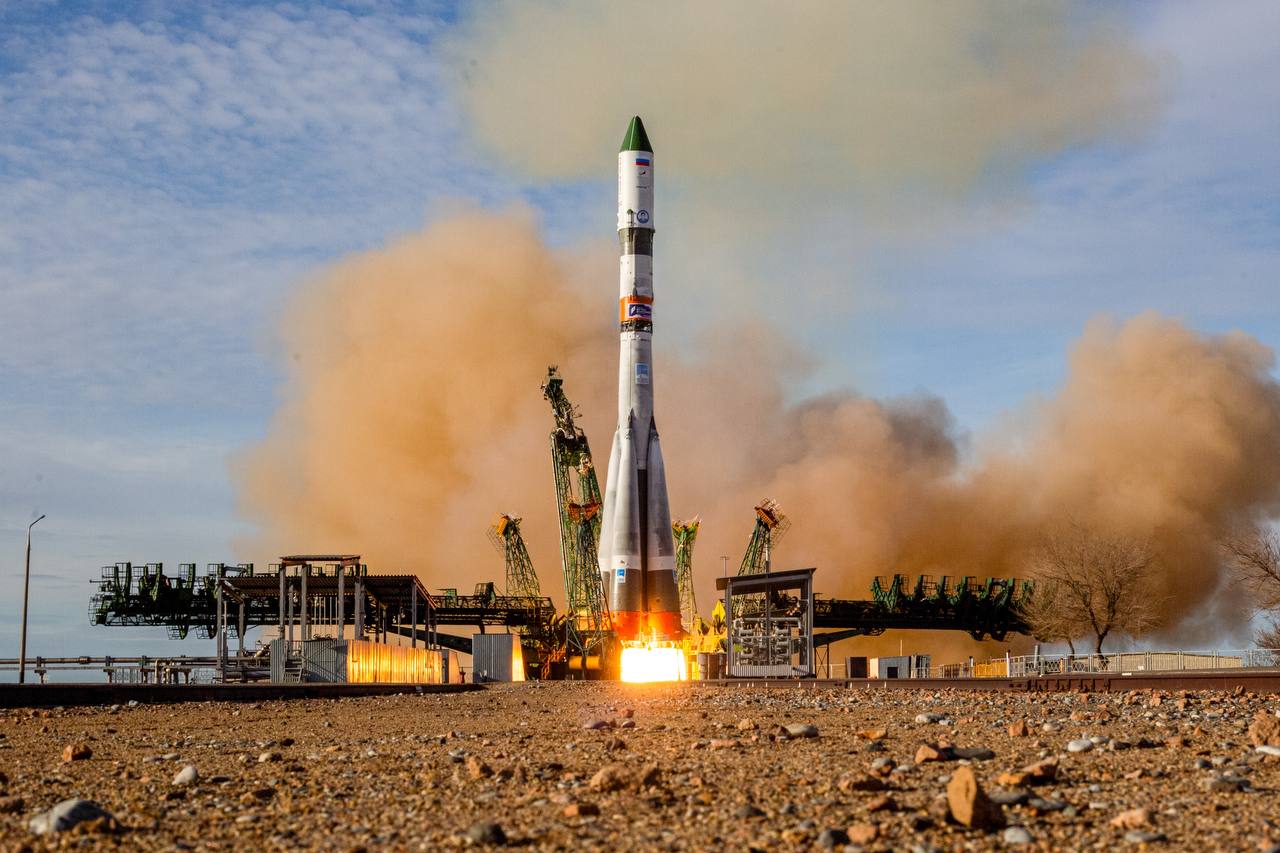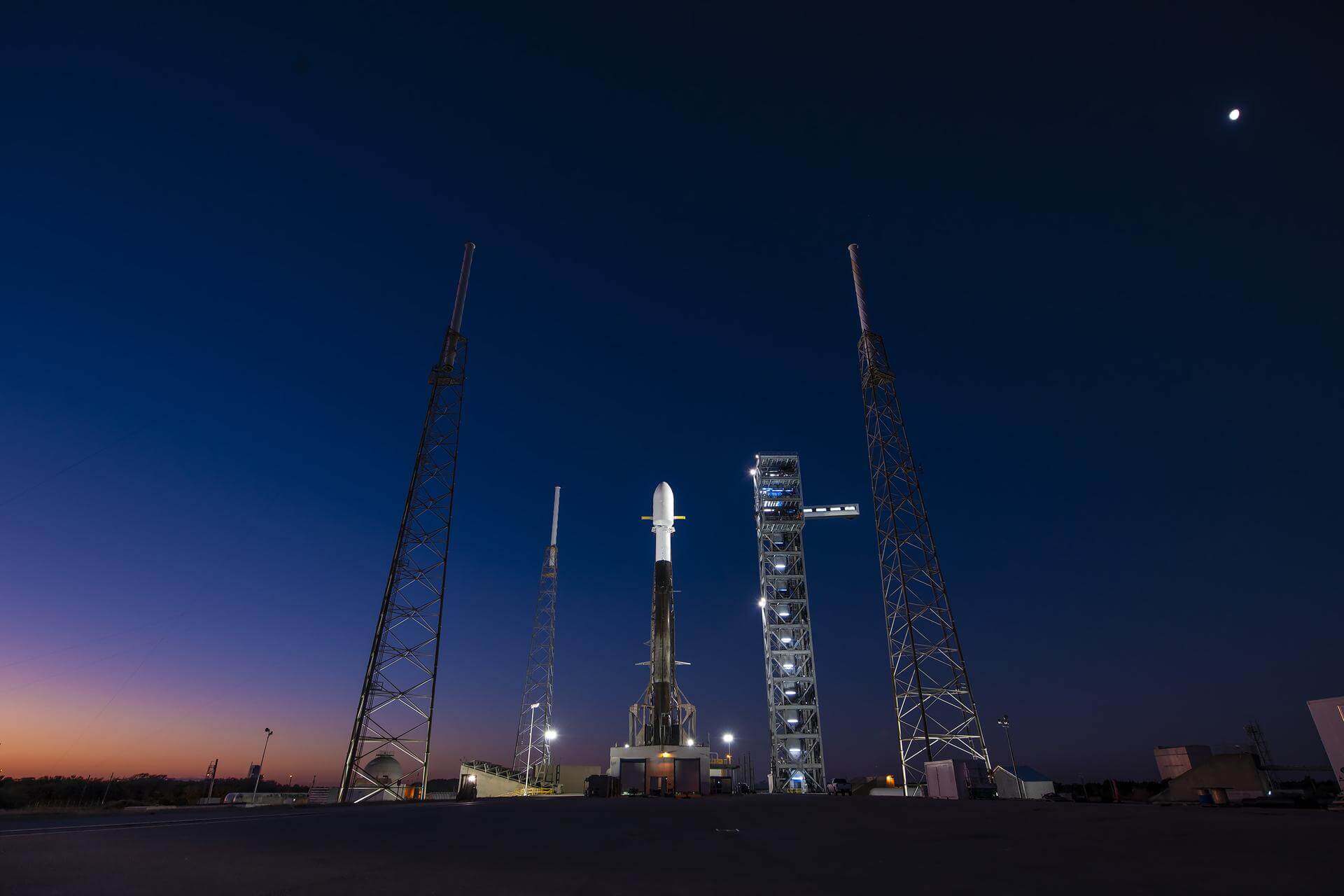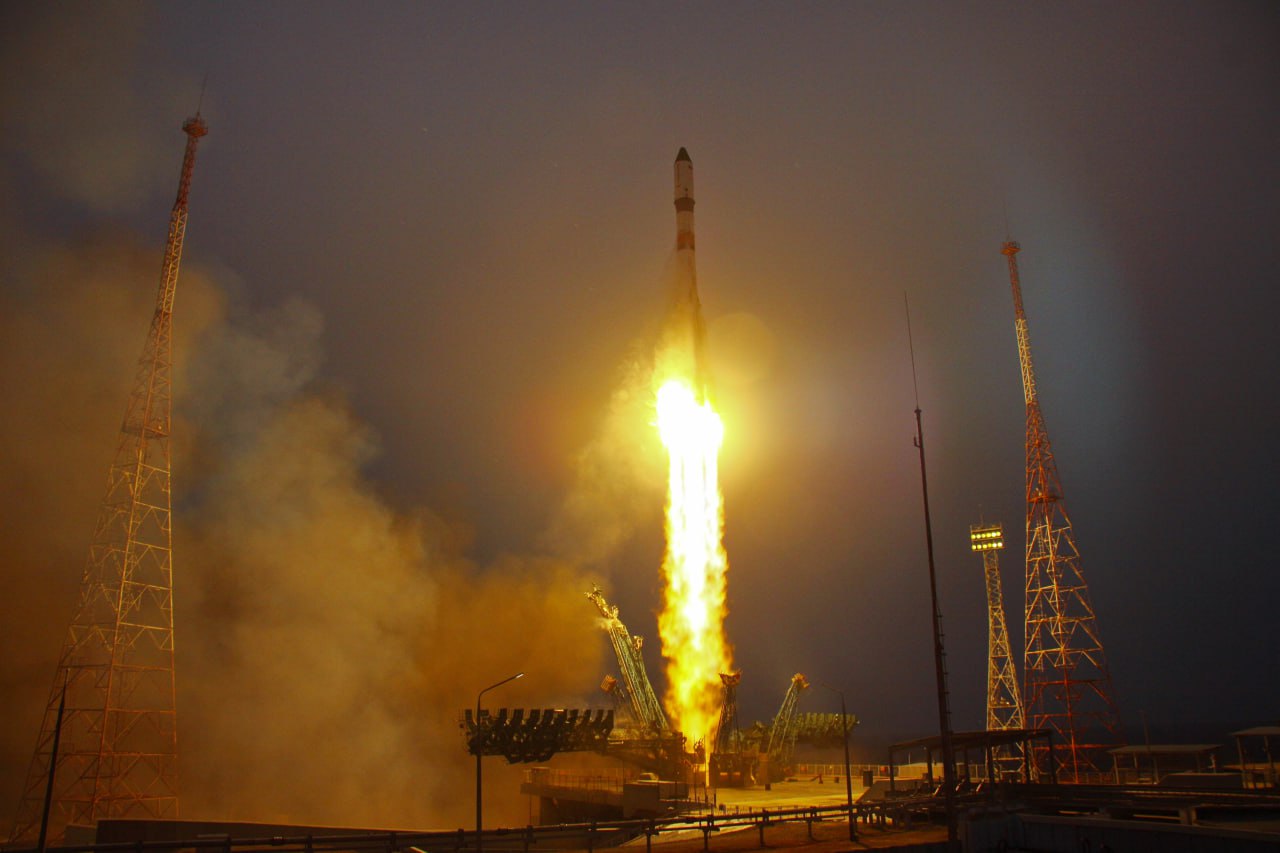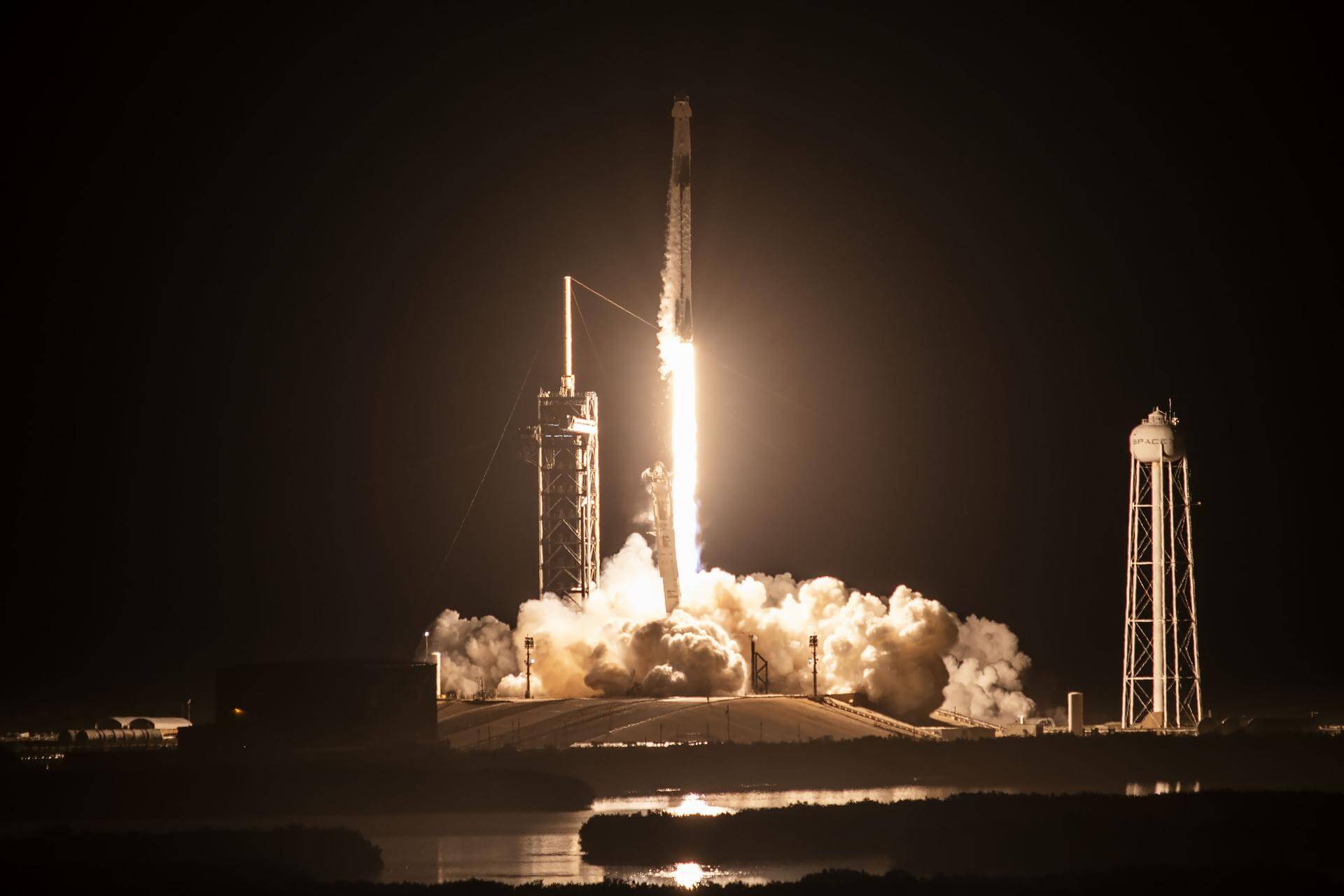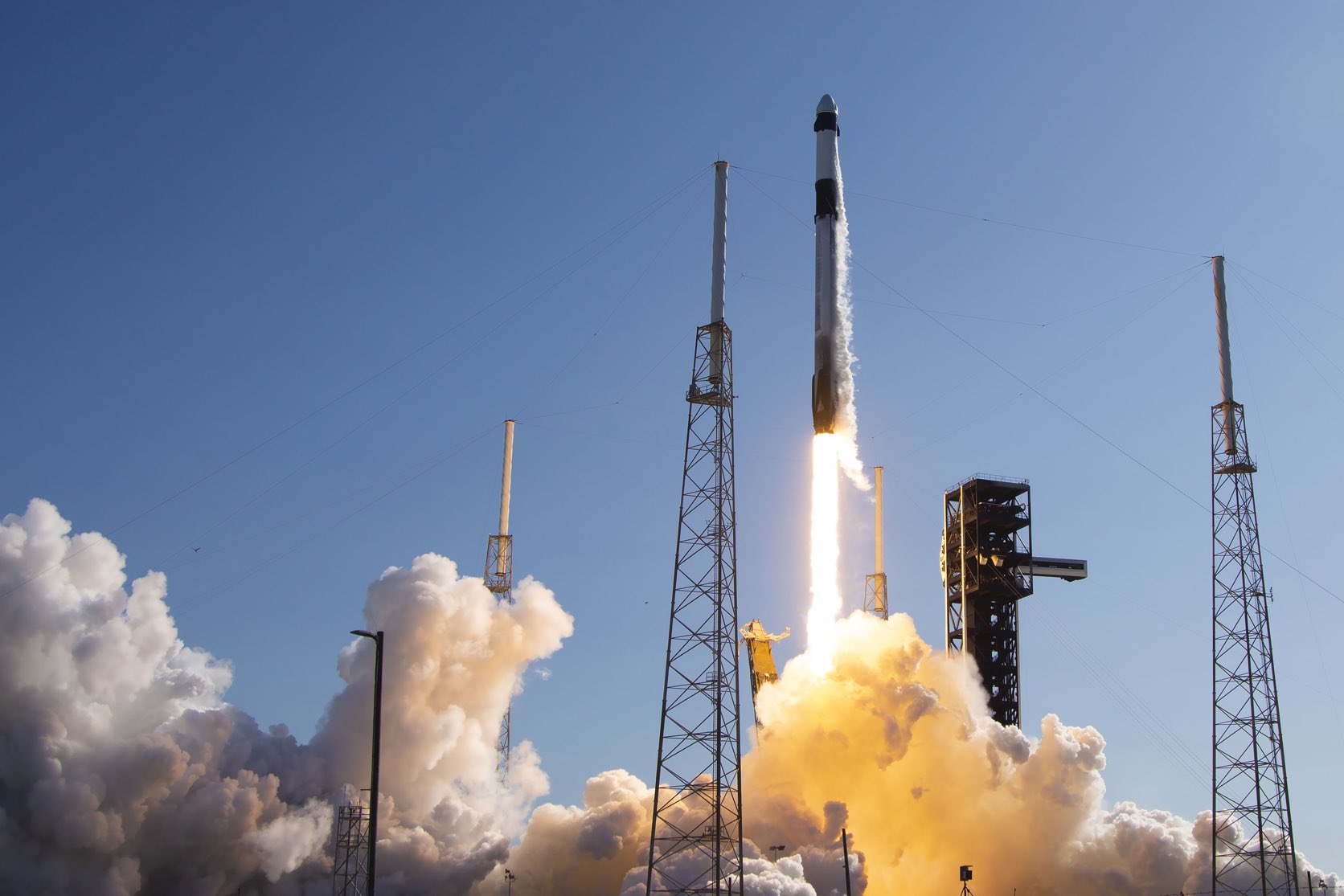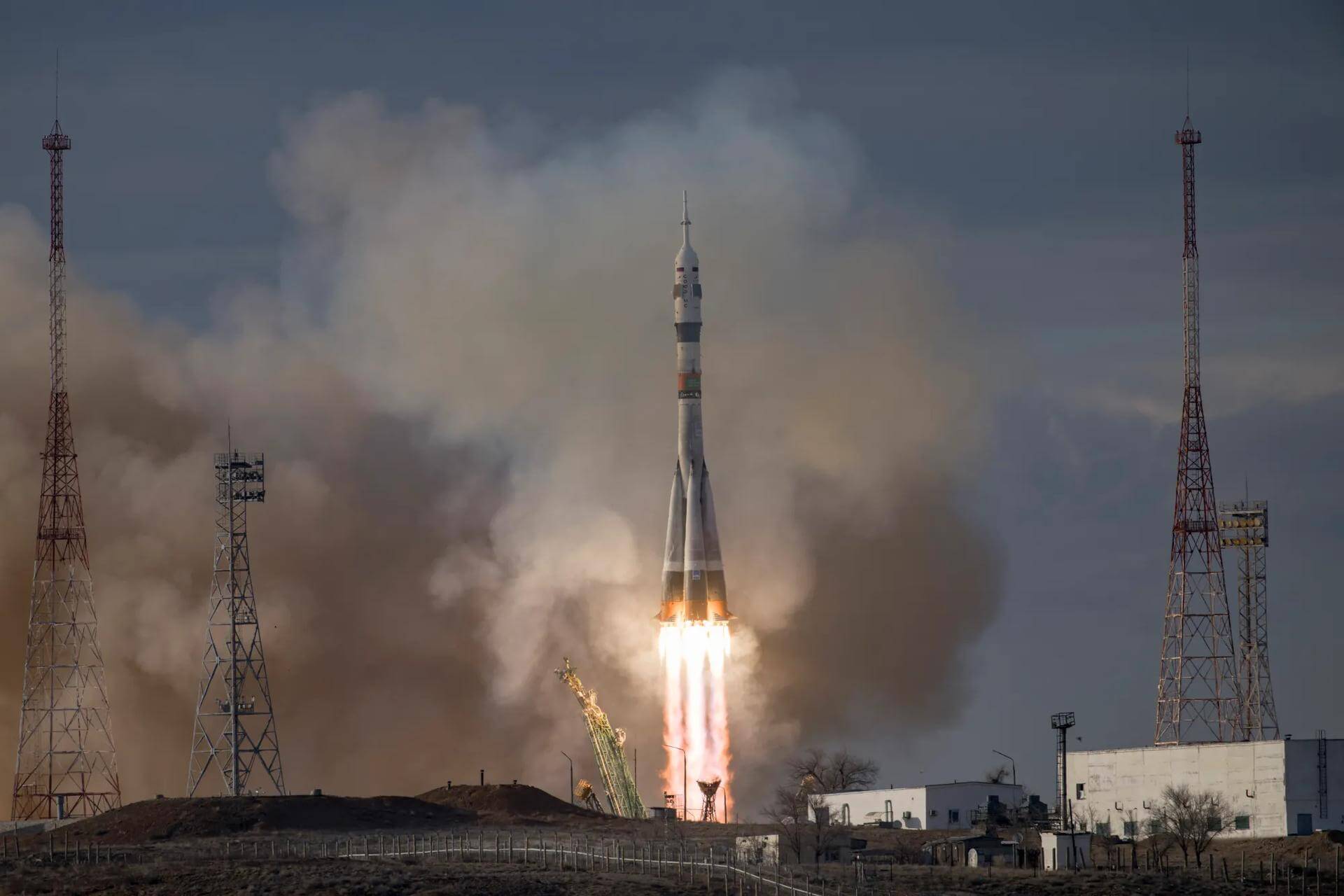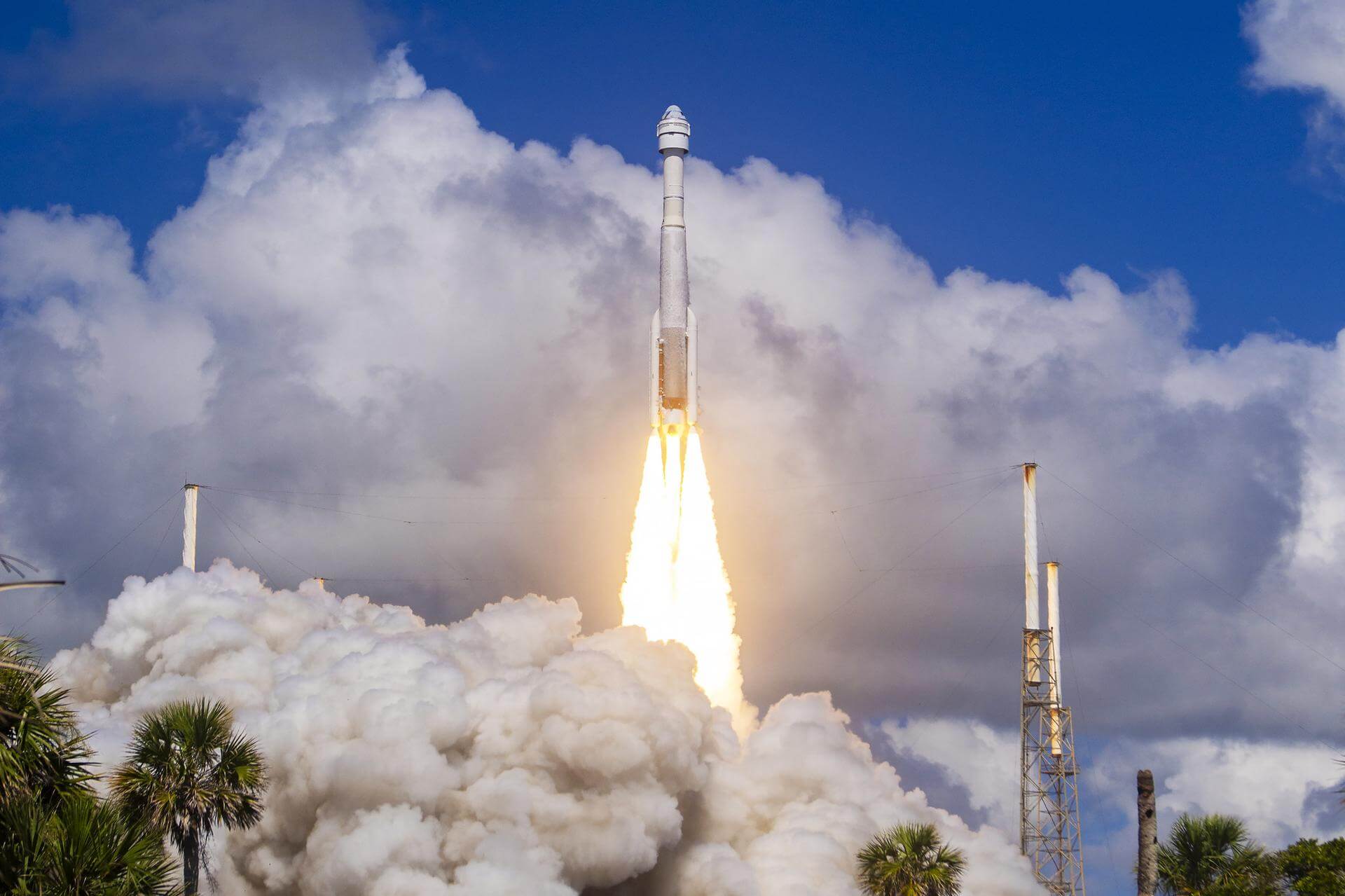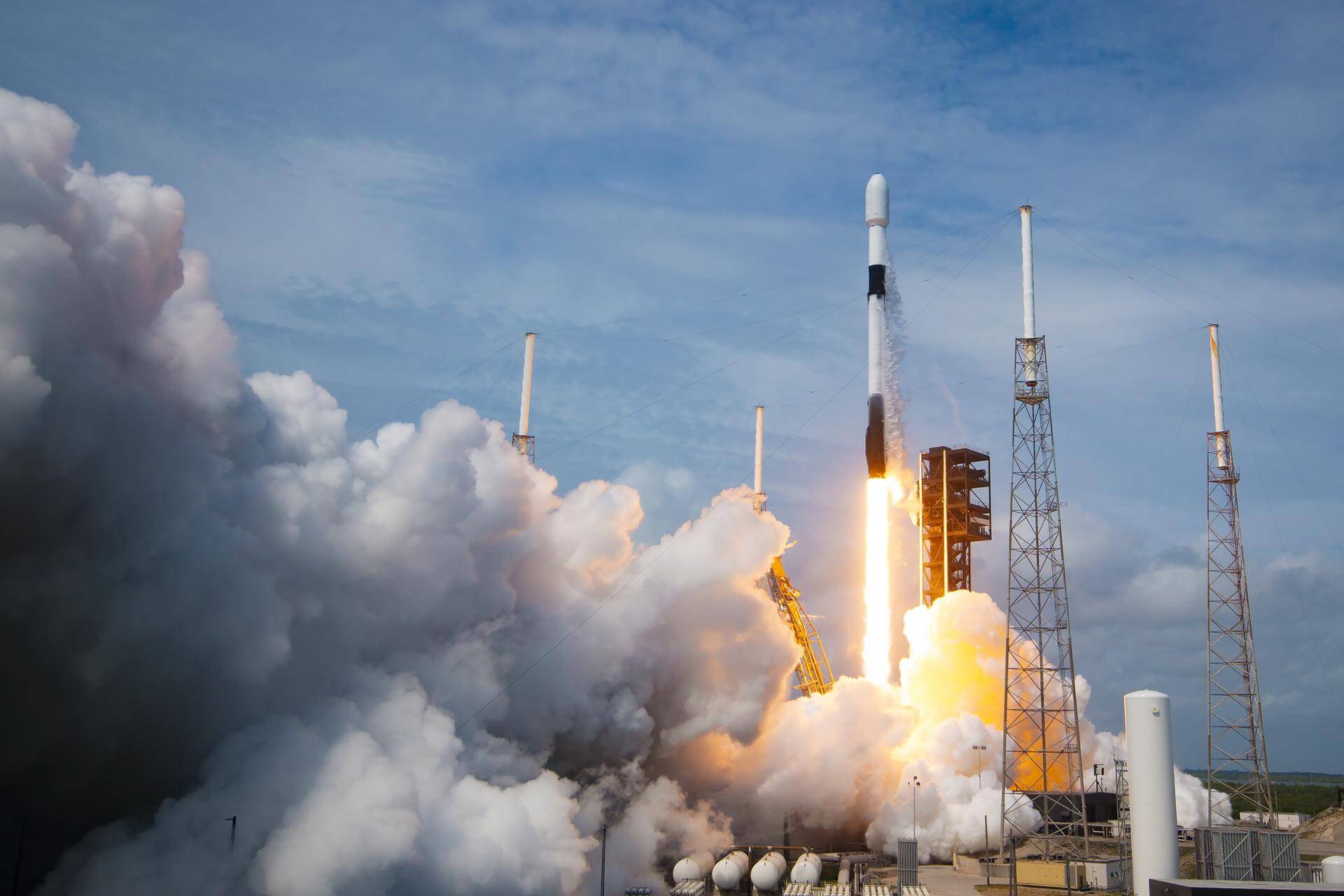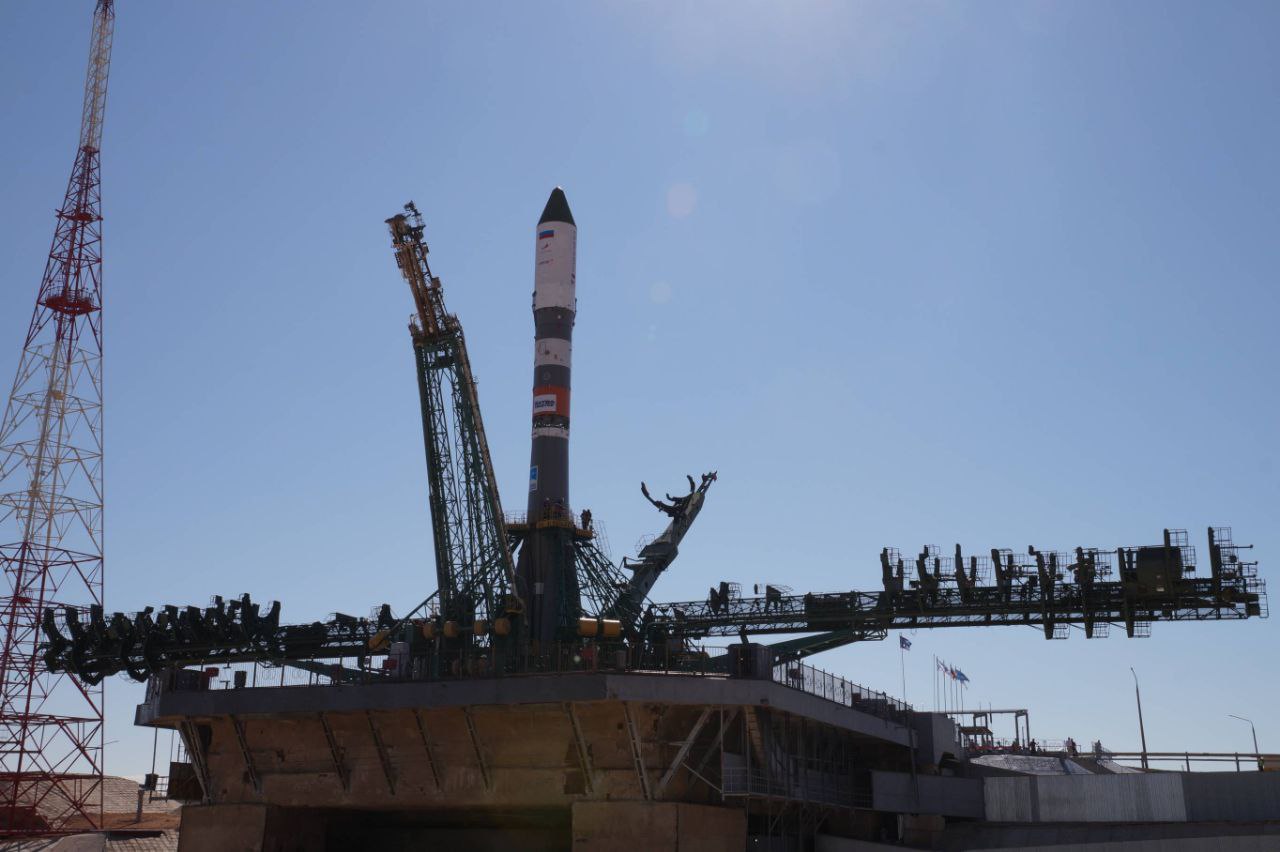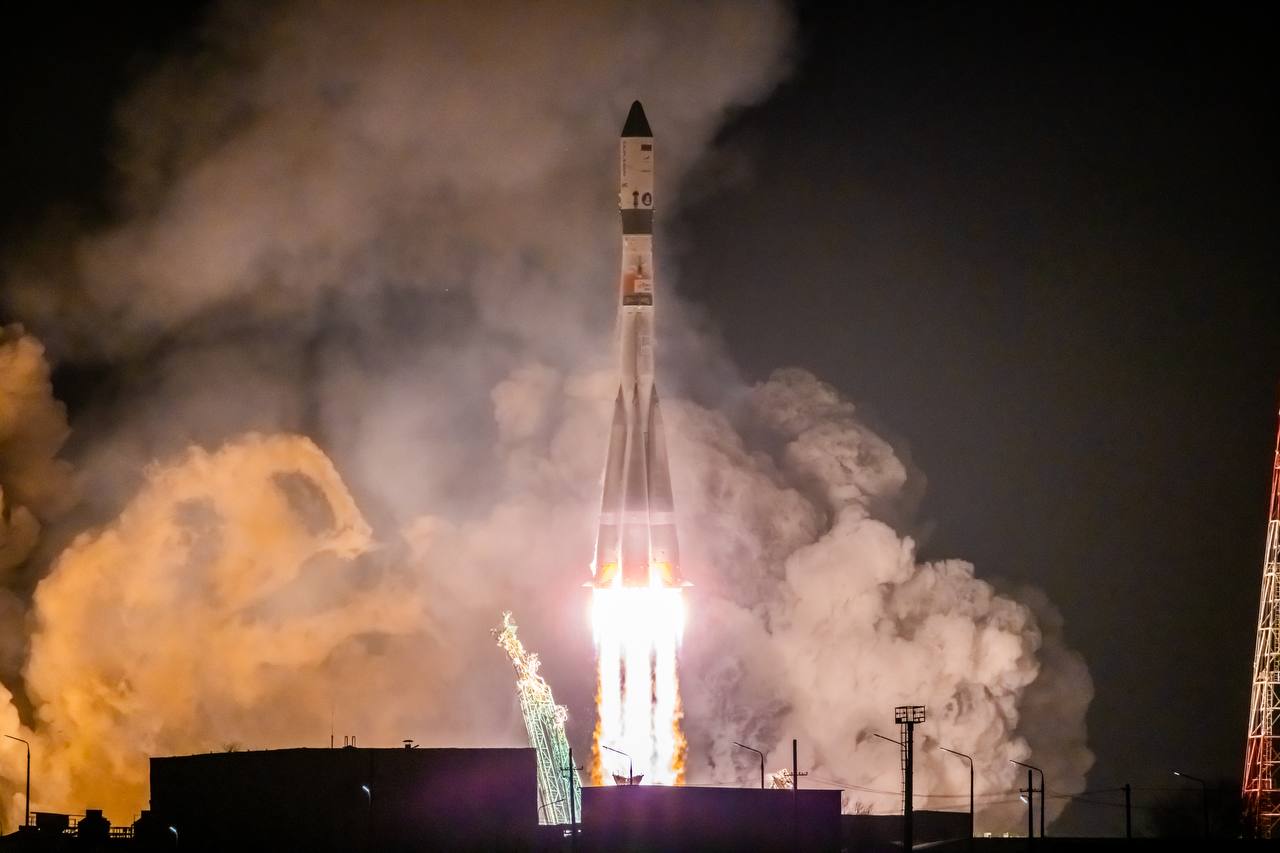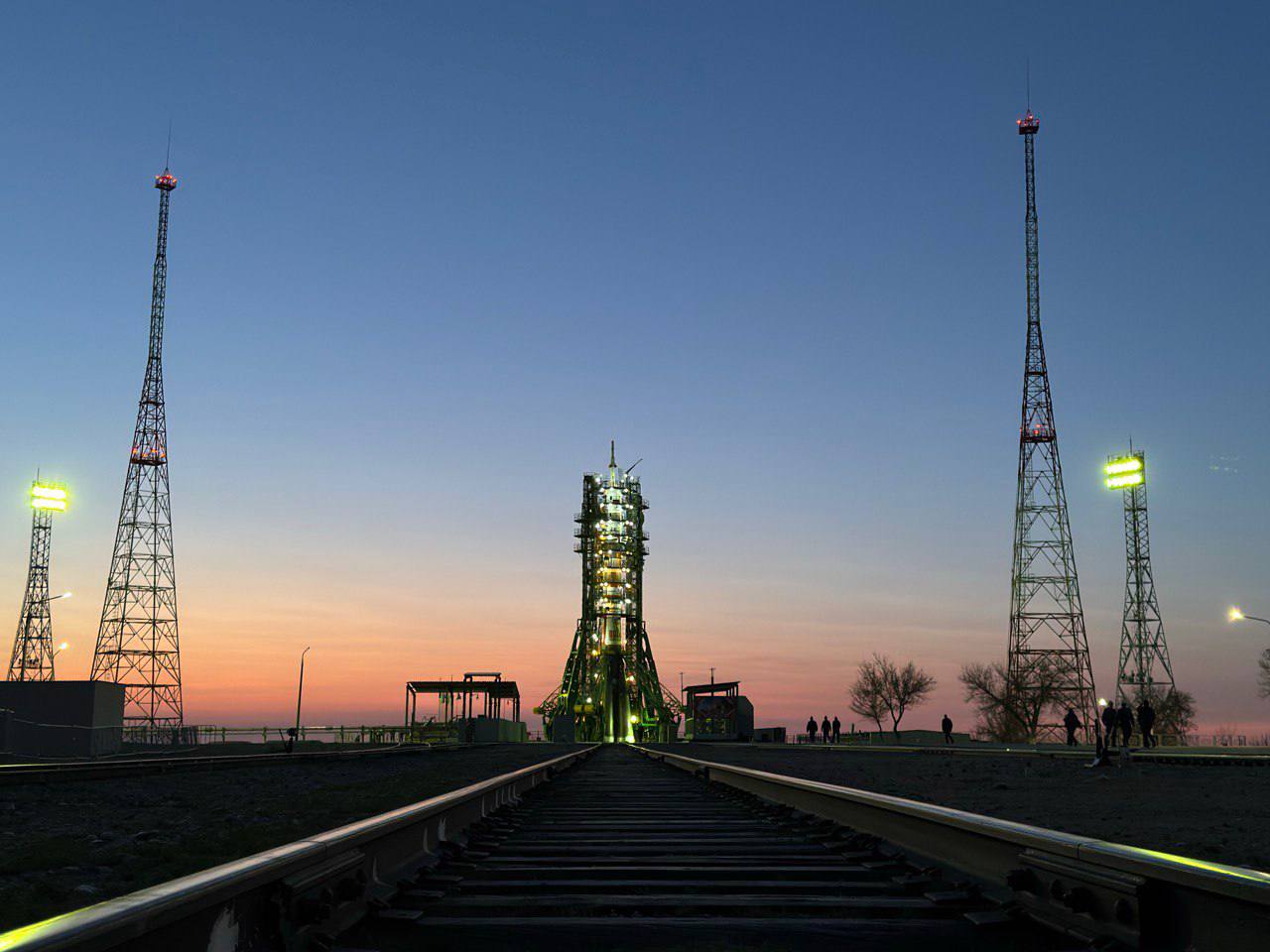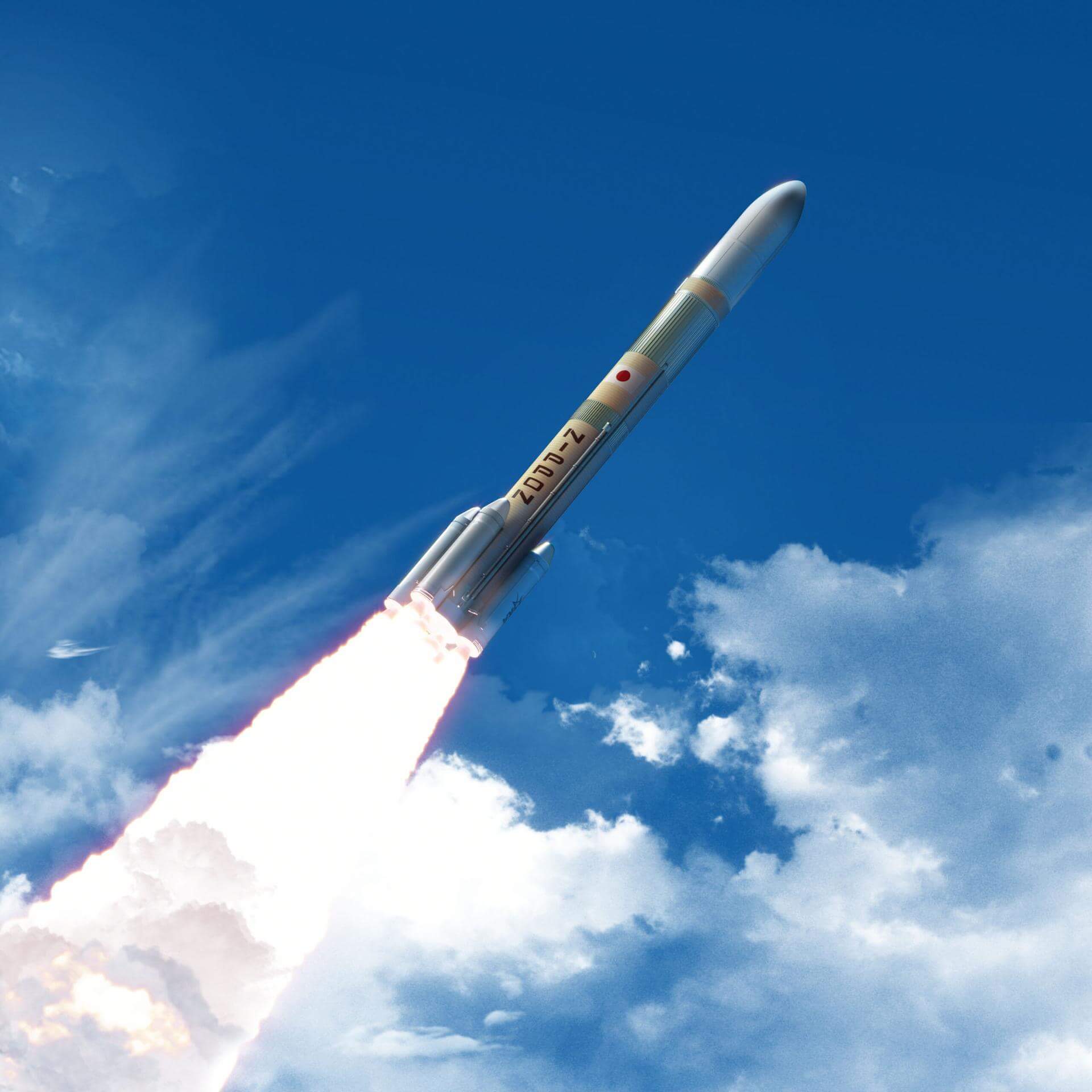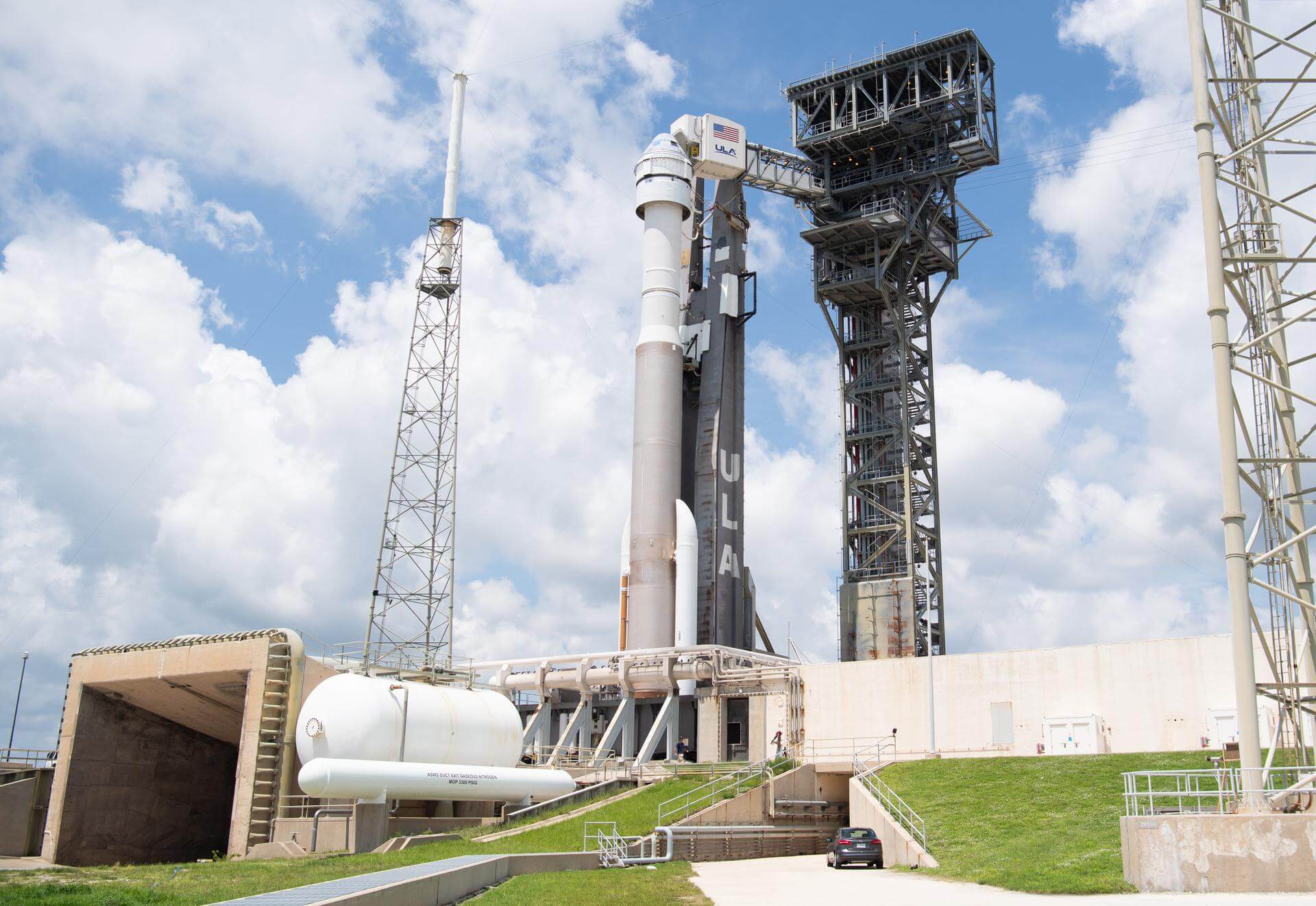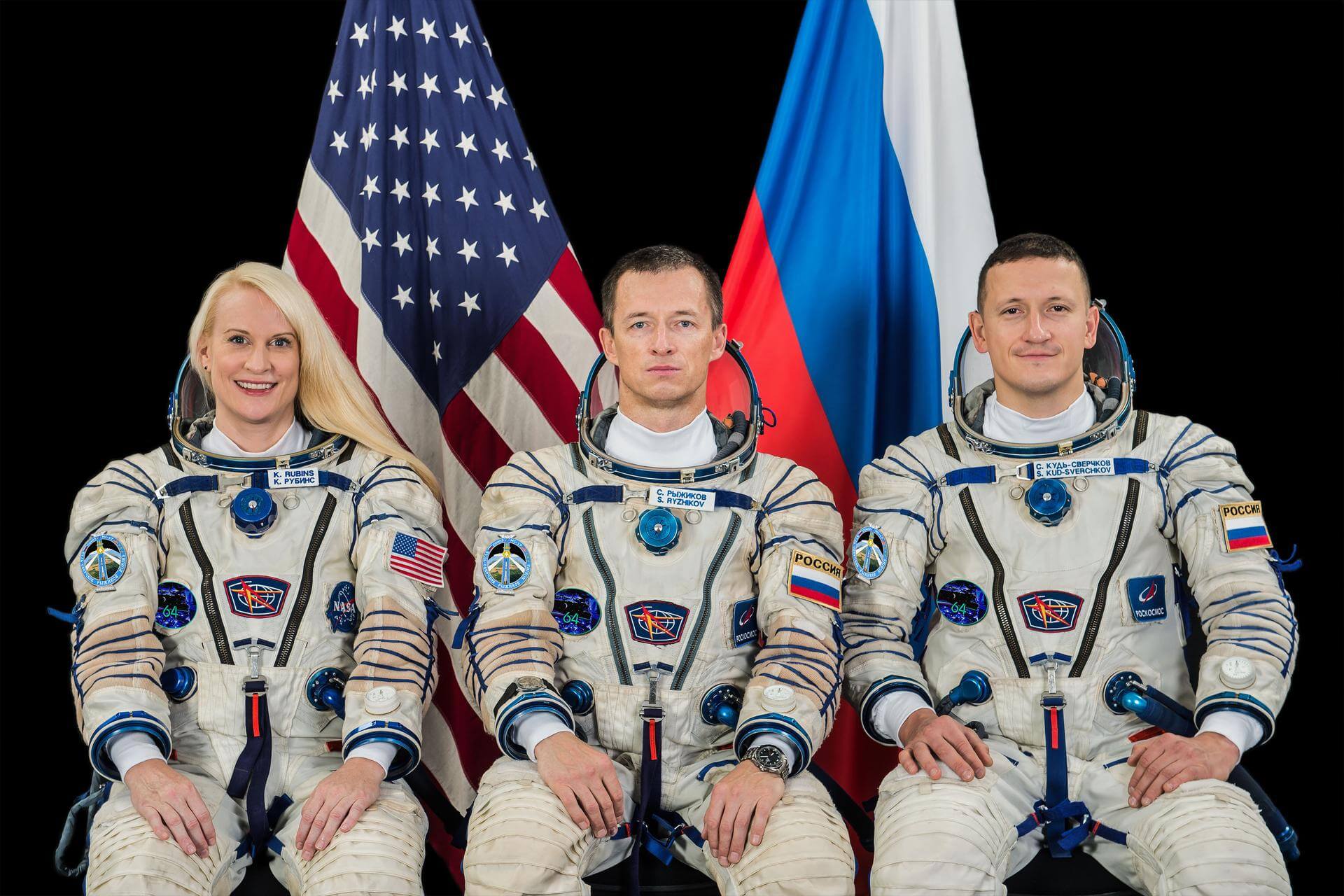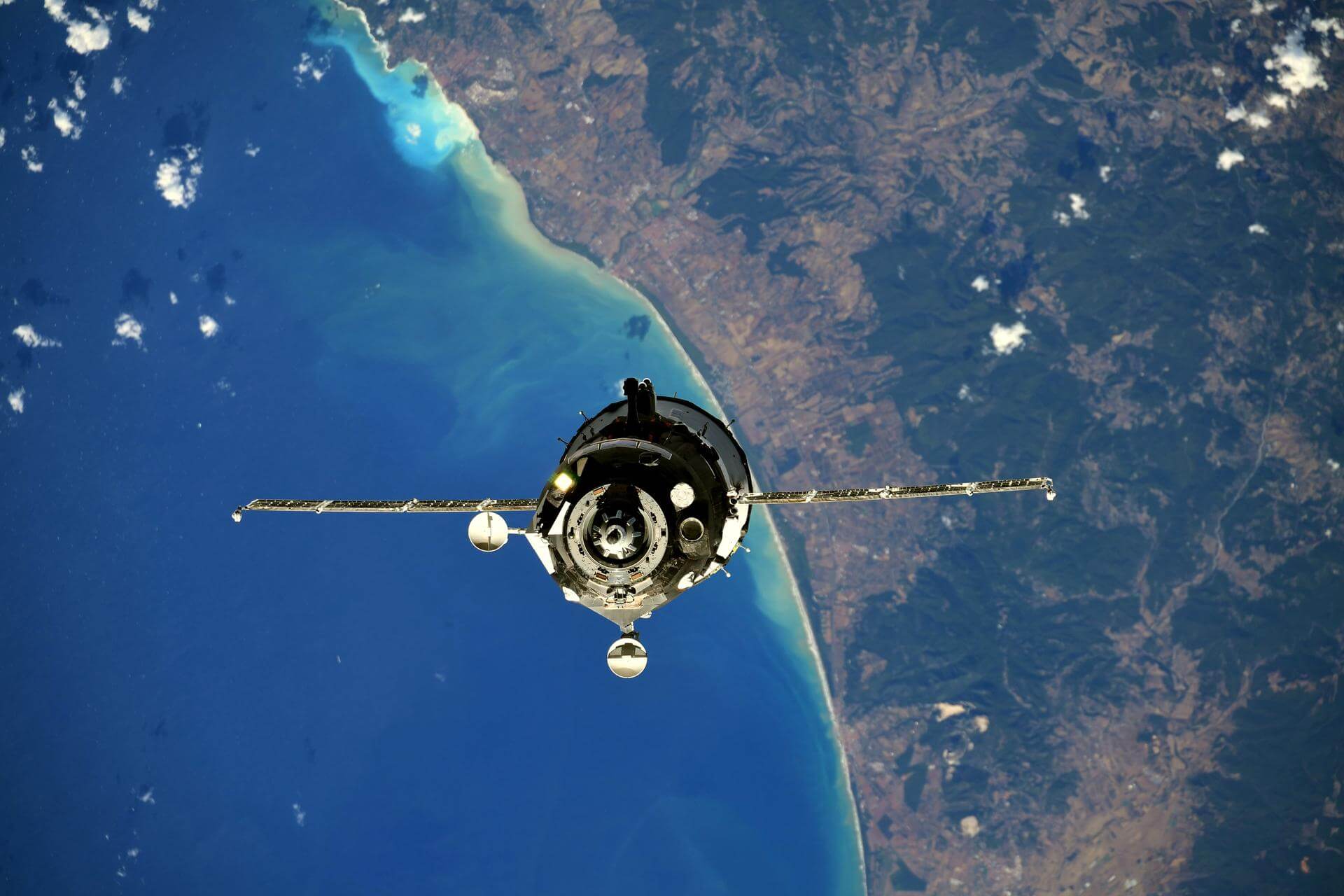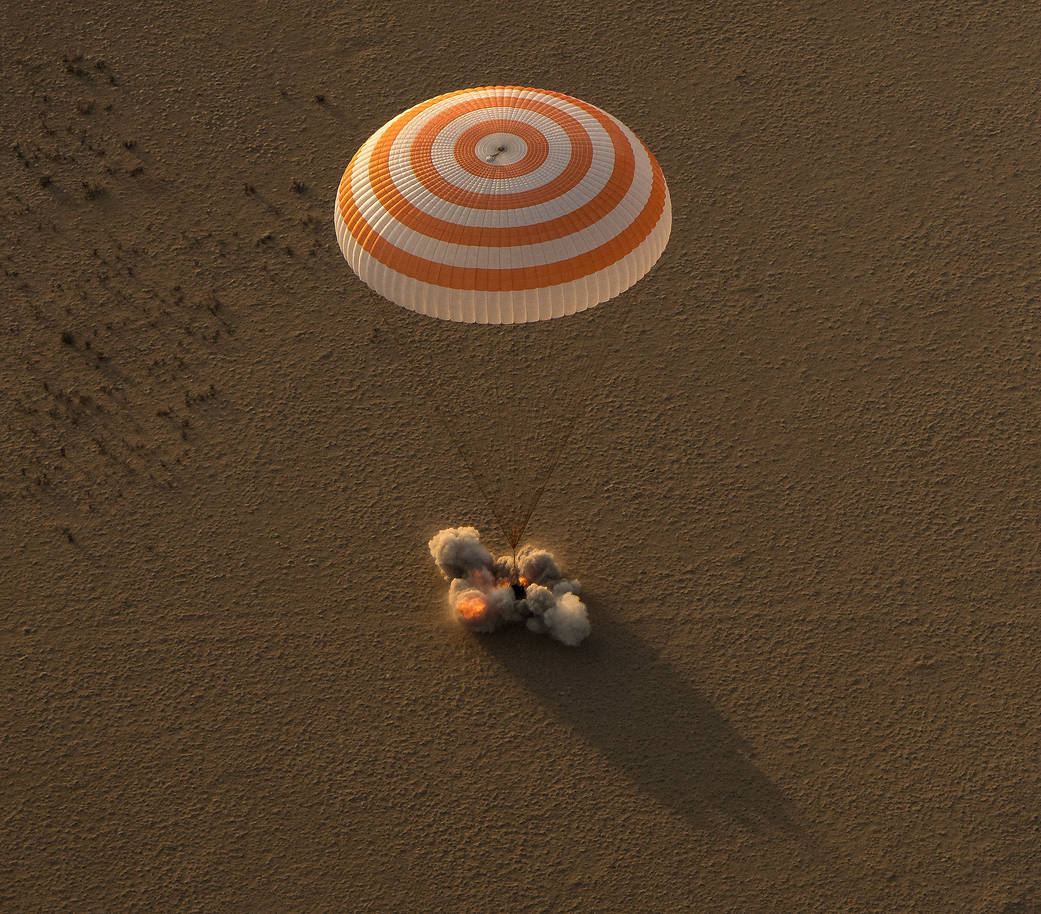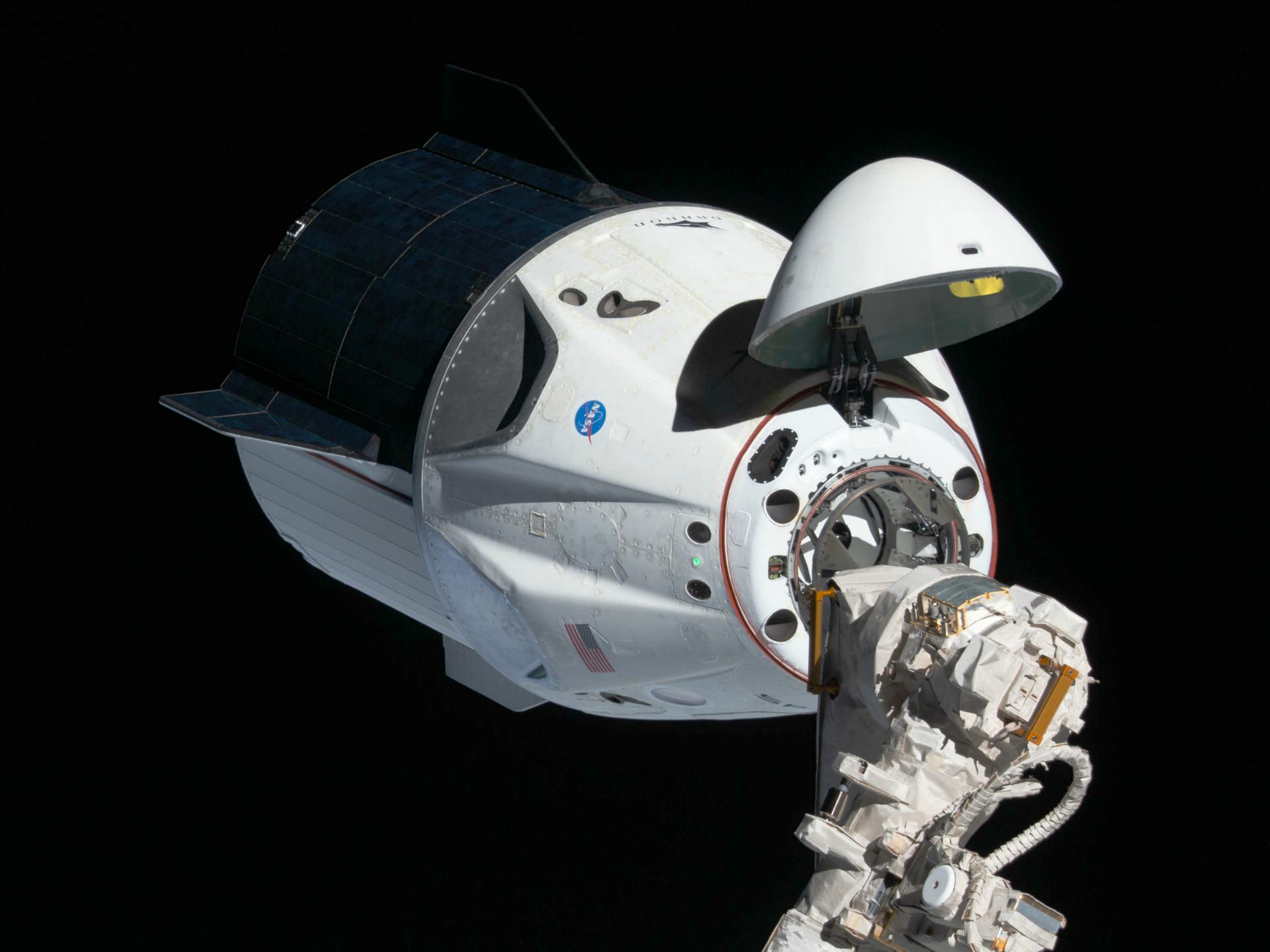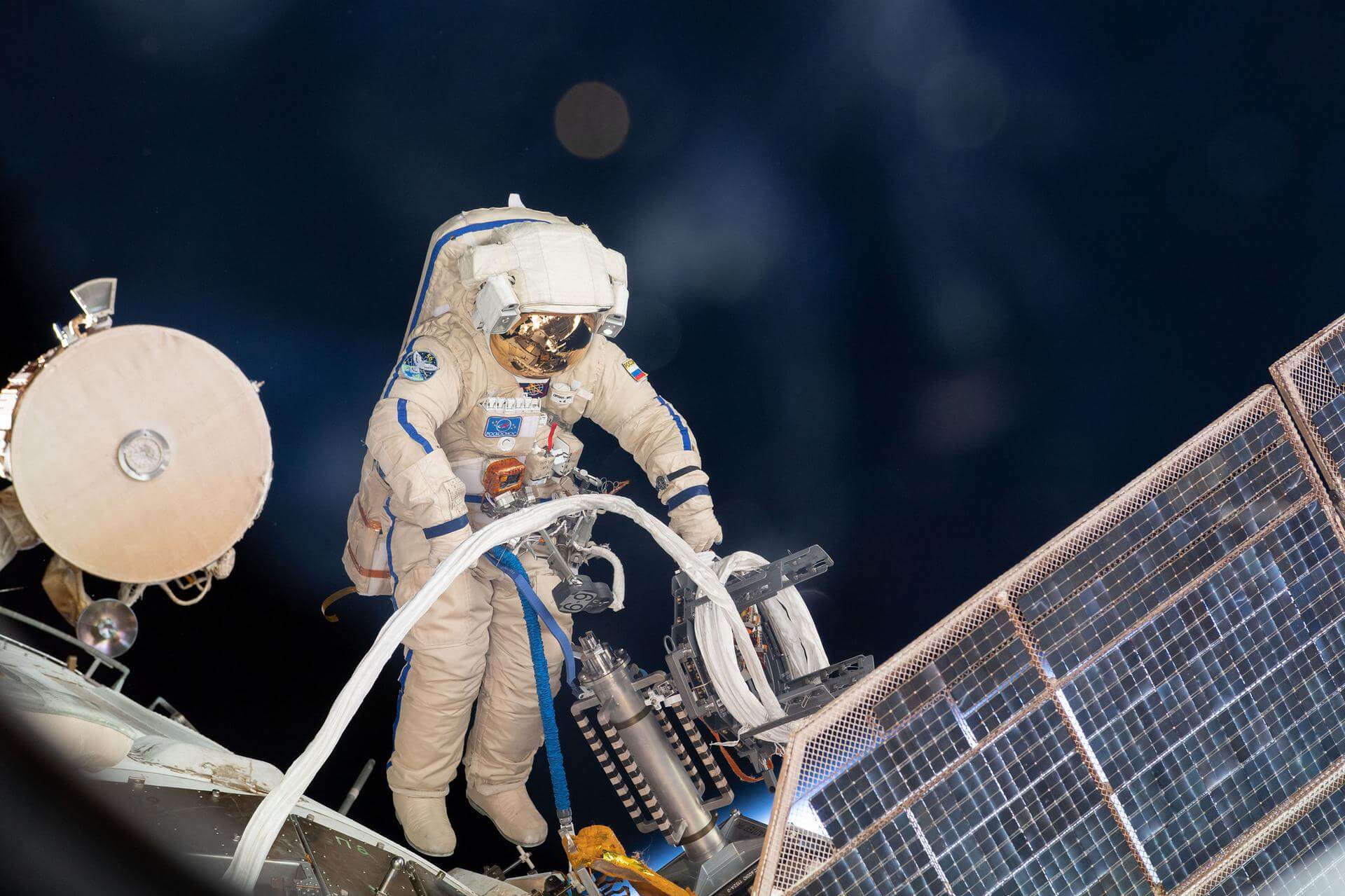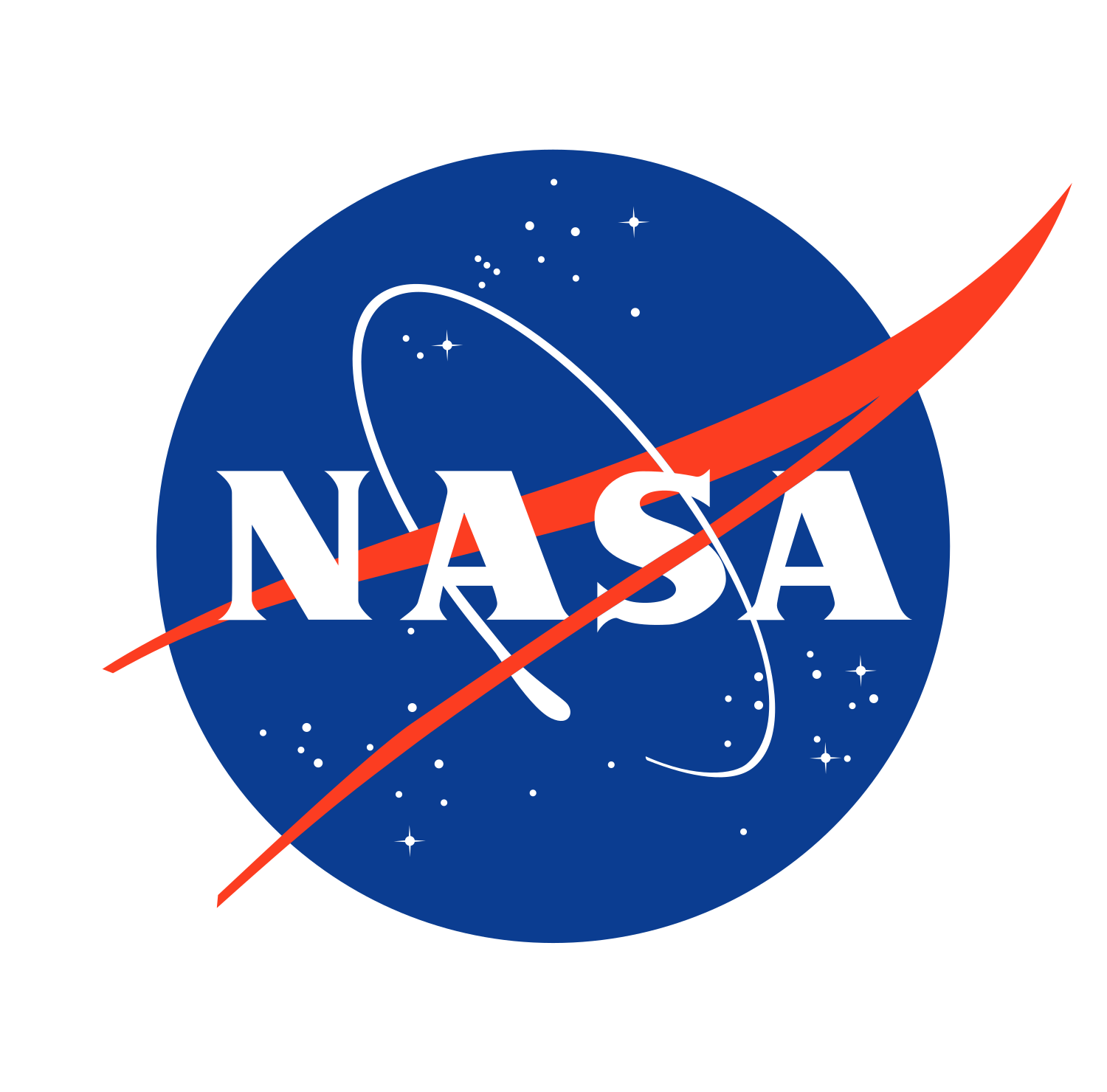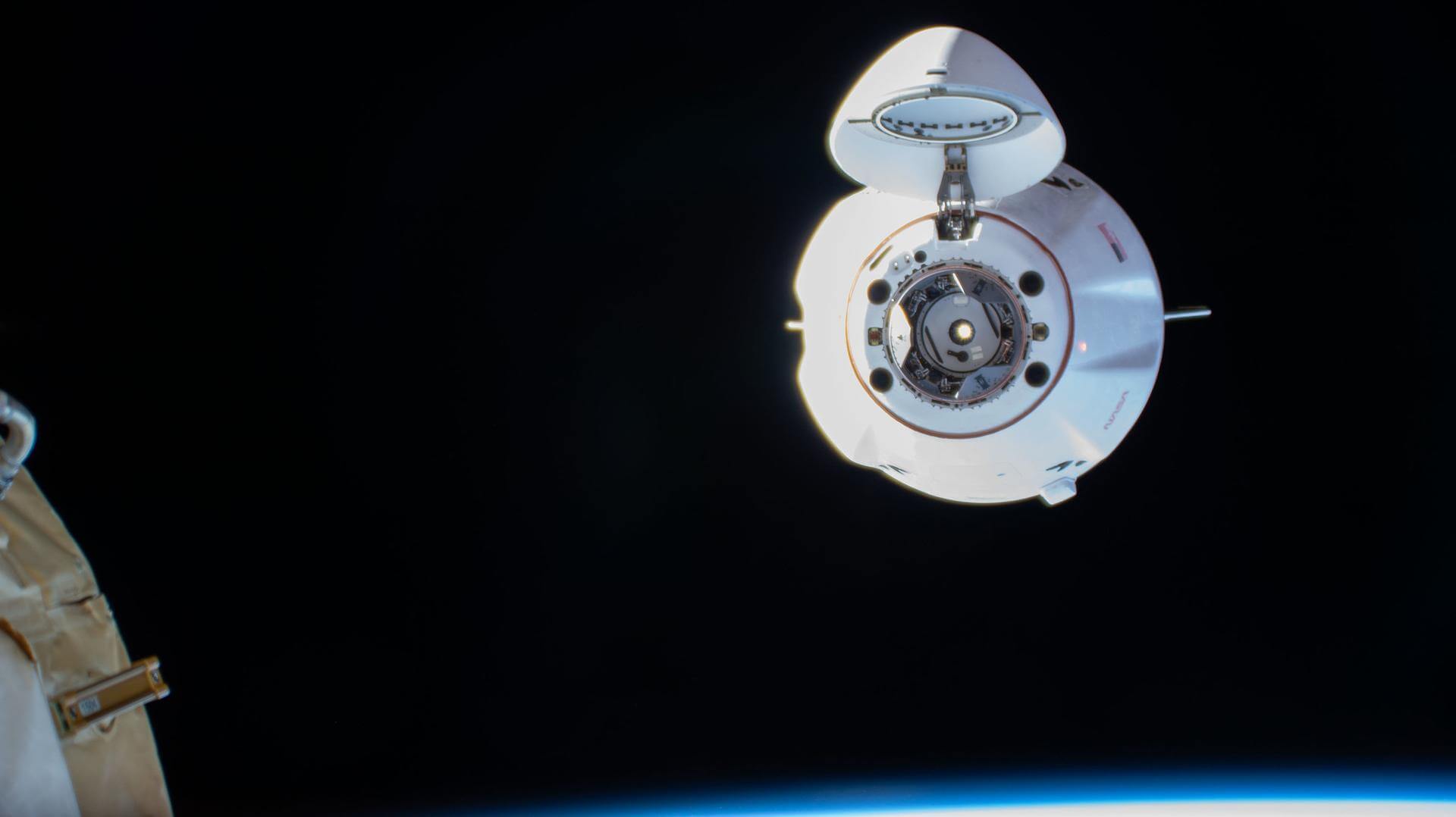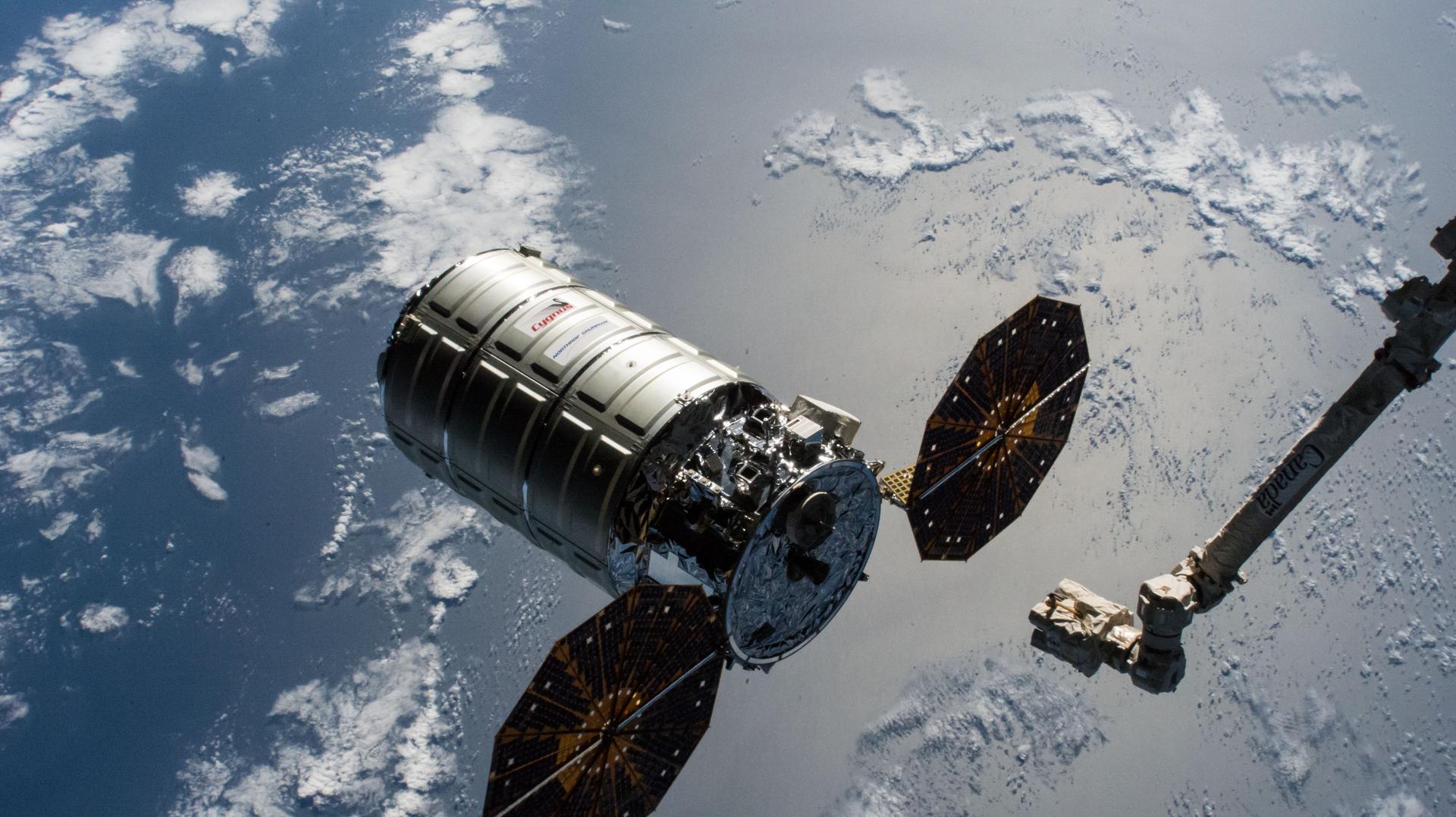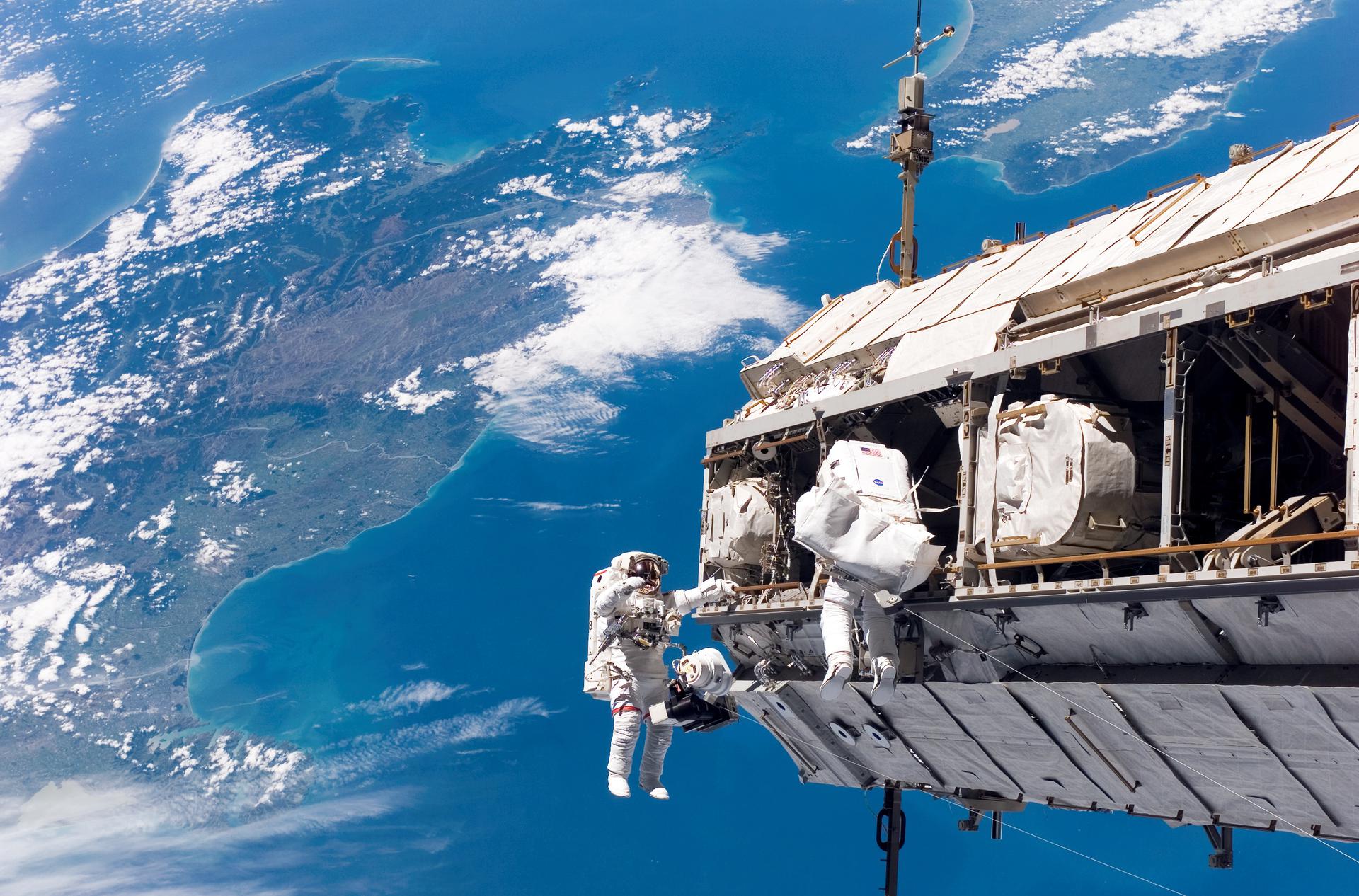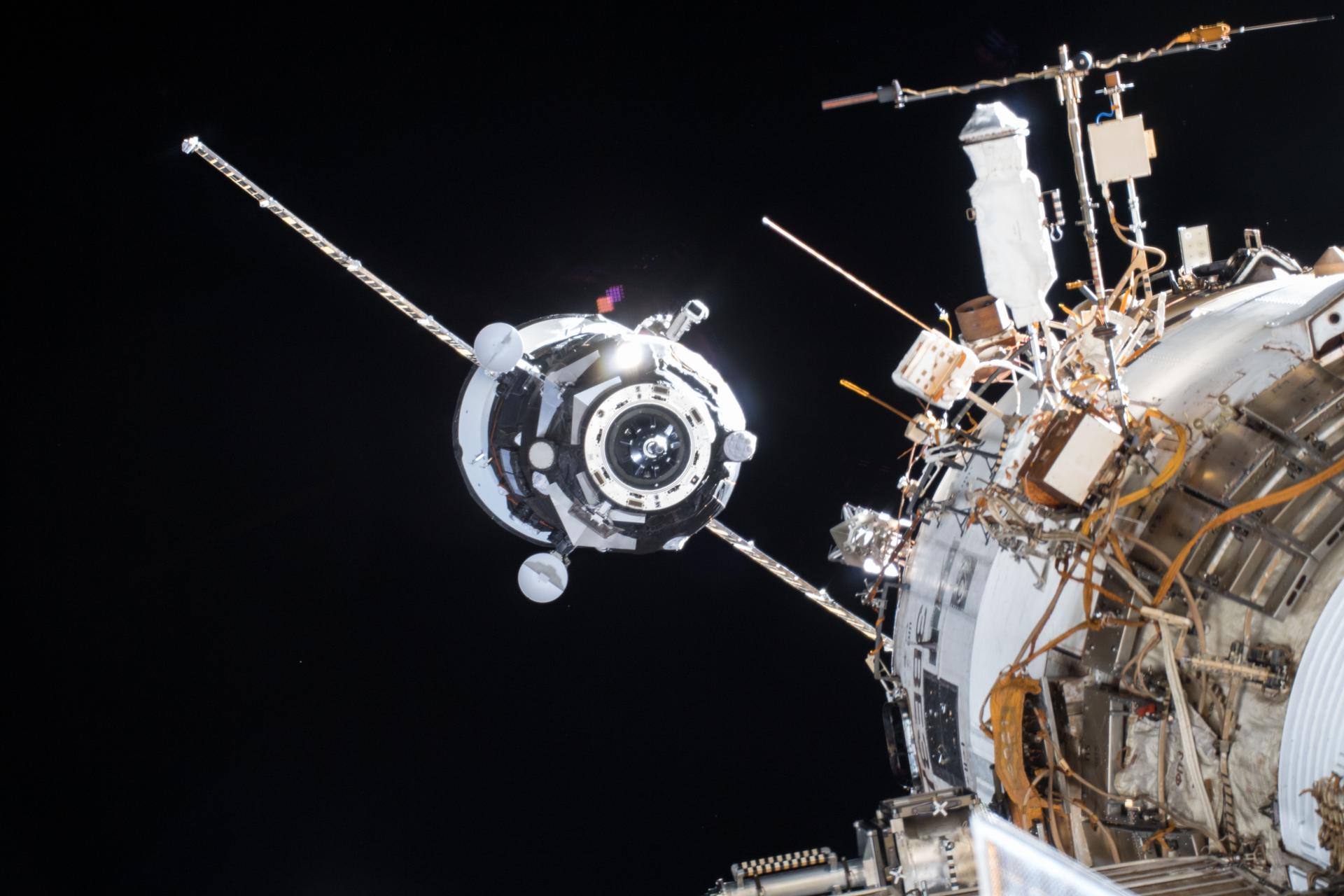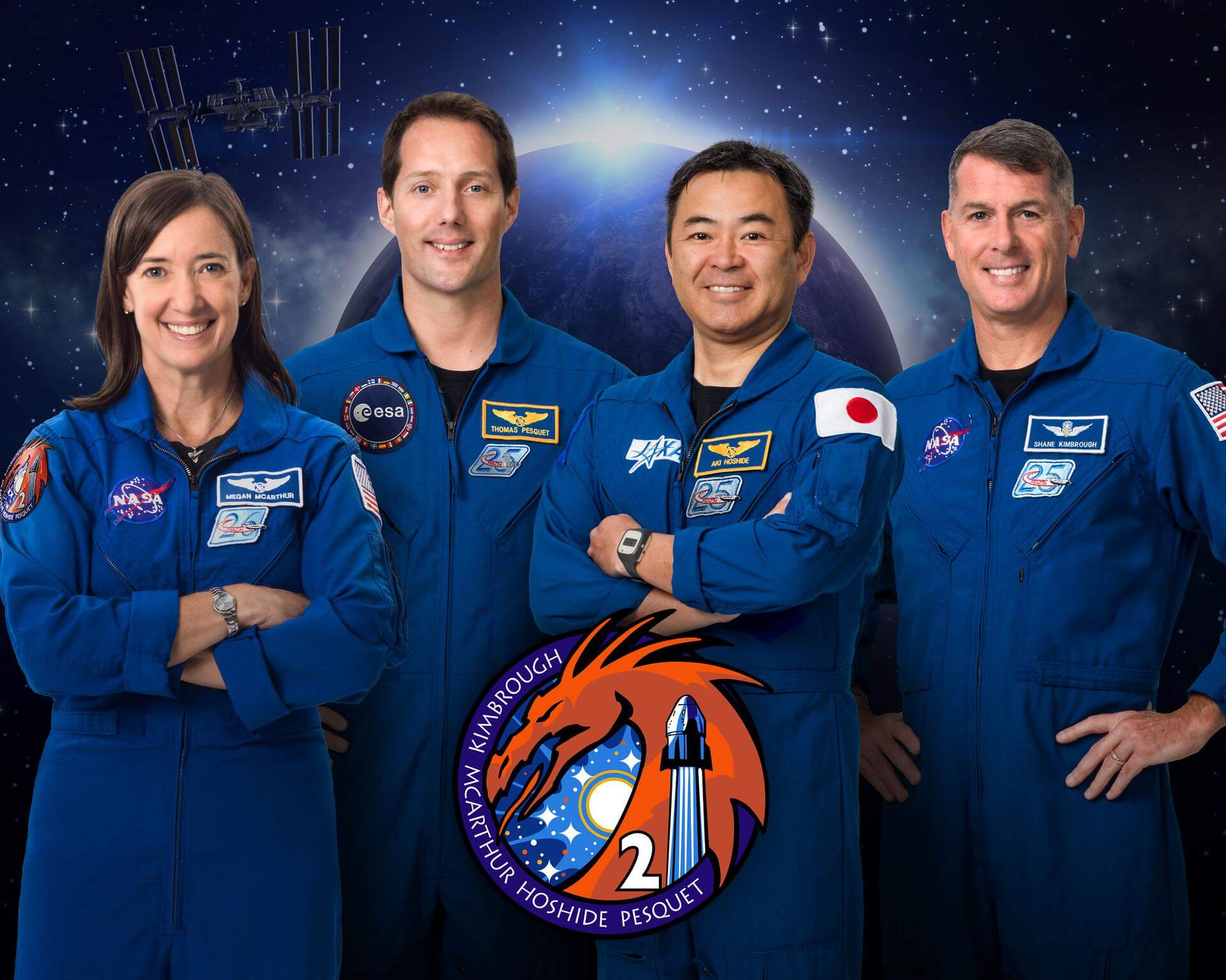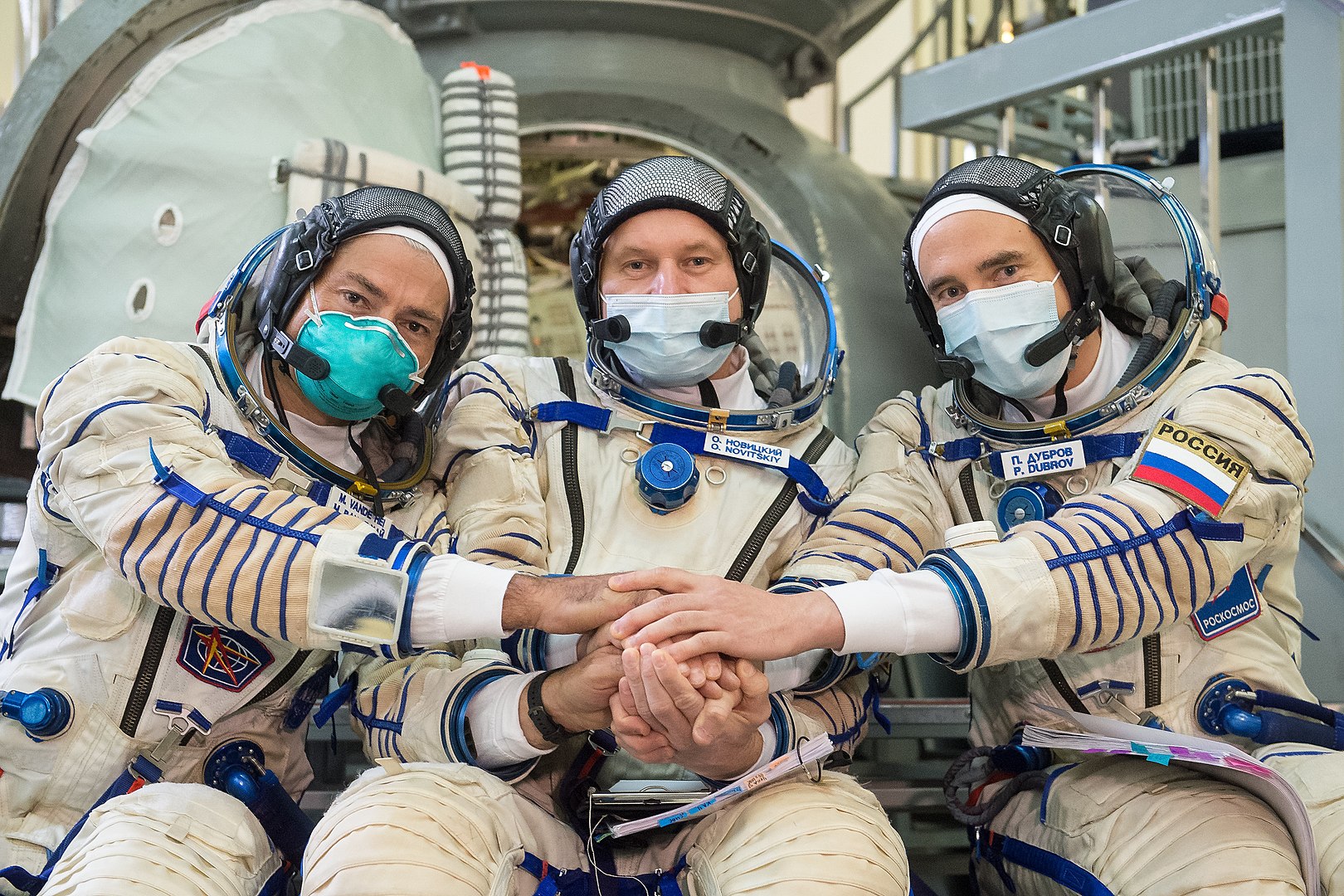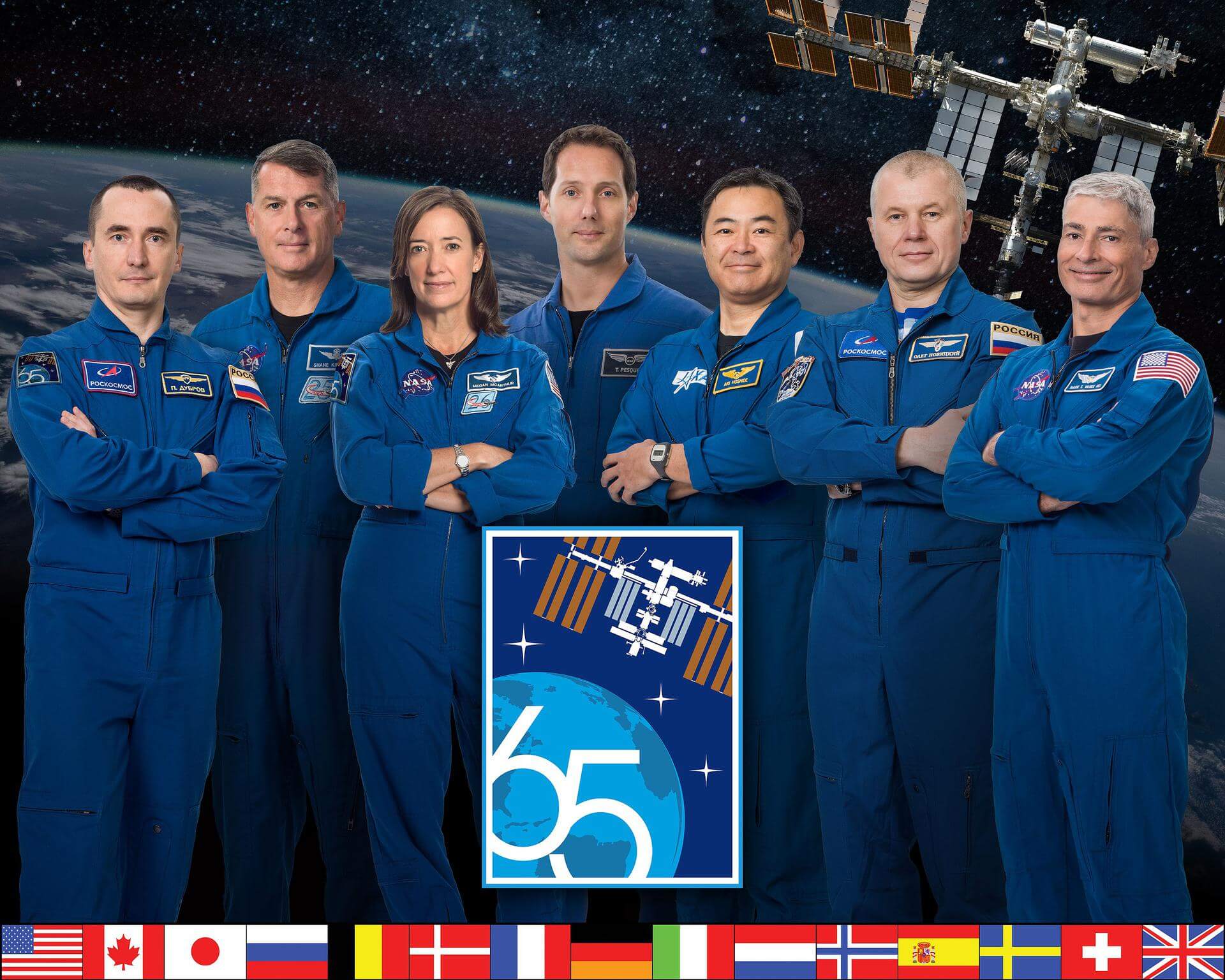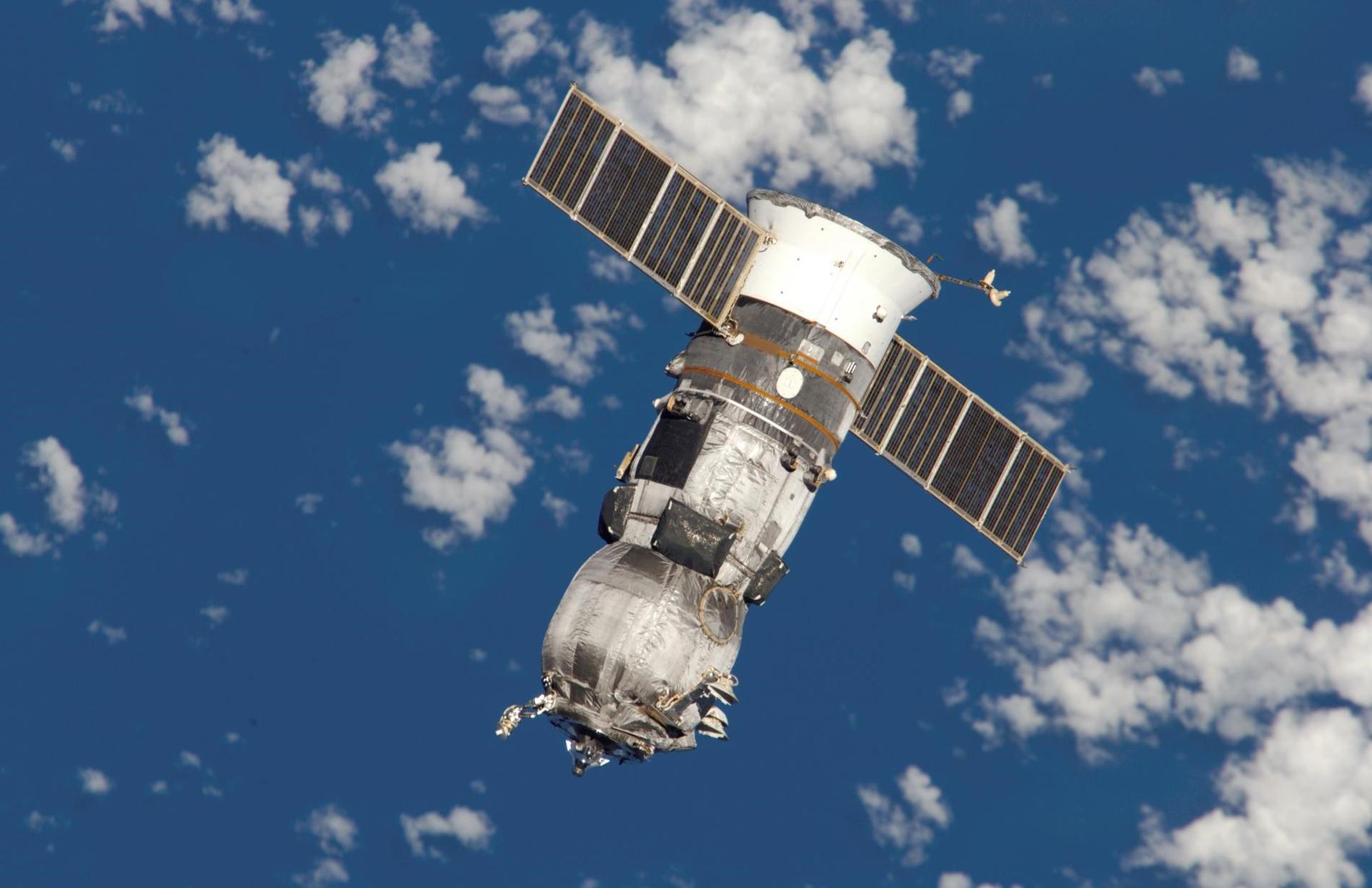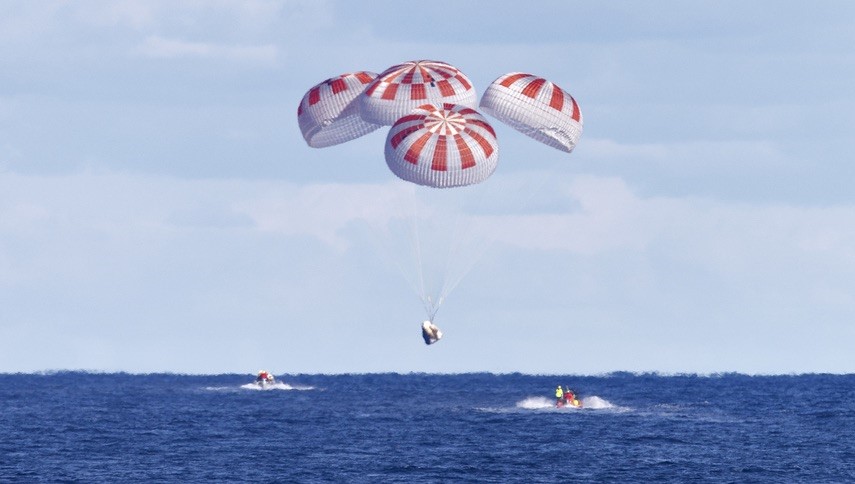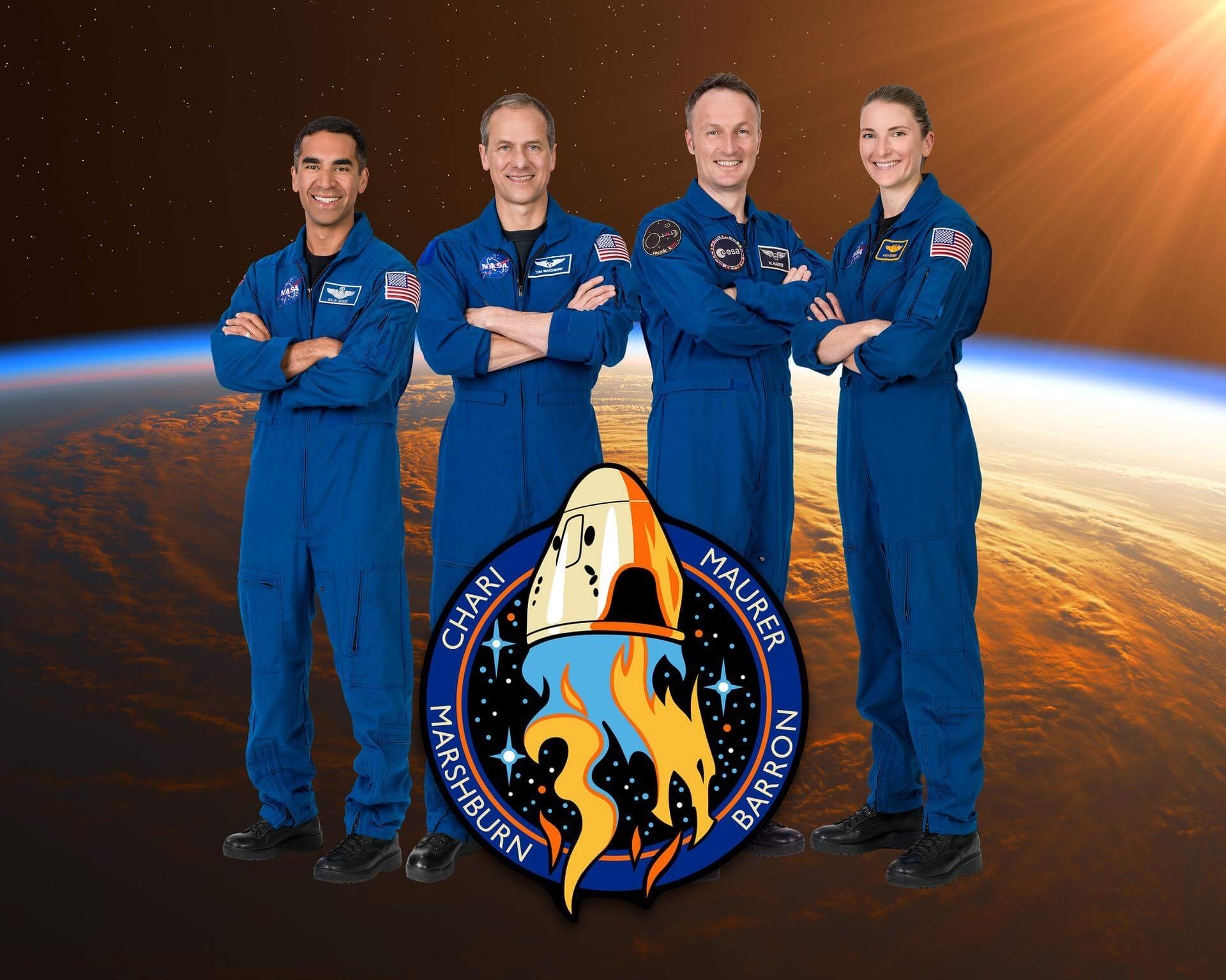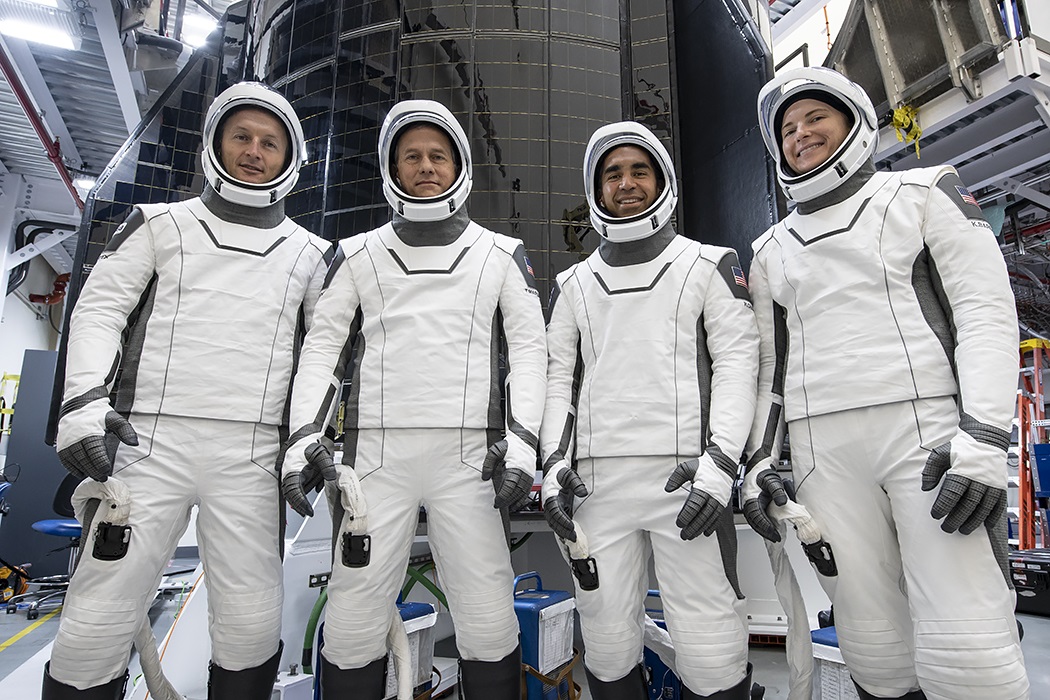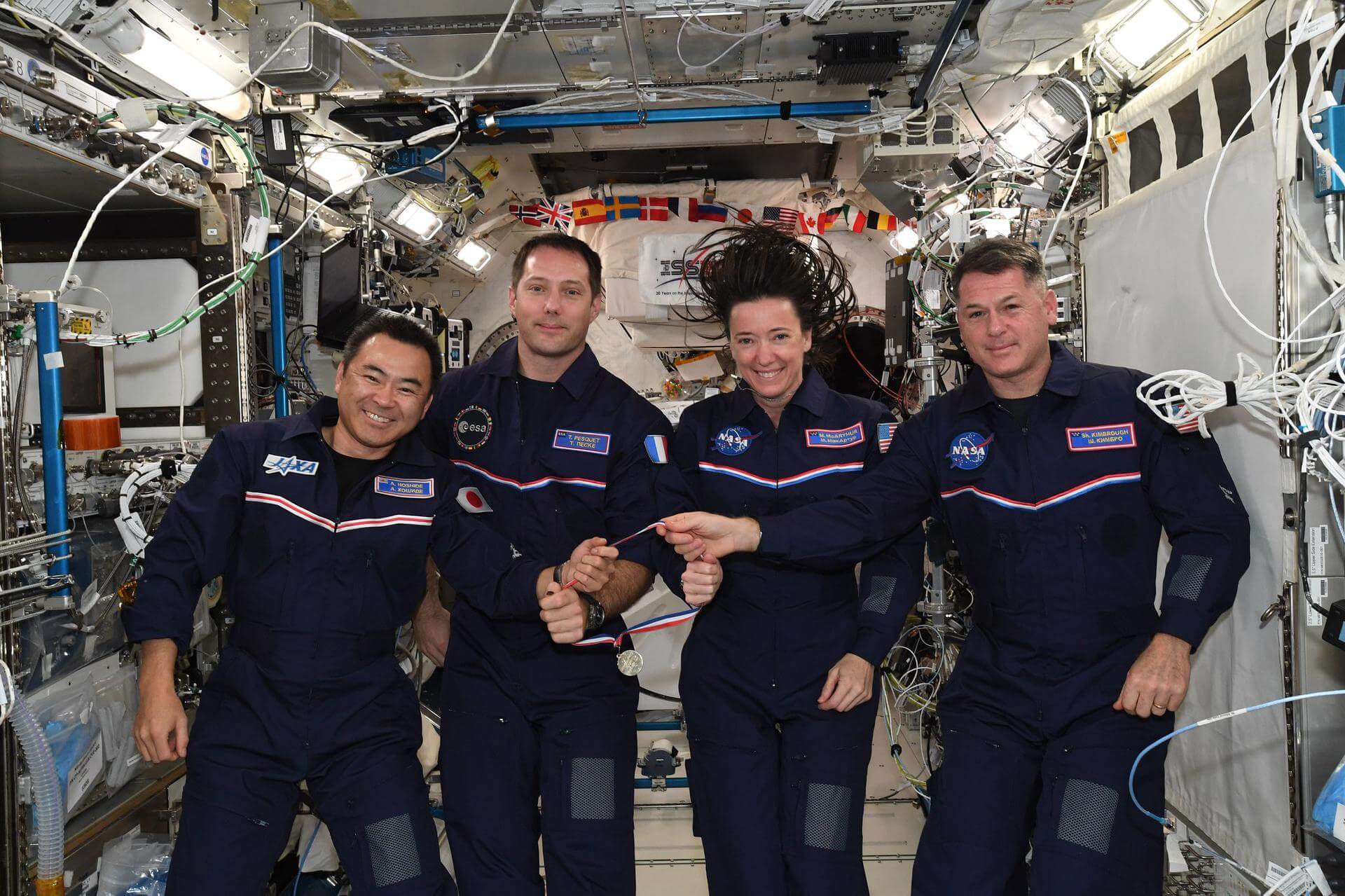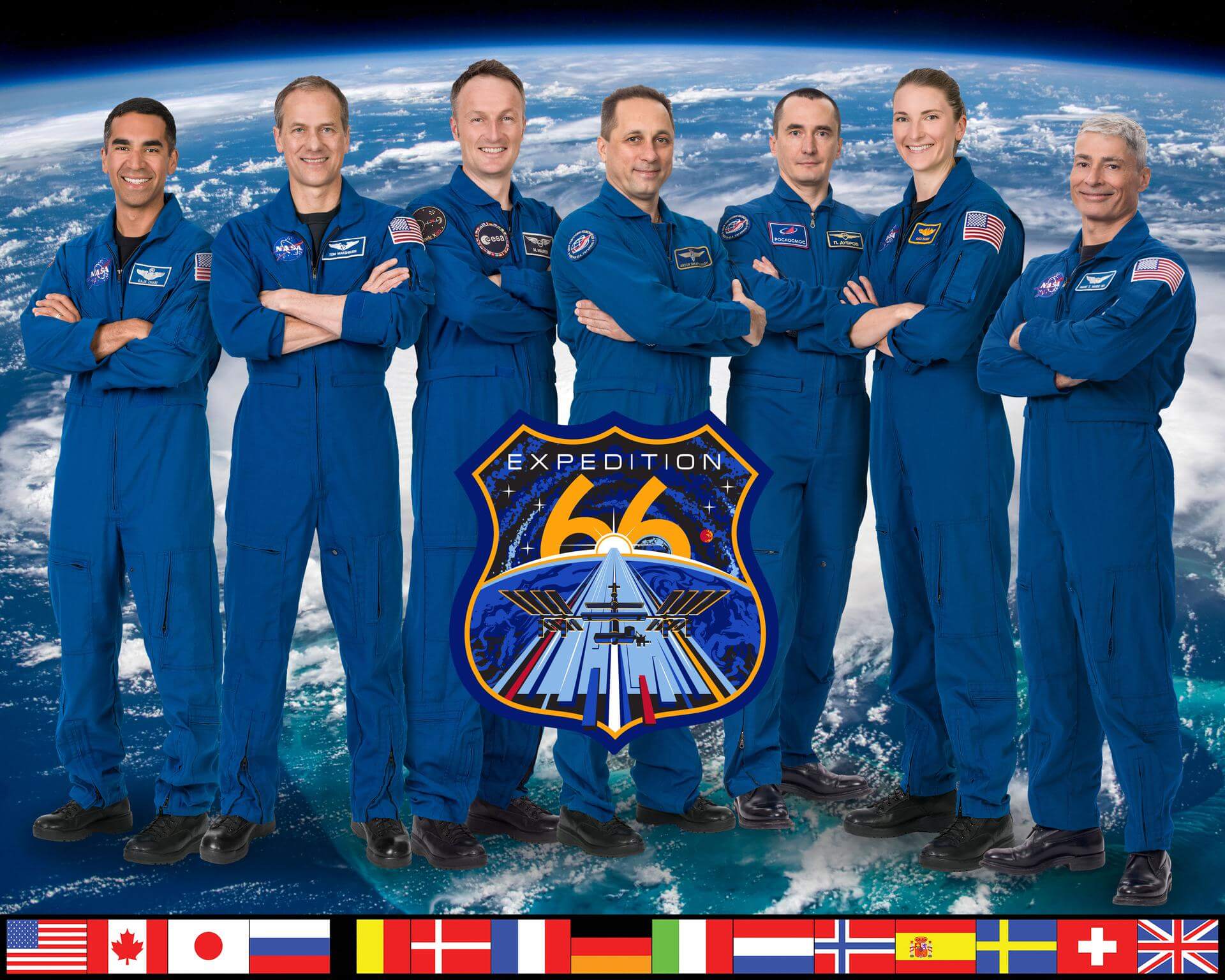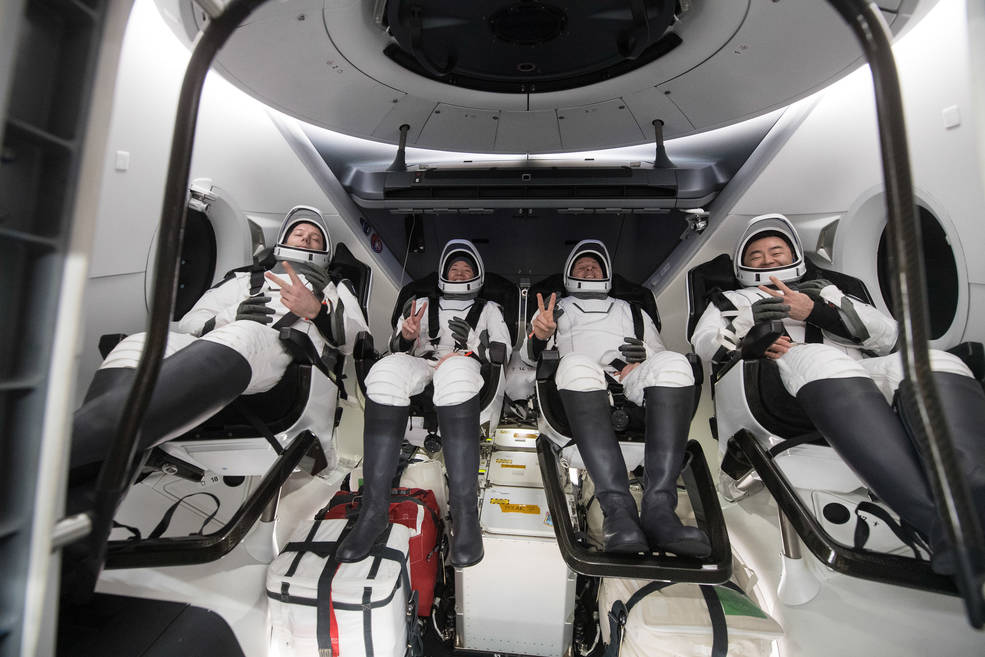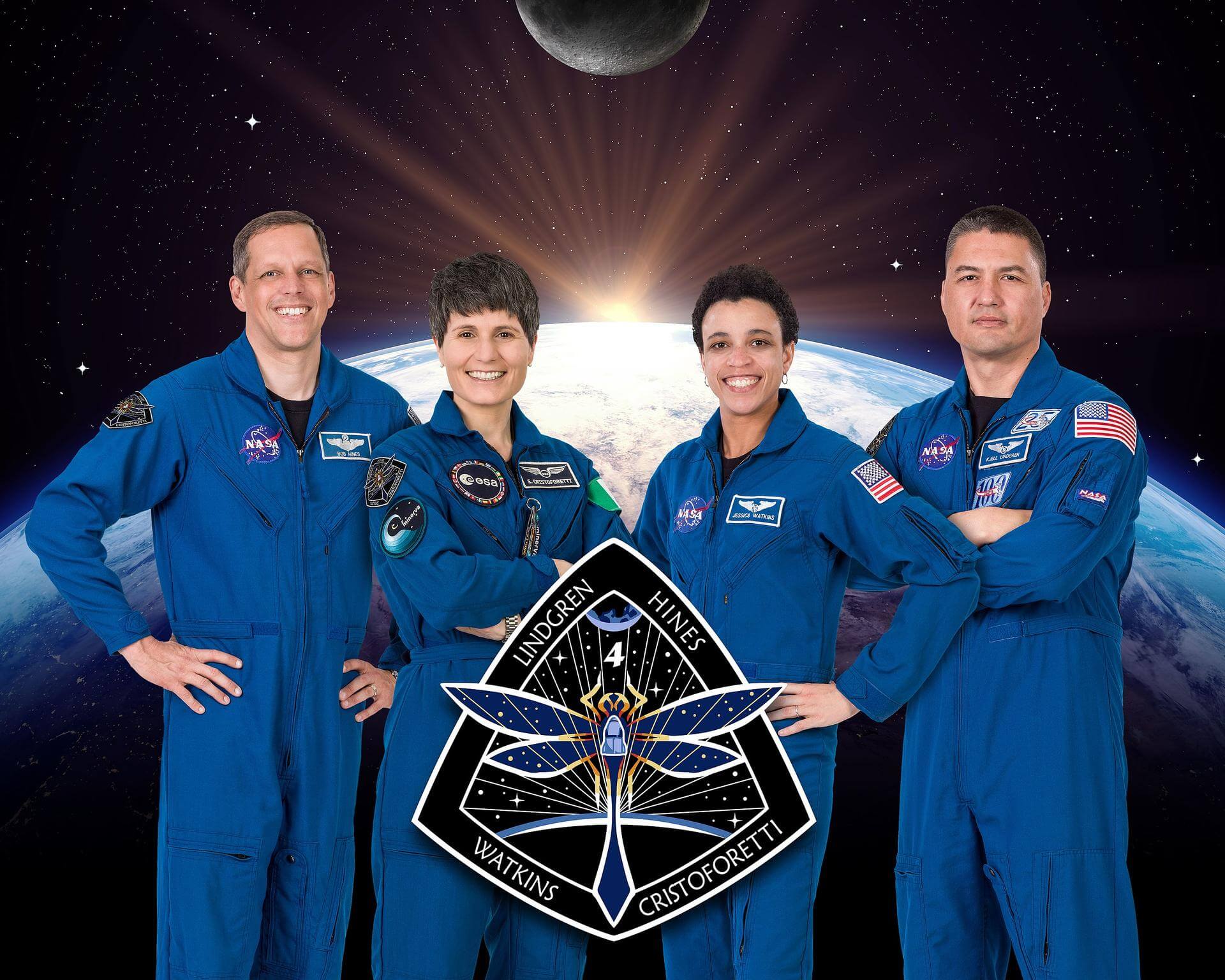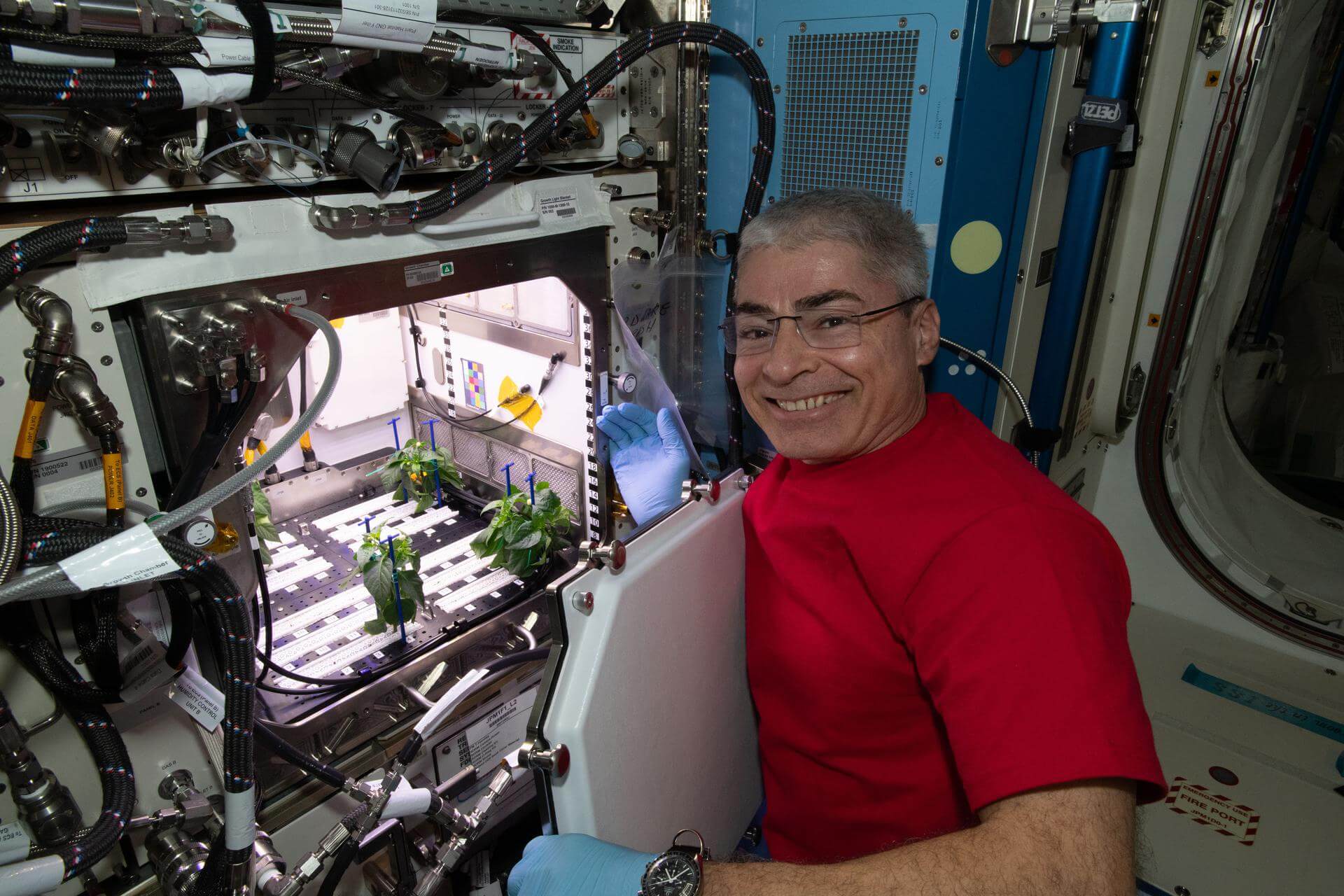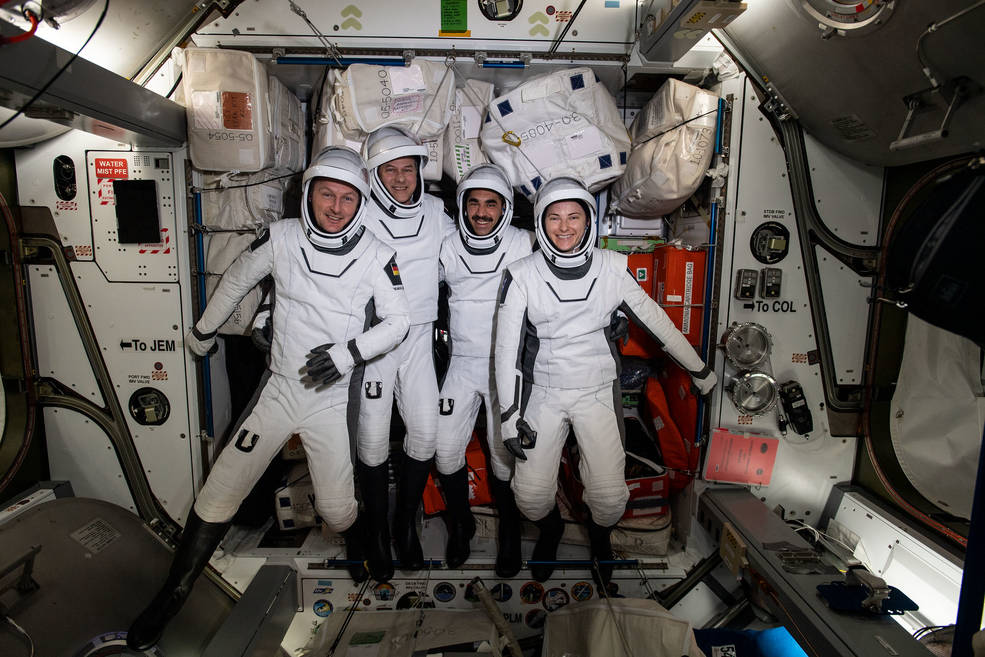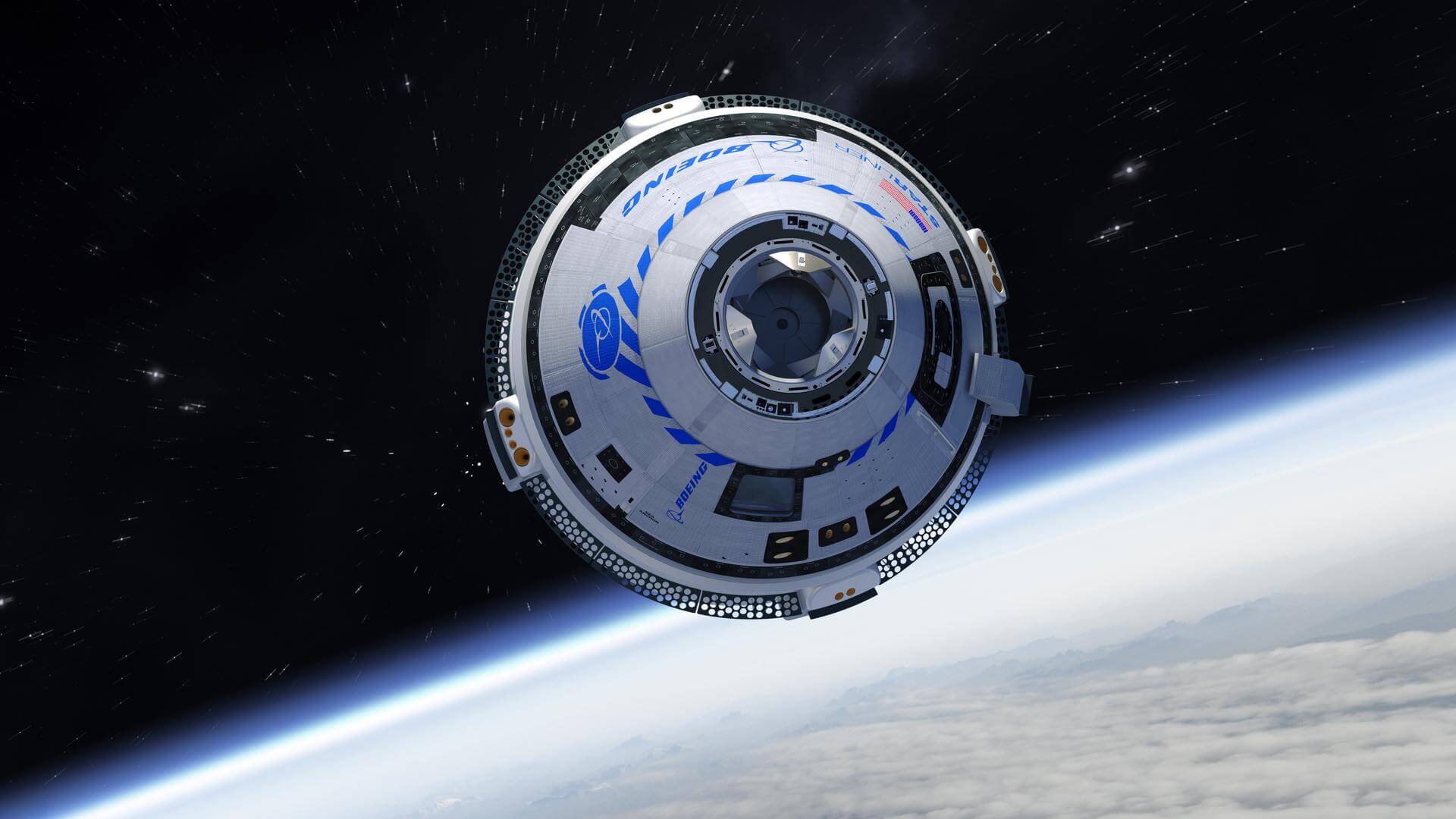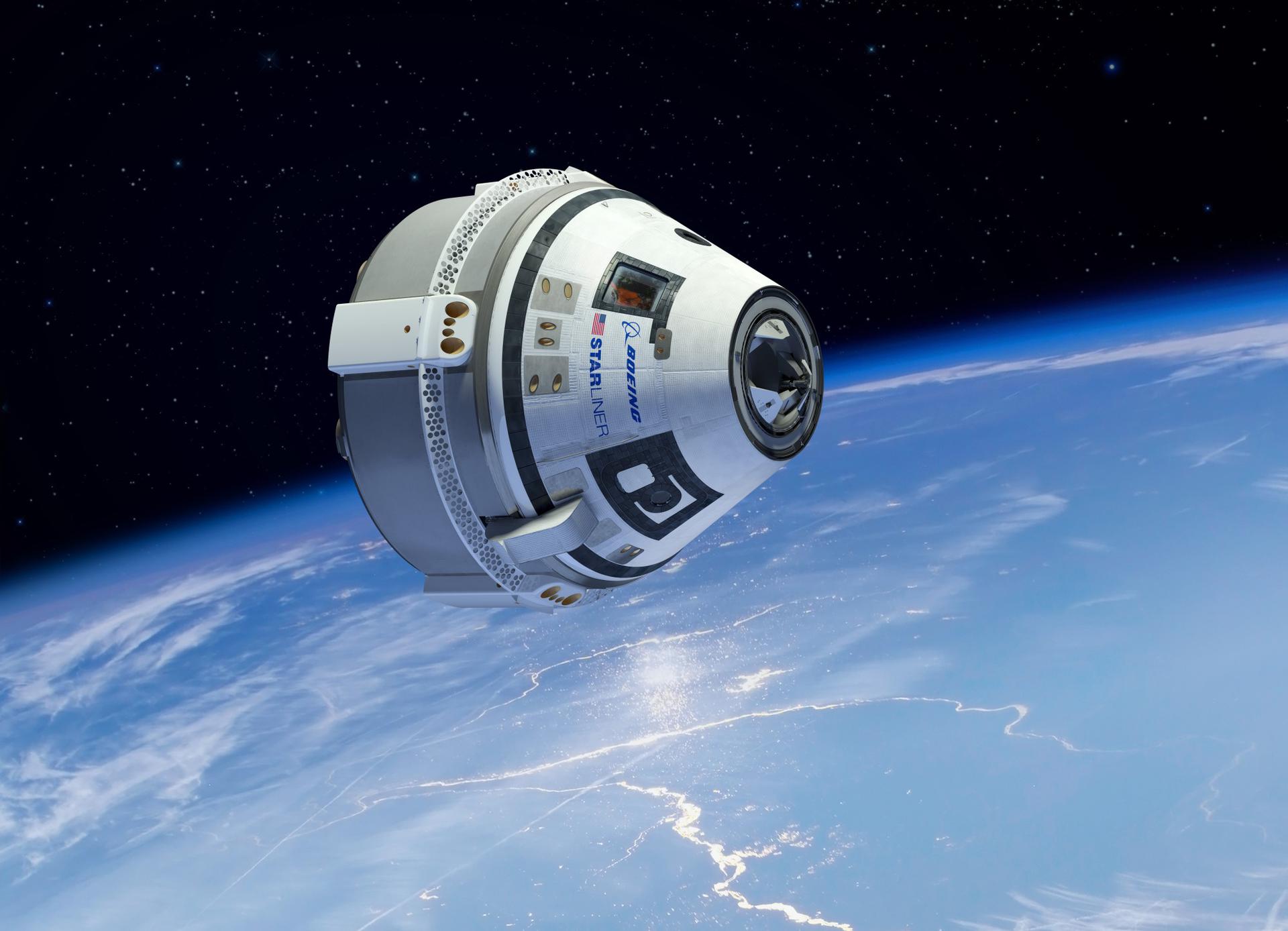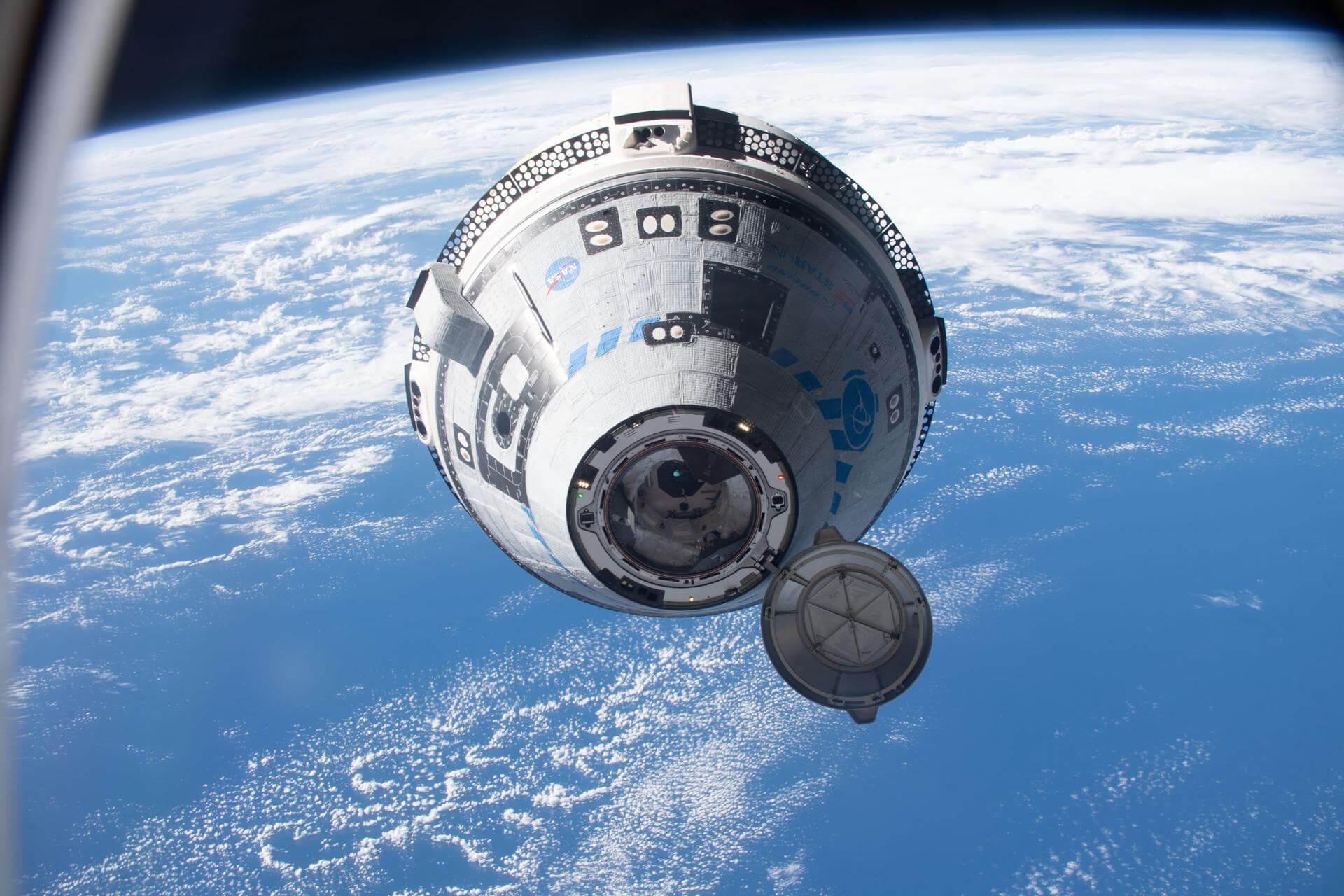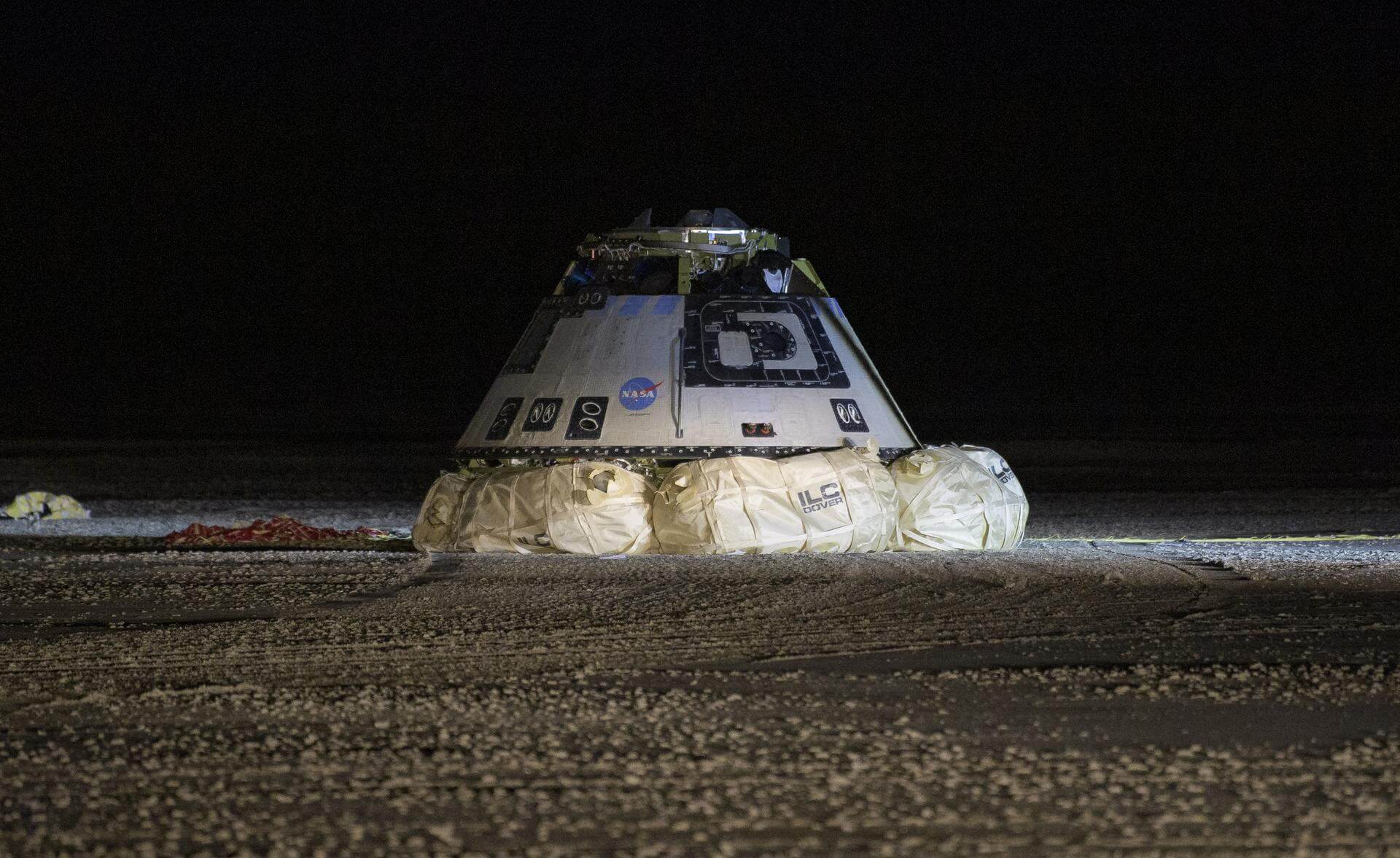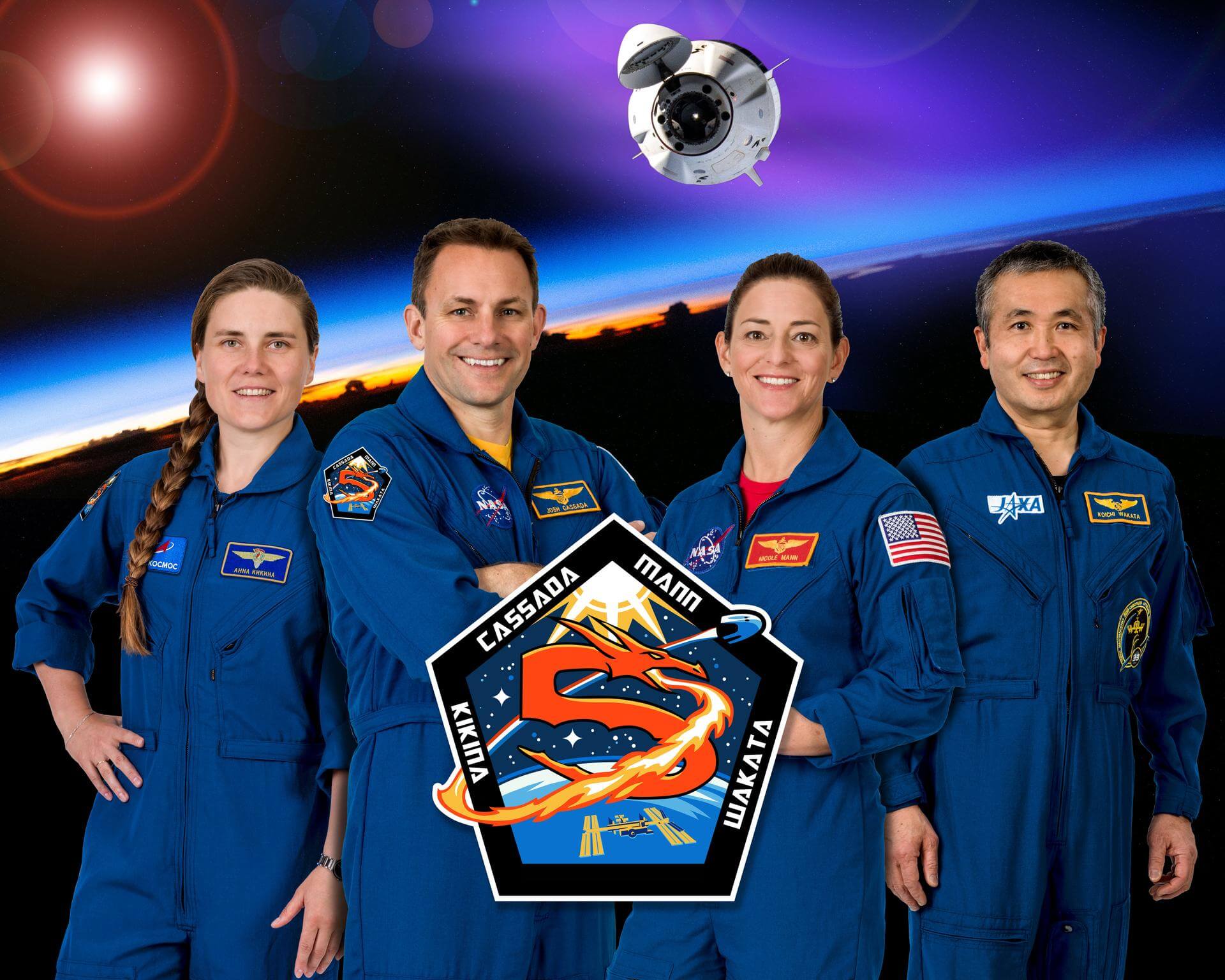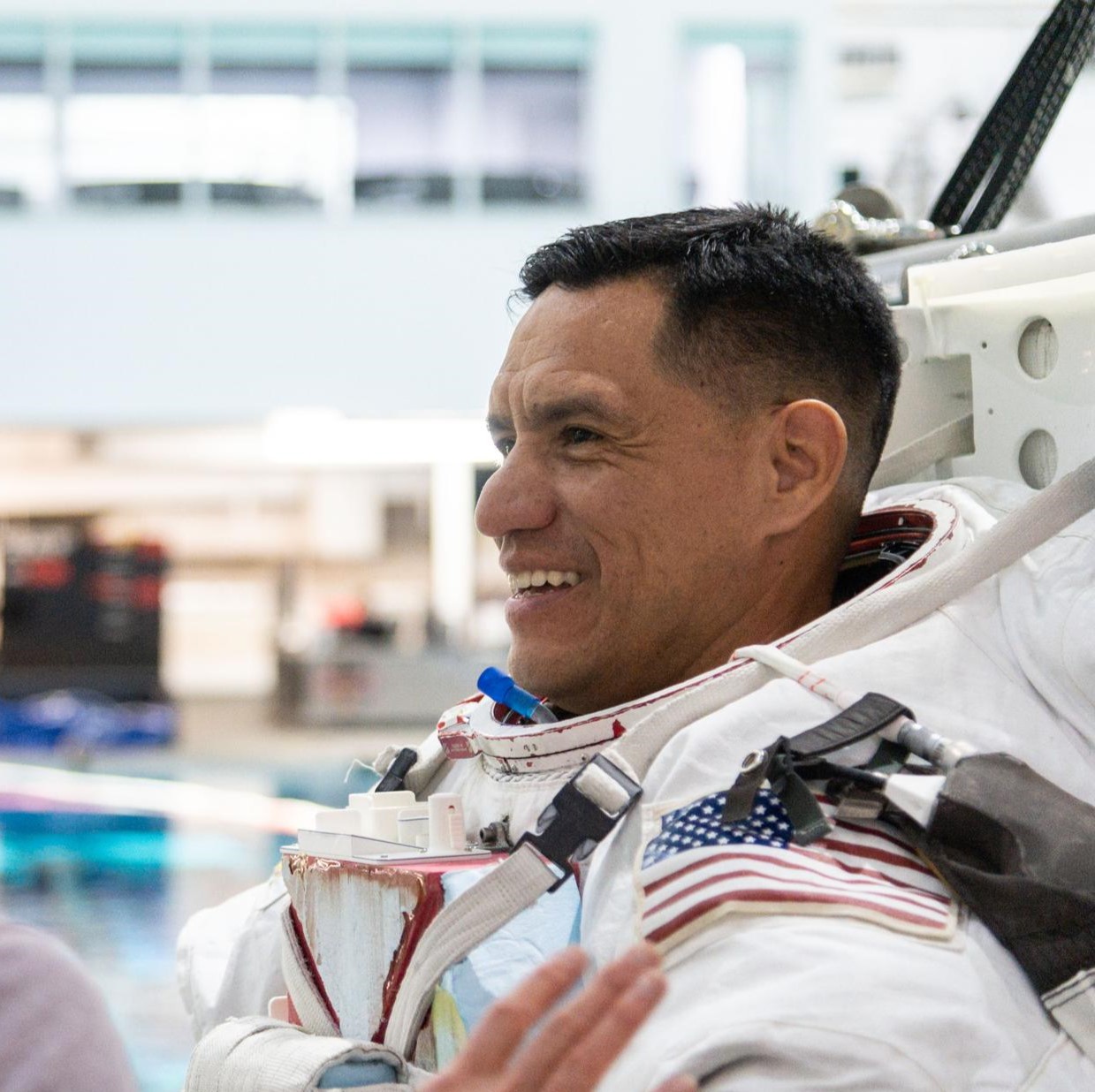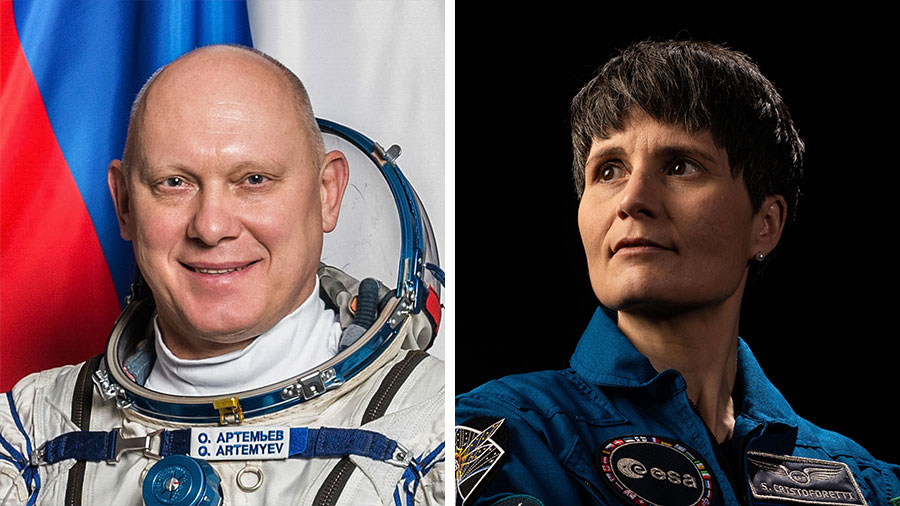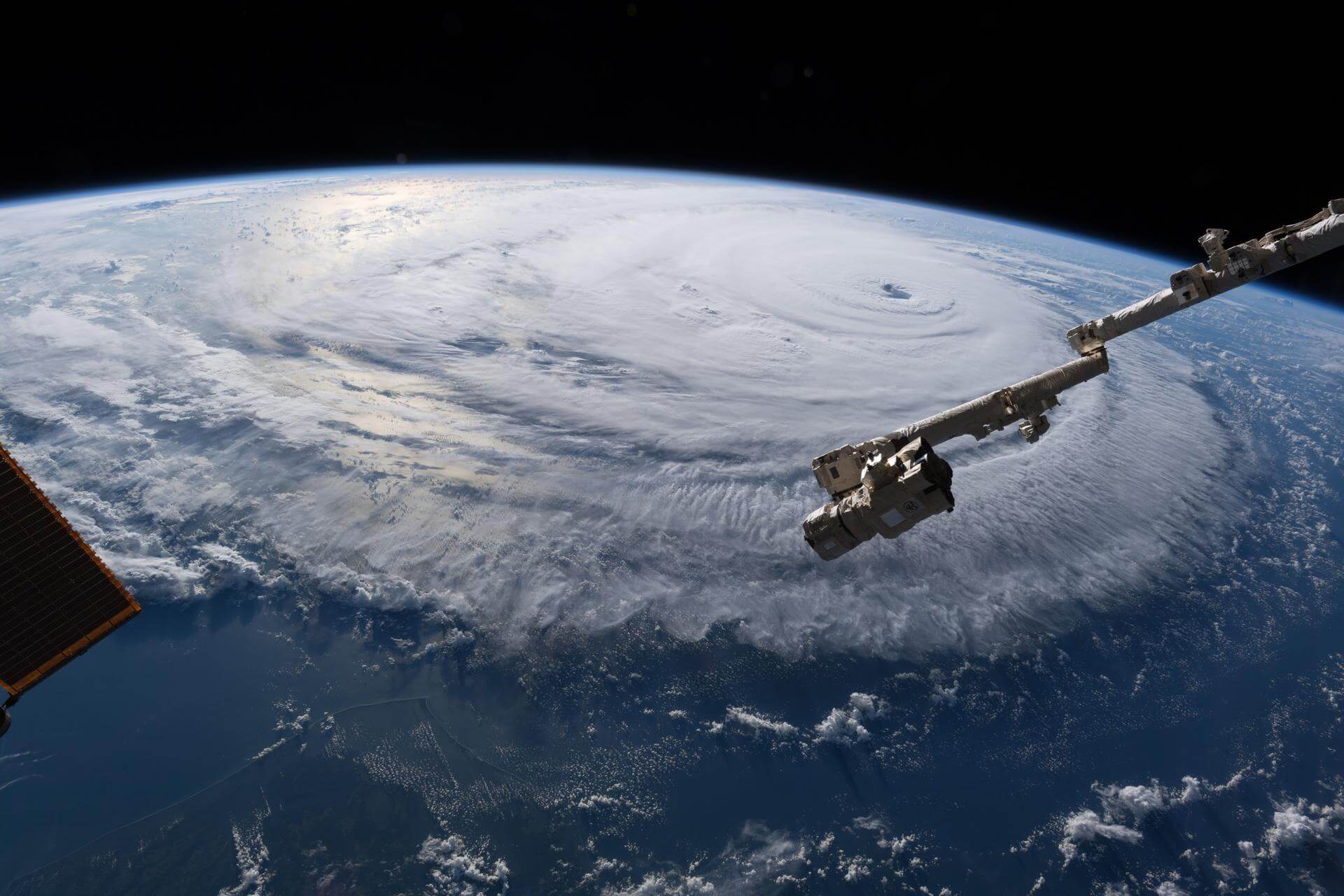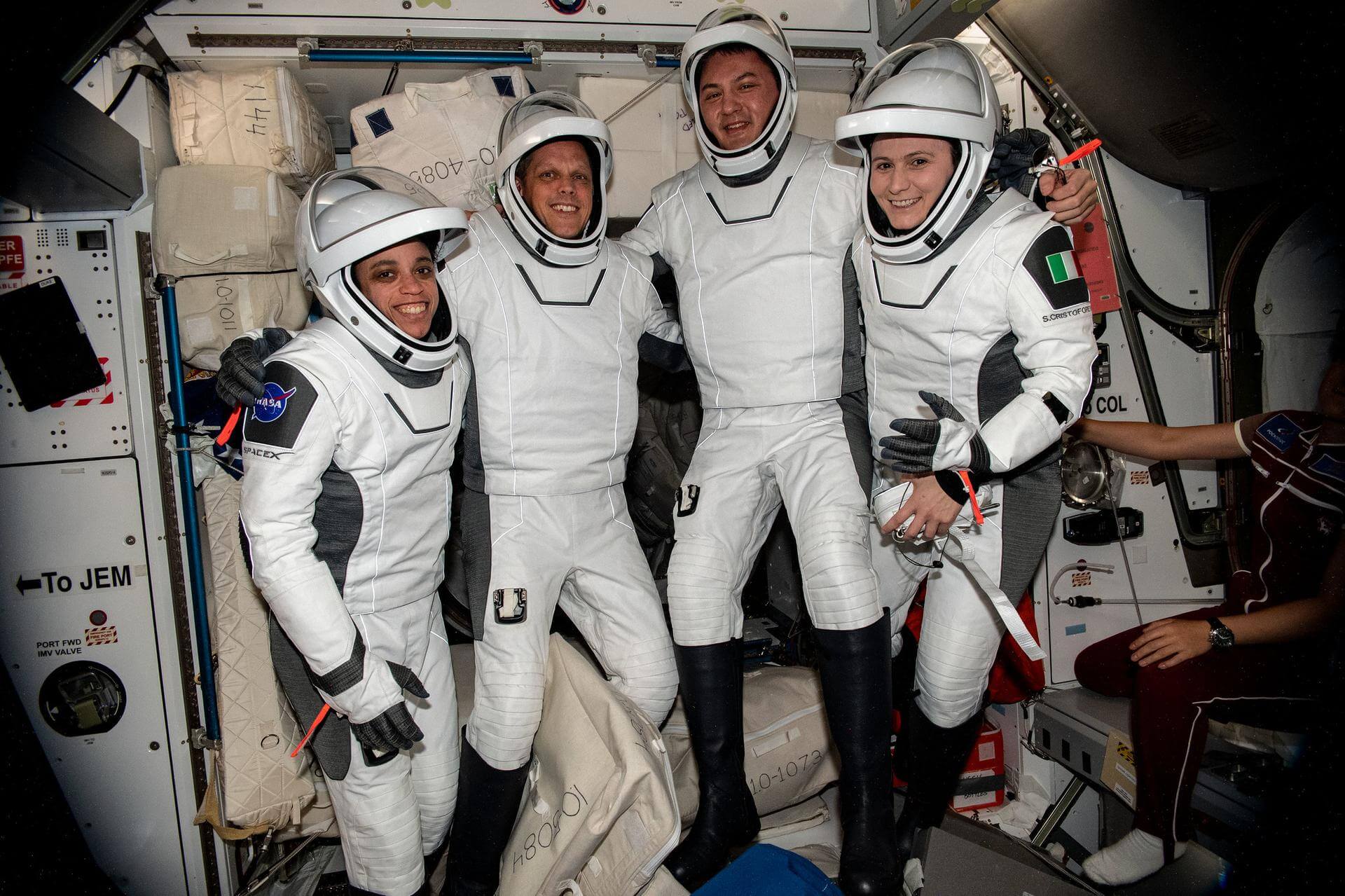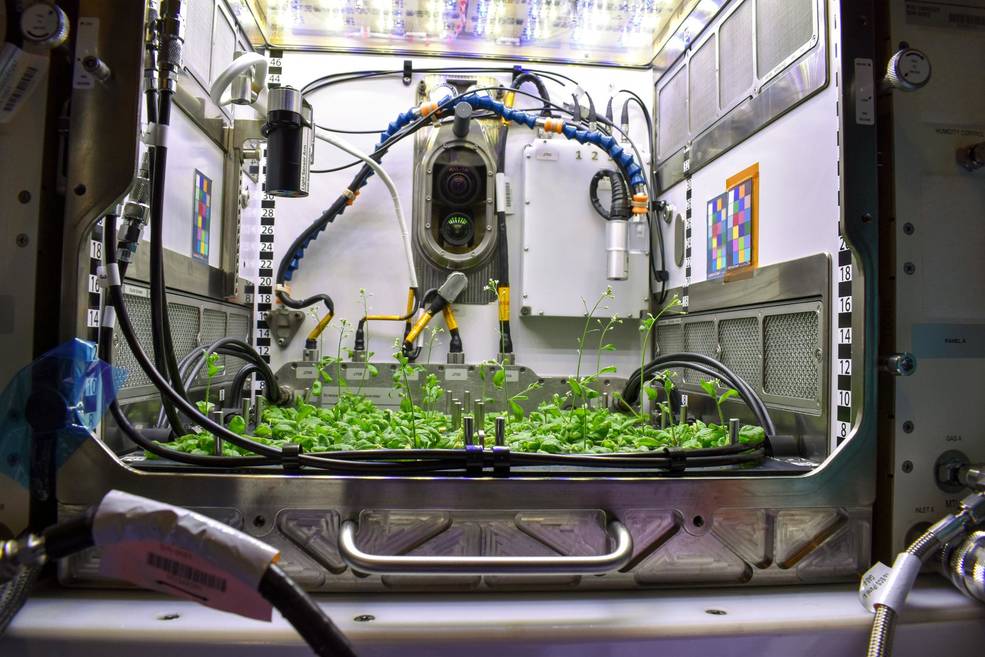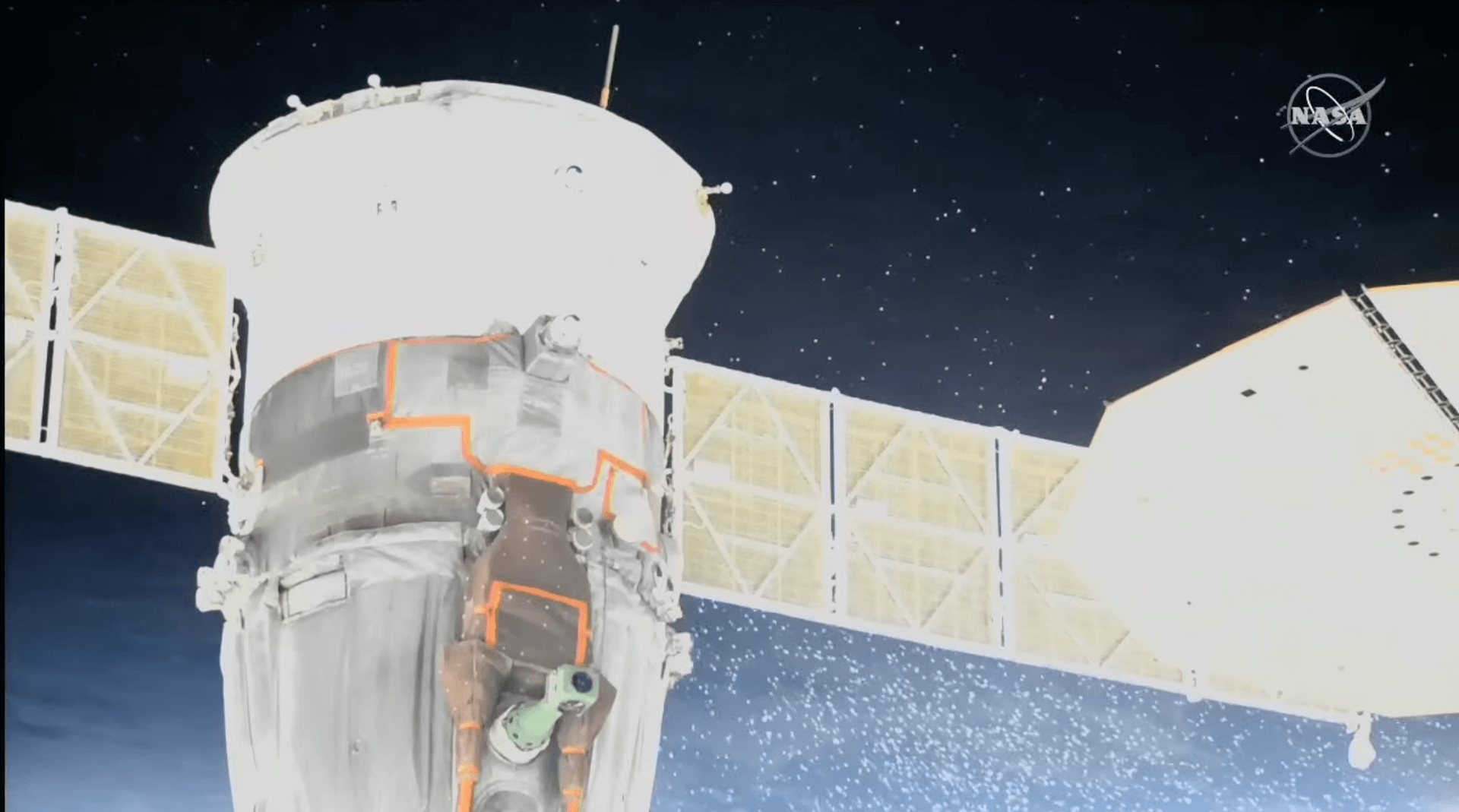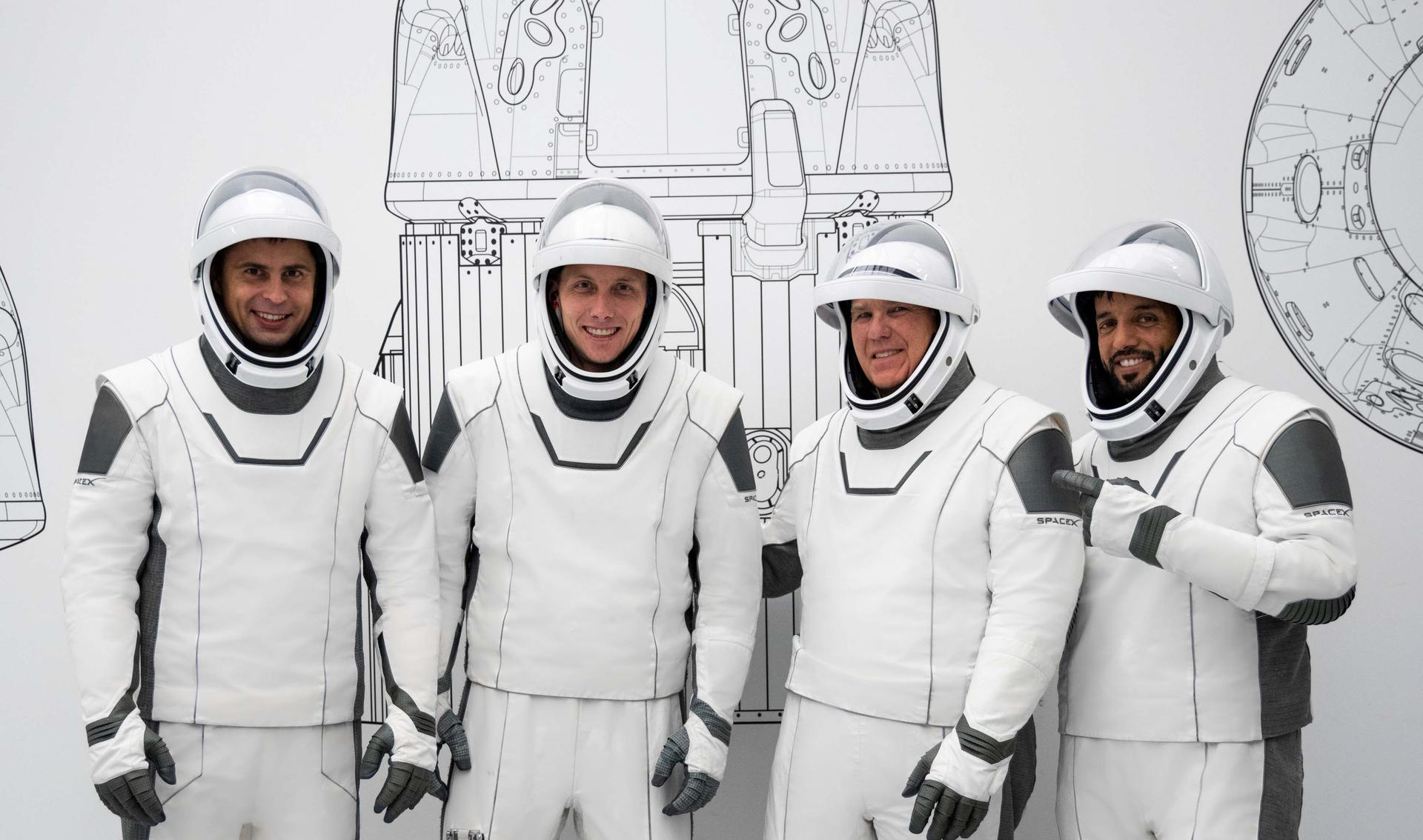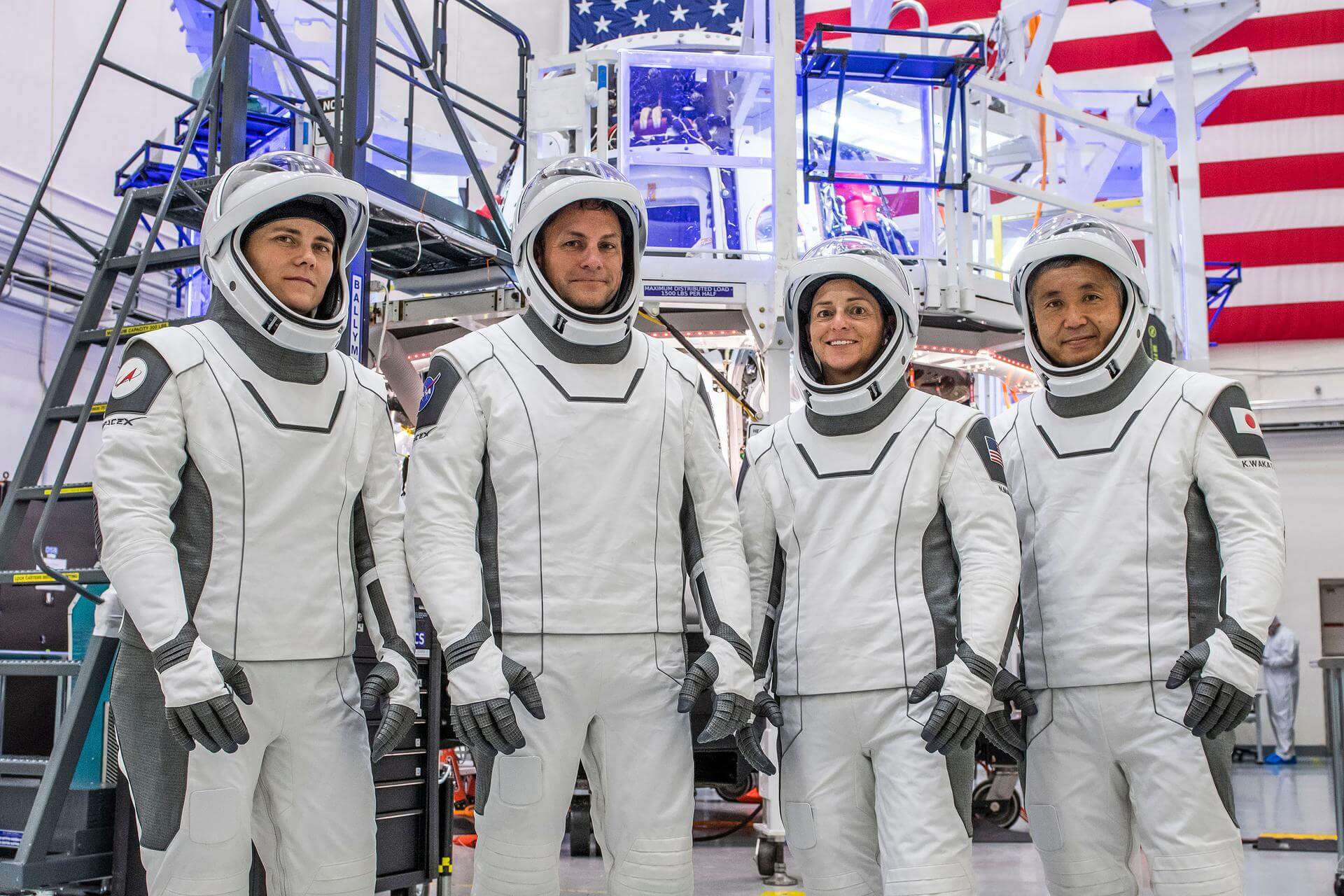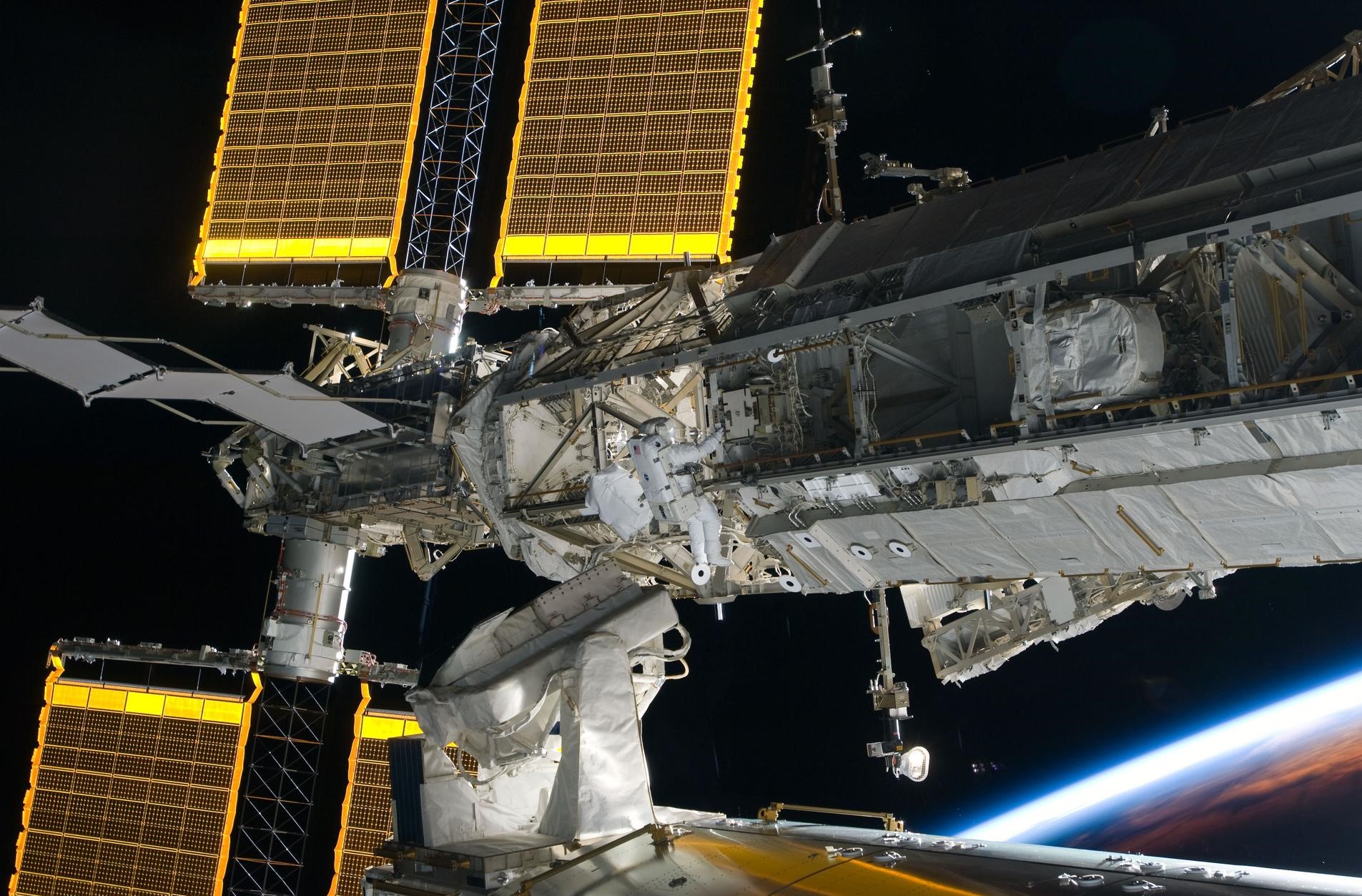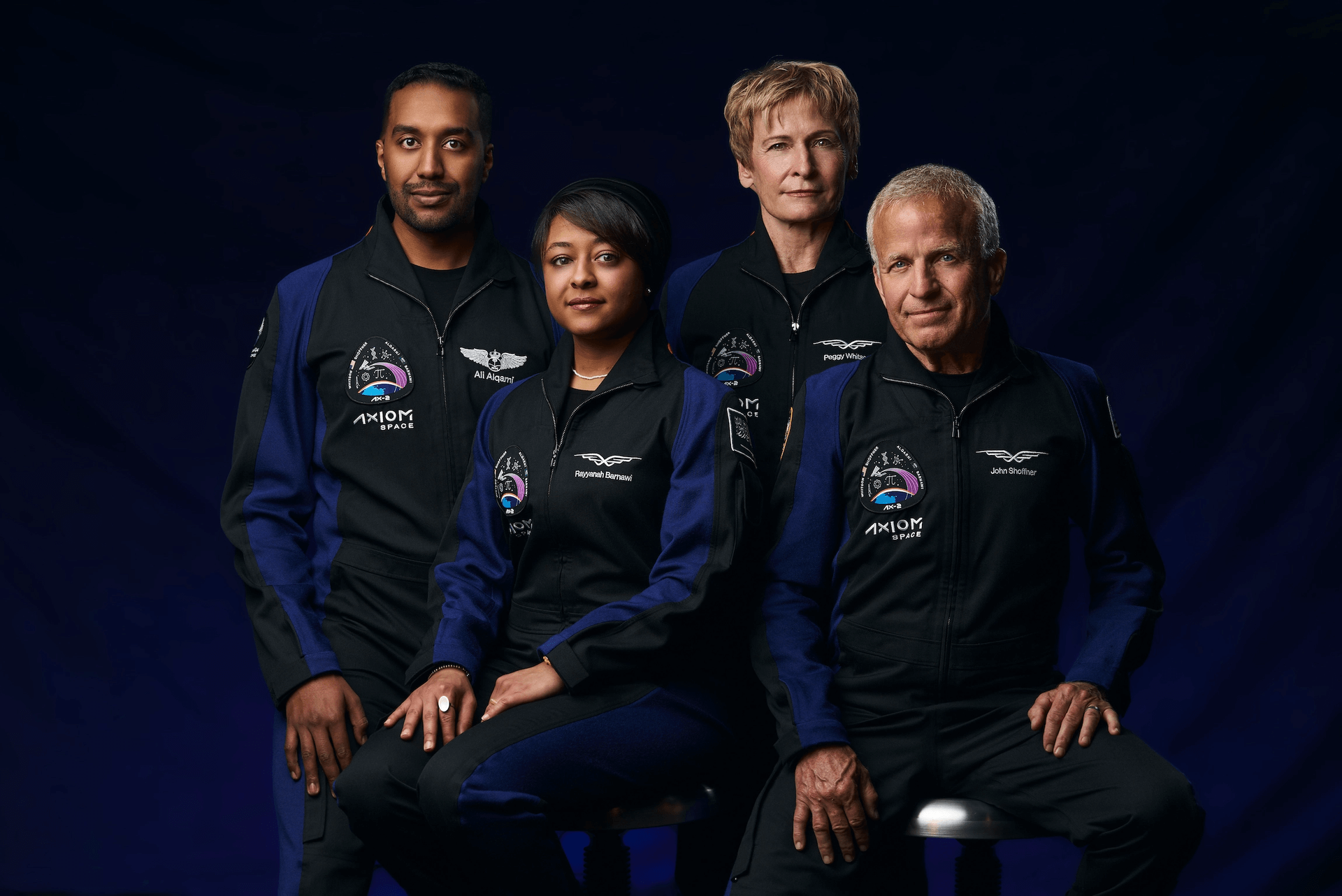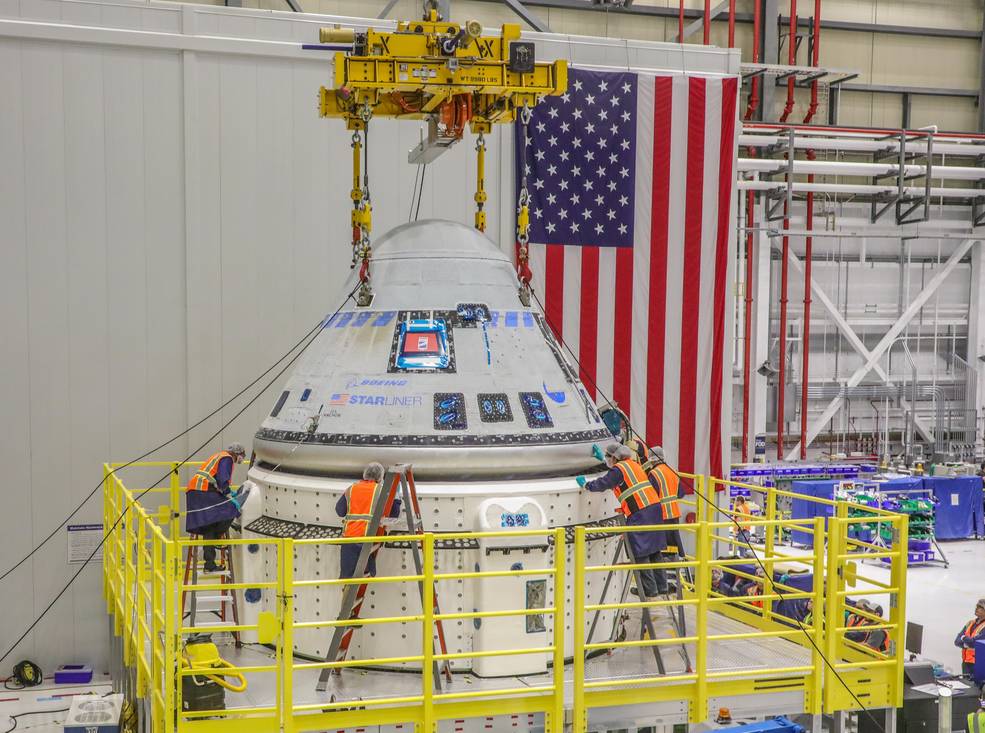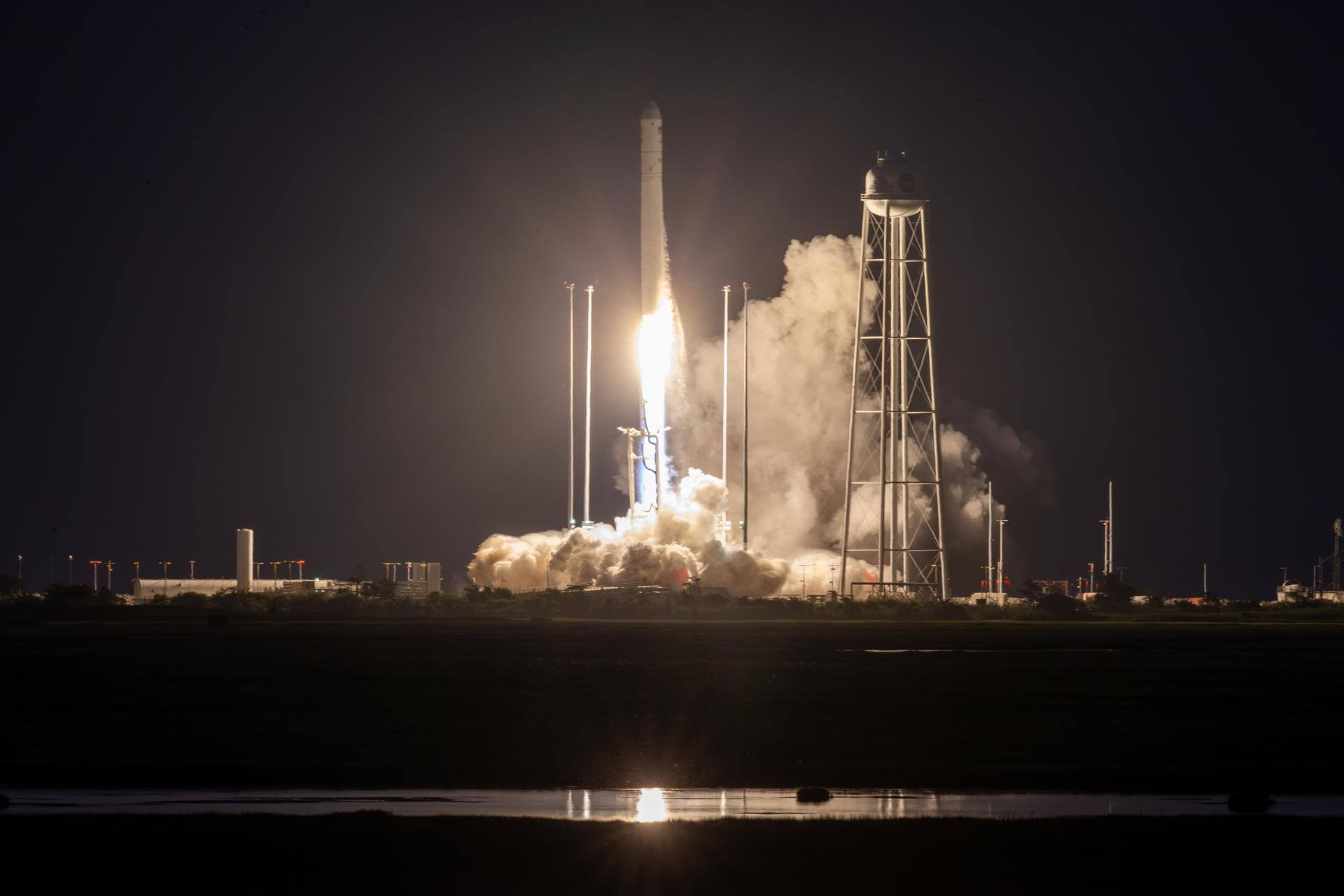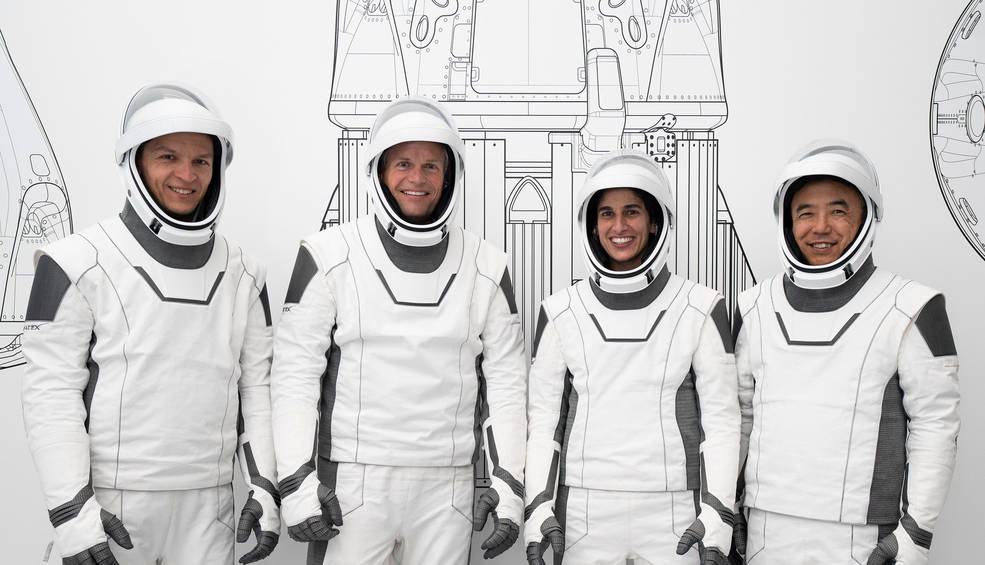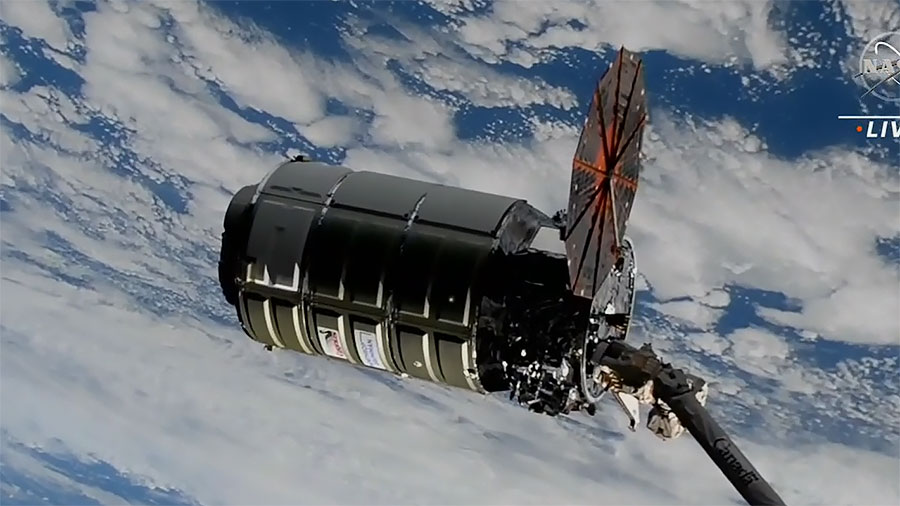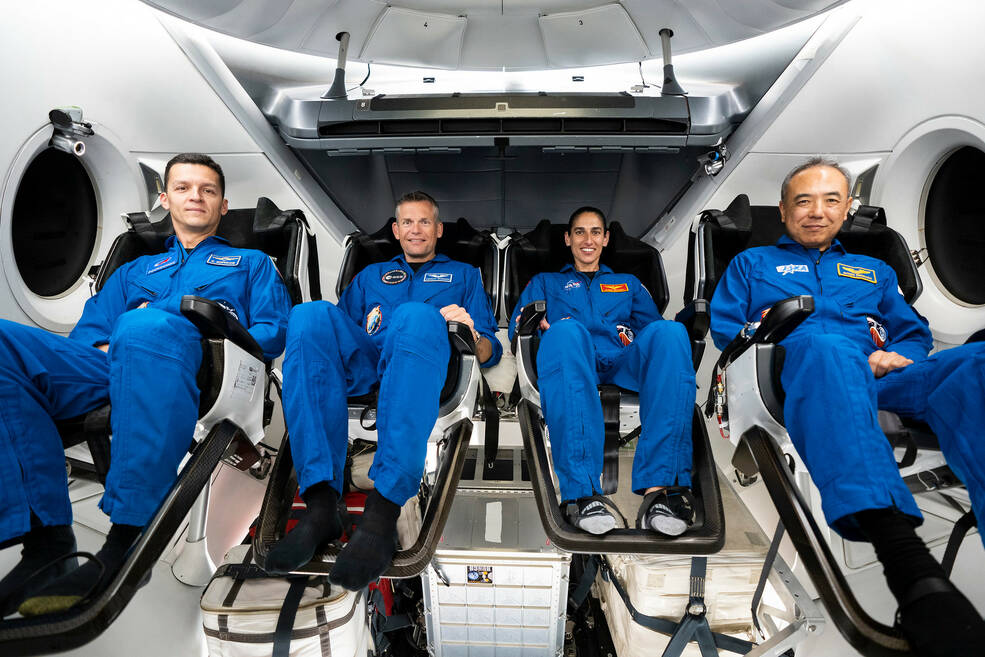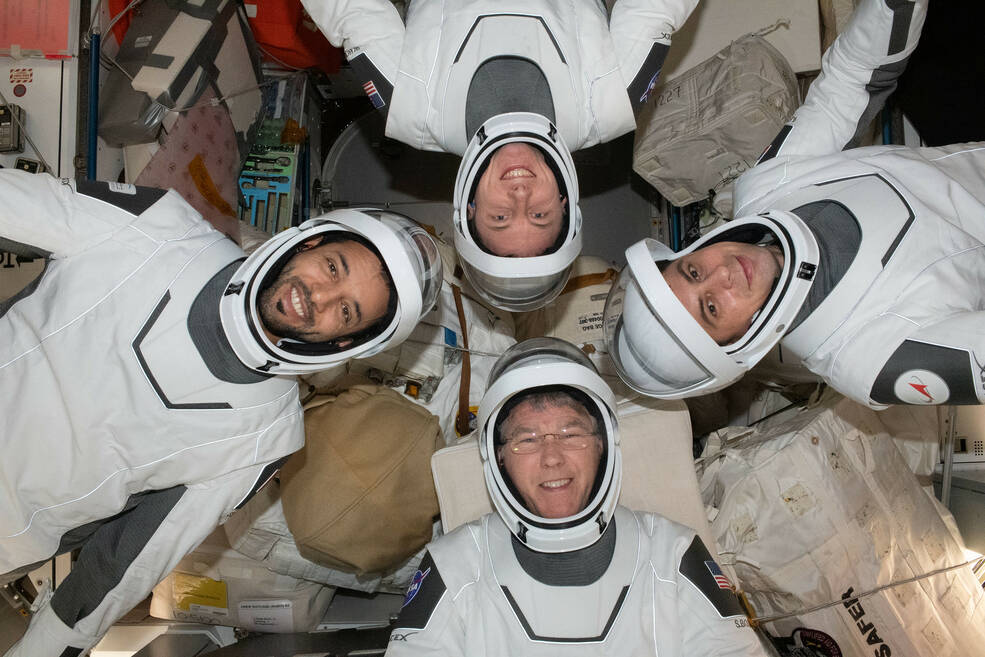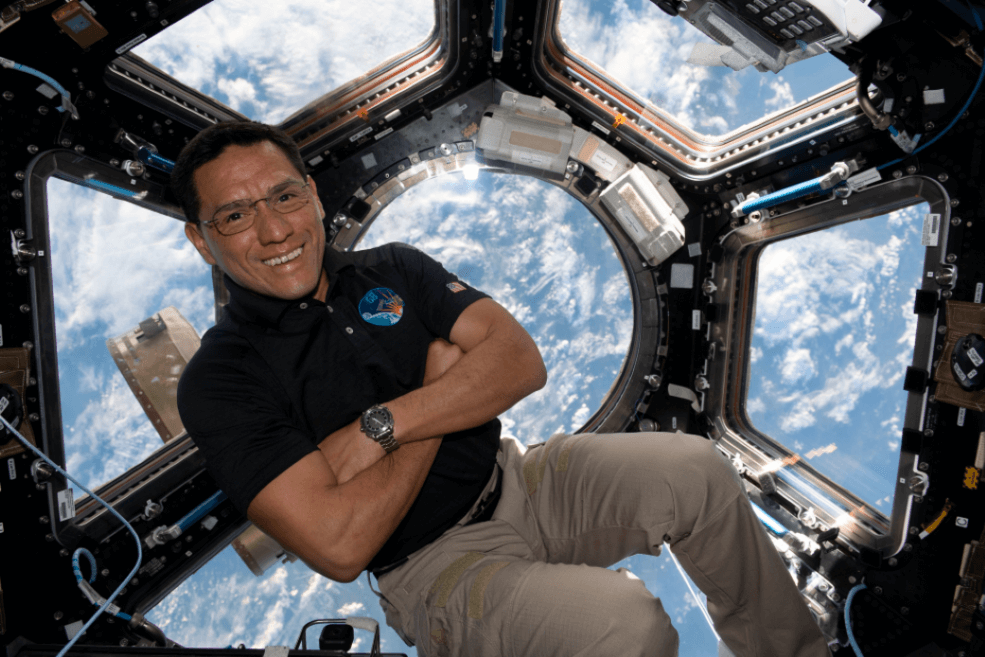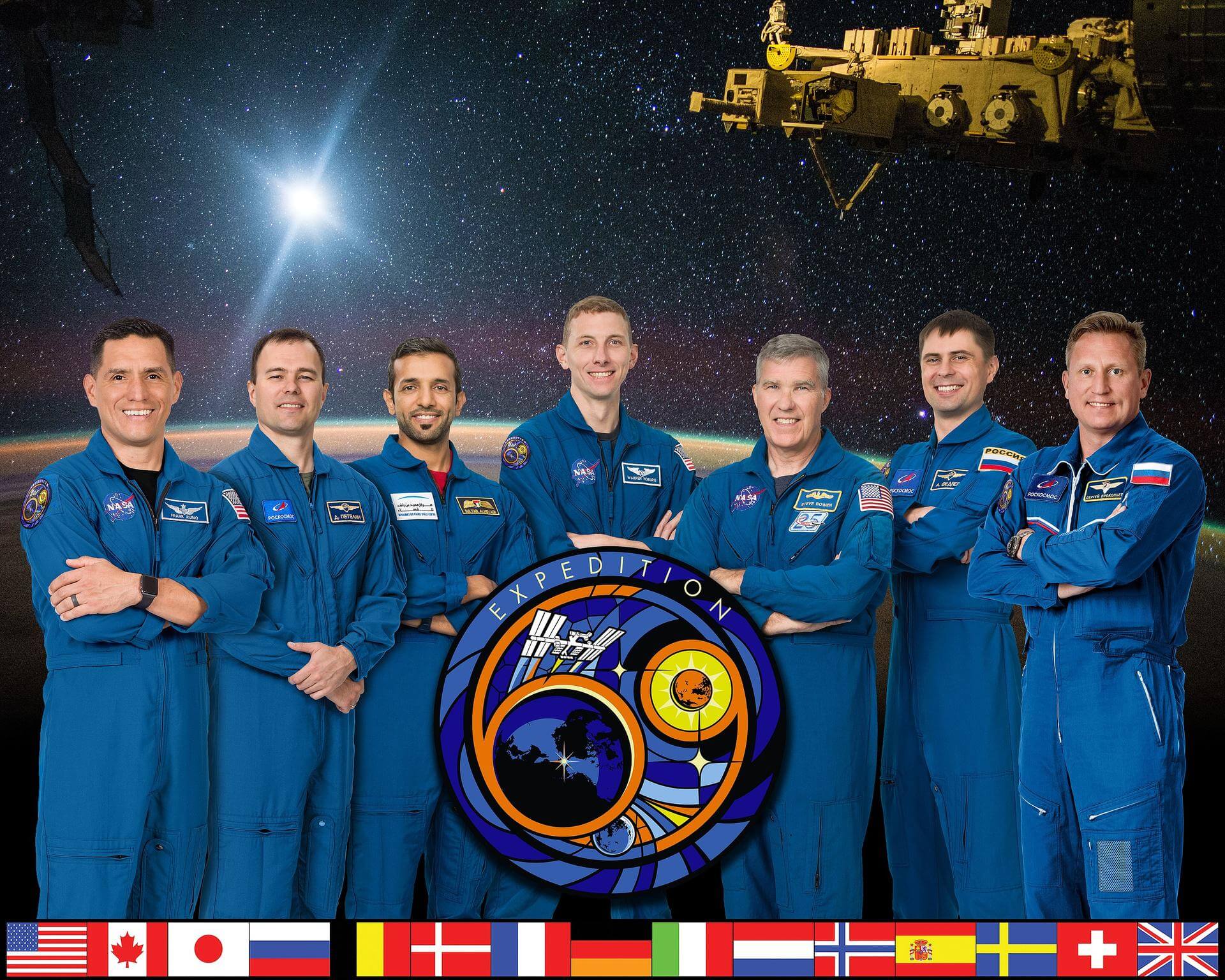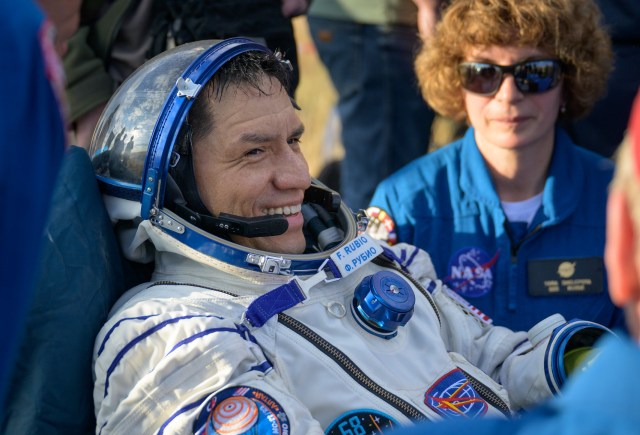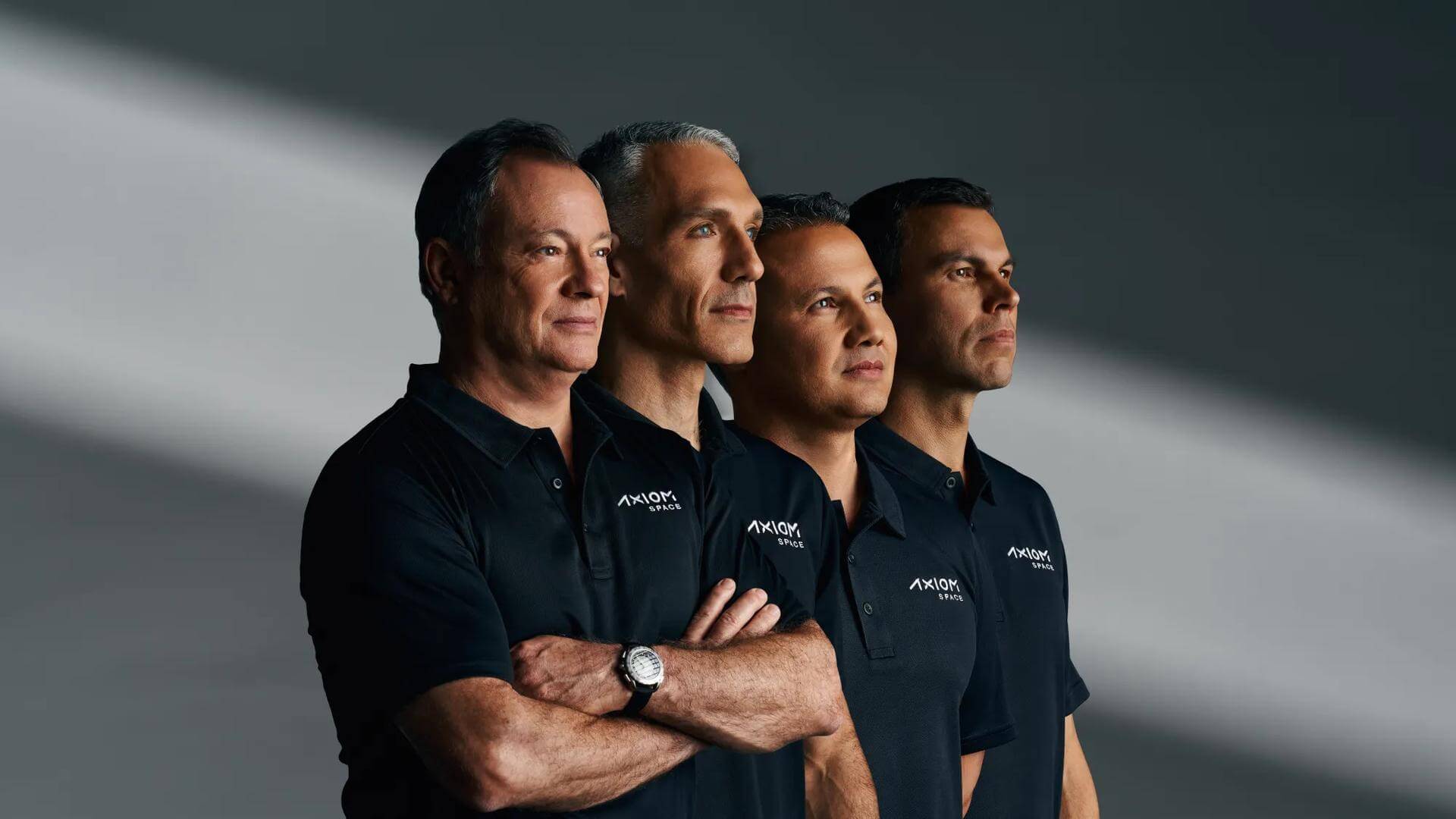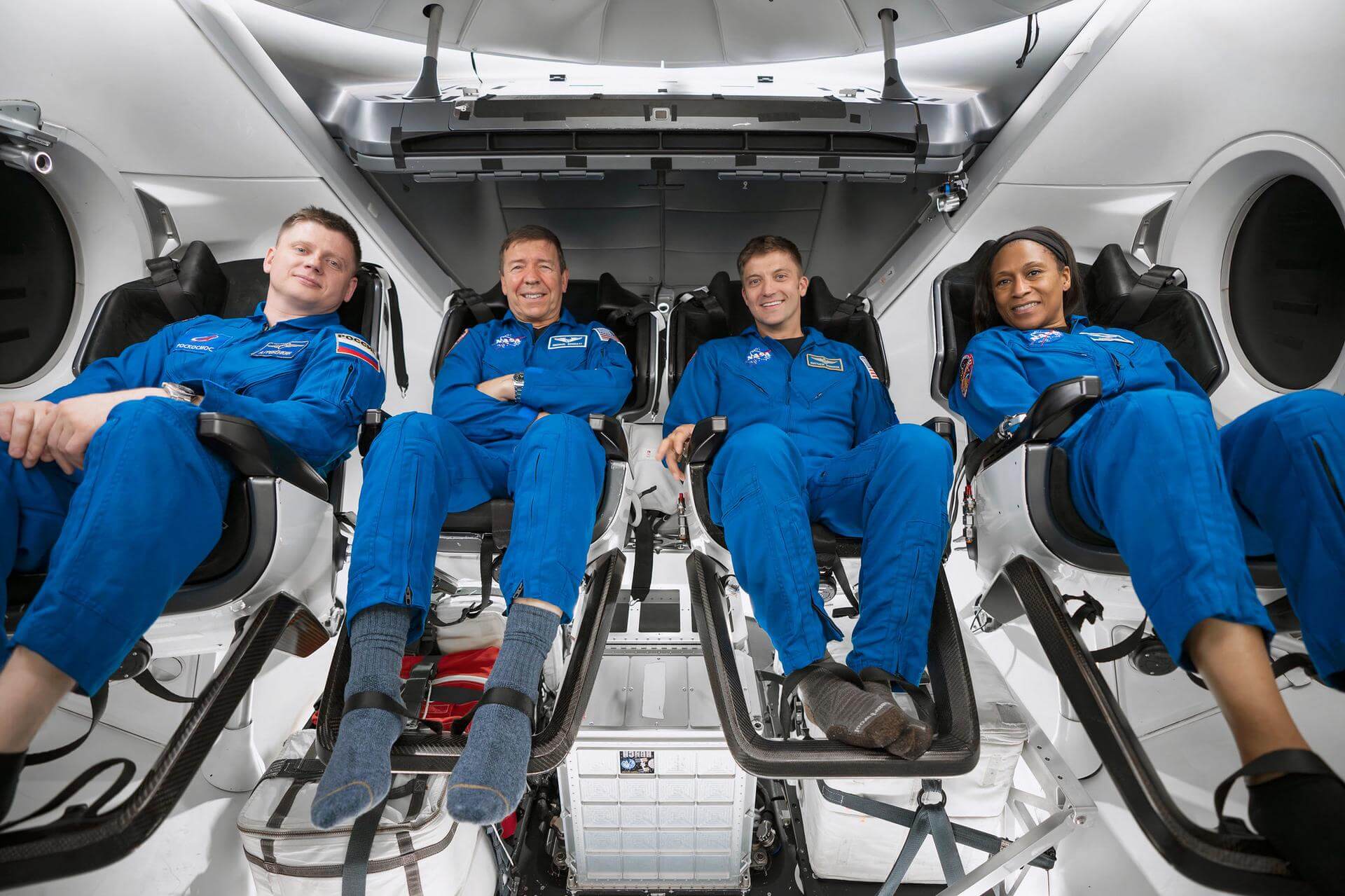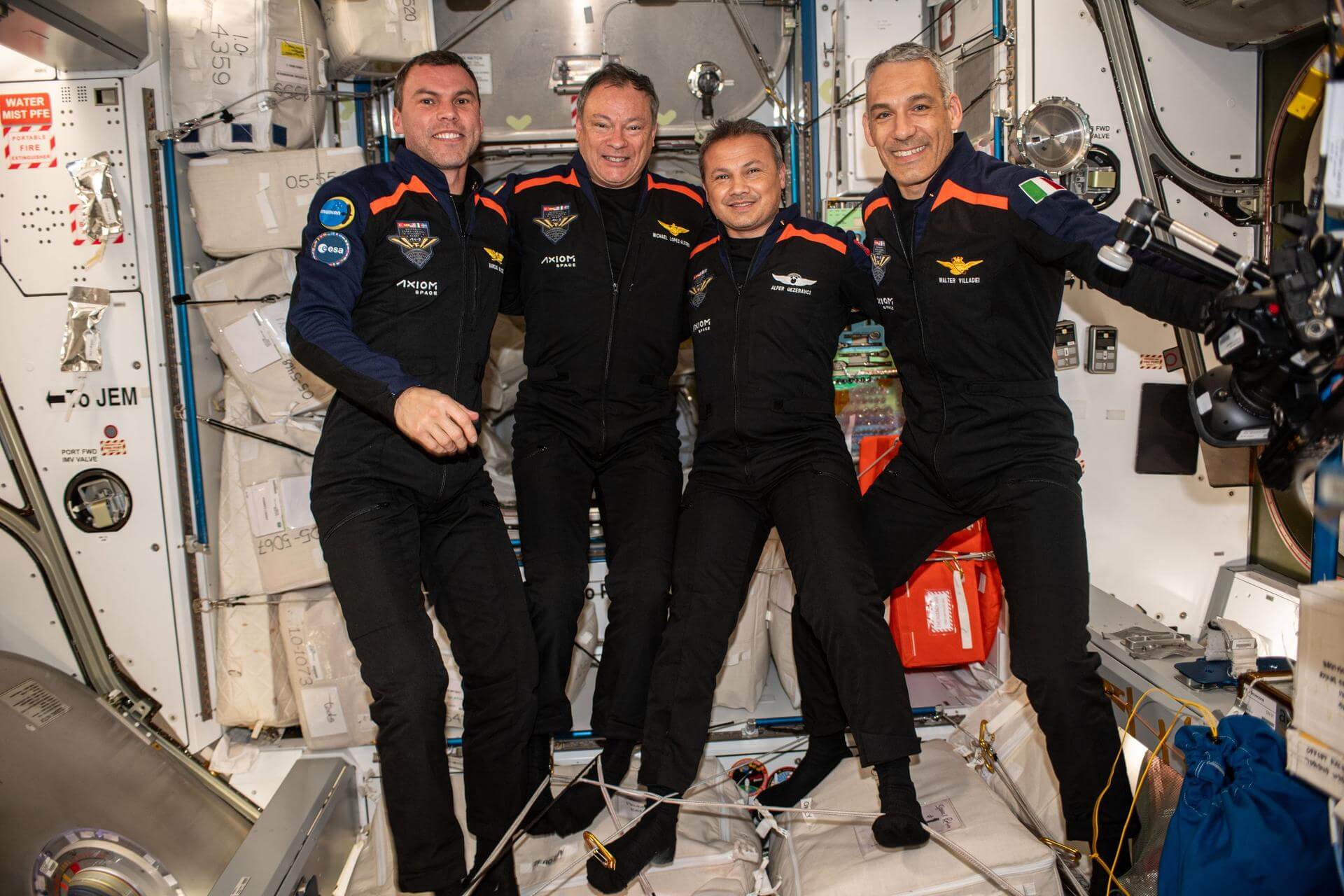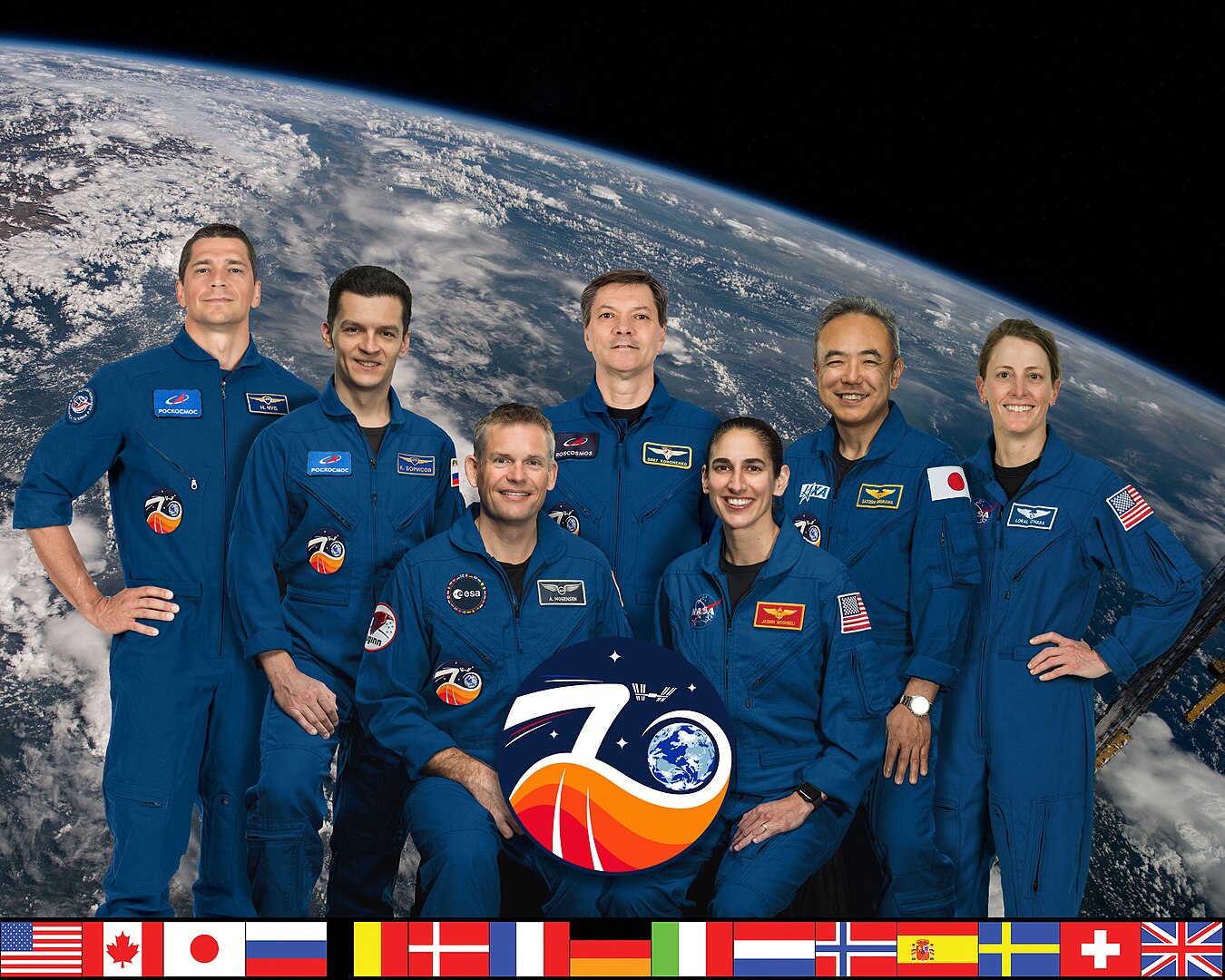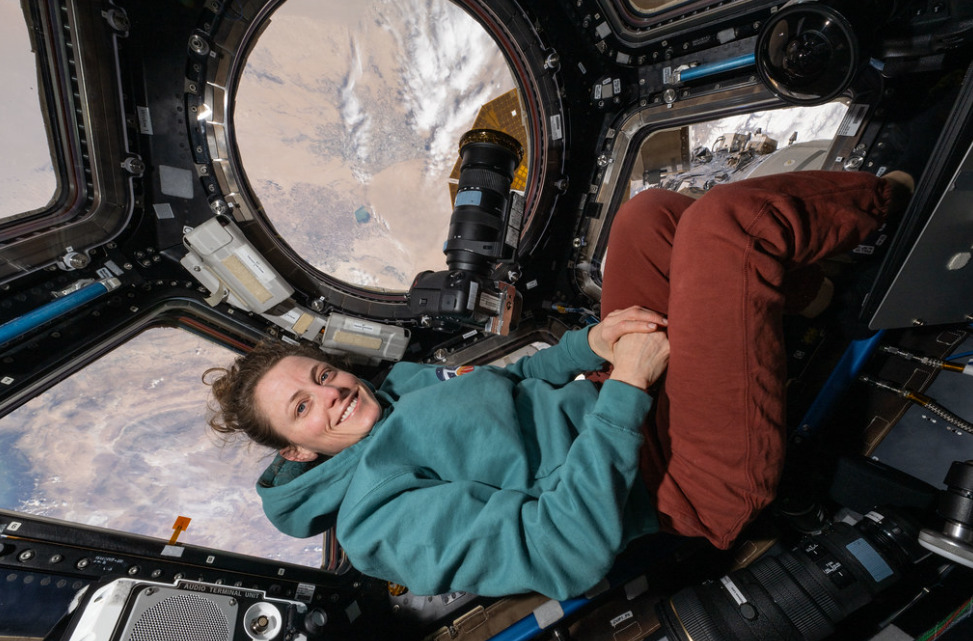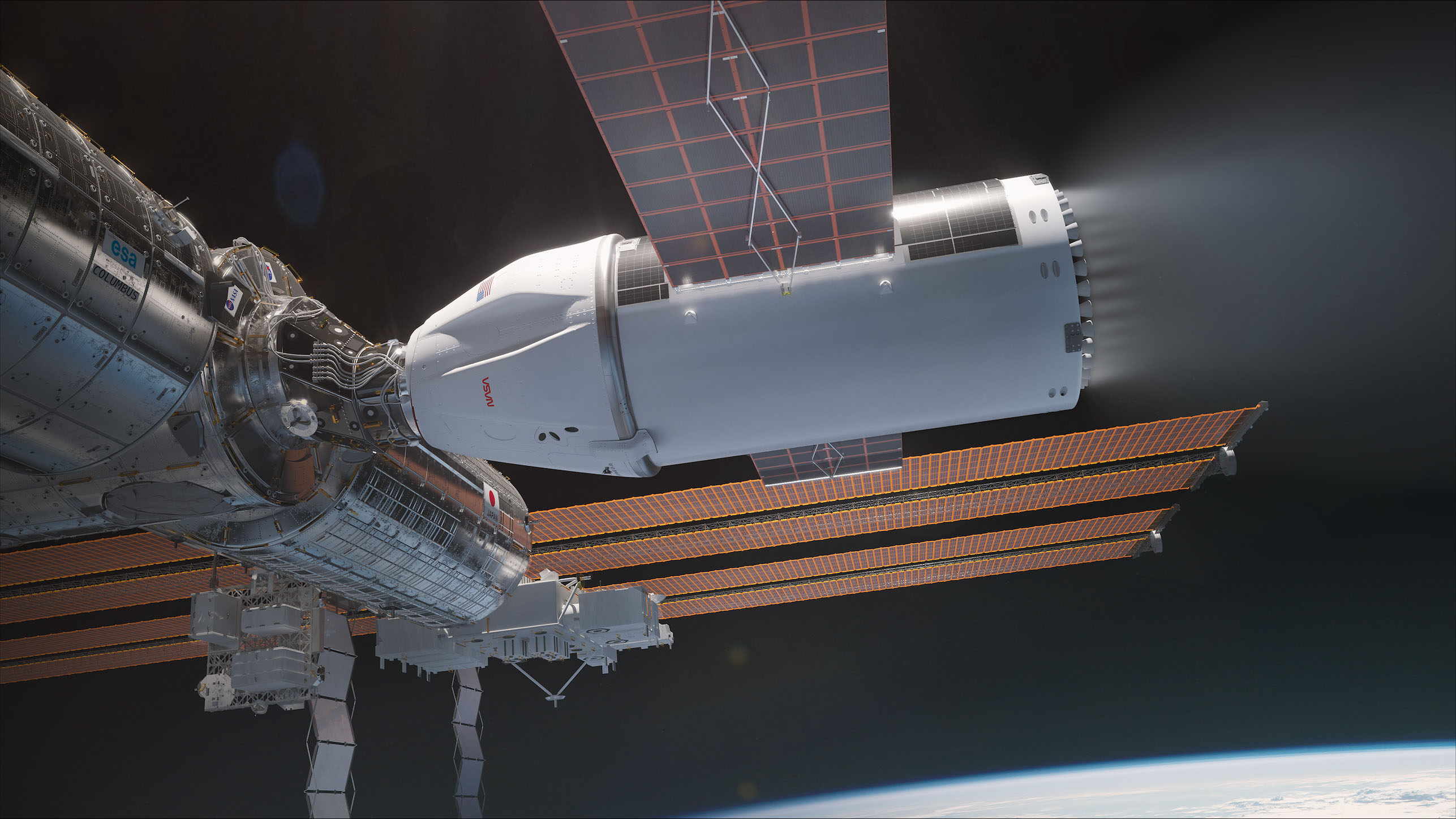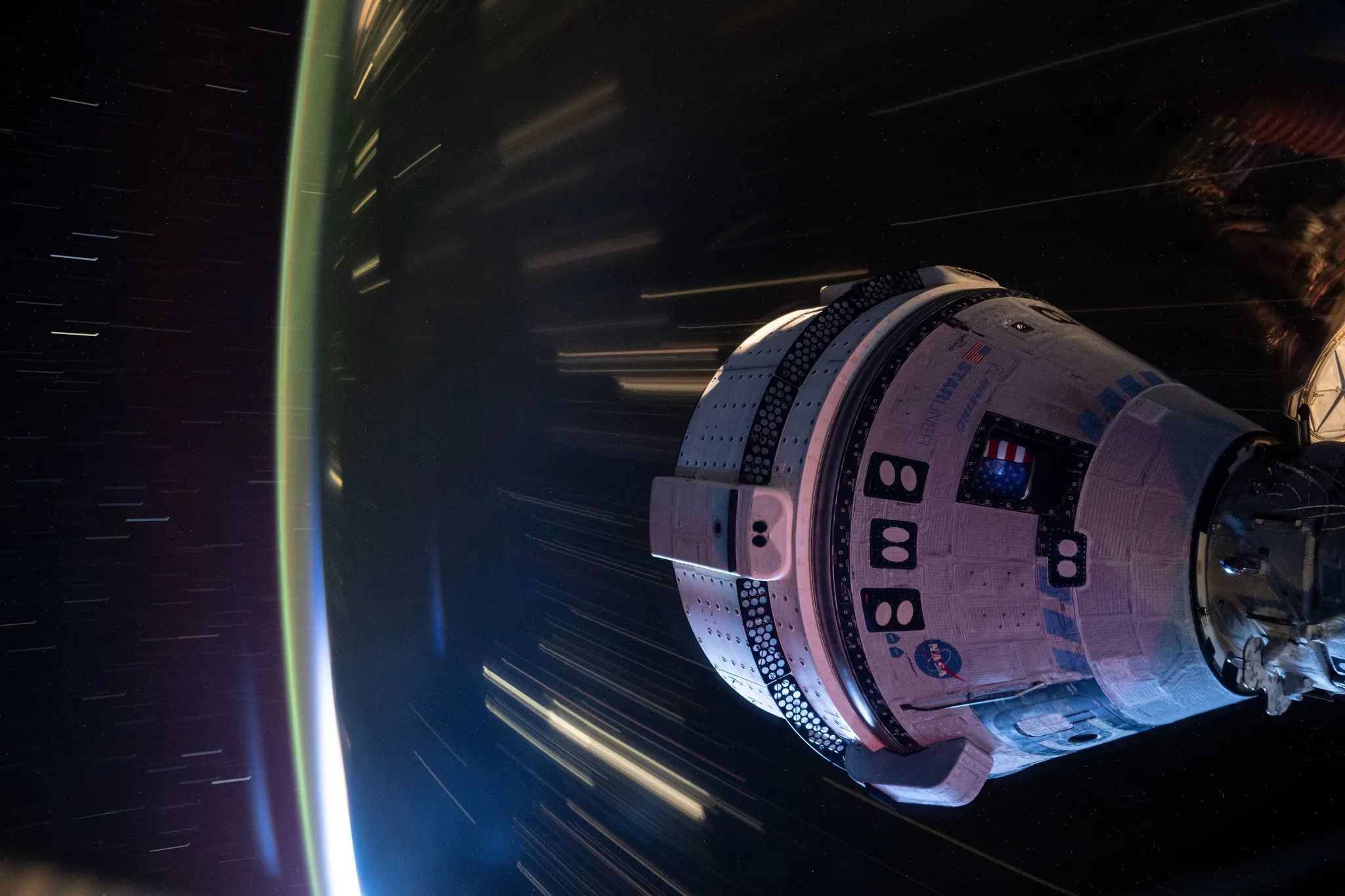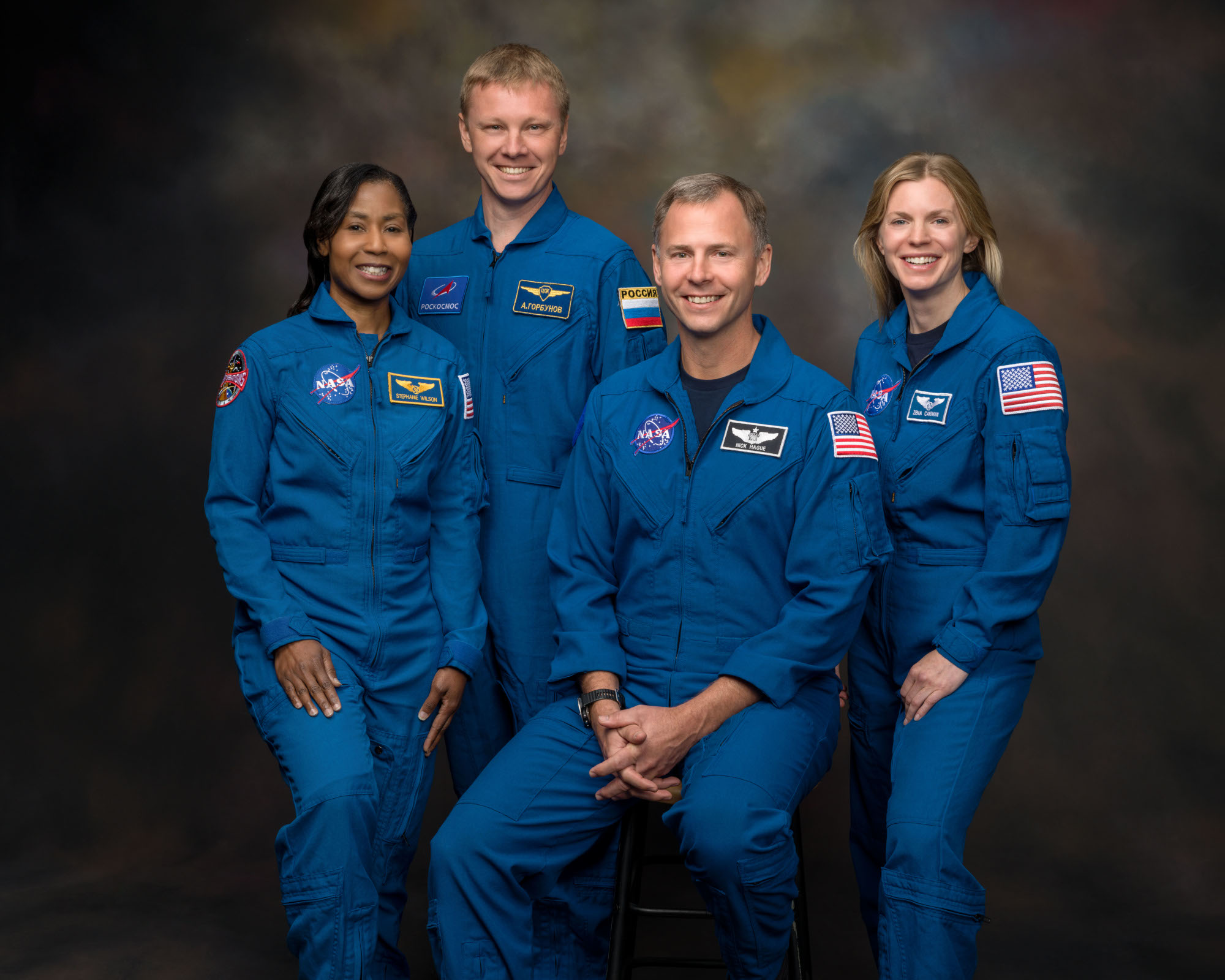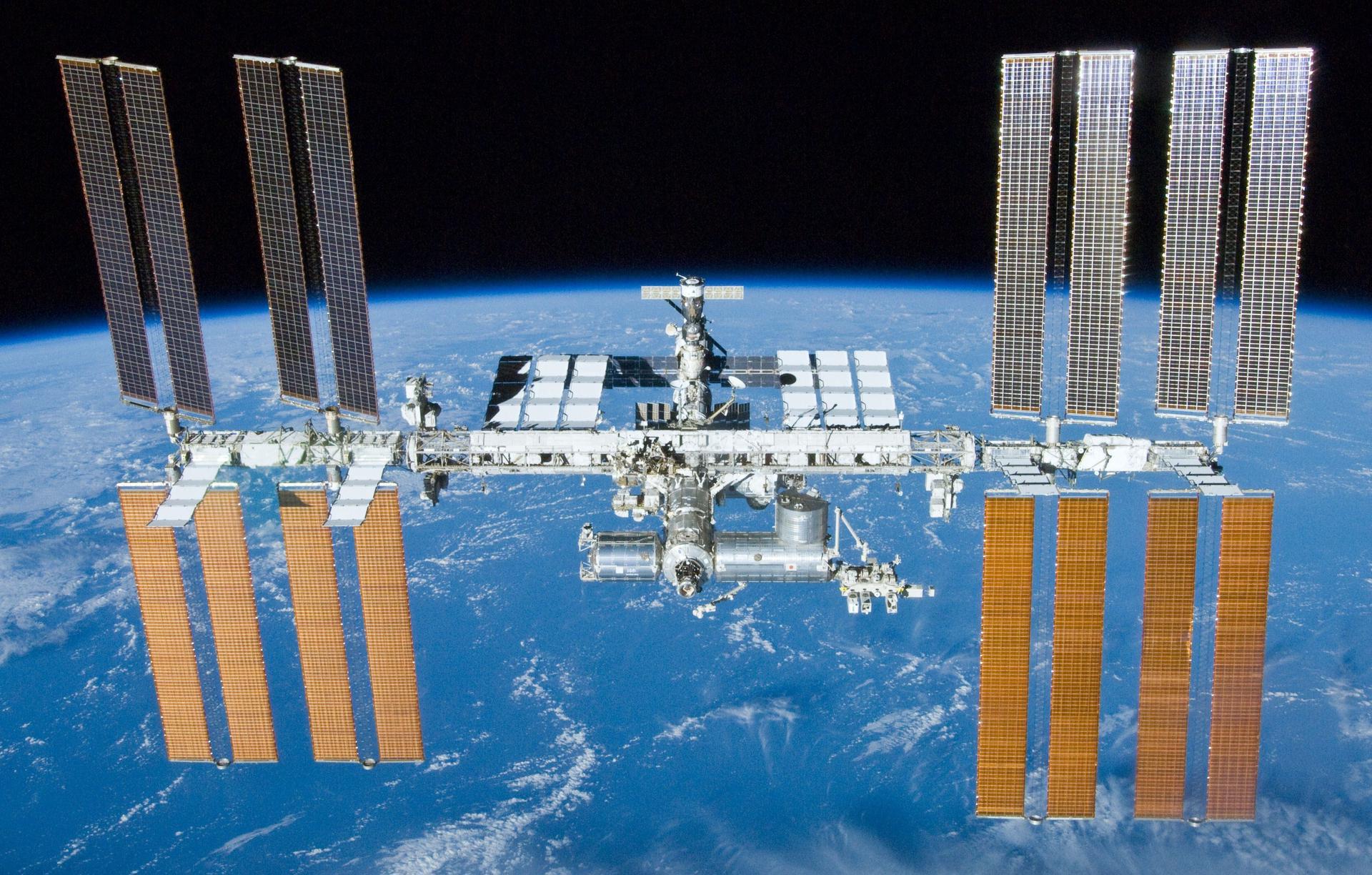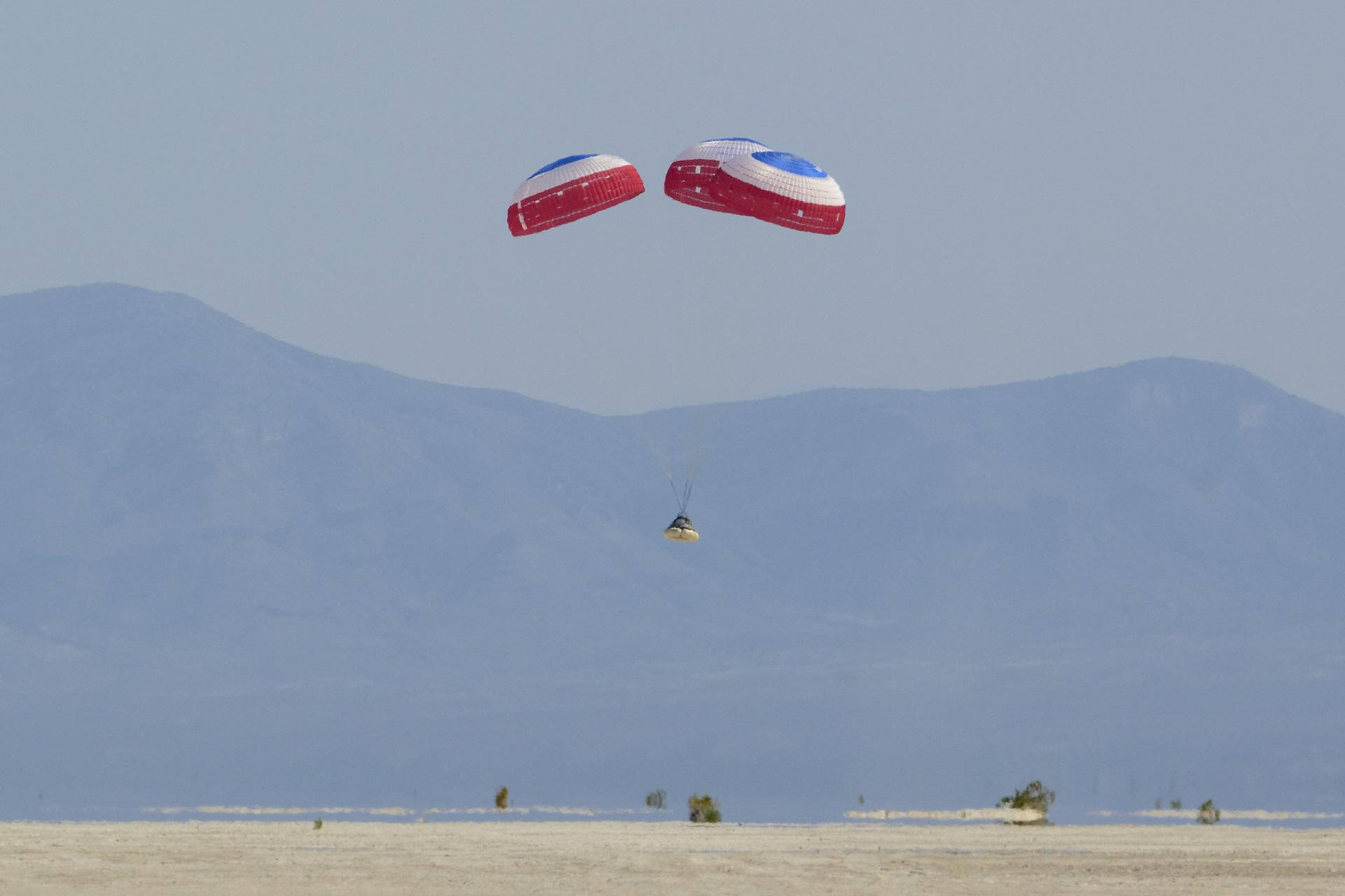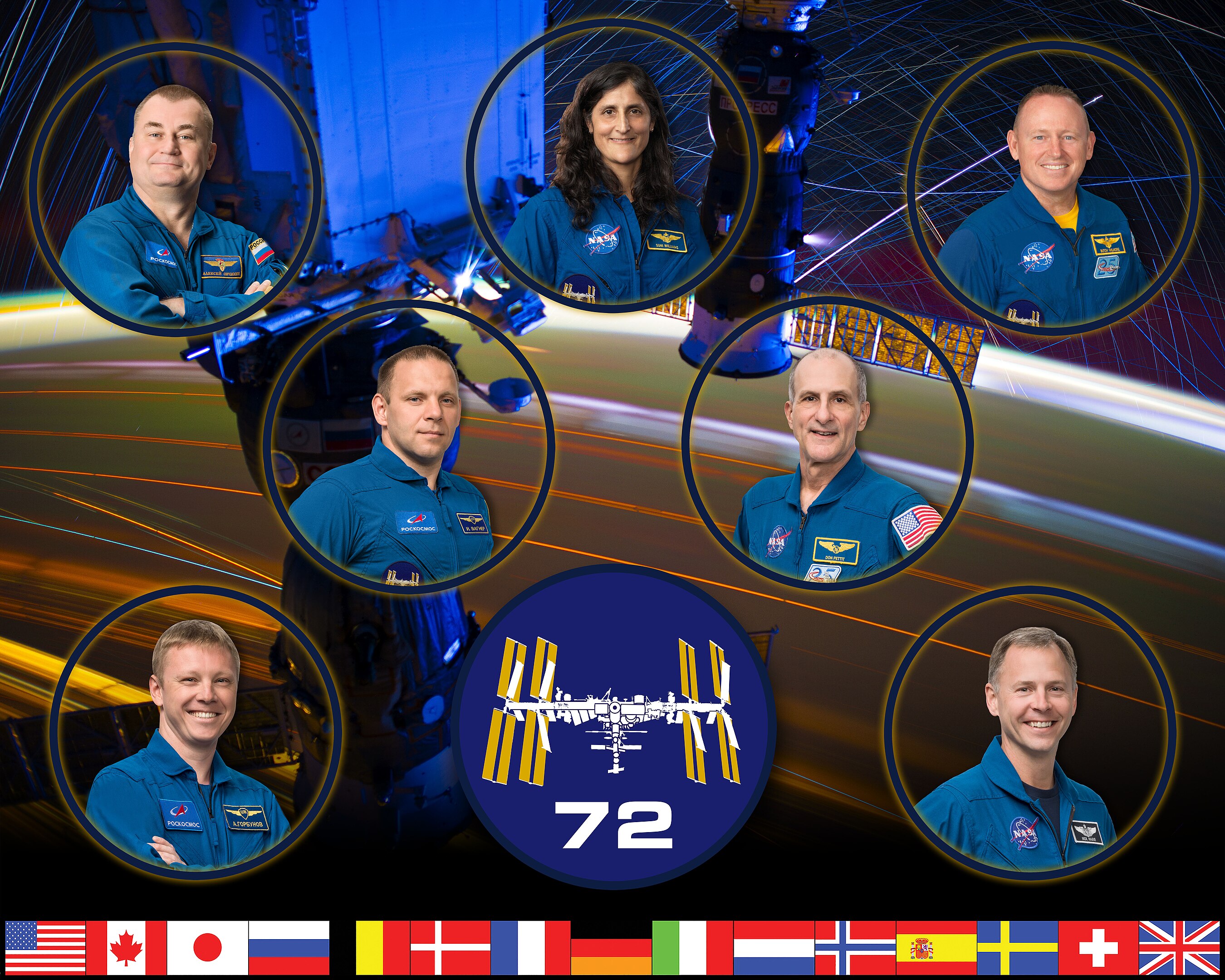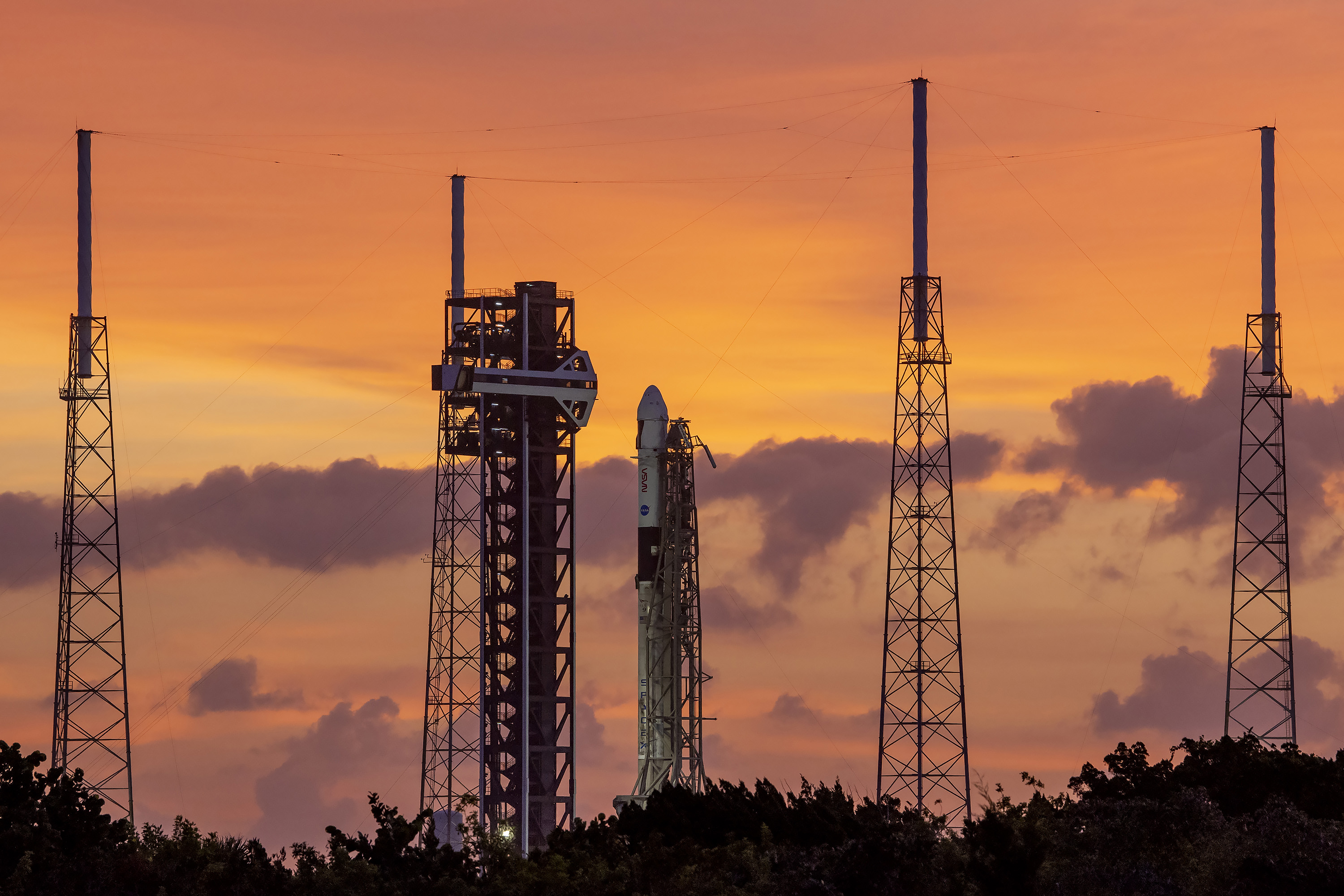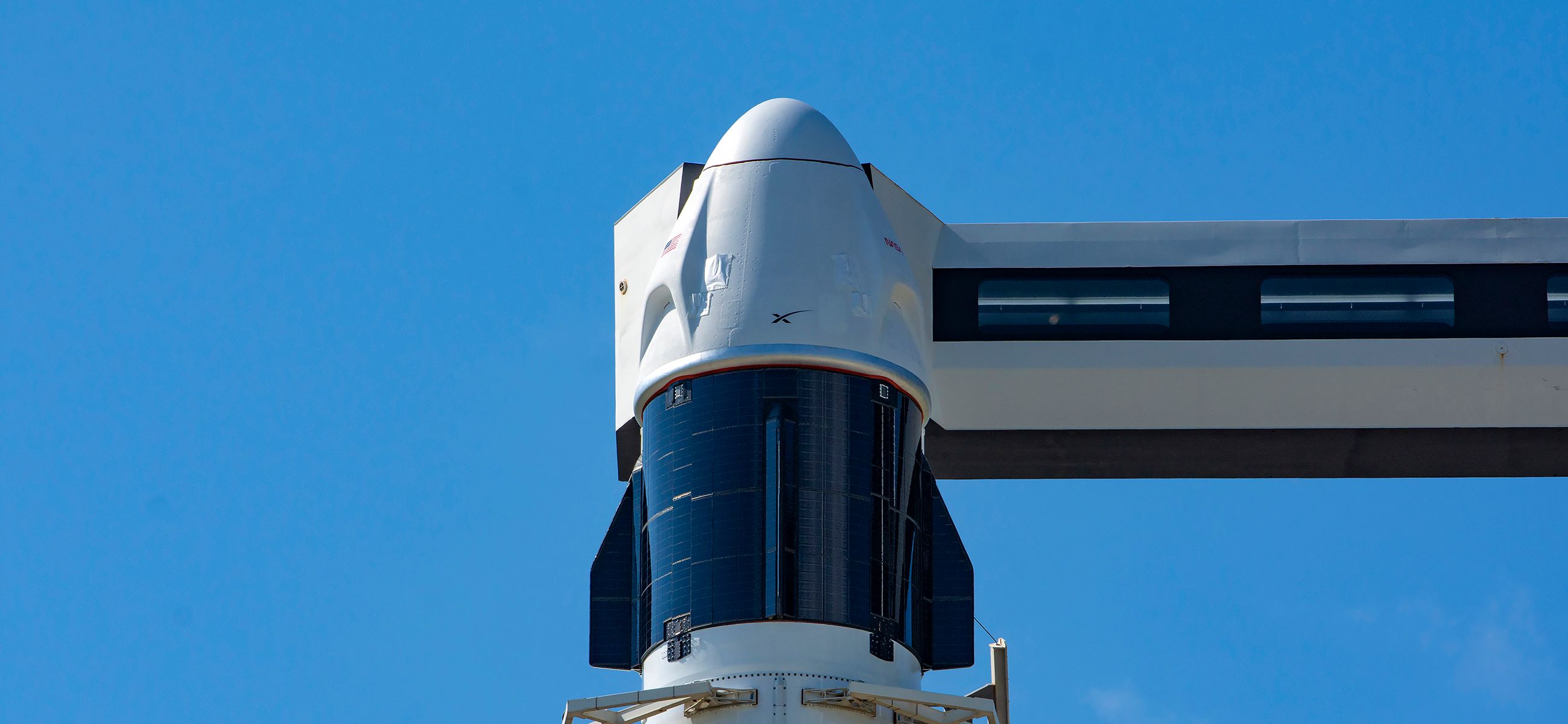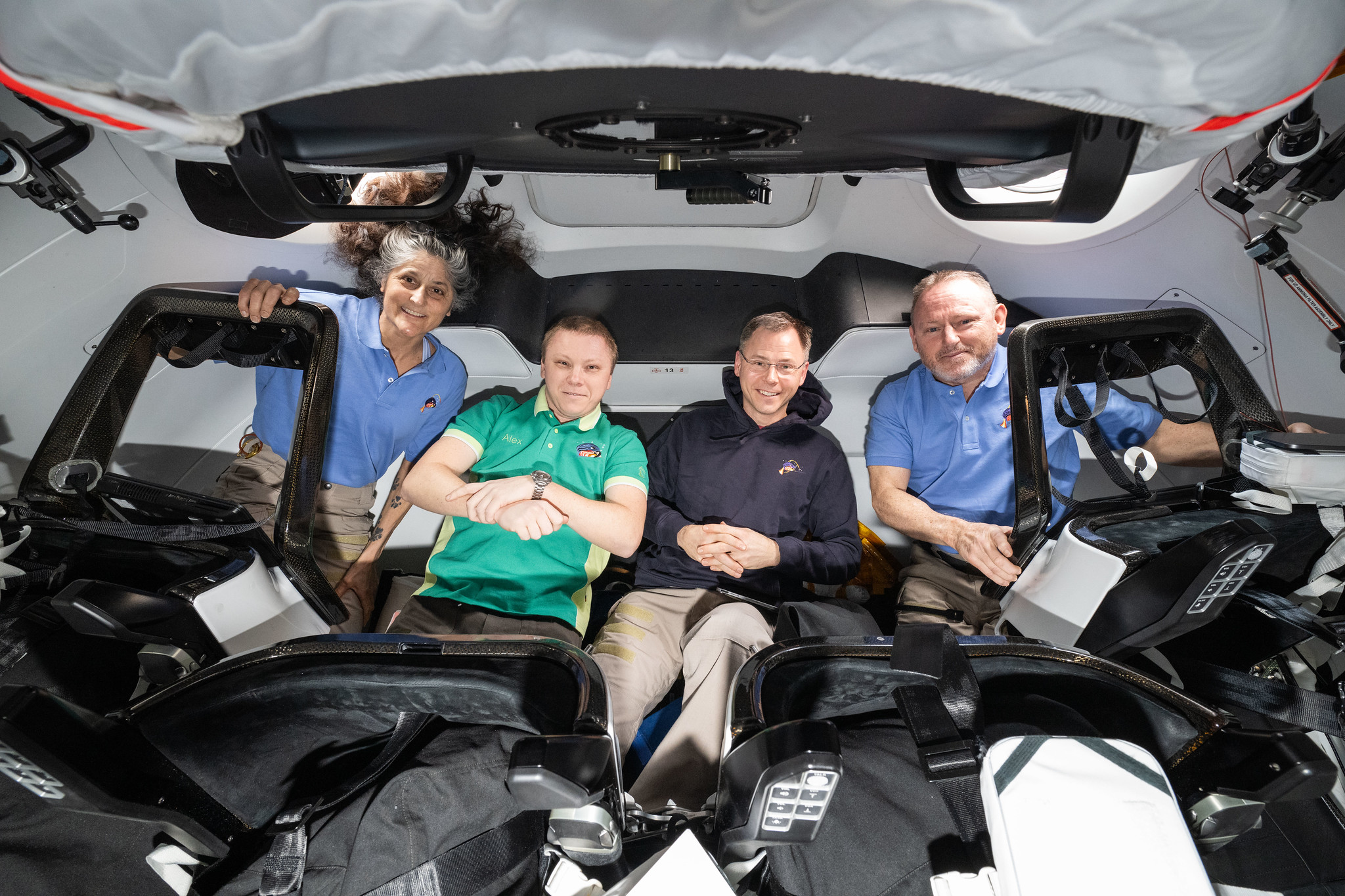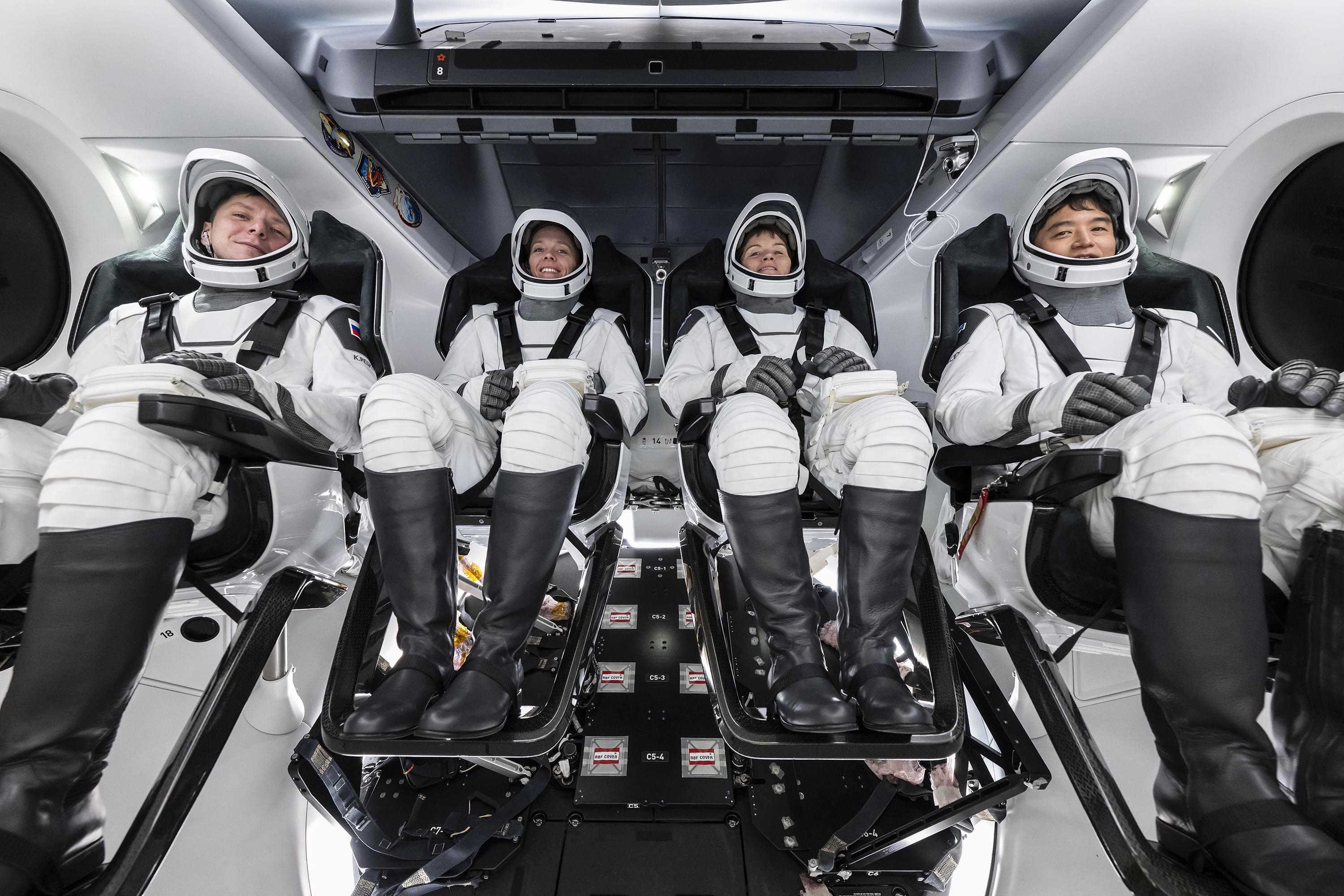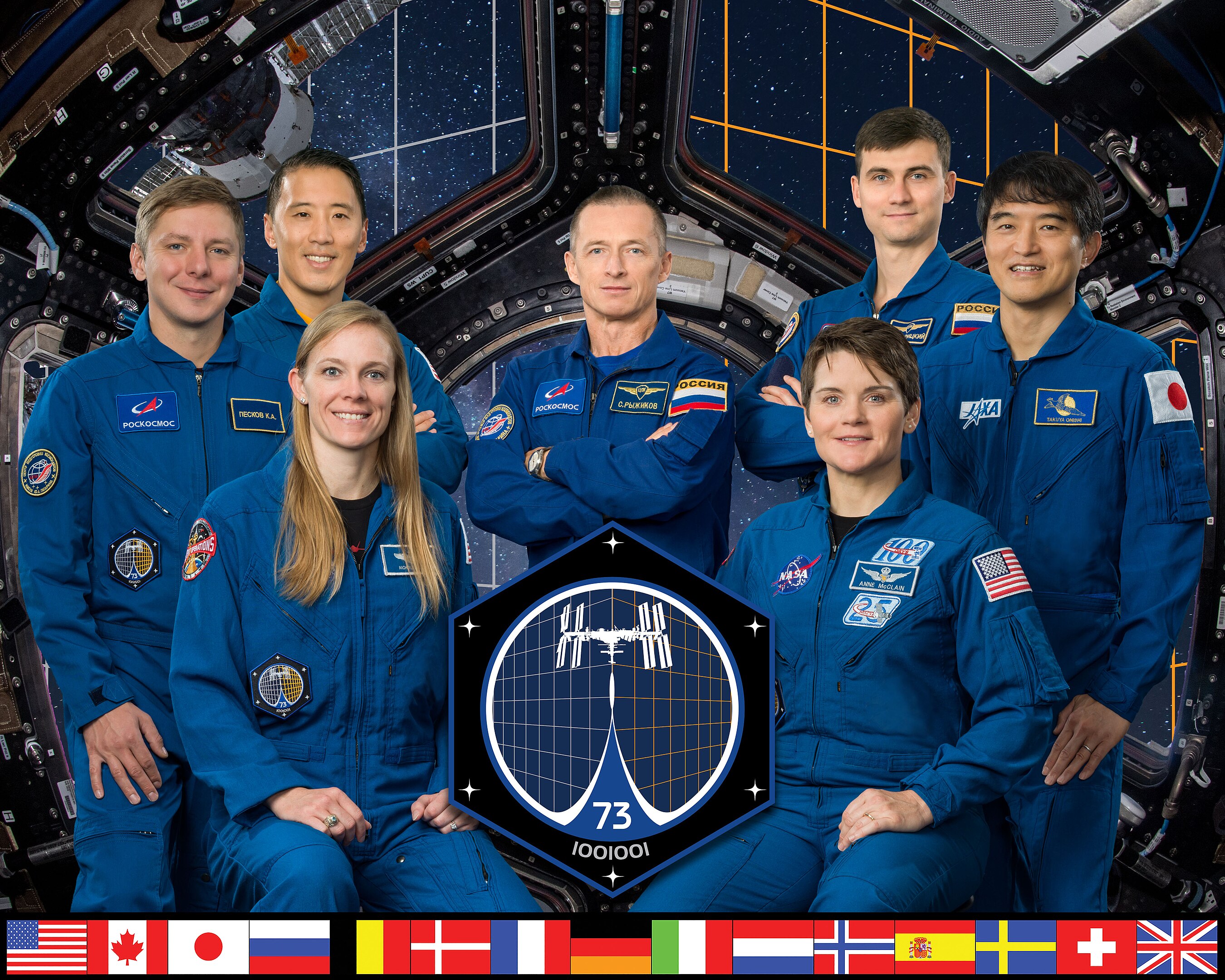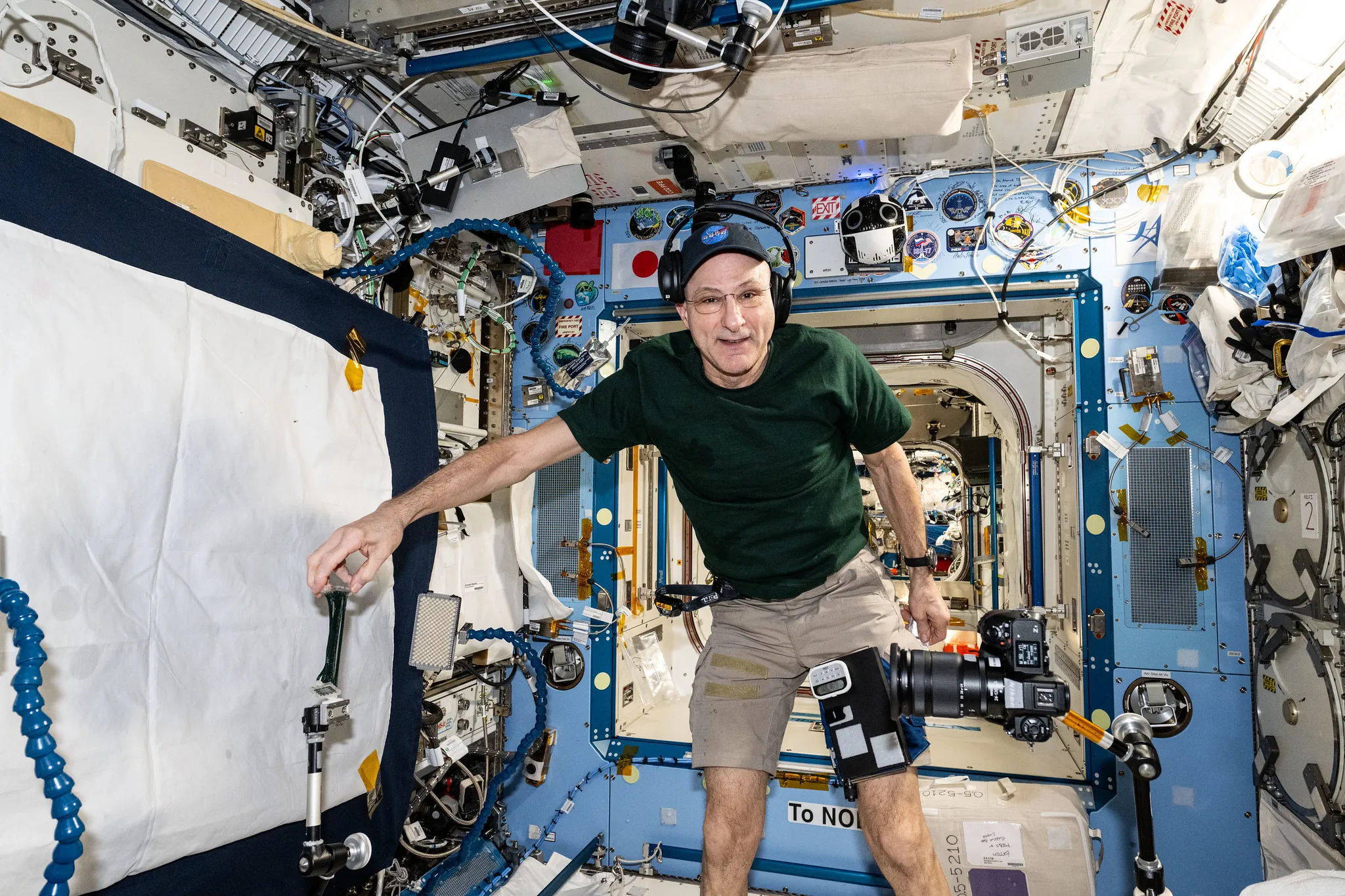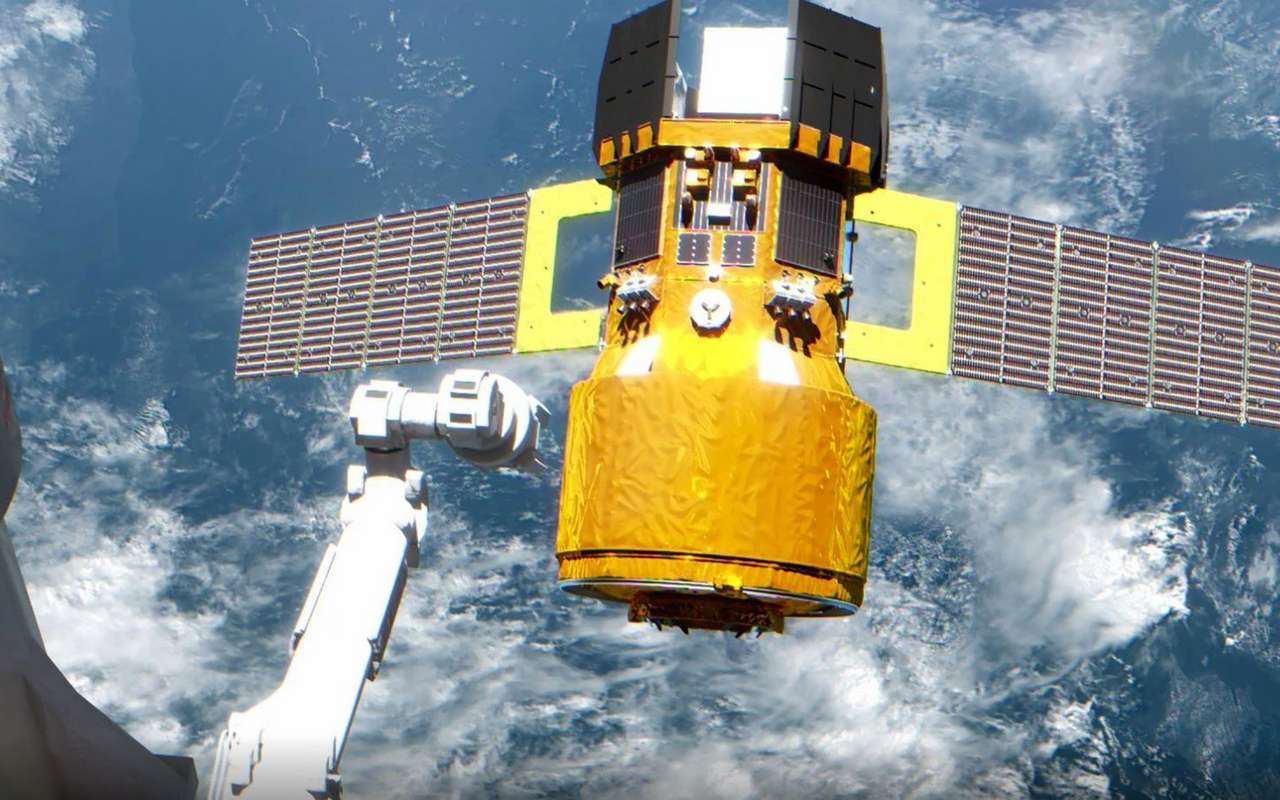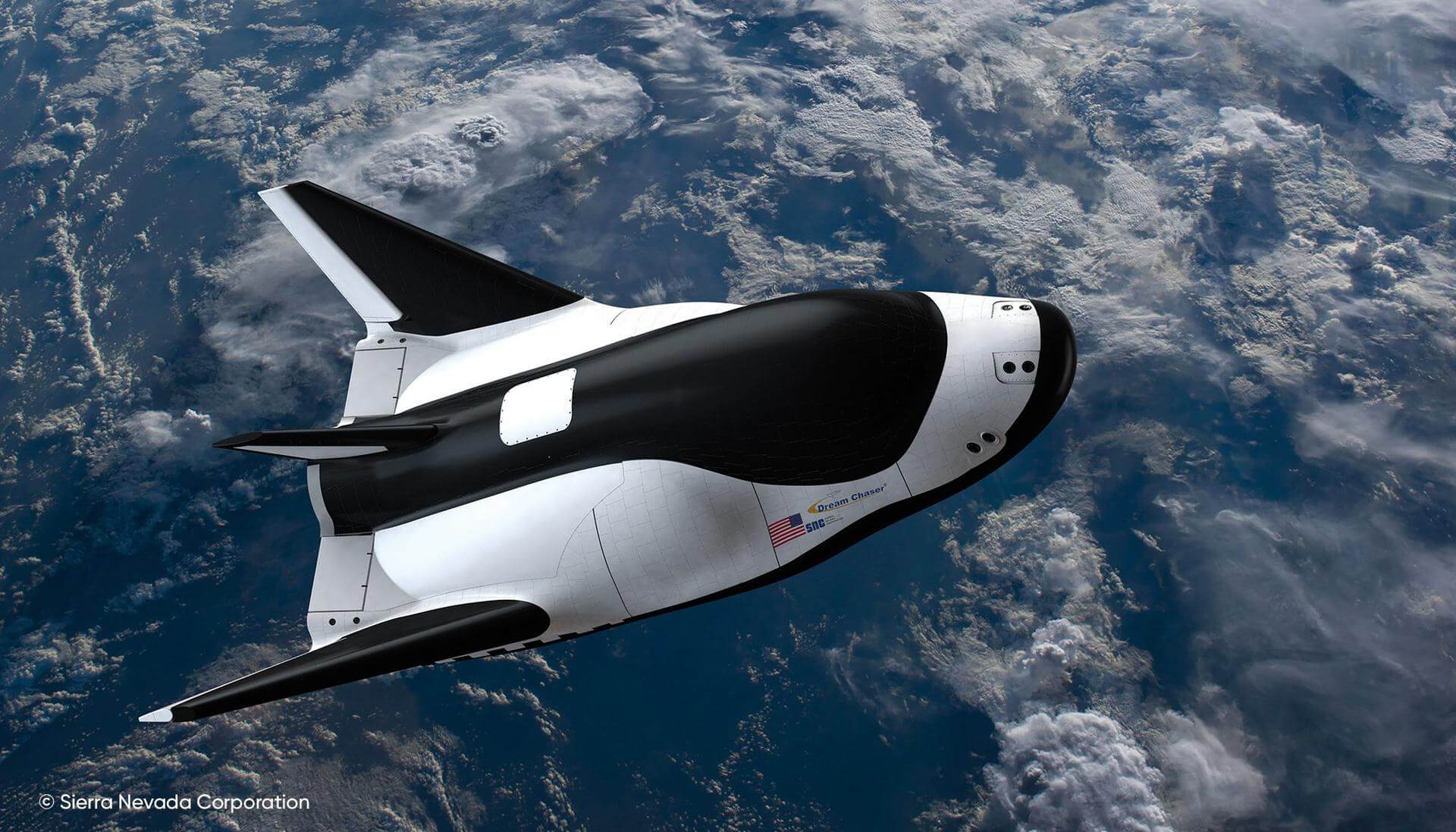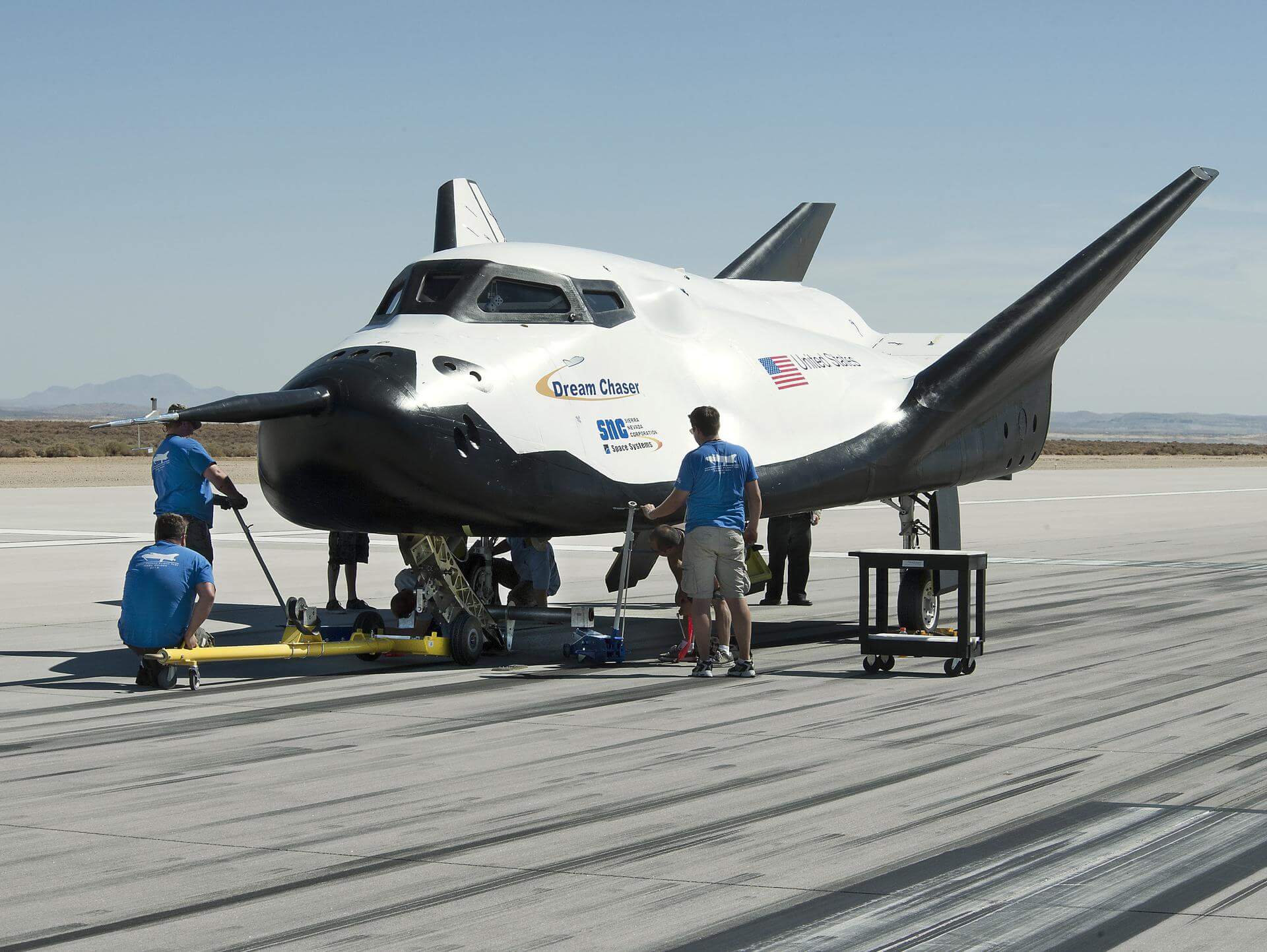International Space Station
The International Space Station programme is tied together by a complex set of legal, political and financial agreements between the sixteen nations involved in the project, governing ownership of the various components, rights to crewing and utilization, and responsibilities for crew rotation and resupply of the International Space Station. It was conceived in 1984 by President Ronald Reagan, during the Space Station Freedom project as it was originally called.
Related Agencies
Canadian Space Agency
The Canadian Space Agency was established by the Canadian Space Agency Act which received Royal Assent on May 10, 1990. The Canadian space program is administered by the Canadian Space Agency. Canada has contributed technology, expertise and personnel to the world space effort, especially in collaboration with ESA and NASA. In addition to its astronauts and satellites, some of the most notable Canadian technological contributions to space exploration include the Canadarm on the Space Shuttle and Canadarm2 on the International Space Station.
European Space Agency
The European Space Agency is an intergovernmental organisation of 22 member states. Established in 1975 and headquartered in Paris, France, ESA has a worldwide staff of about 2,000 employees. ESA's space flight programme includes human spaceflight (mainly through participation in the International Space Station program); the launch and operation of unmanned exploration missions to other planets and the Moon; Earth observation, science and telecommunication; designing launch vehicles; and maintaining a major spaceport, the Guiana Space Centre at Kourou, French Guiana.
Japan Aerospace Exploration Agency
The Japan Aerospace Exploration Agency (JAXA) is Japan's national aero-space agency. Through the merger of three previously independent organizations, JAXA was formed on 1 October 2003. JAXA is responsible for research, technology development and the launch of satellites into orbit, and is involved in many more advanced missions, such as asteroid exploration and possible manned exploration of the Moon. JAXA launch their Epsilon vehicle from the Uchinoura Space Center and their H-II vehicles from the Tanegashima Space Center.
National Aeronautics and Space Administration
The National Aeronautics and Space Administration is an independent agency of the executive branch of the United States federal government responsible for the civilian space program, as well as aeronautics and aerospace research. NASA have many launch facilities but most are inactive. The most commonly used pad will be LC-39B at Kennedy Space Center in Florida.
Russian Federal Space Agency (ROSCOSMOS)
The Roscosmos State Corporation for Space Activities, commonly known as Roscosmos, is the governmental body responsible for the space science program of the Russian Federation and general aerospace research. Soyuz has many launch locations the Russian sites are Baikonur, Plesetsk and Vostochny however Ariane also purchases the vehicle and launches it from French Guiana.
Related Launches
Proton | Zarya
Khrunichev State Research and Production Space Center
Baikonur Cosmodrome, Republic of Kazakhstan
Date Loading...
Space Shuttle Endeavour / OV-105 | STS-88
United Space Alliance
Kennedy Space Center, FL, USA
Date Loading...
Space Shuttle Discovery / OV-103 | STS-96
Lockheed Space Operations Company
Kennedy Space Center, FL, USA
Date Loading...
Space Shuttle Atlantis / OV-104 | STS-101
United Space Alliance
Kennedy Space Center, FL, USA
Date Loading...
Proton | Zvezda
Khrunichev State Research and Production Space Center
Baikonur Cosmodrome, Republic of Kazakhstan
Date Loading...
Soyuz U | Progress M1-3
Russian Federal Space Agency (ROSCOSMOS)
Baikonur Cosmodrome, Republic of Kazakhstan
Date Loading...
Space Shuttle Atlantis / OV-104 | STS-106
United Space Alliance
Kennedy Space Center, FL, USA
Date Loading...
Space Shuttle Discovery / OV-103 | STS-92
Lockheed Space Operations Company
Kennedy Space Center, FL, USA
Date Loading...
Soyuz-U | Soyuz TM-31
Russian Federal Space Agency (ROSCOSMOS)
Baikonur Cosmodrome, Republic of Kazakhstan
Date Loading...
Soyuz U | Progress M1-4
Russian Federal Space Agency (ROSCOSMOS)
Baikonur Cosmodrome, Republic of Kazakhstan
Date Loading...
Space Shuttle Endeavour / OV-105 | STS-97
United Space Alliance
Kennedy Space Center, FL, USA
Date Loading...
Space Shuttle Atlantis / OV-104 | STS-98
United Space Alliance
Kennedy Space Center, FL, USA
Date Loading...
Soyuz U | Progress M-44
Russian Federal Space Agency (ROSCOSMOS)
Baikonur Cosmodrome, Republic of Kazakhstan
Date Loading...
Space Shuttle Discovery / OV-103 | STS-102
United Space Alliance
Kennedy Space Center, FL, USA
Date Loading...
Space Shuttle Endeavour / OV-105 | STS-100
United Space Alliance
Kennedy Space Center, FL, USA
Date Loading...
Soyuz-U | Soyuz TM-32
Russian Federal Space Agency (ROSCOSMOS)
Baikonur Cosmodrome, Republic of Kazakhstan
Date Loading...
Soyuz-FG | Progress M1-6
Russian Federal Space Agency (ROSCOSMOS)
Baikonur Cosmodrome, Republic of Kazakhstan
Date Loading...
Space Shuttle Atlantis / OV-104 | STS-104
United Space Alliance
Kennedy Space Center, FL, USA
Date Loading...
Space Shuttle Discovery / OV-103 | STS-105
United Space Alliance
Kennedy Space Center, FL, USA
Date Loading...
Soyuz U | Progress M-45
Russian Federal Space Agency (ROSCOSMOS)
Baikonur Cosmodrome, Republic of Kazakhstan
Date Loading...
Soyuz U | Progress M-SO1
Russian Federal Space Agency (ROSCOSMOS)
Baikonur Cosmodrome, Republic of Kazakhstan
Date Loading...
Soyuz U | Soyuz TM-33
Russian Federal Space Agency (ROSCOSMOS)
Baikonur Cosmodrome, Republic of Kazakhstan
Date Loading...
Soyuz-FG | Progress M1-7
Russian Federal Space Agency (ROSCOSMOS)
Baikonur Cosmodrome, Republic of Kazakhstan
Date Loading...
Space Shuttle Endeavour / OV-105 | STS-108
United Space Alliance
Kennedy Space Center, FL, USA
Date Loading...
Soyuz U | Progress M1-8
Russian Federal Space Agency (ROSCOSMOS)
Baikonur Cosmodrome, Republic of Kazakhstan
Date Loading...
Space Shuttle Atlantis / OV-104 | STS-110
United Space Alliance
Kennedy Space Center, FL, USA
Date Loading...
Soyuz-U | Soyuz TM-34
Russian Federal Space Agency (ROSCOSMOS)
Baikonur Cosmodrome, Republic of Kazakhstan
Date Loading...
Space Shuttle Endeavour / OV-105 | STS-111
United Space Alliance
Kennedy Space Center, FL, USA
Date Loading...
Soyuz U | Progress M-46
Russian Federal Space Agency (ROSCOSMOS)
Baikonur Cosmodrome, Republic of Kazakhstan
Date Loading...
Soyuz-FG | Progress M1-9
Russian Federal Space Agency (ROSCOSMOS)
Baikonur Cosmodrome, Republic of Kazakhstan
Date Loading...
Space Shuttle Atlantis / OV-104 | STS-112
United Space Alliance
Kennedy Space Center, FL, USA
Date Loading...
Soyuz-FG | Soyuz TMA-1
Russian Federal Space Agency (ROSCOSMOS)
Baikonur Cosmodrome, Republic of Kazakhstan
Date Loading...
Space Shuttle Endeavour / OV-105 | STS-113
United Space Alliance
Kennedy Space Center, FL, USA
Date Loading...
Soyuz U | Progress M-47
Russian Federal Space Agency (ROSCOSMOS)
Baikonur Cosmodrome, Republic of Kazakhstan
Date Loading...
Soyuz-FG | Soyuz TMA-2
Russian Federal Space Agency (ROSCOSMOS)
Baikonur Cosmodrome, Republic of Kazakhstan
Date Loading...
Soyuz U | Progress M1-10
Russian Federal Space Agency (ROSCOSMOS)
Baikonur Cosmodrome, Republic of Kazakhstan
Date Loading...
Soyuz U | Progress M-48
Russian Federal Space Agency (ROSCOSMOS)
Baikonur Cosmodrome, Republic of Kazakhstan
Date Loading...
Soyuz-FG | Soyuz TMA-3
Russian Federal Space Agency (ROSCOSMOS)
Baikonur Cosmodrome, Republic of Kazakhstan
Date Loading...
Soyuz U | Progress M1-11
Russian Federal Space Agency (ROSCOSMOS)
Baikonur Cosmodrome, Republic of Kazakhstan
Date Loading...
Soyuz-FG | Soyuz TMA-4
Russian Federal Space Agency (ROSCOSMOS)
Baikonur Cosmodrome, Republic of Kazakhstan
Date Loading...
Soyuz U | Progress M-49
Russian Federal Space Agency (ROSCOSMOS)
Baikonur Cosmodrome, Republic of Kazakhstan
Date Loading...
Soyuz U | Progress M-50
Russian Federal Space Agency (ROSCOSMOS)
Baikonur Cosmodrome, Republic of Kazakhstan
Date Loading...
Soyuz-FG | Soyuz TMA-5
Russian Federal Space Agency (ROSCOSMOS)
Baikonur Cosmodrome, Republic of Kazakhstan
Date Loading...
Soyuz U | Progress M-51
Russian Federal Space Agency (ROSCOSMOS)
Baikonur Cosmodrome, Republic of Kazakhstan
Date Loading...
Soyuz U | Progress M-52
Russian Federal Space Agency (ROSCOSMOS)
Baikonur Cosmodrome, Republic of Kazakhstan
Date Loading...
Soyuz-FG | Soyuz TMA-6
Russian Federal Space Agency (ROSCOSMOS)
Baikonur Cosmodrome, Republic of Kazakhstan
Date Loading...
Soyuz U | Progress M-53
Russian Federal Space Agency (ROSCOSMOS)
Baikonur Cosmodrome, Republic of Kazakhstan
Date Loading...
Space Shuttle Discovery / OV-103 | STS-114
United Space Alliance
Kennedy Space Center, FL, USA
Date Loading...
Soyuz U | Progress M-54
Russian Federal Space Agency (ROSCOSMOS)
Baikonur Cosmodrome, Republic of Kazakhstan
Date Loading...
Soyuz-FG | Soyuz TMA-7
Russian Federal Space Agency (ROSCOSMOS)
Baikonur Cosmodrome, Republic of Kazakhstan
Date Loading...
Soyuz U | Progress M-55
Russian Federal Space Agency (ROSCOSMOS)
Baikonur Cosmodrome, Republic of Kazakhstan
Date Loading...
Soyuz-FG | Soyuz TMA-8
Russian Federal Space Agency (ROSCOSMOS)
Baikonur Cosmodrome, Republic of Kazakhstan
Date Loading...
Soyuz U | Progress M-56
Russian Federal Space Agency (ROSCOSMOS)
Baikonur Cosmodrome, Republic of Kazakhstan
Date Loading...
Soyuz U | Progress M-57
Russian Federal Space Agency (ROSCOSMOS)
Baikonur Cosmodrome, Republic of Kazakhstan
Date Loading...
Space Shuttle Discovery / OV-103 | STS-121
United Space Alliance
Kennedy Space Center, FL, USA
Date Loading...
Space Shuttle Atlantis / OV-104 | STS-115
United Space Alliance
Kennedy Space Center, FL, USA
Date Loading...
Soyuz-FG | Soyuz TMA-9
Russian Federal Space Agency (ROSCOSMOS)
Baikonur Cosmodrome, Republic of Kazakhstan
Date Loading...
Soyuz U | Progress M-58
Russian Federal Space Agency (ROSCOSMOS)
Baikonur Cosmodrome, Republic of Kazakhstan
Date Loading...
Space Shuttle Discovery / OV-103 | STS-116
United Space Alliance
Kennedy Space Center, FL, USA
Date Loading...
Soyuz U | Progress M-59
Russian Federal Space Agency (ROSCOSMOS)
Baikonur Cosmodrome, Republic of Kazakhstan
Date Loading...
Soyuz-FG | Soyuz TMA-10
Russian Federal Space Agency (ROSCOSMOS)
Baikonur Cosmodrome, Republic of Kazakhstan
Date Loading...
Soyuz U | Progress M-60
Russian Federal Space Agency (ROSCOSMOS)
Baikonur Cosmodrome, Republic of Kazakhstan
Date Loading...
Space Shuttle Atlantis / OV-104 | STS-117
United Space Alliance
Kennedy Space Center, FL, USA
Date Loading...
Soyuz U | Progress M-61
Russian Federal Space Agency (ROSCOSMOS)
Baikonur Cosmodrome, Republic of Kazakhstan
Date Loading...
Space Shuttle Endeavour / OV-105 | STS-118
United Space Alliance
Kennedy Space Center, FL, USA
Date Loading...
Soyuz-FG | Soyuz TMA-11
Russian Federal Space Agency (ROSCOSMOS)
Baikonur Cosmodrome, Republic of Kazakhstan
Date Loading...
Space Shuttle Discovery / OV-103 | STS-120
United Space Alliance
Kennedy Space Center, FL, USA
Date Loading...
Soyuz U | Progress M-62
Russian Federal Space Agency (ROSCOSMOS)
Baikonur Cosmodrome, Republic of Kazakhstan
Date Loading...
Soyuz U | Progress M-63
Russian Federal Space Agency (ROSCOSMOS)
Baikonur Cosmodrome, Republic of Kazakhstan
Date Loading...
Space Shuttle Atlantis / OV-104 | STS-122
United Space Alliance
Kennedy Space Center, FL, USA
Date Loading...
Ariane 5 ES | ATV-1 "Jules Verne"
Arianespace
Guiana Space Centre, French Guiana
Date Loading...
Space Shuttle Endeavour / OV-105 | STS-123
United Space Alliance
Kennedy Space Center, FL, USA
Date Loading...
Soyuz-FG | Soyuz TMA-12
Russian Federal Space Agency (ROSCOSMOS)
Baikonur Cosmodrome, Republic of Kazakhstan
Date Loading...
Soyuz U | Progress M-64
Russian Federal Space Agency (ROSCOSMOS)
Baikonur Cosmodrome, Republic of Kazakhstan
Date Loading...
Space Shuttle Discovery / OV-103 | STS-124
United Space Alliance
Kennedy Space Center, FL, USA
Date Loading...
Soyuz U | Progress M-65
Russian Federal Space Agency (ROSCOSMOS)
Baikonur Cosmodrome, Republic of Kazakhstan
Date Loading...
Soyuz-FG | Soyuz TMA-13
Russian Federal Space Agency (ROSCOSMOS)
Baikonur Cosmodrome, Republic of Kazakhstan
Date Loading...
Space Shuttle Endeavour / OV-105 | STS-126
United Space Alliance
Kennedy Space Center, FL, USA
Date Loading...
Soyuz U | Progress M-01M
Russian Federal Space Agency (ROSCOSMOS)
Baikonur Cosmodrome, Republic of Kazakhstan
Date Loading...
Soyuz U | Progress M-66
Russian Federal Space Agency (ROSCOSMOS)
Baikonur Cosmodrome, Republic of Kazakhstan
Date Loading...
Space Shuttle Discovery / OV-103 | STS-119
United Space Alliance
Kennedy Space Center, FL, USA
Date Loading...
Soyuz-FG | Soyuz TMA-14
Russian Federal Space Agency (ROSCOSMOS)
Baikonur Cosmodrome, Republic of Kazakhstan
Date Loading...
Soyuz U | Progress M-02M
Russian Federal Space Agency (ROSCOSMOS)
Baikonur Cosmodrome, Republic of Kazakhstan
Date Loading...
Soyuz-FG | Soyuz TMA-15
Russian Federal Space Agency (ROSCOSMOS)
Baikonur Cosmodrome, Republic of Kazakhstan
Date Loading...
Space Shuttle Endeavour / OV-105 | STS-127
United Space Alliance
Kennedy Space Center, FL, USA
Date Loading...
Soyuz U | Progress M-67
Russian Federal Space Agency (ROSCOSMOS)
Baikonur Cosmodrome, Republic of Kazakhstan
Date Loading...
Space Shuttle Discovery / OV-103 | STS-128
United Space Alliance
Kennedy Space Center, FL, USA
Date Loading...
H-IIB 304 | Kounotori 1 (HTV-1)
Mitsubishi Heavy Industries
Tanegashima Space Center, Japan
Date Loading...
Soyuz-FG | Soyuz TMA-16
Russian Federal Space Agency (ROSCOSMOS)
Baikonur Cosmodrome, Republic of Kazakhstan
Date Loading...
Soyuz U | Progress M-03M
Russian Federal Space Agency (ROSCOSMOS)
Baikonur Cosmodrome, Republic of Kazakhstan
Date Loading...
Soyuz U | Progress M-MIM2
Russian Federal Space Agency (ROSCOSMOS)
Baikonur Cosmodrome, Republic of Kazakhstan
Date Loading...
Space Shuttle Atlantis / OV-104 | STS-129
United Space Alliance
Kennedy Space Center, FL, USA
Date Loading...
Soyuz-FG | Soyuz TMA-17
Russian Federal Space Agency (ROSCOSMOS)
Baikonur Cosmodrome, Republic of Kazakhstan
Date Loading...
Soyuz-U | Progress M-04M (36P)
Russian Federal Space Agency (ROSCOSMOS)
Baikonur Cosmodrome, Republic of Kazakhstan
Date Loading...
Space Shuttle Endeavour / OV-105 | STS-130
United Space Alliance
Kennedy Space Center, FL, USA
Date Loading...
Soyuz FG | Soyuz TMA-18
Russian Federal Space Agency (ROSCOSMOS)
Baikonur Cosmodrome, Republic of Kazakhstan
Date Loading...
Space Shuttle Discovery / OV-103 | STS-131
United Space Alliance
Kennedy Space Center, FL, USA
Date Loading...
Soyuz-U | Progress M-05M (37P)
Russian Federal Space Agency (ROSCOSMOS)
Baikonur Cosmodrome, Republic of Kazakhstan
Date Loading...
Space Shuttle Atlantis / OV-104 | STS-132
United Space Alliance
Kennedy Space Center, FL, USA
Date Loading...
Soyuz FG | Soyuz TMA-19
Russian Federal Space Agency (ROSCOSMOS)
Baikonur Cosmodrome, Republic of Kazakhstan
Date Loading...
Soyuz-U | Progress M-06M (38P)
Russian Federal Space Agency (ROSCOSMOS)
Baikonur Cosmodrome, Republic of Kazakhstan
Date Loading...
Soyuz-U | Progress M-07M (39P)
Russian Federal Space Agency (ROSCOSMOS)
Baikonur Cosmodrome, Republic of Kazakhstan
Date Loading...
Soyuz-FG | Soyuz TMA-01M
Russian Federal Space Agency (ROSCOSMOS)
Baikonur Cosmodrome, Republic of Kazakhstan
Date Loading...
Soyuz-U | Progress M-08M (40P)
Russian Federal Space Agency (ROSCOSMOS)
Baikonur Cosmodrome, Republic of Kazakhstan
Date Loading...
Soyuz FG | Soyuz TMA-20
Russian Federal Space Agency (ROSCOSMOS)
Baikonur Cosmodrome, Republic of Kazakhstan
Date Loading...
H-IIB 304 | Kounotori 2 (HTV-2)
Mitsubishi Heavy Industries
Tanegashima Space Center, Japan
Date Loading...
Soyuz-U | Progress M-09M (41P)
Russian Federal Space Agency (ROSCOSMOS)
Baikonur Cosmodrome, Republic of Kazakhstan
Date Loading...
Ariane 5 ES | Johannes Kepler ATV (ATV-002)
Arianespace
Guiana Space Centre, French Guiana
Date Loading...
Space Shuttle Discovery / OV-103 | STS-133
United Space Alliance
Kennedy Space Center, FL, USA
Date Loading...
Soyuz FG | Soyuz TMA-21
Russian Federal Space Agency (ROSCOSMOS)
Baikonur Cosmodrome, Republic of Kazakhstan
Date Loading...
Soyuz-U | Progress M-10M (42P)
Russian Federal Space Agency (ROSCOSMOS)
Baikonur Cosmodrome, Republic of Kazakhstan
Date Loading...
Space Shuttle Endeavour / OV-105 | STS-134
United Space Alliance
Kennedy Space Center, FL, USA
Date Loading...
Soyuz FG | Soyuz TMA-02M
Russian Federal Space Agency (ROSCOSMOS)
Baikonur Cosmodrome, Republic of Kazakhstan
Date Loading...
Soyuz-U | Progress M-11M (43P)
Russian Federal Space Agency (ROSCOSMOS)
Baikonur Cosmodrome, Republic of Kazakhstan
Date Loading...
Space Shuttle Atlantis / OV-104 | STS-135
United Space Alliance
Kennedy Space Center, FL, USA
Date Loading...
Soyuz-U | Progress M-13M (45P)
Russian Federal Space Agency (ROSCOSMOS)
Baikonur Cosmodrome, Republic of Kazakhstan
Date Loading...
Soyuz-FG | Soyuz TMA-22
Russian Federal Space Agency (ROSCOSMOS)
Baikonur Cosmodrome, Republic of Kazakhstan
Date Loading...
Soyuz FG | Soyuz TMA-03M
Russian Federal Space Agency (ROSCOSMOS)
Baikonur Cosmodrome, Republic of Kazakhstan
Date Loading...
Soyuz-U | Progress M-14M (46P)
Russian Federal Space Agency (ROSCOSMOS)
Baikonur Cosmodrome, Republic of Kazakhstan
Date Loading...
Ariane 5 ES | Edoardo Amaldi ATV (ATV-003)
Arianespace
Guiana Space Centre, French Guiana
Date Loading...
Soyuz-U | Progress M-15M (47P)
Russian Federal Space Agency (ROSCOSMOS)
Baikonur Cosmodrome, Republic of Kazakhstan
Date Loading...
Soyuz FG | Soyuz TMA-04M
Russian Federal Space Agency (ROSCOSMOS)
Baikonur Cosmodrome, Republic of Kazakhstan
Date Loading...
Falcon 9 v1.0 | SpaceX COTS Demo Flight 2
SpaceX
Cape Canaveral SFS, FL, USA
Date Loading...
Soyuz FG | Soyuz TMA-05M
Russian Federal Space Agency (ROSCOSMOS)
Baikonur Cosmodrome, Republic of Kazakhstan
Date Loading...
H-IIB 304 | Kounotori 3 (HTV-3)
Mitsubishi Heavy Industries
Tanegashima Space Center, Japan
Date Loading...
Soyuz-U | Progress M-16M (48P)
Russian Federal Space Agency (ROSCOSMOS)
Baikonur Cosmodrome, Republic of Kazakhstan
Date Loading...
Falcon 9 v1.0 | SpX CRS-1
SpaceX
Cape Canaveral SFS, FL, USA
Date Loading...
Soyuz FG | Soyuz TMA-06M
Russian Federal Space Agency (ROSCOSMOS)
Baikonur Cosmodrome, Republic of Kazakhstan
Date Loading...
Soyuz-U | Progress M-17M (49P)
Russian Federal Space Agency (ROSCOSMOS)
Baikonur Cosmodrome, Republic of Kazakhstan
Date Loading...
Soyuz FG | Soyuz TMA-07M
Russian Federal Space Agency (ROSCOSMOS)
Baikonur Cosmodrome, Republic of Kazakhstan
Date Loading...
Soyuz-U | Progress M-18M (50P)
Russian Federal Space Agency (ROSCOSMOS)
Baikonur Cosmodrome, Republic of Kazakhstan
Date Loading...
Falcon 9 v1.0 | SpX CRS-2
SpaceX
Cape Canaveral SFS, FL, USA
Date Loading...
Soyuz FG | Soyuz TMA-08M
Russian Federal Space Agency (ROSCOSMOS)
Baikonur Cosmodrome, Republic of Kazakhstan
Date Loading...
Soyuz-U | Progress M-19M (51P)
Russian Federal Space Agency (ROSCOSMOS)
Baikonur Cosmodrome, Republic of Kazakhstan
Date Loading...
Soyuz FG | Soyuz TMA-09M
Russian Federal Space Agency (ROSCOSMOS)
Baikonur Cosmodrome, Republic of Kazakhstan
Date Loading...
Ariane 5 ES | Albert Einstein ATV (ATV-004)
Arianespace
Guiana Space Centre, French Guiana
Date Loading...
Soyuz-U | Progress M-20M (52P)
Russian Federal Space Agency (ROSCOSMOS)
Baikonur Cosmodrome, Republic of Kazakhstan
Date Loading...
H-IIB 304 | Kounotori 4 (HTV-4)
Mitsubishi Heavy Industries
Tanegashima Space Center, Japan
Date Loading...
Antares 110 | Cygnus Orb-1 (S.S. G. David Low)
Orbital Sciences Corporation
Wallops Flight Facility, Virginia, USA
Date Loading...
Soyuz FG | Soyuz TMA-10M
Russian Federal Space Agency (ROSCOSMOS)
Baikonur Cosmodrome, Republic of Kazakhstan
Date Loading...
Soyuz FG | Soyuz TMA-11M
Russian Federal Space Agency (ROSCOSMOS)
Baikonur Cosmodrome, Republic of Kazakhstan
Date Loading...
Soyuz-U | Progress M-21M (53P)
Russian Federal Space Agency (ROSCOSMOS)
Baikonur Cosmodrome, Republic of Kazakhstan
Date Loading...
Antares 120 | Cygnus CRS Orb-1
Orbital Sciences Corporation
Wallops Flight Facility, Virginia, USA
Date Loading...
Soyuz-U | Progress M-22M (54P)
Russian Federal Space Agency (ROSCOSMOS)
Baikonur Cosmodrome, Republic of Kazakhstan
Date Loading...
Soyuz FG | Soyuz TMA-12M
Russian Federal Space Agency (ROSCOSMOS)
Baikonur Cosmodrome, Republic of Kazakhstan
Date Loading...
Soyuz-U | Progress M-23M (55P)
Russian Federal Space Agency (ROSCOSMOS)
Baikonur Cosmodrome, Republic of Kazakhstan
Date Loading...
Falcon 9 v1.1 | SpX CRS-3
SpaceX
Cape Canaveral SFS, FL, USA
Date Loading...
Soyuz FG | Soyuz TMA-13M
Russian Federal Space Agency (ROSCOSMOS)
Baikonur Cosmodrome, Republic of Kazakhstan
Date Loading...
Antares 120 | Cygnus CRS Orb-2
Orbital Sciences Corporation
Wallops Flight Facility, Virginia, USA
Date Loading...
Soyuz-U | Progress M-24M (56P)
Russian Federal Space Agency (ROSCOSMOS)
Baikonur Cosmodrome, Republic of Kazakhstan
Date Loading...
Ariane 5 ES | ATV-5 (Georges Lemaitre)
Arianespace
Guiana Space Centre, French Guiana
Date Loading...
Falcon 9 v1.1 | SpX CRS-4
SpaceX
Cape Canaveral SFS, FL, USA
Date Loading...
Soyuz FG | Soyuz TMA-14M
Russian Federal Space Agency (ROSCOSMOS)
Baikonur Cosmodrome, Republic of Kazakhstan
Date Loading...
Soyuz 2.1a | Progress M-25M (57P)
Russian Federal Space Agency (ROSCOSMOS)
Baikonur Cosmodrome, Republic of Kazakhstan
Date Loading...
Soyuz FG | Soyuz TMA-15M
Russian Federal Space Agency (ROSCOSMOS)
Baikonur Cosmodrome, Republic of Kazakhstan
Date Loading...
Falcon 9 v1.1 | SpX CRS-5
SpaceX
Cape Canaveral SFS, FL, USA
Date Loading...
Soyuz-U | Progress M-26M
Russian Federal Space Agency (ROSCOSMOS)
Baikonur Cosmodrome, Republic of Kazakhstan
Date Loading...
Soyuz FG | Soyuz TMA-16M
Russian Federal Space Agency (ROSCOSMOS)
Baikonur Cosmodrome, Republic of Kazakhstan
Date Loading...
Falcon 9 v1.1 | SpX CRS-6
SpaceX
Cape Canaveral SFS, FL, USA
Date Loading...
Soyuz U | Progress M-28M (60P)
Russian Federal Space Agency (ROSCOSMOS)
Baikonur Cosmodrome, Republic of Kazakhstan
Date Loading...
Soyuz-FG | Soyuz TMA-17M
Russian Federal Space Agency (ROSCOSMOS)
Baikonur Cosmodrome, Republic of Kazakhstan
Date Loading...
H-IIB 304 | Kounotori 5 (HTV-5)
Mitsubishi Heavy Industries
Tanegashima Space Center, Japan
Date Loading...
Soyuz FG | Soyuz TMA-18M
Russian Federal Space Agency (ROSCOSMOS)
Baikonur Cosmodrome, Republic of Kazakhstan
Date Loading...
Soyuz-U | Progress M-29M (61P)
Russian Federal Space Agency (ROSCOSMOS)
Baikonur Cosmodrome, Republic of Kazakhstan
Date Loading...
Atlas V 401 | Cygnus CRS Orb-4 (S.S. Deke Slayton II)
United Launch Alliance
Cape Canaveral SFS, FL, USA
Date Loading...
Soyuz FG | Soyuz TMA-19M
Russian Federal Space Agency (ROSCOSMOS)
Baikonur Cosmodrome, Republic of Kazakhstan
Date Loading...
Soyuz 2.1a | Progress MS (62P)
Russian Federal Space Agency (ROSCOSMOS)
Baikonur Cosmodrome, Republic of Kazakhstan
Date Loading...
Soyuz FG | Soyuz TMA-20M
Russian Federal Space Agency (ROSCOSMOS)
Baikonur Cosmodrome, Republic of Kazakhstan
Date Loading...
Atlas V 401 | Cygnus CRS OA-6 (S.S. Rick Husband)
United Launch Alliance
Cape Canaveral SFS, FL, USA
Date Loading...
Soyuz 2.1a | Progress MS-02 (63P)
Russian Federal Space Agency (ROSCOSMOS)
Baikonur Cosmodrome, Republic of Kazakhstan
Date Loading...
Falcon 9 Full Thrust | SpX CRS-8
SpaceX
Cape Canaveral SFS, FL, USA
Date Loading...
Soyuz-FG | Soyuz MS (MS-01)
Russian Federal Space Agency (ROSCOSMOS)
Baikonur Cosmodrome, Republic of Kazakhstan
Date Loading...
Soyuz-U | Progress MS-03 (64P)
Russian Federal Space Agency (ROSCOSMOS)
Baikonur Cosmodrome, Republic of Kazakhstan
Date Loading...
Falcon 9 Full Thrust | SpX CRS-9
SpaceX
Cape Canaveral SFS, FL, USA
Date Loading...
Antares 230 | Cygnus CRS OA-5 (S.S. Alan Poindexter)
Orbital ATK
Wallops Flight Facility, Virginia, USA
Date Loading...
Soyuz-FG | Soyuz MS-02
Russian Federal Space Agency (ROSCOSMOS)
Baikonur Cosmodrome, Republic of Kazakhstan
Date Loading...
Soyuz-FG | Soyuz MS-03
Russian Federal Space Agency (ROSCOSMOS)
Baikonur Cosmodrome, Republic of Kazakhstan
Date Loading...
Soyuz-U | Progress MS-04 (65P)
Russian Federal Space Agency (ROSCOSMOS)
Baikonur Cosmodrome, Republic of Kazakhstan
Date Loading...
H-IIB 304 | Kounotori 6 (HTV-6)
Mitsubishi Heavy Industries
Tanegashima Space Center, Japan
Date Loading...
Falcon 9 Full Thrust | SpX CRS-10
SpaceX
Kennedy Space Center, FL, USA
Date Loading...
Soyuz-U | Progress MS-05 (66P)
Russian Federal Space Agency (ROSCOSMOS)
Baikonur Cosmodrome, Republic of Kazakhstan
Date Loading...
Atlas V 401 | Cygnus CRS OA-7 (S.S. John Glenn)
United Launch Alliance
Cape Canaveral SFS, FL, USA
Date Loading...
Soyuz-FG | Soyuz MS-04
Russian Federal Space Agency (ROSCOSMOS)
Baikonur Cosmodrome, Republic of Kazakhstan
Date Loading...
Falcon 9 Full Thrust | SpX CRS-11
SpaceX
Kennedy Space Center, FL, USA
Date Loading...
Soyuz 2.1a | Progress MS-06 (67P)
Russian Federal Space Agency (ROSCOSMOS)
Baikonur Cosmodrome, Republic of Kazakhstan
Date Loading...
Soyuz-FG | Soyuz MS-05
Russian Federal Space Agency (ROSCOSMOS)
Baikonur Cosmodrome, Republic of Kazakhstan
Date Loading...
Falcon 9 Block 4 | SpX CRS-12
SpaceX
Kennedy Space Center, FL, USA
Date Loading...
Soyuz-FG | Soyuz MS-06
Russian Federal Space Agency (ROSCOSMOS)
Baikonur Cosmodrome, Republic of Kazakhstan
Date Loading...
Soyuz 2.1a | Progress MS-07 (68P)
Russian Federal Space Agency (ROSCOSMOS)
Baikonur Cosmodrome, Republic of Kazakhstan
Date Loading...
Antares 230 | Cygnus CRS OA-8 (S.S. Gene Cernan)
Orbital ATK
Wallops Flight Facility, Virginia, USA
Date Loading...
Falcon 9 Full Thrust | SpX CRS-13
SpaceX
Cape Canaveral SFS, FL, USA
Date Loading...
Soyuz-FG | Soyuz MS-07
Russian Federal Space Agency (ROSCOSMOS)
Baikonur Cosmodrome, Republic of Kazakhstan
Date Loading...
Soyuz 2.1a | Progress MS-08 (69P)
Russian Federal Space Agency (ROSCOSMOS)
Baikonur Cosmodrome, Republic of Kazakhstan
Date Loading...
Soyuz-FG | Soyuz MS-08
Russian Federal Space Agency (ROSCOSMOS)
Baikonur Cosmodrome, Republic of Kazakhstan
Date Loading...
Falcon 9 Block 4 | SpX CRS-14
SpaceX
Cape Canaveral SFS, FL, USA
Date Loading...
Antares 230 | Cygnus CRS OA-9 (S.S. J.R. Thompson)
Orbital ATK
Wallops Flight Facility, Virginia, USA
Date Loading...
Soyuz-FG | Soyuz MS-09
Russian Federal Space Agency (ROSCOSMOS)
Baikonur Cosmodrome, Republic of Kazakhstan
Date Loading...
Falcon 9 Block 4 | SpX CRS-15
SpaceX
Cape Canaveral SFS, FL, USA
Date Loading...
Soyuz 2.1A | Progress MS-09 (70P)
Russian Federal Space Agency (ROSCOSMOS)
Baikonur Cosmodrome, Republic of Kazakhstan
Date Loading...
H-IIB 304 | Kounotori 7 (HTV-7)
Mitsubishi Heavy Industries
Tanegashima Space Center, Japan
Date Loading...
Soyuz-FG | Progress MS-10 (71P)
Russian Federal Space Agency (ROSCOSMOS)
Baikonur Cosmodrome, Republic of Kazakhstan
Date Loading...
Antares 230 | Cygnus CRS NG-10 (S.S. John Young)
Northrop Grumman Space Systems
Wallops Flight Facility, Virginia, USA
Date Loading...
Soyuz-FG | Soyuz MS-11
Russian Federal Space Agency (ROSCOSMOS)
Baikonur Cosmodrome, Republic of Kazakhstan
Date Loading...
Falcon 9 Block 5 | SpX CRS-16
SpaceX
Cape Canaveral SFS, FL, USA
Date Loading...
Falcon 9 Block 5 | SpX-DM1 (Demonstration Mission 1)
SpaceX
Kennedy Space Center, FL, USA
Date Loading...
Soyuz-FG | Soyuz MS-12
Russian Federal Space Agency (ROSCOSMOS)
Baikonur Cosmodrome, Republic of Kazakhstan
Date Loading...
Soyuz 2.1a | Progress MS-11 (72P)
Russian Federal Space Agency (ROSCOSMOS)
Baikonur Cosmodrome, Republic of Kazakhstan
Date Loading...
Antares 230 | Cygnus CRS NG-11 (S.S. Roger Chaffee)
Northrop Grumman Space Systems
Wallops Flight Facility, Virginia, USA
Date Loading...
Falcon 9 Block 5 | SpX CRS-17
SpaceX
Cape Canaveral SFS, FL, USA
Date Loading...
Soyuz-FG | Soyuz MS-13
Russian Federal Space Agency (ROSCOSMOS)
Baikonur Cosmodrome, Republic of Kazakhstan
Date Loading...
Falcon 9 Block 5 | SpX CRS-18
SpaceX
Cape Canaveral SFS, FL, USA
Date Loading...
Soyuz 2.1a | Progress MS-12 (73P)
Russian Federal Space Agency (ROSCOSMOS)
Baikonur Cosmodrome, Republic of Kazakhstan
Date Loading...
Soyuz 2.1a | Soyuz MS-14 Uncrewed
Russian Federal Space Agency (ROSCOSMOS)
Baikonur Cosmodrome, Republic of Kazakhstan
Date Loading...
H-IIB 304 | Kounotori 8 (HTV-8)
Mitsubishi Heavy Industries
Tanegashima Space Center, Japan
Date Loading...
Soyuz-FG | Soyuz MS-15
Russian Federal Space Agency (ROSCOSMOS)
Baikonur Cosmodrome, Republic of Kazakhstan
Date Loading...
Antares 230+ | Cygnus CRS-2 NG-12 (S.S. Alan Bean)
Northrop Grumman Space Systems
Wallops Flight Facility, Virginia, USA
Date Loading...
Falcon 9 Block 5 | SpX CRS-19
SpaceX
Cape Canaveral SFS, FL, USA
Date Loading...
Soyuz 2.1a | Progress MS-13 (74P)
Russian Federal Space Agency (ROSCOSMOS)
Baikonur Cosmodrome, Republic of Kazakhstan
Date Loading...
Antares 230+ | Cygnus CRS-2 NG-13 (S.S. Robert H. Lawrence.)
Northrop Grumman Space Systems
Wallops Flight Facility, Virginia, USA
Date Loading...
Falcon 9 Block 5 | SpX CRS-20
SpaceX
Cape Canaveral SFS, FL, USA
Date Loading...
Soyuz 2.1a | Soyuz MS-16
Russian Federal Space Agency (ROSCOSMOS)
Baikonur Cosmodrome, Republic of Kazakhstan
Date Loading...
Soyuz 2.1a | Progress MS-14 (75P)
Russian Federal Space Agency (ROSCOSMOS)
Baikonur Cosmodrome, Republic of Kazakhstan
Date Loading...
H-IIB 304 | Kounotori 9 (HTV-9)
Mitsubishi Heavy Industries
Tanegashima Space Center, Japan
Date Loading...
Falcon 9 Block 5 | SpX-DM2 (Demonstration Mission 2)
SpaceX
Kennedy Space Center, FL, USA
Date Loading...
Soyuz 2.1a | Progress MS-15 (76P)
Russian Federal Space Agency (ROSCOSMOS)
Baikonur Cosmodrome, Republic of Kazakhstan
Date Loading...
Antares 230+ | Cygnus CRS-2 NG-14 (S.S. Kalpana Chawla)
Northrop Grumman Space Systems
Wallops Flight Facility, Virginia, USA
Date Loading...
Soyuz 2.1a | Soyuz MS-17
Russian Federal Space Agency (ROSCOSMOS)
Baikonur Cosmodrome, Republic of Kazakhstan
Date Loading...
Falcon 9 Block 5 | Crew-1
SpaceX
Kennedy Space Center, FL, USA
Date Loading...
Falcon 9 Block 5 | Dragon CRS-2 SpX-21
SpaceX
Kennedy Space Center, FL, USA
Date Loading...
Soyuz 2.1a | Progress MS-16 (77P)
Russian Federal Space Agency (ROSCOSMOS)
Baikonur Cosmodrome, Republic of Kazakhstan
Date Loading...
Antares 230+ | Cygnus CRS-2 NG-15 (S.S. Katherine Johnson)
Northrop Grumman Space Systems
Wallops Flight Facility, Virginia, USA
Date Loading...
Soyuz 2.1a | Soyuz MS-18
Russian Federal Space Agency (ROSCOSMOS)
Baikonur Cosmodrome, Republic of Kazakhstan
Date Loading...
Falcon 9 Block 5 | Crew-2
SpaceX
Kennedy Space Center, FL, USA
Date Loading...
Falcon 9 Block 5 | Dragon CRS-2 SpX-22
SpaceX
Kennedy Space Center, FL, USA
Date Loading...
Soyuz 2.1a | Progress MS-17 (78P)
Russian Federal Space Agency (ROSCOSMOS)
Baikonur Cosmodrome, Republic of Kazakhstan
Date Loading...
Antares 230+ | Cygnus CRS-2 NG-16 (S.S. Ellison Onizuka)
Northrop Grumman Space Systems
Wallops Flight Facility, Virginia, USA
Date Loading...
Falcon 9 Block 5 | Dragon CRS-2 SpX-23
SpaceX
Kennedy Space Center, FL, USA
Date Loading...
Soyuz 2.1a | Soyuz MS-19
Russian Federal Space Agency (ROSCOSMOS)
Baikonur Cosmodrome, Republic of Kazakhstan
Date Loading...
Soyuz 2.1a | Progress MS-18 (79P)
Russian Federal Space Agency (ROSCOSMOS)
Baikonur Cosmodrome, Republic of Kazakhstan
Date Loading...
Falcon 9 Block 5 | Crew-3
SpaceX
Kennedy Space Center, FL, USA
Date Loading...
Soyuz 2.1b | Uzlovoy Module (UM) "Prichal"
Russian Federal Space Agency (ROSCOSMOS)
Baikonur Cosmodrome, Republic of Kazakhstan
Date Loading...
Soyuz 2.1a | Soyuz MS-20
Russian Federal Space Agency (ROSCOSMOS)
Baikonur Cosmodrome, Republic of Kazakhstan
Date Loading...
Falcon 9 Block 5 | Dragon CRS-2 SpX-24
SpaceX
Kennedy Space Center, FL, USA
Date Loading...
Soyuz 2.1a | Progress MS-19 (80P)
Russian Federal Space Agency (ROSCOSMOS)
Baikonur Cosmodrome, Republic of Kazakhstan
Date Loading...
Soyuz 2.1a | Soyuz MS-21
Russian Federal Space Agency (ROSCOSMOS)
Baikonur Cosmodrome, Republic of Kazakhstan
Date Loading...
Falcon 9 Block 5 | Crew-4
SpaceX
Kennedy Space Center, FL, USA
Date Loading...
Atlas V N22 | CST-100 Starliner Orbital Flight Test 2 (OFT-2)
United Launch Alliance
Cape Canaveral SFS, FL, USA
Date Loading...
Soyuz 2.1a | Progress MS-20 (81P)
Russian Federal Space Agency (ROSCOSMOS)
Baikonur Cosmodrome, Republic of Kazakhstan
Date Loading...
Falcon 9 Block 5 | Dragon CRS-2 SpX-25
SpaceX
Kennedy Space Center, FL, USA
Date Loading...
Soyuz 2.1a | Soyuz MS-22
Russian Federal Space Agency (ROSCOSMOS)
Baikonur Cosmodrome, Republic of Kazakhstan
Date Loading...
Falcon 9 Block 5 | Crew-5
SpaceX
Kennedy Space Center, FL, USA
Date Loading...
Soyuz 2.1a | Progress MS-21 (82P)
Russian Federal Space Agency (ROSCOSMOS)
Baikonur Cosmodrome, Republic of Kazakhstan
Date Loading...
Antares 230+ | Cygnus CRS-2 NG-18 (S.S. Sally Ride)
Northrop Grumman Space Systems
Wallops Flight Facility, Virginia, USA
Date Loading...
Falcon 9 Block 5 | Dragon CRS-2 SpX-26
SpaceX
Kennedy Space Center, FL, USA
Date Loading...
Soyuz 2.1a | Progress MS-22 (83P)
Russian Federal Space Agency (ROSCOSMOS)
Baikonur Cosmodrome, Republic of Kazakhstan
Date Loading...
Soyuz 2.1a | Soyuz MS-23
Russian Federal Space Agency (ROSCOSMOS)
Baikonur Cosmodrome, Republic of Kazakhstan
Date Loading...
Falcon 9 Block 5 | Crew-6
SpaceX
Kennedy Space Center, FL, USA
Date Loading...
Falcon 9 Block 5 | Dragon CRS-2 SpX-27
SpaceX
Kennedy Space Center, FL, USA
Date Loading...
Soyuz 2.1a | Progress MS-23 (84P)
Russian Federal Space Agency (ROSCOSMOS)
Baikonur Cosmodrome, Republic of Kazakhstan
Date Loading...
Falcon 9 Block 5 | Dragon CRS-2 SpX-28
SpaceX
Kennedy Space Center, FL, USA
Date Loading...
Antares 230+ | Cygnus CRS-2 NG-19 (S.S. Laurel Clark)
Northrop Grumman Space Systems
Wallops Flight Facility, Virginia, USA
Date Loading...
Soyuz 2.1a | Progress MS-24 (85P)
Russian Federal Space Agency (ROSCOSMOS)
Baikonur Cosmodrome, Republic of Kazakhstan
Date Loading...
Falcon 9 Block 5 | Crew-7
SpaceX
Kennedy Space Center, FL, USA
Date Loading...
Soyuz 2.1a | Soyuz MS-24
Russian Federal Space Agency (ROSCOSMOS)
Baikonur Cosmodrome, Republic of Kazakhstan
Date Loading...
Falcon 9 Block 5 | Dragon CRS-2 SpX-29
SpaceX
Kennedy Space Center, FL, USA
Date Loading...
Soyuz 2.1a | Progress MS-25 (86P)
Russian Federal Space Agency (ROSCOSMOS)
Baikonur Cosmodrome, Republic of Kazakhstan
Date Loading...
Falcon 9 Block 5 | Cygnus CRS-2 NG-20 (S.S. Patricia “Patty” Hilliard Robertson)
SpaceX
Cape Canaveral SFS, FL, USA
Date Loading...
Soyuz 2.1a | Progress MS-26 (87P)
Russian Federal Space Agency (ROSCOSMOS)
Baikonur Cosmodrome, Republic of Kazakhstan
Date Loading...
Falcon 9 Block 5 | Crew-8
SpaceX
Kennedy Space Center, FL, USA
Date Loading...
Falcon 9 Block 5 | Dragon CRS-2 SpX-30
SpaceX
Cape Canaveral SFS, FL, USA
Date Loading...
Soyuz 2.1a | Soyuz MS-25
Russian Federal Space Agency (ROSCOSMOS)
Baikonur Cosmodrome, Republic of Kazakhstan
Date Loading...
Soyuz 2.1a | Progress MS-27 (88P)
Russian Federal Space Agency (ROSCOSMOS)
Baikonur Cosmodrome, Republic of Kazakhstan
Date Loading...
Atlas V N22 | CST-100 Starliner Crewed Flight Test
United Launch Alliance
Cape Canaveral SFS, FL, USA
Date Loading...
Falcon 9 Block 5 | Cygnus CRS-2 NG-21 (S.S. Francis R. “Dick” Scobee)
SpaceX
Cape Canaveral SFS, FL, USA
Date Loading...
Soyuz 2.1a | Progress MS-28 (89P)
Russian Federal Space Agency (ROSCOSMOS)
Baikonur Cosmodrome, Republic of Kazakhstan
Date Loading...
Soyuz 2.1a | Soyuz MS-26
Russian Federal Space Agency (ROSCOSMOS)
Baikonur Cosmodrome, Republic of Kazakhstan
Date Loading...
Falcon 9 Block 5 | Crew-9
SpaceX
Cape Canaveral SFS, FL, USA
Date Loading...
Falcon 9 Block 5 | Dragon CRS-2 SpX-31
SpaceX
Kennedy Space Center, FL, USA
Date Loading...
Soyuz 2.1a | Progress MS-29 (90P)
Russian Federal Space Agency (ROSCOSMOS)
Baikonur Cosmodrome, Republic of Kazakhstan
Date Loading...
Soyuz 2.1a | Progress MS-30 (91P)
Russian Federal Space Agency (ROSCOSMOS)
Baikonur Cosmodrome, Republic of Kazakhstan
Date Loading...
Falcon 9 Block 5 | Crew-10
SpaceX
Kennedy Space Center, FL, USA
Date Loading...
Soyuz 2.1a | Soyuz MS-27
Russian Federal Space Agency (ROSCOSMOS)
Baikonur Cosmodrome, Republic of Kazakhstan
Date Loading...
Falcon 9 Block 5 | Dragon CRS-2 SpX-32
SpaceX
Kennedy Space Center, FL, USA
Date Loading...
Soyuz 2.1a | Progress MS-31 (92P)
Russian Federal Space Agency (ROSCOSMOS)
Baikonur Cosmodrome, Republic of Kazakhstan
T?
--
Days
:
--
Hours
:
--
Mins
:
--
Secs
Date Loading...
Falcon 9 Block 5 | Crew-11
SpaceX
Kennedy Space Center, FL, USA
T?
--
Days
:
--
Hours
:
--
Mins
:
--
Secs
Date Loading...
Falcon 9 Block 5 | Dragon CRS-2 SpX-33
SpaceX
Cape Canaveral SFS, FL, USA
T?
--
Days
:
--
Hours
:
--
Mins
:
--
Secs
Date Loading...
Soyuz 2.1a | Progress MS-32 (93P)
Russian Federal Space Agency (ROSCOSMOS)
Baikonur Cosmodrome, Republic of Kazakhstan
T?
--
Days
:
--
Hours
:
--
Mins
:
--
Secs
Date Loading...
Falcon 9 Block 5 | Cygnus CRS-2 NG-23
SpaceX
Cape Canaveral SFS, FL, USA
T?
--
Days
:
--
Hours
:
--
Mins
:
--
Secs
Date Loading...
H3-24 | HTV-X1
Mitsubishi Heavy Industries
Tanegashima Space Center, Japan
T?
--
Days
:
--
Hours
:
--
Mins
:
--
Secs
Date Loading...
Soyuz 2.1a | Soyuz MS-28
Russian Federal Space Agency (ROSCOSMOS)
Baikonur Cosmodrome, Republic of Kazakhstan
T?
--
Days
:
--
Hours
:
--
Mins
:
--
Secs
Date Loading...
Soyuz 2.1a | Progress MS-33 (94P)
Russian Federal Space Agency (ROSCOSMOS)
Baikonur Cosmodrome, Republic of Kazakhstan
T?
--
Days
:
--
Hours
:
--
Mins
:
--
Secs
Date Loading...
Falcon 9 Block 5 | Cygnus CRS-2 NG-22
SpaceX
Cape Canaveral SFS, FL, USA
T?
--
Days
:
--
Hours
:
--
Mins
:
--
Secs
Date Loading...
Antares 330 | Cygnus CRS-2 NG-24
Northrop Grumman Space Systems
Wallops Flight Facility, Virginia, USA
T?
--
Days
:
--
Hours
:
--
Mins
:
--
Secs
Date Loading...
Atlas V N22 | Starliner-1
United Launch Alliance
Cape Canaveral SFS, FL, USA
T?
--
Days
:
--
Hours
:
--
Mins
:
--
Secs
Date Loading...
Antares 330 | Cygnus CRS-2 NG-25
Northrop Grumman Space Systems
Wallops Flight Facility, Virginia, USA
T?
--
Days
:
--
Hours
:
--
Mins
:
--
Secs
Date Loading...
Falcon 9 Block 5 | Dragon CRS-2 SpX-34
SpaceX
Cape Canaveral SFS, FL, USA
T?
--
Days
:
--
Hours
:
--
Mins
:
--
Secs
Date Loading...
Atlas V N22 | Starliner-2
United Launch Alliance
Cape Canaveral SFS, FL, USA
T?
--
Days
:
--
Hours
:
--
Mins
:
--
Secs
Date Loading...
Falcon 9 Block 5 | Dragon CRS-2 SpX-35
SpaceX
Cape Canaveral SFS, FL, USA
T?
--
Days
:
--
Hours
:
--
Mins
:
--
Secs
Date Loading...
H3-24 | HTV-X3
Mitsubishi Heavy Industries
Tanegashima Space Center, Japan
T?
--
Days
:
--
Hours
:
--
Mins
:
--
Secs
Date Loading...
Atlas V N22 | Starliner-3
United Launch Alliance
Cape Canaveral SFS, FL, USA
T?
--
Days
:
--
Hours
:
--
Mins
:
--
Secs
Date Loading...
H3-24 | HTV-X2
Mitsubishi Heavy Industries
Tanegashima Space Center, Japan
T?
--
Days
:
--
Hours
:
--
Mins
:
--
Secs
Date Loading...
Atlas V N22 | Starliner-4
United Launch Alliance
Cape Canaveral SFS, FL, USA
T?
--
Days
:
--
Hours
:
--
Mins
:
--
Secs
Date Loading...
Atlas V N22 | Starliner-5
United Launch Alliance
Cape Canaveral SFS, FL, USA
T?
--
Days
:
--
Hours
:
--
Mins
:
--
Secs
Date Loading...
Atlas V N22 | Starliner-6
United Launch Alliance
Cape Canaveral SFS, FL, USA
T?
--
Days
:
--
Hours
:
--
Mins
:
--
Secs
Date Loading...
Falcon 9 Block 5 | Crew-12
SpaceX
Cape Canaveral SFS, FL, USA
T?
--
Days
:
--
Hours
:
--
Mins
:
--
Secs
Date Loading...
Falcon 9 Block 5 | Crew-13
SpaceX
Cape Canaveral SFS, FL, USA
T?
--
Days
:
--
Hours
:
--
Mins
:
--
Secs
Date Loading...
Falcon 9 Block 5 | Crew-14
SpaceX
Cape Canaveral SFS, FL, USA
T?
--
Days
:
--
Hours
:
--
Mins
:
--
Secs
Date Loading...
Related Events
ISS Expedition 63-64 Change of Command Ceremony
T?
NASA astronaut Chris Cassidy, Expedition 63 commander, will hand over the International Space Station command to ROSCOSMOS cosmonaut Sergey Ryzhikov who will become commander of Expedition 64.
Soyuz MS-16 Undocking
T?
The Soyuz MS-16 spacecraft will undock from the International Space Station carrying three Expedition 62 crew members : ROSCOSMOS cosmonauts Anatoli Ivanishin and Ivan Vagner as well as NASA astronaut Chris Cassidy.
Soyuz MS-16 Landing
T?
The Soyuz MS-16 spacecraft carrying ROSCOSMOS cosmonauts Anatoli Ivanishin and Ivan Vagner as well as NASA astronaut Chris Cassidy will land back on Earth near Dzhezkazgan, Kazakhstan.
SpaceX Crew-1 "Resilience" Crew Dragon Docking
T?
The "Resilience" Crew Dragon will dock autonomously to the International Space Station, carrying JAXA astronaut Soichi Noguchi and NASA astronauts Victor J. Glover, Shannon Walker and Michael S. Hopkins to the International Space Station as crew members of Expedition 64.
SpaceX Crew-1 "Resilience" Crew Dragon Hatch Opening
T?
The "Resilience" Crew Dragon hatch will be opened, allowing JAXA astronaut Soichi Noguchi and NASA astronauts Victor J. Glover, Shannon Walker and Michael S. Hopkins to enter the International Space Station as crew members of Expedition 64.
Russian EVA-47
T?
Roscosmos cosmonauts Sergey Ryzhikov and Sergey Kud-Sverchkov will exit the International Space Station through the Poisk airlock to perform a maintenance spacewalk.
CRS-21 Pre-Launch News Conference
T?
Representatives from NASA’s International Space Station Program, SpaceX, and the U.S. Air Force’s 45th Space Wing will host a Prelaunch news conference detailing information about the CRS-21 Mission.
CRS-21 Dragon Docking
T?
Following its launch atop a Falcon 9, the CRS-21 Dragon will autonomously dock to the ISS, bringing crew supplies as well as experiments.
NG-14 Cygnus Release & Reentry
T?
The Northrop Grumman NG-14 Cygnus will be unberthed from the ISS before initiating a destructive reentry into the Earth's atmosphere taking waste along with it.
CRS-21 Dragon Undocking
T?
The SpaceX CRS-21 Dragon spacecraft will undock from the International Space Station ahead of its reentry, splashdown and recovery.
US EVA-69
T?
NASA astronauts Michael Hopkins and Victor Glover will exit the orbital lab on January 27 to perform upgrades on the Columbus module.
Crew-3 Crew Dragon Relocation
T?
NASA astronauts Raja Chari, Thomas Marshburn and Kayla Barron as well as ESA astronaut Matthias Maurer will relocate the Crew Dragon spacecraft to IDA-3 located at the zenith port of the Harmony module.
US EVA-70
T?
NASA astronauts Michael Hopkins and Victor Glover will exit the orbital lab on February 1 to continue upgrades on the space station.
Progress MS-16 Docking
T?
The Progress MS-16 spacecraft is scheduled to autonomously dock to the Russian Orbital Segment of the ISS.
NG-15 Cygnus Berthing
T?
NASA TV will livestream the rendezvous and capture of Northrop Grumman's NG-15 Cygnus cargo craft to the International Space Station.
US EVA-71
T?
On Sunday, Feb. 28, NASA astronauts Kate Rubins and Victor Glover will step out of the space station to begin assembling and installing modification kits required for upcoming solar array upgrades. The current solar arrays are functioning well, but have begun to show signs of degradation, as expected, as they were designed for a 15-year service life. The first pair of solar arrays were deployed in December 2000 and have been powering the station for more than 20 years. Later this year, the new solar arrays will be positioned in front of six of the current arrays, increasing the station’s total available power from 160 kilowatts to up to 215 kilowatts. Rubins will be extravehicular crew member 1 (EV 1) wearing red stripes. Glover will be extravehicular crew member 2 (EV 2) and wear a suit with no stripes.
SpaceX Crew-2 Crew News Conference
T?
The crew of SpaceX's Crew-2 mission, NASA astronauts Shane Kimbrough and Megan McArthur as well as JAXA astronaut Akihiko Hoshide and ESA astronaut Thomas Pesquet will answer press questions during a live-streamed news conference.
US EVA-72
T?
NASA and JAXA astronauts Kate Rubins and Soichi Noguchi will venture outside the orbiting outpost to vent ammonia from the Early Ammonia System and complete several other tasks. The pair will install a “stiffener” on the Quest airlock thermal cover to prevent it from blowing out when residual atmosphere escapes as the hatch is opened. Glover began addressing this issue on a previous spacewalk by installing a stronger magnet to keep the cover closed. The crew also will remove and replace a wireless video transceiver assembly. Rubins will be EV 1 and Noguchi will be EV 2.
US EVA-73
T?
NASA astronauts Victor Glover and Michael Hopkins will venture outside the orbiting outpost to vent early ammonia system jumper cables and relocate one of them near the Quest airlock in order to reconnect the jumper cable to the current cooling system, increasing its efficiency. The duo also will connect cables for the Columbus Bartolomeo payload platform, continuing work from a Jan. 27 spacewalk, and replace a cable for an amateur radio system. Additionally, the astronauts will replace a wireless antenna assembly on the Unity module, install a “stiffener” on the airlock’s thermal cover to provide additional structural integrity, and route cables to provide ethernet capabilities for two high-definition cameras on the station’s port truss, or “backbone.” Glover will wear red stripes on his suit as extravehicular crew member 1 (EV 1) during what will be the fourth spacewalk of his career. Hopkins will be EV 2 and wear a suit with no stripes during what will be his fifth spacewalk. Hopkins will wear a high-definition camera on his helmet to provide clear views of the Columbus connectors. The mating of these connectors is one of several tasks deferred from previous spacewalks to allow astronauts to finish installing modification kits for new solar arrays set to launch later this year.
Soyuz MS-17 Relocation
T?
The Soyuz MS-17 spacecraft will be relocated from the Rassvet module to the Poisk module. Undocking scheduled at 16:43 UTC, redocking scheduled at 17:13 UTC.
"Resilience" Crew Dragon Relocation
T?
NASA astronauts Michael Hopkins, Victor Glover, and Shannon Walker, along with Japan Aerospace Exploration Agency (JAXA) astronaut Soichi Noguchi, will relocate the Crew Dragon spacecraft to prepare for the arrival of new crew members in late April and the upcoming delivery of new solar arrays this summer. The relocation will free Harmony’s forward port for the docking of Crew Dragon Endeavour, set to carry four crew members to the station on NASA’s SpaceX Crew-2 mission.
Soyuz MS-18 Docking
T?
The Soyuz MS-18 spacecraft will dock to the International Space Station carrying three new Expedition 65 crew members : ROSCOSMOS cosmonauts Oleg Novitsky and Pyotr Dubrov as well as NASA astronaut Mark Vande Hei.
ISS Expedition 64-65 Change of Command Ceremony
T?
ROSCOSMOS cosmonaut Sergey Ryzhikov, Expedition 64 commander, will hand over the International Space Station command to ROSCOSMOS cosmonaut Oleg Novitsky who will become commander of Expedition 65.
Soyuz MS-17 Undocking
T?
The Soyuz MS-17 spacecraft will undock from the International Space Station carrying Expedition 64 crew members ROSCOSMOS cosmonauts Sergey Ryzhikov and Sergey Kud-Sverchkov as well as NASA astronaut Kathleen Rubins.
Soyuz MS-17 Landing
T?
The Soyuz MS-17 spacecraft carrying ROSCOSMOS cosmonauts Sergey Ryzhikov and Sergey Kud-Sverchkov as well as NASA astronaut Kathleen Rubins will land back on Earth near Dzhezkazgan, Kazakhstan.
SpaceX Crew-2 "Endeavour" Crew Dragon Docking
T?
The "Endeavour" Crew Dragon will dock autonomously to the International Space Station, carrying NASA astronauts Shane Kimbrough and Megan McArthur, JAXA astronaut Akihiko Hoshide and ESA astronaut Thomas Pesquet to the International Space Station as crew members of Expedition 65.
SpaceX Crew-2 "Endeavour" Crew Dragon Hatch Opening
T?
The "Endeavour" Crew Dragon hatch will be opened, allowing NASA astronauts Shane Kimbrough and Megan McArthur, JAXA astronaut Akihiko Hoshide and ESA astronaut Thomas Pesquet to enter the International Space Station as crew members of Expedition 65.
ISS Expedition 65 Change of Command Ceremony
T?
NASA astronaut Shannon Walker, first Expedition 65 commander, will hand over the International Space Station command to JAXA astronaut Akihiko Hoshide.
Progress MS-14 Undocking
T?
The Progress MS-14 spacecraft will undock from the Zvezda module of the International Space Station. It will then de-orbit and burn up in the atmosphere.
SpaceX Crew-1 "Resilience" Crew Dragon Undocking
T?
The "Resilience" Crew Dragon will undock from the International Space Station, carrying JAXA astronaut Soichi Noguchi and NASA astronauts Victor J. Glover, Shannon Walker and Michael S. Hopkins. It will then reenter the Earth's atmosphere and splashdown in the Atlantic Ocean.
SpaceX Crew-1 "Resilience" Crew Dragon Splashdown
T?
The "Resilience" Crew Dragon will splashdown in the Gulf of Mexico, bringing JAXA astronaut Soichi Noguchi and NASA astronauts Victor J. Glover, Shannon Walker and Michael S. Hopkins back to Earth after spending almost six months on the International Space Station.
Russian EVA-48
T?
Roscosmos cosmonauts Oleg Novitskiy and Pyotr Dubrov will exit the International Space Station through the Poisk airlock to perform a maintenance spacewalk.
CRS-22 Dragon Docking
T?
Following its launch atop a Falcon 9, the CRS-22 Dragon will autonomously dock to the ISS, bringing crew supplies as well as experiments.
US EVA-74
T?
NASA astronaut Shane Kimbrough and ESA astronaut Thomas Pesquet will venture outside the orbiting outpost to perform maintenance tasks and start installation of the new iROSA solar arrays.
US EVA-75
T?
NASA astronaut Shane Kimbrough and ESA astronaut Thomas Pesquet will venture outside the orbiting outpost to continue installation of the new iROSA solar arrays.
US EVA-76
T?
NASA astronaut Shane Kimbrough and ESA astronaut Thomas Pesquet will venture outside the orbiting outpost to continue installation of the new iROSA solar arrays.
NG-15 Cygnus Release & Reentry
T?
The Northrop Grumman NG-15 Cygnus will be unberthed from the ISS before initiating a destructive reentry into the Earth's atmosphere taking waste along with it.
Progress MS-17 Docking
T?
The Progress MS-17 spacecraft is scheduled to autonomously dock to the Poisk module of the ISS.
CRS-22 Dragon Undocking
T?
The SpaceX CRS-22 Dragon spacecraft will undock from the International Space Station ahead of its reentry, splashdown and recovery.
"Endeavour" Crew Dragon Relocation
T?
NASA astronauts Shane Kimbrough and Megan McArthur, JAXA astronaut Akihiko Hoshide and ESA astronaut Thomas Pesquet will relocate the Crew Dragon spacecraft to IDA-3 located at the zenith port of the Harmony module. The relocation will free Harmony’s forward port for the docking of Crew-3, set to carry four crew members to the station in the fall of 2021.
Progress MS-16 & Pirs Undocking
T?
The Progress MS-16 spacecraft will undock from the Zvezda module of the International Space Station, bringing with it the Pirs airlock in order to free a docking port for the Nauka module. It will then de-orbit and burn up in the atmosphere.
MLM Nauka Docking
T?
The new MLM Nauka module successfully docked to the Zvezda module of the International Space Station.
CRS-23 Dragon Docking
T?
Following its launch atop a Falcon 9, the CRS-23 Dragon will autonomously dock to the ISS, bringing crew supplies as well as experiments.
Russian EVA-49
T?
Roscosmos cosmonauts Oleg Novitskiy and Pyotr Dubrov will exit the International Space Station through the Poisk airlock to establish external cable connections between the new MLM Nauka module and the Zvezda module.
Russian EVA-50
T?
Roscosmos cosmonauts Oleg Novitskiy and Pyotr Dubrov will exit the International Space Station through the Poisk airlock to continue establishing external cable connections between the new MLM Nauka module and the Zvezda module.
US EVA-77
T?
JAXA astronaut Akihiko Hoshide and ESA astronaut Thomas Pesquet will venture outside the orbiting outpost to perform maintenance tasks and activate the Bartolomeo platform on the exterior of the Columbus module.
Soyuz MS-18 Relocation
T?
The Soyuz MS-18 spacecraft will be relocated from the Rassvet module to the Nauka module.
CRS-23 Dragon Undocking
T?
The SpaceX CRS-23 Dragon spacecraft will undock from the International Space Station ahead of its reentry, splashdown and recovery.
ISS Expedition 65 Change of Command Ceremony
T?
JAXA astronaut Hakihiko Hoshide, second Expedition 65 commander, will hand over the International Space Station command to ESA astronaut Thomas Pesquet.
Soyuz MS-19 Docking
T?
The Soyuz MS-19 spacecraft will dock to the International Space Station carrying ROSCOSMOS cosmonaut Anton Shkaplerov as Expeditions 65/66 crew member as well as film director Klim Shipenko and actress Yulia Peresild.
SpaceX Crew-3 Mission Overview Press Conference
T?
NASA will present an overview of SpaceX Crew-3 mission and discuss an upcoming crew rotation.
SpaceX Crew-3 Crew News Conference
T?
NASA astronauts Raja Chari, Tom Marshburn, and Kayla Barron as well as ESA astronaut Matthias Maurer will answer press questions about their upcoming flight to International Space Station.
Soyuz MS-18 Undocking
T?
The Soyuz MS-18 spacecraft will undock from the International Space Station carrying Expedition 65 crew member ROSCOSMOS cosmonaut Oleg Novitskiy as well as film director Klim Shipenko and actress Yulia Peresild.
Soyuz MS-18 Landing
T?
The Soyuz MS-18 spacecraft carrying ROSCOSMOS cosmonaut Oleg Novitskiy as well as film director Klim Shipenko and actress Yulia Peresild will land back on Earth near Dzhezkazgan, Kazakhstan.
Progress MS-17 Relocation
T?
The Progress MS-17 spacecraft will be relocated from the Poisk module to the Nauka module.
SpaceX Crew-3 Pre-Launch News Conference
T?
Representatives from NASA’s International Space Station Program, SpaceX, ESA, and the U.S. Air Force’s 45th Space Wing will host a press conference ahead of Crew-3 launch to the International Space Station.
Progress MS-18 Docking
T?
The Progress MS-18 spacecraft is scheduled to autonomously dock to the Zvezda module of the ISS.
SpaceX Crew-2 Crew News Conference
T?
NASA’s SpaceX Crew-2 astronauts will answer media questions about their time aboard the International Space Station as they prepare to return to Earth later this month.
ISS Expedition 66 Change of Command Ceremony
T?
ESA astronaut Thomas Pesquet, first Expedition 66 commander, will hand over the International Space Station command to ROSCOSMOS cosmonaut Anton Shkaplerov.
SpaceX Crew-2 "Endeavour" Crew Dragon Undocking
T?
The "Endeavour" Crew Dragon will undock from the International Space Station, carrying NASA astronauts Shane Kimbrough and Megan McArthur, JAXA astronaut Akihiko Hoshide and ESA astronaut Thomas Pesquet. It will then reenter the Earth's atmosphere and splashdown in the Atlantic Ocean.
SpaceX Crew-2 "Endeavour" Crew Dragon Splashdown
T?
The "Endeavour" Crew Dragon will splashdown in the Gulf of Mexico, bringing NASA astronauts Shane Kimbrough and Megan McArthur, JAXA astronaut Akihiko Hoshide and ESA astronaut Thomas Pesquet back to Earth after spending six months on the International Space Station.
SpaceX Crew-3 Crew Dragon Docking
T?
The Crew-3 Crew Dragon will dock autonomously to the International Space Station, carrying NASA astronauts Raja Chari, Thomas Marshburn and Kayla Barron as well as ESA astronaut Matthias Maurer to the International Space Station as crew members of Expedition 66.
SpaceX Crew-2 Crew News Conference
T?
NASA’s SpaceX Crew-2 astronauts will answer media questions about their time aboard the International Space Station during a post-landing news conference.
NG-16 Cygnus Release & Reentry
T?
The Northrop Grumman NG-16 Cygnus will be unberthed from the ISS before initiating a destructive reentry into the Earth's atmosphere taking waste along with it.
Progress MS-17 Undocking
T?
The Progress MS-17 spacecraft will undock from the Nauka module of the International Space Station. It will then de-orbit and burn up in the atmosphere.
Progress-M-UM & Prichal Docking
T?
The modified Progress space tug called Progress-M-UM will dock the Prichal node module to the nadir port of the MLM Nauka module on the International Space Station. It will provide four ports to mount additional modules and one docking port for cargo and crew spacecrafts.
US EVA-78
T?
NASA astronauts Thomas Marshburn and Kayla Barron will venture outside the orbiting outpost to replace the port 1 truss S-Band communications antenna.
Soyuz MS-20 Docking
T?
The Soyuz MS-20 spacecraft will dock to the International Space Station carrying ROSCOSMOS cosmonaut Alexander Misurkin as well as Japanese entrepreneur Yusaku Maezawa and his cameraman Yozo Hirano.
Soyuz MS-20 Undocking
T?
The Soyuz MS-20 spacecraft will undock from the International Space Station carrying ROSCOSMOS cosmonaut Alexander Misurkin as well as Japanese entrepreneur Yusaku Maezawa and his cameraman Yozo Hirano.
Soyuz MS-20 Landing
T?
The Soyuz MS-20 spacecraft carrying ROSCOSMOS cosmonaut Alexander Misurkin as well as Japanese entrepreneur Yusaku Maezawa and his cameraman Yozo Hirano will land back on Earth near Dzhezkazgan, Kazakhstan.
CRS-24 Dragon Docking
T?
Following its launch atop a Falcon 9, the CRS-24 Dragon will autonomously dock to the ISS, bringing crew supplies as well as experiments.
Progress-M-UM Undocking
T?
The modified Progress space tug called Progress-M-UM will undock from the Prichal node module before performing a de-orbit burn initiating its destructive re-entry in the atmosphere
Russian EVA-51
T?
Roscosmos cosmonauts Anton Shkaplerov and Pyotr Dubrov will exit the International Space Station through the Poisk airlock to establish external cable connections between the MLM Nauka module and the UM Prichal module.
CRS-24 Dragon Undocking
T?
The SpaceX CRS-24 Dragon spacecraft will undock from the International Space Station ahead of its reentry, splashdown and recovery.
Progress MS-19 Docking
T?
The Progress MS-19 spacecraft is scheduled to autonomously dock to the Poisk module of the ISS.
NG-17 Cygnus Capture & Berthing
T?
NASA TV will livestream the rendezvous and capture of Northrop Grumman's NG-17 Cygnus cargo craft to the International Space Station.
ISS Expedition 66 Spacewalk Preview Briefing
T?
NASA will hold a preview briefing to provide an update on the upcoming extra-vehicular activities of ISS Expedition 66.
US EVA-79
T?
NASA astronauts Kayla Barron and Raja Chari will venture outside the orbiting outpost to perform IROSA 3A power channel preparations.
Soyuz MS-21 Docking
T?
The Soyuz MS-21 spacecraft will dock to the International Space Station carrying ROSCOSMOS cosmonauts Oleg Artemyev, Denis Matveev and a third crewmate.
US EVA-80
T?
NASA astronaut Raja Chari and ESA astronaut Matthias Maurer will venture outside the orbiting outpost to replace radiator beam valve module hoses and perform other upgrades.
ISS Expedition 66 Change of Command Ceremony
T?
ROSCOSMOS cosmonaut Anton Shkaplerov will hand over the International Space Station command to NASA astronaut Thomas Marshburn.
Soyuz MS-19 Undocking
T?
The Soyuz MS-19 spacecraft will undock from the International Space Station carrying ROSCOSMOS cosmonauts Anton Shkaplerov and Pyotr Dubrov as well as NASA astronaut Mark Vande Hei.
Soyuz MS-19 Landing
T?
The Soyuz MS-19 spacecraft carrying ROSCOSMOS cosmonauts Anton Shkaplerov and Pyotr Dubrov as well as NASA astronaut Mark Vande Hei will land back on Earth near Dzhezkazgan, Kazakhstan.
SpaceX Crew-4 Mission Overview Press Conference
T?
NASA will hold a mission overview news conference about the upcoming SpaceX Crew-4 mission to the International Space Station.
SpaceX Crew-4 Crew News Conference
T?
NASA astronauts Kjell Lindgren, Bob Hines, Jessica Watkins and ESA astronaut Samantha Cristoforetti will answer press questions about their upcoming flight to International Space Station.
Mark Vande Hei News Conference
T?
NASA astronaut Mark Vande Hei, back on Earth after breaking the record for the longest single spaceflight in history by an American, will participate in a virtual news conference from the agency’s Johnson Space Center in Houston.
SpaceX AX-1 Crew Dragon Docking
T?
The AX-1 Crew Dragon will dock autonomously to the International Space Station, carrying Axiom Space Mission 1 commander Michael López-Alegría and passengers Larry Connor, Eytan Stibbe and Mark Pathy.
SpaceX Crew-3 Crew News Conference
T?
NASA astronauts Raja Chari, Tom Marshburn, and Kayla Barron as well as ESA astronaut Matthias Maurer will answer press questions about their ongoing mission aboard the International Space Station.
Russian EVA-52
T?
Roscosmos cosmonauts Anton Shkaplerov and another crewmate will exit the International Space Station through the Poisk airlock to prepare the European Robotic Arm for operations.
SpaceX AX-1 Crew Dragon Undocking
T?
The AX-1 Crew Dragon will undock from the International Space Station, carrying Axiom Space Mission 1 commander Michael López-Alegría and passengers Larry Connor, Eytan Stibbe and Mark Pathy. It will then reenter the Earth's atmosphere and splashdown in the Atlantic Ocean.
SpaceX AX-1 Crew Dragon Splashdown
T?
The AX-1 Crew Dragon will splashdown in the Gulf of Mexico, bringing Axiom Space Mission 1 commander Michael López-Alegría and passengers Larry Connor, Eytan Stibbe and Mark Pathy back to Earth after spending a few days on the International Space Station.
SpaceX Crew-4 Crew Dragon Docking
T?
The Crew-4 Crew Dragon will dock autonomously to the International Space Station, carrying four astronauts to the International Space Station.
Russian EVA-53
T?
Roscosmos cosmonauts Anton Shkaplerov and Denis Matveev will exit the International Space Station through the Poisk airlock to prepare the European Robotic Arm for operations.
SpaceX Crew-3 Crew Dragon Undocking
T?
The Crew-3 Crew Dragon will undock from the International Space Station, carrying NASA astronauts Raja Chari, Thomas Marshburn and Kayla Barron as well as ESA astronaut Matthias Maurer. It will then reenter the Earth's atmosphere and splashdown in the Atlantic Ocean.
SpaceX Crew-3 Crew Dragon Splashdown
T?
The Crew-3 Crew Dragon will splashdown in the Gulf of Mexico, bringing NASA astronauts Raja Chari, Thomas Marshburn and Kayla Barron as well as ESA astronaut Matthias Maurer back to Earth after spending six months on the International Space Station.
SpaceX Crew-3 Return To Earth Media Teleconference
T?
NASA will hold a Return to Earth media teleconference call from NASA’s Johnson Space Center in Houston with Kathryn Lueders, associate administrator at NASA’s Space Operations Mission Directorate, Steve Stich, manager of NASA's Commercial Crew Program, Joel Montalbano, NASA 's International Space Station manager, William Gerstenmaier, vice president of Build and Flight Reliability at SpaceX, and Frank De Winne, ESA's International Space Station Program manager.
SpaceX Crew-3 Post-Splashdown Crew News Conference
T?
Astronauts of NASA’s SpaceX Crew-3 mission, including crew members from NASA and ESA (European Space Agency), will answer questions about their recent mission aboard the International Space Station during a post-splashdown news conference.
Boeing Starliner OFT-2 Readiness Media Teleconference
T?
NASA and Boeing will hold a media teleconference following the Flight Readiness Review for the agency’s Boeing Orbital Flight Test-2 (OFT-2), the second uncrewed flight test of the company’s CST-100 Starliner spacecraft for the agency’s Commercial Crew Program.
Boeing Starliner OFT-2 Pre-Launch News Conference #2
T?
NASA and Boeing will conduct a pre-launch news conference for the uncrewed Orbital Flight Test-2 (OFT-2) of Boeing’s Starliner commercial crew spacecraft.
Boeing Starliner OFT-2 NASA Leadership Media Briefing
T?
NASA leadership will answer media questions ahead of the uncrewed Orbital Flight Test-2 (OFT-2) of Boeing’s Starliner commercial crew spacecraft.
Boeing Starliner OFT-2 Post-Launch News Conference
T?
NASA and Boeing will conduct a post-launch news conference for the uncrewed Orbital Flight Test-2 (OFT-2) of Boeing’s Starliner commercial crew spacecraft.
Boeing Starliner OFT-2 Docking
T?
The Boeing CST-100 Starliner will dock with the International Space Station as part of its second uncrewed test flight.
Boeing Starliner OFT-2 Media Teleconference
T?
Leaders from NASA and Boeing will participate in a media teleconference on the Starliner OFT-2 rendezvous and docking to the International Space Station
Boeing Starliner OFT-2 Hatch Opening
T?
Starliner's hatch opening ceremony will commence following its successful docking with the International Space Station.
Boeing Starliner OFT-2 Undocking
T?
The Boeing CST-100 Starliner will undock from the International Space Station and conduct a deorbit burn as part of its second uncrewed test flight. Following the deorbit burn the capsule will renter the Earth's atmosphere and land at the 'White Sands Missile Range' using its parachutes.
Boeing Starliner OFT-2 Landing
T?
Following its deorbit burn, the Boeing CST-100 Starliner will reenter the Earth's atmosphere and land at the White Sands Missile Range using its parachutes.
Boeing Starliner OFT-2 Post-Landing News Conference
T?
NASA and Boeing will conduct a post-landing news conference for the uncrewed Orbital Flight Test-2 (OFT-2) of Boeing’s Starliner commercial crew spacecraft.
Progress MS-18 Undocking
T?
The Progress MS-18 spacecraft will undock from the Zvezda module of the International Space Station. It will then de-orbit and burn up in the atmosphere.
Progress MS-20 Docking
T?
The Progress MS-20 spacecraft is scheduled to autonomously dock to the Zvezda module of the ISS.
NG-17 Cygnus Release & Reentry
T?
The Northrop Grumman NG-17 Cygnus will be unberthed from the ISS before initiating a destructive reentry into the Earth's atmosphere taking waste along with it.
SpaceX CRS-25 Pre-Launch News Conference
T?
NASA and SpaceX will hold a pre-launch news conference ahead of the CRS-25 resupply mission towards the International Space Station.
SpaceX CRS-25 Post-Launch News Conference
T?
NASA and SpaceX will hold a post-launch news conference after the CRS-25 resupply mission towards the International Space Station.
CRS-25 Dragon Docking
T?
Following its launch atop a Falcon 9, the CRS-25 Dragon will autonomously dock to the forward-facing port of the International Space Station’s Harmony module, bringing crew supplies as well as experiments.
Russian EVA-ESA
T?
ROSCOSMOS cosmonaut Oleg Artemyev and ESA astronaut Samantha Cristoforetti will perform an EVA outside the International Space Station.
SpaceX Crew-5 Mission Overview Press Conference
T?
NASA will host a mission overview news briefing about the upcoming Crew-5 mission to the International Space Station.
SpaceX Crew-5 Crew News Conference
T?
NASA astronauts Nicole Mann, Josh Cassada, JAXA astronaut Koichi Wakata and Roscosmos cosmonaut Anna Kikina will answer press questions regarding their upcoming mission to the International Space Station for the Crew-5 mission.
Russian EVA-54
T?
ROSCOSMOS cosmonauts Oleg Artemyev and Denis Matveev will perform an EVA outside the International Space Station.
CRS-25 Dragon Undocking
T?
The SpaceX CRS-25 Dragon spacecraft will undock from the International Space Station ahead of its reentry, splashdown and recovery.
Frank Rubio Pre-Launch News Conference
T?
NASA astronaut Frank Rubio will participate in a news conference ahead his launch to the International Space Station onboard Soyuz MS-22.
Frank Rubio Pre-Launch Virtual Interviews
T?
NASA astronaut Frank Rubio will participate in virtual interviews ahead his launch to the International Space Station onboard Soyuz MS-22.
Russian EVA-54a
T?
ROSCOSMOS cosmonauts Oleg Artemyev and Denis Matveev will perform an EVA outside the International Space Station.
Soyuz MS-22 Docking
T?
The Soyuz MS-22 spacecraft will dock to the International Space Station carrying ROSCOSMOS cosmonauts Sergey Prokopyev and Dmitriy Petelin as well as NASA astronaut Francisco Rubio.
Crew-5 Flight Readiness Media Teleconference
T?
NASA will hold a media briefing following the completion of the Crew-5 Flight Readiness Review.
ISS Expedition 67-68 Change of Command Ceremony
T?
ROSCOSMOS cosmonaut Oleg Artemyev, Expedition 67 commander, will hand over the International Space Station command to ESA astronaut Samantha Cristoforetti who will become commander of Expedition 68.
ISS Flyover of Hurricane Ian #1
T?
Live views will be streamed from the International Space Station as it flies over Hurricane Ian.
Soyuz MS-21 Undocking
T?
The Soyuz MS-21 spacecraft will undock from the International Space Station carrying ROSCOSMOS cosmonauts Oleg Artemyev, Denis Matveev and a third crewmate.
Soyuz MS-21 Landing
T?
The Soyuz MS-21 spacecraft carrying ROSCOSMOS cosmonauts Oleg Artemyev, Denis Matveev and a third crewmate will land back on Earth near Dzhezkazgan, Kazakhstan.
ISS Flyover of Tropical Storm Ian #2
T?
Live views will be streamed from the International Space Station as it flies over Tropical Storm Ian.
Crew-5 Pre-Launch News Teleconference
T?
NASA will hold a news teleconference ahead of the launch of the Crew-5 mission towards the International Space Station.
Crew-5 Post-Launch News Conference
T?
NASA will hold a news conference following the launch of the Crew-5 mission towards the International Space Station.
SpaceX Crew-5 Crew Dragon Docking
T?
The Crew-5 Crew Dragon will dock autonomously to the International Space Station, carrying four astronauts to the International Space Station.
Crew-5 Hatch Opening
T?
The Crew-5 Crew Dragon hatch will be opened, allowing NASA astronauts Nicole Mann and Josh Cassada, JAXA astronaut Koichi Wakata, and ROSCOSMOS cosmonaut Anna Kikina to enter the International Space Station as crew members of Expedition 68.
Crew-5 Welcoming Remarks
T?
Welcoming remarks by the Crew-5 astronauts newly arrived onboard the International Space Station.
Crew-4 Pre-Departure On-Orbit News Conference
T?
The Crew-4 astronauts will give a news conference from the International Space Station before their return to Earth.
SpaceX Crew-4 Farewell and Change of Command Ceremony
T?
Before Crew-4 astronauts return to Earth, ESA astronaut Samantha Cristoforetti will hand over command of the International Space Station to ROSCOSMOS cosmonaut Sergey Prokopyev.
SpaceX Crew-4 Crew Dragon Undocking
T?
The Crew-4 Crew Dragon will undock from the International Space Station, carrying four astronauts. It will then reenter the Earth's atmosphere and splashdown in the Atlantic Ocean.
SpaceX Crew-4 Crew Dragon Splashdown
T?
The Crew-4 Crew Dragon will splashdown in the Atlantic Ocean, bringing four astronauts back to Earth after spending six months on the International Space Station.
SpaceX Crew-4 Return To Earth Media Teleconference
T?
NASA will hold a Return to Earth media teleconference call from NASA’s Johnson Space Center in Houston following the splashdown and recovery of the SpaceX Crew-4 astronauts.
SpaceX Crew-4 Post-Flight News Conference
T?
NASA will hold a news conference with the Crew-4 astronauts after their return to Earth. Samantha Cristoforetti will be joining by phone from Europe.
Progress MS-19 Undocking
T?
The Progress MS-19 spacecraft will undock from the Poisk module of the International Space Station. It will then de-orbit and burn up in the atmosphere.
Cygnus NG-18 Science Teleconference
T?
NASA will host a media teleconference to discuss the next science investigations, technology demonstrations, crew supplies, and hardware bound for the International Space Station aboard Northrop Grumman’s Cygnus spacecraft on the company’s 18th commercial resupply mission for NASA.
Progress MS-21 Docking
T?
The Progress MS-21 spacecraft is scheduled to autonomously dock to the Poisk module of the ISS.
Cygnus NG-18 Pre-Launch News Conference
T?
NASA will hold a news conference ahead of the launch of the Cygnus NG-18 resupply mission to the International Space Station.
ISS Expedition 68 Spacewalks Preview Briefing
T?
NASA will hold a preview briefing about the upcoming extra-vehicular activities of ISS Expedition 66.
NG-18 Cygnus Berthing
T?
NASA TV will livestream the rendezvous and capture of Northrop Grumman's NG-18 Cygnus cargo craft to the International Space Station.
US EVA-81
T?
Two astronauts will venture outside the orbiting outpost from the Quest airlock to perform maintenance tasks.
Russian EVA-55
T?
ROSCOSMOS cosmonauts Sergey Prokopyev and Dmitriy Petelin will exit the International Space Station to perform work on the outside of the MLM Nauka.
SpaceX CRS-26 Pre-Launch Media Teleconference
T?
NASA and SpaceX will hold a pre-launch media teleconference ahead of the CRS-26 resupply mission towards the International Space Station.
CRS-26 Dragon Docking
T?
Following its launch atop a Falcon 9, the CRS-26 Dragon will autonomously dock to the ISS, bringing crew supplies as well as experiments.
US EVA-82
T?
Two astronauts will venture in space from the Quest airlock to install an IROSA (ISS Rollout Solar Array) on the Starboard 4 Truss of the International Space Station
US EVA-83
T?
Astronauts Francisco Rubio and Josh Cassada will venture in space from the Quest airlock to install an IROSA (ISS Rollout Solar Array) on the Port 4 truss of the International Space Station.
NASA Soyuz MS-22 Leak Investigation Teleconference
T?
NASA will host a media teleconference to discuss the ongoing investigation of an external leak that occurred Dec. 14, from the Roscosmos Soyuz MS-22 spacecraft docked to the Rassvet module of the International Space Station.
CRS-26 Dragon Undocking
T?
The SpaceX CRS-26 Dragon spacecraft will undock from the International Space Station ahead of its reentry, splashdown and recovery.
Soyuz MS-22 Investigation Teleconference
T?
NASA and Roscosmos will host a media teleconference to discuss results from the investigation of the Roscosmos Soyuz MS-22 external coolant leak and the forward strategy for uninterrupted human operations aboard the International Space Station.
ISS Expedition 68 Spacewalk Preview Briefing
T?
NASA will hold a preview briefing to provide an update on the upcoming extra-vehicular activities of ISS Expedition 66.
US EVA-84
T?
NASA astronaut Nicole Mann and JAXA astronaut Koichi Wakata will venture outside the orbiting outpost from the Quest airlock to finish preparation work ahead of the installation of new solar arrays in summer 2023.
SpaceX Crew-6 Mission Overview Press Conference
T?
NASA will host a mission overview news briefing about the upcoming Crew-6 mission to the International Space Station.
SpaceX Crew-6 Crew News Conference
T?
NASA astronauts Stephen Bowen and Woody Hoburg as well as UAE astronaut Sultan Al Neyadi and Roscosmos cosmonaut Andrey Fedyaev will answer press questions regarding their upcoming mission to the International Space Station for the Crew-6 mission.
Crew-5 Pre-Departure On-Orbit News Conference
T?
The Crew-5 astronauts will give a news conference from the International Space Station before their return to Earth.
US EVA-85
T?
NASA astronaut Nicole Mann and JAXA astronaut Koichi Wakata will venture outside the orbiting outpost from the Quest airlock to complete work on the 1A Power Channel Mounting Bracket for a future ISS Rollout Solar Array installation.
Progress MS-20 Undocking
T?
The Progress MS-20 spacecraft will undock from the Zvezda module of the International Space Station. It will then de-orbit and burn up in the atmosphere.
Progress MS-22 Docking
T?
The Progress MS-22 spacecraft is scheduled to autonomously dock to the Zvezda module of the ISS.
Boeing Starliner CFT Mission Overview Teleconference
T?
NASA and Boeing will host a mission overview media teleconference to provide a status update on the first astronaut flight test of the company’s CST-100 Starliner to the International Space Station.
Progress MS-21 Undocking
T?
The Progress MS-21 spacecraft will undock from the Poisk module of the International Space Station. After undocking, the cosmonauts will rotate the ship remotely and take imagery of the leaked radiator. It will then de-orbit and burn up in the atmosphere.
Soyuz MS-23 Docking
T?
The Soyuz MS-23 spacecraft will autonomously dock to the International Space Station to replace the damaged Soyuz MS-22 spacecraft as a ride home for ROSCOSMOS cosmonauts Sergey Prokopyev and Dmitriy Petelin as well as NASA astronaut Francisco Rubio.
Crew-6 Pre-Launch News Teleconference
T?
NASA will hold a news teleconference ahead of the launch of the Crew-6 mission towards the International Space Station.
Crew-5 Pre-Departure On-Orbit News Conference #2
T?
The Crew-5 astronauts will give a news conference from the International Space Station before their return to Earth.
Crew-6 Post-Launch News Conference
T?
NASA will hold a news conference following the launch of the Crew-6 mission towards the International Space Station.
SpaceX Crew-6 Crew Dragon Docking
T?
The Crew-6 Crew Dragon will dock autonomously to the International Space Station, carrying four astronauts to the International Space Station.
SpaceX Crew-5 Farewell Ceremony
T?
Before Crew-5 astronauts return to Earth, NASA will livestream their farewell remarks onboard the International Space Station.
SpaceX Crew-5 Crew Dragon Undocking
T?
The Crew-5 Crew Dragon will undock from the International Space Station, carrying four astronauts. It will then reenter the Earth's atmosphere and splashdown in the Atlantic Ocean.
SpaceX Crew-5 Crew Dragon Splashdown
T?
The Crew-5 Crew Dragon will splashdown in the Atlantic Ocean, bringing four astronauts back to Earth after spending six months on the International Space Station.
SpaceX CRS-27 Pre-Launch Media Teleconference
T?
NASA and SpaceX will hold a pre-launch media teleconference ahead of the CRS-27 resupply mission towards the International Space Station.
SpaceX CRS-27 Science Highlights Media Teleconference
T?
NASA and SpaceX will hold a teleconference about scientific payloads that will be launched to the International Space Station onboard the SpaceX CRS-27 mission.
SpaceX Crew-5 Post-Flight News Conference
T?
NASA will hold a news conference with the Crew-5 astronauts after their return to Earth.
CRS-27 Dragon Docking
T?
Following its launch atop a Falcon 9, the CRS-27 Dragon will autonomously dock to the ISS, bringing crew supplies as well as experiments.
Soyuz MS-22 Undocking
T?
The Soyuz MS-22 spacecraft will undock from the International Space Station ahead of reentry and landing in Kazakhstan.
Soyuz MS-22 Landing
T?
The Soyuz MS-22 spacecraft will land back on Earth near Dzhezkazgan, Kazakhstan.
Boeing Starliner CFT Media Teleconference
T?
NASA and Boeing will host a media teleconference to provide an update on the Crew Flight Test (CFT) of the CST-100 Starliner spacecraft to the International Space Station. Managers will share a mission status and discuss upcoming milestones ahead of Starliner's first flight with astronauts prior to certifying the spacecraft and systems for regular crew rotation flights to the space station for NASA’s Commercial Crew Program.
Soyuz MS-23 Relocation
T?
The Soyuz MS-23 spacecraft will be relocated from the Poisk module to the Pirchal module. Undocking scheduled at 8:42 UTC, redocking scheduled at 9:21 UTC.
CRS-27 Dragon Undocking
T?
The SpaceX CRS-27 Dragon spacecraft will undock from the International Space Station ahead of its reentry, splashdown and recovery.
Russian EVA-56
T?
ROSCOSMOS cosmonauts Sergey Prokopyev and Dmitriy Petelin will exit the International Space Station to transfer the radiation heat exchanger from the Rassvet module to the MLM Nauka module.
NG-18 Cygnus Release & Reentry
T?
The Northrop Grumman NG-18 Cygnus will be unberthed from the ISS before initiating a destructive reentry into the Earth's atmosphere taking waste along with it.
NASA ISS EVA-86 News Conference
T?
NASA experts will preview US spacewalk 86 as part of which two astronauts will venture outside the orbital laboratory to continue installation of hardware to support future power system upgrades.
US EVA-86
T?
Two astronauts will venture outside the orbiting outpost from the Quest airlock to prepare cables for future ISS rollout solar array installations and retrieve S-band communications equipment from the ISS truss.
Russian EVA-57
T?
ROSCOSMOS cosmonauts Sergey Prokopyev and Dmitriy Petelin will exit the International Space Station to move an experiment airlock from the Rassvet Module and attach it to the Nauka Multipurpose Laboratory Module.
Crew-6 Crew Dragon Relocation
T?
Crew-6 astronauts will relocate the Crew Dragon spacecraft from the zenith port of the Harmony module to its forward port.
Russian EVA-58
T?
ROSCOSMOS cosmonauts Sergey Prokopyev and Dmitriy Petelin will perform an EVA outside the International Space Station to deploy a radiator on the Nauka Multipurpose Laboratory Module and attach mechanical, electrical and hydraulic connections.
SpaceX AX-2 Crew Dragon Docking
T?
The AX-2 Crew Dragon will dock autonomously to the International Space Station.
Progress MS-23 Docking
T?
The Progress MS-23 spacecraft is scheduled to autonomously dock to the Poisk module of the ISS.
AX-2 Farewell Ceremony
T?
Before the AX-2 crew returns to Earth, Axiom will livestream their farewell remarks onboard the International Space Station.
SpaceX AX-2 Crew Hatch Close
T?
Axiom-2 Crew closed hatch on dragon in preparation for undocking
SpaceX AX-2 Crew Dragon Undocking
T?
The AX-2 Crew Dragon will undock from the International Space Station, carrying Axiom Space Mission 2 commander Peggy Whitson and three passengers. It will then reenter the Earth's atmosphere and splashdown in the Atlantic Ocean.
SpaceX CRS-28 Science Highlights Media Teleconference
T?
NASA and SpaceX will hold a teleconference about scientific payloads that will be launched to the International Space Station onboard the SpaceX CRS-28 mission.
SpaceX AX-2 Crew Dragon Splashdown
T?
The AX-2 Crew Dragon will splashdown in the Gulf of Mexico, bringing Axiom Space Mission 2 commander Peggy Whitson and three passengers back to Earth after spending a few days on the International Space Station.
US EVA-87 & 88 Preview Press Briefing
T?
NASA will discuss the upcoming spacewalks during a news conference at 12 p.m. EDT Thursday, June 1 2023. News conference participants are Dina Contella, Diane Dailey and Megan Shutilka.
SpaceX AX-2 Post Mission Press Conference
T?
After returning to Earth from a 10-day mission in space, the astronauts of the Axiom Mission 2 (Ax-2) will participate in a press conference to share their experience and highlight the work conducted during the second all-private astronaut mission to the International Space Station (ISS). The Ax-2 crew includes Axiom Space’s Director of Human Spaceflight and Commander Peggy Whitson, a former NASA astronaut, Pilot John Shoffner, and Mission Specialists Ali Alqarni and Rayyanah Barnawi, from the Saudi Space Commission (SSC). Both are members of the inaugural Saudi national astronaut class.
Boeing Starliner CFT Media Teleconference
T?
NASA and Boeing will host a media teleconference to provide an update on the agency’s Boeing Crew Flight Test to the International Space Station – the first flight with astronauts on the company’s CST-100 Starliner spacecraft.
CRS-28 Dragon Docking
T?
Following its launch atop a Falcon 9, the CRS-28 Dragon will autonomously dock to the ISS, bringing crew supplies as well as experiments.
US EVA-87
T?
NASA astronauts Steve Bowen and Woody Hoburg will exit the station’s Quest airlock to install an upgraded IROSA (International Space Station Roll-Out Solar Array) on the 1A power channel on the starboard truss of the station.
US EVA-88
T?
NASA astronauts Steve Bowen and Woody Hoburg will exit the station’s Quest airlock to install an upgraded IROSA (International Space Station Roll-Out Solar Array) on the 1B power channel on the starboard truss of the station.
Russian EVA-59
T?
ROSCOSMOS cosmonauts Sergey Prokopyev and Dmitriy Petelin will perform an EVA outside the International Space Station to remove experiment hardware and install new data transmission hardware.
CRS-28 Dragon Undocking
T?
The SpaceX CRS-28 Dragon spacecraft will undock from the International Space Station ahead of its reentry, splashdown and recovery.
Cygnus NG-19 Science Teleconference
T?
NASA will host a media teleconference to discuss the next science investigations, technology demonstrations, crew supplies, and hardware bound for the International Space Station aboard Northrop Grumman’s Cygnus spacecraft on the company’s 19th commercial resupply mission for NASA.
SpaceX Crew-7 Mission Overview News Conference
T?
NASA will host a Mission Overview News Conference for Crew-7.
SpaceX Crew-7 Crew News Conference
T?
NASA will host a crew news conferences for two upcoming crew rotation flights to the ISS. The Crew-7 mission will carry NASA astronaut Jasmin Moghbeli, ESA astronaut Andreas Mogensen, JAXA astronaut Satoshi Furukawa, and Konstantin Borisov of Roscosmos. In addition to the Crew-7 participants, NASA astronaut Loral O’Hara also will participate in the crew briefing and interviews.
Cygnus NG-19 Prelaunch Teleconference
T?
NASA will host a media teleconference to discuss the upcoming Northrop Grumman CRS launch with the following participants: - Joel Montalbano, program manager for the ISS - Heidi Parris, associate program scientist - Steve Krein, vice president, Northrop Grumman - Kurt Eberly, director, Space Launch Programs, Northrop Grumman - Jeff Reddish, range chief, NASA Wallops
NG-19 Cygnus Capture
T?
NASA TV will livestream the rendezvous and capture of Northrop Grumman's NG-19 Cygnus cargo craft to the International Space Station.
NG-19 Cygnus Berthing
T?
NASA TV will livestream the Installation of the Northrop Grumman NG-19 Cygnus spacecraft to the Nadir port of the Unity Module of the International Space Station.
Boeing Starliner CFT Media Teleconference
T?
NASA and Boeing will host a media teleconference at 2 p.m. EDT Monday, Aug. 7, to provide an update on the first astronaut flight of the company’s CST-100 Starliner to and from the International Space Station. Leaders will discuss spacecraft and team readiness ahead of NASA’s Boeing Crew Flight Test – the final flight test prior to regular crewed missions to the space station on the next-generation system. The briefing participants are: - Steve Stich, manager, NASA’s Commercial Crew Program - Joel Montalbano, manager, NASA’s International Space Station Program - Mark Nappi, vice president and program manager, CST-100 Starliner, Boeing
Russian EVA-60
T?
ROSCOSMOS cosmonauts Sergey Prokopyev and Dmitriy Petelin will perform an EVA outside the International Space Station.
Crew-7 Arrival at Kennedy Space Center
T?
The Crew-7 astronauts will arrive at Kennedy Space Center in preparation for their launch.
Progress MS-22 Undocking
T?
The Progress MS-22 spacecraft will undock from the Zvezda module of the International Space Station. It will then de-orbit and burn up in the atmosphere.
Crew-7 Flight Readiness Review Teleconference
T?
NASA will provide a press conference after the FRR with the following participants - Ken Bowersox, NASA Headquarters - Steve Stich,NSAA Kennedy - Joel Montalbano,NASA Johnson - William Gerstenmaier, SpaceX - Frank De Winne, ESA - Junichi Sakai, JAXA
Crew-6 Pre-Departure On-Orbit News Conference
T?
The Crew-6 astronauts will give a news conference from the International Space Station before their return to Earth.
Progress MS-24 Docking
T?
The Progress MS-24 spacecraft is scheduled to autonomously dock to the Zvezda module of the ISS.
Crew-7 Postlaunch News Conference
T?
NASA will provide a press conference after the the launch of Crew-7. - Ken Bowersox, NASA Headquarters - Steve Stich,NASA Kennedy - Joel Montalbano,NASAJohnson - Benji Reed, SpaceX - Hiroshi Sasaki, JAXA - Josef Aschbacher, ESA
SpaceX Crew-7 Crew Dragon Docking
T?
The Crew-7 Crew Dragon will dock autonomously to the International Space Station, carrying four astronauts to the International Space Station.
Crew-6 Farewell Ceremony
T?
Before the Crew-6 crew returns to Earth, NASA will livestream their farewell remarks onboard the International Space Station.
SpaceX Crew-6 Crew Dragon Hatch Closure
T?
Crew-6 will close the dragon hatch in preparation for departure
SpaceX Crew-6 Crew Dragon Undocking
T?
The Crew-6 Crew Dragon will undock from the International Space Station, carrying four astronauts. It will then reenter the Earth's atmosphere and splashdown in the Atlantic Ocean.
SpaceX Crew-6 Crew Dragon Splashdown
T?
The Crew-6 Crew Dragon will splashdown in the Atlantic Ocean, bringing four astronauts back to Earth after spending six months on the International Space Station.
SpaceX Crew-6 Post-Splashdown News Conference
T?
NASA Press Conference with: • Steve Stich, manager, Commercial Crew Program, NASA Kennedy • Joel Montalbano, manager, International Space Station, NASA’s Johnson Space Center in Houston • William Gerstenmaier, vice president, Build and Flight Reliability, SpaceX • Adnan Alrais, assistant director general space operations and exploration sector, Mission Manager, UAE Astronaut Programme
SpaceX Crew-6 Post-Flight News Conference
T?
NASA and SpaceX news conference following the return to Earth of the Crew-6 mission from the International Space Station.
NASA Leadership Call to Agency’s Record-Breaking Astronaut in Space
T?
During an Earth-to-Space call NASA Administrator Bill Nelson and Deputy Administrator Pam Melroy will speak with agency astronaut Frank Rubio about his record-breaking mission aboard the International Space Station.
Soyuz MS-24 Docking
T?
The Soyuz MS-24 spacecraft will autonomously dock to the International Space Station.
Soyuz MS-24 Hatch Opening
T?
Coverage of the hatch opening and welcoming remarks by the Soyuz MS-24 crew on the International Space Station as they join the Expedition 69 crew
Frank Rubio On-Orbit News Conference
T?
Expedition 69 flight engineer Frank Rubio will give a news conference from the International Space Station ahead of his return to Earth.
ISS Expedition 69-70 Change of Command Ceremony
T?
ROSCOSMOS cosmonaut Sergey Prokopyev, Expedition 69 commander, will hand over the International Space Station command to ESA astronaut Andreas Mogensen who will become commander of Expedition 70.
Soyuz MS-23 Undocking
T?
The Soyuz MS-23 spacecraft will undock from the International Space Station ahead of reentry and landing in Kazakhstan.
Soyuz MS-23 Landing
T?
The Soyuz MS-23 spacecraft will land back on Earth near Dzhezkazgan, Kazakhstan.
Astronaut Frank Rubio's Post-Flight Update
T?
NASA astronaut Frank Rubio, back on Earth after breaking the record for the longest single spaceflight in history by an American, will participate in a news conference.
Russian EVA-61
T?
ROSCOSMOS cosmonauts Oleg Kononenko and Nikolai Chub will perform an EVA outside the International Space Station to install a synthetic radar communications system, deploy a solar sail technology satellite, and replace electrical connector patch panels.
US EVA-89
T?
NASA astronauts Loral O’Hara and Jasmin Moghbeli will exit the station’s Quest airlock to remove a radio frequency group antenna and replace a trundle bearing assembly on the port Solar Array Rotary Joint of the ISS truss.
CRS-29 Dragon Docking
T?
Following its launch atop a Falcon 9, the CRS-29 Dragon will autonomously dock to the ISS, bringing crew supplies as well as experiments.
Progress MS-23 Undocking
T?
The Progress MS-23 spacecraft will undock from the Poisk module of the International Space Station. It will then de-orbit and burn up in the atmosphere.
Progress MS-25 Docking
T?
The Progress MS-25 spacecraft is scheduled to autonomously dock to the Prichal module of the ISS.
Axiom Mission 3 News Conference
T?
Axiom Space and NASA will host an virtual news conference to discuss the launch of Axiom Mission 3 (Ax-3), the third private astronaut mission to the International Space Station. Briefing participants are: - Joel Montalbano,International Space Station Program, NASA - Angela Hart, Commercial Low Earth Orbit Development Program, NASA - Matt Ondler, president, Axiom Space - Michael López-Alegría, chief astronaut and Ax-3 commander, Axiom Space - Sarah Walker, director, Dragon Mission Management, SpaceX - Col. Valerio Anastasi,Italian Air Force - Yusuf Kıraç, president, TUA ( - Frank De Winne, head of the European astronaut center, ESA
CRS-29 Dragon Undocking
T?
The SpaceX CRS-29 Dragon spacecraft will undock from the International Space Station ahead of its reentry, splashdown and recovery.
NG-19 Cygnus Release & Reentry
T?
The Northrop Grumman NG-19 Cygnus will be unberthed from the ISS before initiating a destructive reentry into the Earth's atmosphere taking waste along with it.
SpaceX AX-3 Crew Dragon Docking
T?
The AX-3 Crew Dragon will dock autonomously to the International Space Station.
SpaceX Crew-8 Mission Overview News Conference
T?
NASA will host a Mission Overview News Conference for Crew-8. Participants include: - Ken Bowersox, Space Operations Mission Directorate at NASA - Steve Stich, Commercial Crew Program, NASA - Joel Montalbano, International Space Station Program, NASA - Sarah Walker, Dragon Mission Management, SpaceX - Sergei Krikalev, Human Space Flight Programs, Roscosmos
SpaceX Crew-8 Crew News Conference
T?
NASA will host a crew news conferences for the upcoming Crew-8 and Soyuz MS-25 missions. The Crew-8 mission will transport four crew members to the International Space Station (ISS). Three NASA astronauts, Matthew Dominick, Michael Barratt and Jeanette Epps, and one Roscosmos cosmonaut, Alexander Grebenkin, have been assigned to the mission. NASA astronaut Tracy C. Dyson, scheduled to launch to the space station on the Soyuz MS-25 spacecraft in March will also take part in the conference.
NG-20 Cygnus Capture
T?
NASA TV will livestream the rendezvous and capture of Northrop Grumman's NG-20 Cygnus cargo craft to the International Space Station.
AX-3 Farewell Ceremony
T?
Before the AX-3 crew returns to Earth, Axiom will livestream their farewell remarks onboard the International Space Station.
SpaceX AX-3 Crew Dragon Undocking
T?
The AX-3 Crew Dragon will undock from the International Space Station, for its return to earth.
SpaceX AX-3 Crew Dragon Splashdown
T?
The AX-3 Crew Dragon will splashdown in the Atlantic Ocean, bringing its crew back to Earth after spending about 2 weeks on the International Space Station.
Progress MS-24 Undocking
T?
The Progress MS-24 spacecraft will undock from the Zvezda module of the International Space Station. It will then de-orbit and burn up in the atmosphere.
Progress MS-26 Docking
T?
The Progress MS-26 spacecraft is scheduled to autonomously dock to the Zvezda module of the ISS.
Crew-7 Pre-Departure On-Orbit News Conference
T?
The Crew-7 astronauts will give a news conference from the International Space Station before their return to Earth.
SpaceX Crew-8 Crew Dragon Docking
T?
The Crew-8 Crew Dragon will dock autonomously to the International Space Station, carrying four astronauts to the International Space Station.
SpaceX Crew-7 Farewell and Change of Command Ceremony
T?
Before Crew-7 astronauts return to Earth, ESA astronaut Andreas Mogensen will hand over command of the International Space Station to ROSCOSMOS cosmonaut Oleg Kononenko.
SpaceX Crew-7 Crew Dragon Undocking
T?
The Crew-7 Crew Dragon will undock from the International Space Station, carrying four astronauts. It will then reenter the Earth's atmosphere and splashdown in the Atlantic Ocean.
SpaceX Crew-7 Crew Dragon Splashdown
T?
The Crew-7 Crew Dragon will splashdown in the Atlantic Ocean, bringing four astronauts back to Earth after spending six months on the International Space Station.
SpaceX Crew-7 Return To Earth Media Teleconference
T?
NASA will hold a Return to Earth media teleconference call from NASA’s Johnson Space Center in Houston following the splashdown and recovery of the SpaceX Crew-7 astronauts.
CRS-30 Dragon Docking
T?
Following its launch atop a Falcon 9, the CRS-30 Dragon will autonomously dock to the ISS, bringing crew supplies as well as experiments.
Soyuz MS-25 Docking
T?
The Soyuz MS-25 spacecraft will autonomously dock to the International Space Station.
Soyuz MS-25 Hatch Opening
T?
Coverage of the hatch opening and welcoming remarks by the Soyuz MS-25 crew on the International Space Station as they join the Expedition 70 crew
SpaceX Crew-7 Post-Flight News Conference
T?
NASA and SpaceX news conference following the return to Earth of the Crew-7 mission from the International Space Station.
Soyuz MS-24 Farewell Ceremony & Hatch Closing
T?
NASA will livestream the farewell ceremony and hatch closing of the Soyuz MS-24 crew ahead of its return to Earth.
Soyuz MS-24 Undocking
T?
The Soyuz MS-24 spacecraft will undock from the International Space Station ahead of reentry and landing in Kazakhstan.
Soyuz MS-24 Landing
T?
The Soyuz MS-24 spacecraft will land back on Earth near Dzhezkazgan, Kazakhstan.
Loral O’Hara Post Mission Press Conference
T?
After spending six-and-a-half-months aboard the International Space Station, NASA astronaut Loral O’Hara will participate in a news conference. O’Hara completed 204 days in space, 3,264 orbits of the Earth, and 86.5 million miles during her first spaceflight. She witnessed the arrival of eight visiting spacecraft and the departure of seven visiting spacecraft, including both crewed and cargo missions. O’Hara also completed one spacewalk totaling six hours, 42 minutes.
Russian EVA-62
T?
Russian cosmonauts Oleg Kononenko and Nikolai Chub will perform an EVA removing and installing hardware on the orbital outpost’s Roscosmos segment of the International Space Station, including deployment of one panel on a synthetic radar system and installing equipment and experiments on the Poisk module to analyze the level of corrosion on station surfaces and modules.
CRS-30 Dragon Undocking
T?
The SpaceX CRS-30 Dragon spacecraft will undock from the International Space Station ahead of its reentry, splashdown and recovery.
Crew-8 Crew Dragon Relocation
T?
Crew-8 astronauts will relocate the Crew Dragon spacecraft from the forward port of the Harmony module to its zenith port.
Progress MS-25 Undocking
T?
The Progress MS-25 spacecraft will undock from the Poisk module of the International Space Station. It will then de-orbit and burn up in the atmosphere.
Progress MS-27 Docking
T?
The Progress MS-27 spacecraft is scheduled to autonomously dock to the Poisk module of the ISS.
Boeing Starliner CFT Docking
T?
The Boeing CST-100 Starliner will dock with the International Space Station as part of its crewed test flight.
Boeing Starliner CFT Tour
T?
NASA astronauts Butch Wilmore and Suni Williams will livestream a tour of the Boeing CST-100 Starliner used as part of the Crewed Flight Test mission.
US EVA-90, 91 & 92 Preview News Conference
T?
NASA astronauts aboard the International Space Station will conduct three spacewalks targeted for June. NASA will discuss the upcoming spacewalks during a news conference with the following participants: Dina Contella, deputy program manager, International Space Station; Nicole McElroy, flight director, spacewalk 91; Sandy Fletcher, spacewalk officer, spacewalk 90; Faruq Sabur, spacewalk officer, spacewalk 91 and 92.
Starliner CFT On-Orbit News Conference
T?
NASA’s Boeing Crew Flight Test astronauts will discuss their mission during an Earth to space call. NASA astronauts Butch Wilmore and Suni Williams will participate in the news conference from aboard the International Space Station in low Earth orbit.
Boeing Starliner CFT Media Teleconference
T?
Leadership from NASA and Boeing will host a media teleconference to discuss the agency’s Crew Flight Test at the International Space Station. Participants are Steve Stich, manager of NASA’s Commercial Crew Program, and Mark Nappi, vice president and program manager of Boeing's Commercial Crew Program.
NG-20 Cygnus Release
T?
The Northrop Grumman NG-20 Cygnus will be unberthed from the ISS before initiating a destructive reentry into the Earth's atmosphere taking waste along with it.
NASA Space Station Deorbit Planning Teleconference
T?
Leadership from NASA and SpaceX will participate in a media teleconference to discuss the company’s selection to develop and deliver the U.S. Deorbit Vehicle, which will safely move the International Space Station out of orbit and into a remote area of an ocean at the end of its operations. Participants include Ken Bowersox, associate administrator at NASA’s Space Operations Mission Directorate, Dana Weigel, manager of NASA’s International Space Station Program, and Sarah Walker, director of Dragon mission management at SpaceX.
Boeing Starliner CFT Media Teleconference
T?
Leadership from NASA and Boeing will host a media teleconference to discuss the agency’s Crew Flight Test at the International Space Station. Participants include: - Steve Stich, manager, NASA’s Commercial Crew Program - Mark Nappi, vice president and program manager, Commercial Crew Program, Boeing
SpaceX Crew-9 Mission Overview News Conference
T?
NASA will host a Mission Overview News Conference for Crew-9. Participants include: - Steve Stich, manager, Commercial Crew Program, NASA Johnson - Dana Weigel, manager, International Space Station Program, NASA Johnson - Sarah Walker, director, Dragon Mission Management, SpaceX - Sergei Krikalev, executive director of Human Space Flight Programs, Roscosmos
SpaceX Crew-9 Crew News Conference
T?
NASA will host a Crew News Conference for Crew-9. Participants include: - Zena Cardman, spacecraft commander, NASA - Nick Hague, pilot, NASA - Stephanie Wilson, mission specialist, NASA - Alexsandr Gorbunov, mission specialist, Roscosmos
NG-21 Cygnus Capture
T?
NASA TV will livestream the rendezvous and capture of Northrop Grumman's NG-21 Cygnus cargo craft to the International Space Station.
International Space Station Operations Update Media Teleconference
T?
NASA will host a teleconference regarding the ISS operations.
Progress MS-26 Undocking
T?
The Progress MS-26 spacecraft will undock from the Zvezda module of the International Space Station. It will then de-orbit and burn up in the atmosphere.
Progress MS-28 Docking
T?
The Progress MS-28 spacecraft is scheduled to autonomously dock to the Zvezda module of the ISS.
Boeing Starliner CFT Undocking
T?
The Boeing CST-100 Starliner will undock uncrewed from the International Space Station and conduct a deorbit burn as part of its test flight, due to concerns with controllability of the service module RCS thrusters. Following the deorbit burn the capsule will renter the Earth's atmosphere and land at the White Sands Missile Range using its parachutes.
Boeing Starliner CFT Landing
T?
Following its deorbit burn, the Boeing CST-100 Starliner will reenter the Earth's atmosphere and land uncrewed at the White Sands Missile Range using its parachutes.
Soyuz MS-26 Docking
T?
The Soyuz MS-26 spacecraft will autonomously dock to the International Space Station.
NASA Astronaut Tracy Dyson Interview KCRA-TV
T?
ISS Expedition 71 In-Flight Interview with KCRA-TV, Sacramento and NASA Flight Engineer Tracy Dyson.
ISS Expedition 71-72 Change of Command Ceremony
T?
ROSCOSMOS cosmonaut Oleg Kononenko, Expedition 71 commander, will hand over the International Space Station command to NASA astronaut Suni Williams who will become commander of Expedition 72.
Soyuz MS-25 Farewell Ceremony
T?
NASA will livestream the farewell ceremony and hatch closing of the Soyuz MS-25 crew ahead of its return to Earth.
Soyuz MS-25 Undocking
T?
The Soyuz MS-25 spacecraft will undock from the International Space Station ahead of reentry and landing in Kazakhstan.
Soyuz MS-25 Landing
T?
The Soyuz MS-25 spacecraft will land back on Earth near Dzhezkazgan, Kazakhstan.
SpaceX Crew-9 Panel: Space Station 101
T?
NASA will host a panel about the international space staion with the following participants: NASA Associate Administrator Jim Free, Robyn Gatens, director of NASA’s International Space Station Program and acting director of NASA’s Commercial Spaceflight Division, Jennifer Buchli, chief scientist of NASA’s International Space Station Program, and John Posey, Dragon engineer for NASA’s Commercial Crew Program.
SpaceX Crew-9 Pre-Launch News Conference
T?
Representatives from NASA, SpaceX, and the U.S. Air Force’s 45th Space Wing will host a press conference ahead of Crew-9 launch to the International Space Station.
SpaceX Crew-9 Post-Launch News Conference
T?
NASA and SpaceX will hold a news conference following the launch of the Crew-9 mission towards the International Space Station.
SpaceX Crew-9 Crew Dragon Docking
T?
The Crew-9 Crew Dragon will dock autonomously to the International Space Station, carrying two astronauts to the International Space Station.
SpaceX Crew-8 Crew Dragon Undocking
T?
The Crew-8 Crew Dragon will undock from the International Space Station, carrying four astronauts. It will then reenter the Earth's atmosphere and splashdown in the Atlantic Ocean/Gulf of Mexico.
SpaceX Crew-8 Crew Dragon Splashdown
T?
The Crew-8 Crew Dragon will splashdown in the Gulf of Mexico, bringing four astronauts back to Earth after spending six months on the International Space Station.
Crew-9 Crew Dragon Relocation
T?
The Crew-9 astronauts will relocate the Crew Dragon spacecraft from the forward port of the Harmony module to its zenith port.
CRS-31 Dragon Docking
T?
Following its launch atop a Falcon 9, the CRS-31 Dragon will autonomously dock to the ISS, bringing crew supplies as well as experiments.
Progress MS-27 Undocking
T?
The Progress MS-27 spacecraft will undock from the Poisk module of the International Space Station. It will then de-orbit and burn up in the atmosphere.
Progress MS-29 Docking
T?
The Progress MS-29 spacecraft is scheduled to autonomously dock to the Poisk module of the ISS.
SpaceX CRS-31 Dragon Undocking
T?
The SpaceX CRS-31 Dragon spacecraft will undock from the International Space Station ahead of its reentry, splashdown and recovery.
Russian EVA-63
T?
Russian cosmonauts Ovchinin and Vagner will perform an EVA.
US EVA-91 & EVA-92 Preview Conference
T?
NASA will discuss the pair of upcoming spacewalks during a news conference at the agency’s Johnson Space Center in Houston. Participants in the news conference include: - Bill Spetch, operations integration manager - Nicole McElroy, spacewalk flight director
US EVA-91
T?
NASA astronauts Nick Hague and Suni Williams will replace a rate gyro assembly that helps provide orientation control for the station, install patches to cover damaged areas of light filters for an X-ray telescope called NICER (Neutron star Interior Composition Explorer), and replace a reflector device used for navigational data on one of the international docking adapters. Additionally, the pair will check access areas and connector tools that will be used for future maintenance work on the Alpha Magnetic Spectrometer.
US EVA-92
T?
NASA astronauts Suni Williams and Butch Wilmore will remove a radio frequency group antenna assembly from the station’s truss, collect samples of surface material for analysis from the Destiny laboratory and the Quest airlock to see whether microorganisms may exist on the exterior of the orbital complex, and prepare a spare elbow joint for the Canadarm2 robotic arm in the event it is needed for a replacement.
Progress MS-28 Undocking
T?
The Progress MS-28 spacecraft will undock from the Zvezda module of the International Space Station. It will then de-orbit and burn up in the atmosphere.
Progress MS-30 Docking
T?
The Progress MS-30 spacecraft is scheduled to autonomously dock to the Zvezda module of the ISS.
Crew-9 Pre-Departure On-Orbit News Conference
T?
The Crew-9 astronauts will give a news conference from the International Space Station before their return to Earth.
ISS Expedition 72 Change of Command Ceremony
T?
NASA astronaut Sunita Williams will hand over the International Space Station command to ROSCOSMOS cosmonaut Aleksey Ovchinin who will become commander of Expedition 72.
SpaceX Crew-10 Mission Overview Teleconference
T?
NASA will host a Mission Overview News Conference for Crew-10. Participants include: - Ken Bowersox, associate administrator, Space Operations Mission Directorate, NASA Headquarters in Washington - Steve Stich, manager, Commercial Crew Program, NASA Kennedy - Dana Weigel, manager, International Space Station Program, NASA’s Johnson Space Center in Houston - Meg Everett, deputy chief scientist, NASA’s International Space Station Program, NASA Johnson - William Gerstenmaier, vice president, Build and Flight Reliability, SpaceX - Junichi Sakai, manager, International Space Station Program, JAXA
SpaceX Crew-10 Crew News Conference
T?
NASA will host a Crew News Conference for Crew-10. Participants include: - Anne McClain, Crew-10 spacecraft commander, NASA - Nichole Ayers, Crew-10 pilot, NASA - Takuya Onishi, Crew-10 mission specialist, JAXA - Kirill Peskov, Crew-10 mission specialist, Roscosmos
SpaceX Crew-10 Post-Launch News Conference
T?
NASA and SpaceX will hold a news conference following the launch of the Crew-10 mission towards the International Space Station. Participants include: - Ken Bowersox, associate administrator, NASA’s Space Operations Mission Directorate - Steve Stich, manager, Commercial Crew Program, NASA Kennedy - Dana Weigel, manager, International Space Station Program, NASA Johnson - Sarah Walker, director, Dragon Mission Management, SpaceX - Mayumi Matsuura, vice president and director general, Human Spaceflight Technology Directorate, JAXA
SpaceX Crew-10 Crew Dragon Docking
T?
The Crew-10 Crew Dragon will dock autonomously to the International Space Station, carrying four astronauts to the International Space Station.
SpaceX Crew-9 Crew Dragon Hatch Closure
T?
Crew-9 will close the dragon hatch in preparation for departure
SpaceX Crew-9 Crew Dragon Undocking
T?
The Crew-9 Crew Dragon will undock from the International Space Station, carrying four astronauts. It will then reenter the Earth's atmosphere and splashdown in the Atlantic Ocean/Gulf of Mexico.
SpaceX Crew-9 Crew Dragon Splashdown
T?
The Crew-9 Crew Dragon will splashdown in the Gulf of Mexico, bringing four astronauts back to Earth after spending six to nine months on the International Space Station.
SpaceX Crew-9 Post-Splashdown News Conference
T?
NASA Press Conference with: • Joel Montalbano, deputy associate administrator, NASA’s Space Operations Mission Directorate • Steve Stich, manager, NASA’s Commercial Crew Program • Bill Spetch, operations integration manager, NASA’s International Space Station Program • Sarah Walker, director, Dragon Mission Management, SpaceX
NG-21 Cygnus Release
T?
The Northrop Grumman NG-21 Cygnus will be unberthed from the ISS before initiating a destructive reentry into the Earth's atmosphere taking waste along with it.
Soyuz MS-27 Docking
T?
The Soyuz MS-27 spacecraft will autonomously dock to the International Space Station.
Soyuz MS-27 Hatch Opening
T?
Coverage of the hatch opening and welcoming remarks by the Soyuz MS-27 crew on the International Space Station as they join the Expedition 72 crew
ISS Expedition 72-73 Change of Command Ceremony
T?
ROSCOSMOS cosmonaut Aleksey Ovchinin, Expedition 72 commander, will hand over the International Space Station command to JAXA astronaut Takuya Onishi who will become commander of Expedition 73.
Soyuz MS-26 Farewell Ceremony & Hatch Closing
T?
NASA will livestream the farewell ceremony and hatch closing of the Soyuz MS-26 crew ahead of its return to Earth.
Soyuz MS-26 Undocking
T?
The Soyuz MS-26 spacecraft will undock from the International Space Station ahead of reentry and landing in Kazakhstan.
Soyuz MS-26 Landing
T?
The Soyuz MS-26 spacecraft will land back on Earth near Dzhezkazgan, Kazakhstan.
CRS-32 Dragon Docking
T?
Following its launch atop a Falcon 9, the CRS-32 Dragon will autonomously dock to the ISS, bringing crew supplies as well as experiments.
ISS US Spacewalk 93 Preview Briefing
T?
NASA will hold a preview briefing to provide an update on the upcoming extra-vehicular activities on the ISS. Participants in the news conference include: - Bill Spetch, operations integration manager, International Space Station Program - Diana Trujillo, spacewalk flight director, NASA Johnson
Don Pettit Post-Flight News Conference
T?
NASA astronaut Don Pettit will share details of his recent mission aboard the International Space Station. Pettit returned to Earth on April 19 (April 20, Kazakhstan time), along with Roscosmos cosmonauts Alexey Ovchinin and Ivan Vagner. Pettit celebrated his 70th birthday on April 20. He spent 220 days in space as an Expedition 71/72 flight engineer, bringing his career total to 590 days in space during four spaceflights. Pettit and his crewmates completed 3,520 orbits of Earth over the course of their 93-million-mile journey. They also saw the arrival of six visiting spacecraft and the departure of seven.
US EVA-93
T?
NASA astronauts Anne McClain and Nichole Ayers will relocate a space station communications antennae and install a mounting bracket ahead of the installation of an additional set of International Space Station Rollout Solar Arrays, also called IROSA. The arrays will boost power generation capability by up to 30%, increasing the station’s total available power from 160 kilowatts to up to 215 kilowatts. The arrays will be installed on a future spacewalk following their arrival on a SpaceX Dragon commercial resupply services mission later this year. McClain will serve as spacewalk crew member 1 and will wear a suit with red stripes. Ayers will serve as spacewalk crew member 2 and will wear an unmarked suit. This will be the third spacewalk for McClain and the first for Ayers. U.S. spacewalk 93 will be the 275th spacewalk in support of space station assembly, maintenance, and upgrades.
SpaceX CRS-32 Dragon Undocking
T?
The SpaceX CRS-32 Dragon spacecraft will undock from the International Space Station ahead of its reentry, splashdown and recovery.
Boeing Starliner-1 Undocking
T?
The Boeing CST-100 Starliner will undock from the International Space Station and conduct a deorbit burn as part of its first operational mission. Following the deorbit burn the capsule will renter the Earth's atmosphere and land at the 'White Sands Missile Range' using its parachutes.
HTV-X1 Rendezvous and Capture
T?
NASA TV will live stream the rendezvous and capture of JAXA's HTV-X1 cargo craft to the International Space Station.
Boeing Starliner-1 Landing
T?
Following its deorbit burn, the Boeing CST-100 Starliner will reenter the Earth's atmosphere and land at the White Sands Missile Range using its parachutes.
SNC-1 Dream Chaser Berthing
T?
NASA TV will livestream the rendezvous and capture of Sierra Nevada Corporation's Dream Chaser cargo craft to the International Space Station.
Boeing Starliner-1 Docking
T?
The Starliner-1 spacecraft will dock autonomously to the International Space Station, carrying four astronauts to the International Space Station.
HTV-X1 Release & Reentry
T?
The JAXA HTV-X1 will be unberthed from the ISS before initiating a destructive reentry into the Earth's atmosphere taking waste along with it.
SNC-1 Dream Chaser Release & Reentry
T?
The Sierra Nevada Corporation SNC-1 Dream Chaser will be unberthed from the ISS before re-entering the Earth's atmosphere and landing at Kennedy Space Center.
SNC-1 Dream Chaser Landing
T?
The Sierra Nevada Corporation SNC-1 Dream Chaser will land autonomously at the Launch and Landing Facility of Kennedy Space Center.
